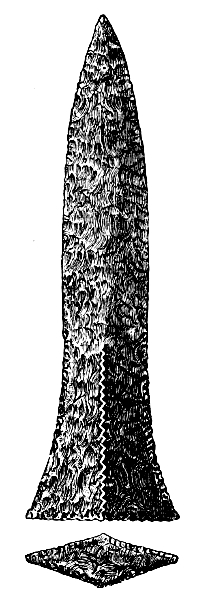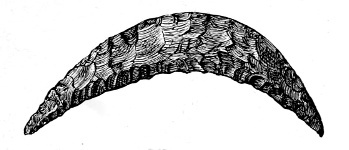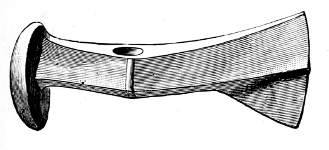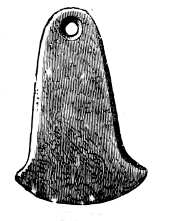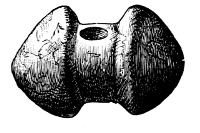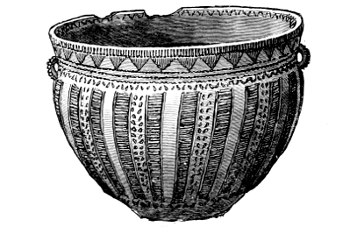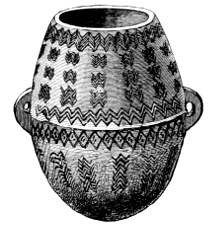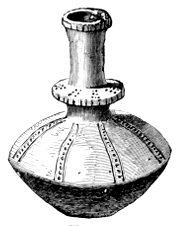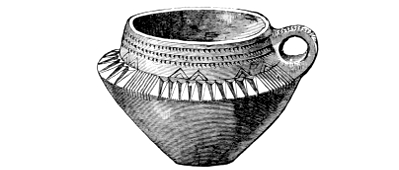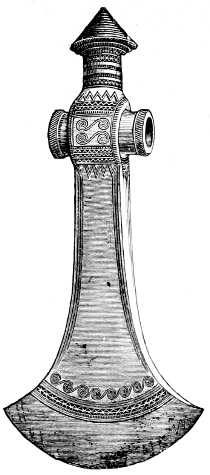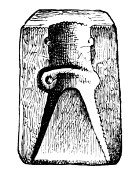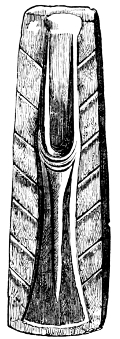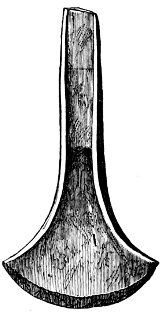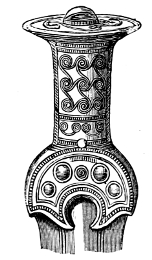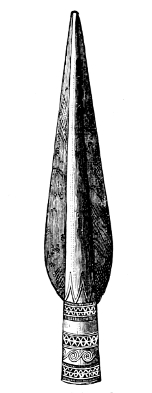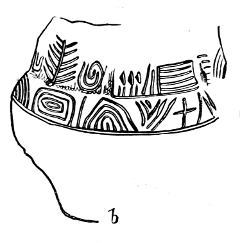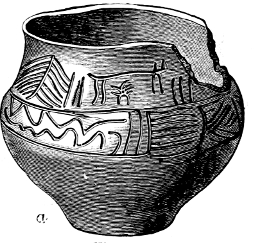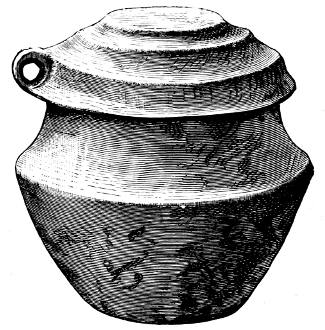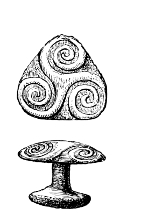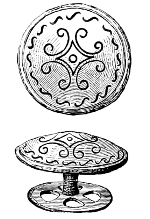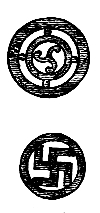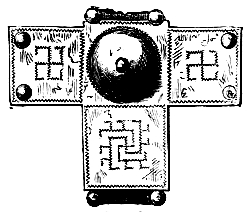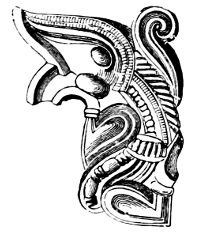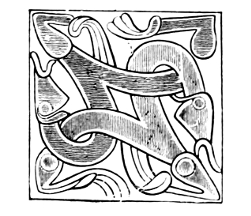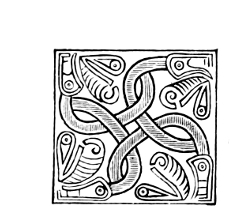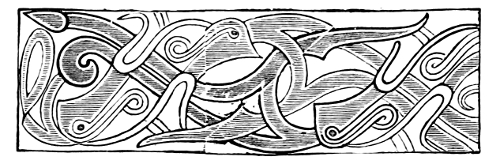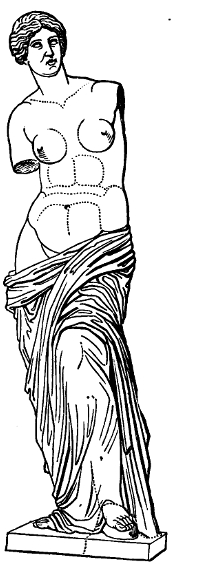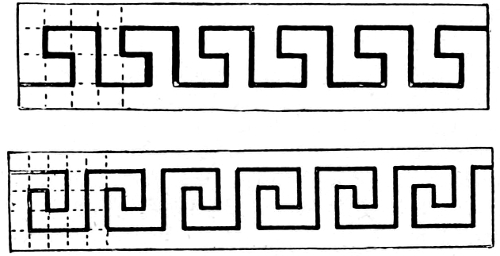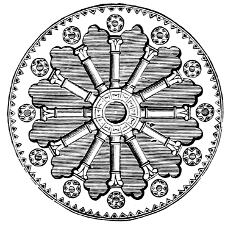The single footnote has been placed to follow the paragraph in which it
was referenced.
There are copious illustration, which have been moved to fall on
paragraph breaks. Full page illustrations, which were
paginated, often fall in mid-paragraph in the original, and so would have
been disruptive when moved. The pagination of the illustrations has
therefore been removed, and that of the text may contain gaps.
Some larger illustrations were rotated in mid-page. These are
presented as full page illustrations in the correct orientation.
A number of captions refer to the image as ‘Actual Size’. This is
difficult to substantiate and should be taken with a grain of salt.
Where references to illustrations are not local to the referent,
links are provided for ease of navigation.
Minor errors, attributable to the printer, have been corrected. Please
see the transcriber’s note at the end of this text
for details regarding the handling of any textual issues encountered
during its preparation.
Any corrections are indicated using an underline
highlight. Placing the cursor over the correction will produce the
original text in a small popup.
Any corrections are indicated as hyperlinks, which will navigate the
reader to the corresponding entry in the corrections table in the
note at the end of the text.
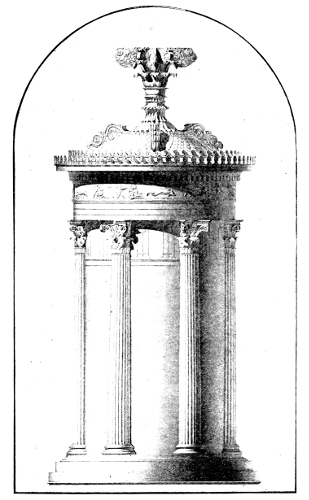
Choragic Monument of Lysikrates.
HISTORIC ORNAMENT
Treatise on
DECORATIVE ART
AND
ARCHITECTURAL ORNAMENT
TREATS OF PREHISTORIC ART; ANCIENT ART AND ARCHITECTURE;
EASTERN, EARLY CHRISTIAN, BYZANTINE,
SARACENIC, ROMANESQUE, GOTHIC, AND
RENAISSANCE ARCHITECTURE
AND ORNAMENT.
BY
JAMES WARD
AUTHOR OF “THE PRINCIPLES OF ORNAMENT.”
With Four Hundred and Thirty-Six Illustrations
LONDON: CHAPMAN AND HALL, Limited
1909
LONDON:
PRINTED BY WILLIAM CLOWES AND SONS, LIMITED,
DUKE STREET, STAMFORD STREET, S.E., AND GREAT WINDMILL STREET, W.
v
PREFACE.
The comprehensive nature of the subject of this work
renders it impossible to deal with its various divisions and
sub-divisions, except in a very condensed manner, within
the limits of a handbook for students.
I have endeavoured to present to the reader, and to the
student of ornamental and decorative art, some of the
salient features which characterize the historic styles of
ornament, and those that seem to me to show themselves
as landmarks in the wide domain of Historic Ornament.
Realistic decoration was the earliest form of all art, as
we find it in the etchings on the bones drawn by the prehistoric
cave-dwellers; but ornamental design or pattern
drawing is a kind of invention which implies the orderly
decoration of architectural forms and other objects, and is
generally applied to such objects with the view of adding
some enrichment that shall make them more pleasing to
the sight.
The former belongs more to pictorial art, while the latter
is purely decorative.
As the construction of ornament, in a great measure,
ought to be based on the laws that govern the design of
good architecture—this we gather from the design of the
best ornament of the historic styles—it has been thought
necessary to give a slight sketch of each of the principal
viorders and styles of architecture, placing them, as far
as possible, in a chronological sequence in regard to the
periods of their existence, and countries in which they
flourished.
In some cases I have also thought it desirable to give a
brief account of the religion of those nations that have
created distinct styles of architecture and ornament; for in
many cases, such as in the art of the ancient world and
of the Middle Ages, we find that the art of a country
was so bound up with the religion of its people, that to
understand the former it is indispensable to have some
knowledge of their religious ceremonies and beliefs.
I have here to express my indebtedness to various
writers on ornamental art whom I have named in the
pages of these volumes for some useful points of information,
and to them and the publishers of this work for the
use of the greater portion of the blocks of illustrations.
I have also to thank Mr. T. M. Lindsay for the use of
his drawing of the monument of Lysikrates, and the
Science and Art Department for permission to use many
of the illustrations of their excellent handbooks on decorative
art.
In a succeeding volume to this work, the various
divisions of the Industrial Arts and Crafts will be treated
in their historical developments of decoration and workmanship.
In conclusion, I trust that the contents of these pages
will be helpful to students in art schools, and to others
who may desire to have an introduction to the fascinating
study of Historic Ornament.
J. Ward.
vii
CONTENTS.
| |
PAGE |
| Introductory Chapter |
1 |
| |
| |
| CHAPTER II. |
| |
| Prehistoric Ornament—Palæolithic Period or Early Stone Age—River Drift and Cave-men |
7 |
| |
| |
| CHAPTER III. |
| |
| Neolithic Stone Period |
14 |
| |
| |
| CHAPTER IV. |
| |
| The Bronze Age |
21 |
| |
| |
| CHAPTER V. |
| |
| The Iron Age |
35 |
| |
| |
| CHAPTER VI. |
| |
| The Lake Dwellings of Switzerland and other parts of Europe |
48 |
| |
| |
| viiiCHAPTER VII. |
| |
| Egyptian Art—History—Architecture—Industrial Arts |
55 |
| |
| |
| CHAPTER VIII. |
| |
| Chaldean and Assyrian Art—History—Architecture—Industrial Art |
112 |
| |
| |
| CHAPTER IX. |
| |
| Phœnician Art—History—Trading—Architecture—Industrial Art—Art in Cyprus |
158 |
| |
| |
| CHAPTER X. |
| |
| Art in Ancient Persia—History—Architecture—Decoration |
183 |
| |
| |
| CHAPTER XI. |
| |
| Grecian Art—People—Mythology |
208 |
| |
| |
| CHAPTER XII. |
| |
| Art in Primitive Greece—Mycenæ—Troy—Tiryns—Architecture—Industrial art |
225 |
| |
| |
| CHAPTER XIII. |
| |
| Greek and Roman Orders of Architecture—Lycian Tombs—Greek Orders—Etruscan Architecture—Roman Orders |
242 |
| |
| |
| ixCHAPTER XIV. |
| |
| Greek and Roman Architectural Ornament—Pompeian Architecture |
262 |
| |
| |
| CHAPTER XV. |
| |
| Indian art and Architecture |
271 |
| |
| |
| CHAPTER XVI. |
| |
| Chinese and Japanese Architecture |
281 |
| |
| |
| CHAPTER XVII. |
| |
| Early Christian Architecture—Byzantine Architecture |
285 |
| |
| |
| CHAPTER XVIII. |
| |
| Saracenic Architecture and Ornament |
301 |
| |
| |
| CHAPTER XIX. |
| |
| Romanesque Architecture and Ornament |
330 |
| |
| |
| CHAPTER XX. |
| |
| Gothic Architecture and Ornament |
348 |
| |
| |
| CHAPTER XXI. |
| |
| Renaissance Architecture and Ornament |
369 |
xi
LIST OF ILLUSTRATIONS.
| FIG. |
|
PAGE |
| |
| |
Monument of Lysikrates |
Frontispiece |
| 278. |
Alabaster Frieze |
227 |
| 279. |
Alabaster Frieze Plan |
227 |
| 343. |
Alhambra Diaper, Superposed Ornament |
305 |
| 331. |
Ambo or Pulpit from St. George’s at Salonica |
287 |
| 83. |
Amen or Ammon |
58 |
| 93. |
Amenophis III. Presenting an Offering to Amen |
67 |
| 319. |
Ancient Panel, Florence |
267 |
| 193. |
Andro-Sphinx, Robe of Assurbanipal |
144 |
| 162. |
Anou, or Dagon, Nimroud |
120 |
| 314. |
Anthemion, Carved |
264 |
| 71. |
Animal Ornamented Patterns, Corrupted Figures of Lions |
44 |
| 72. |
” ” ” ” |
44 |
| 73. |
” ” ” ” |
44 |
| 132. |
Antelope and Papyrus |
97 |
| 270. |
Apollo Belvedere |
218 |
| 341. |
Arabesque Ornament from the Wekāla of Kāit Bey |
302 |
| 350. |
Arcades in the Mosque of Ibn-Tūlūn |
312 |
| 352. |
Arches: a, Ogee; b, Horseshoe; c, Pointed |
313 |
| 282. |
Architrave and Frieze, Mycenian Palace |
229 |
| 161. |
Assyrian Standard |
120 |
| 180. |
Assyrian Base in Limestone |
136 |
| 163. |
Assurbanipal Attacked by Lions |
121 |
| 181. |
Assyrian Capital |
137 |
| 183. |
Assurbanipal and his Queen after his Victory over Teuman |
137 |
| 185. |
Assyrian Stool |
139 |
| 217. |
Astarte, Terra-cotta |
164 |
| 268. |
Athene Polias (Villa Albani) |
216 |
| 169. |
Babylonian Brick |
129 |
| 62. |
Barbarian Copy of a Roman Medallion |
40 |
| 253. |
Base of Pillar at Susa |
196 |
| 254. |
Base and Capital from Persepolis, Propylæa |
198 |
| 255. |
Base and Capital, from Hypostyle Hall of Xerxes, Persepolis |
199 |
| 307. |
Bas-Relief on the Arch of Titus |
258 |
| xii382. |
Berkeley Castle, Gloucestershire |
341 |
| 400A. |
Bishopstone Church, Wilts, Priests’ Entrance |
361 |
| 234. |
Bottle with Incised Ornament, from Cesnola |
176 |
| 235. |
Bottle with Geometric Decoration |
176 |
| 237. |
Bowl in the Piot Collection |
178 |
| 196. |
Bouquet of Flowers and Buds |
146 |
| 125. |
Border from Thebes |
93 |
| 41. |
Breast-plate, with Spiral Ornaments |
24 |
| 28. |
Bronze Axes, Paalstabs, and Moulds |
22 |
| 29. |
” ” |
22 |
| 30. |
” ” |
22 |
| 31. |
” ” |
22 |
| 32. |
” ” |
22 |
| 33. |
” ” |
22 |
| 34. |
” ” |
22 |
| 35. |
Bronze Swords and Spear-head |
23 |
| 36. |
” ” |
23 |
| 37. |
” ” |
23 |
| 38. |
” ” |
23 |
| 39. |
Bronze Button for Sword Belt |
24 |
| 40. |
” ” |
24 |
| 45. |
Bronze Bowl found in Sweden |
26 |
| 47. |
Bronze Hatchet found in Sweden |
27 |
| 50. |
Bronze Horn |
29 |
| 54. |
” |
32 |
| 57. |
Bronze and Gold Buttons |
33 |
| 58. |
” ” |
33 |
| 63. |
Bracteate, Golden |
40 |
| 64. |
” |
41 |
| 186. |
Bronze Foot of a Piece of Furniture |
140 |
| 204. |
Bronze Platter |
153 |
| 205. |
Bronze Cups |
154 |
| 206. |
Bronze Cup, Border of |
155 |
| 209. |
Bronze Bucket |
157 |
| 326. |
Brahminical Rock Temple at Ellora |
275 |
| 170. |
Brick from Erech |
129 |
| 339. |
Byzantine Capital from Santa Sophia |
298 |
| 264. |
Cameo of Athenion |
211 |
| 177. |
Capital of Temple, Assyrian |
135 |
| 178. |
” ” |
135 |
| 221. |
Capital, Cypriot |
168 |
| 222. |
” |
168 |
| 223. |
Capital at Djezza, Limestone |
169 |
| 224. |
Capital from Kition |
169 |
| 225. |
Capital from Golgos |
170 |
| 302. |
Capital of the Lysikrates Monument |
251 |
| xiii336. |
Capital from Santa Sophia |
297 |
| 337. |
Capital from St. Demetrius at Salonica |
297 |
| 338. |
Capital from St. Demetrius |
297 |
| 372. |
Capital from Wartburg |
335 |
| 378. |
Capital from Palace of Barbarossa |
338 |
| 379. |
Capital from St. Cross, Winchester |
338 |
| 148. |
Carpenters Making Chairs |
108 |
| 212. |
Carthaginian Coin, Silver |
161 |
| 213. |
Carthaginian Coin, Electrum |
161 |
| 388. |
Cathedral of Nôtre Dame, Paris |
349 |
| 123. |
Ceiling Decoration at Thebes |
92 |
| 431. |
Ceiling by Serlio |
401 |
| 432. |
Ceiling by Sansovino |
402 |
| 410. |
Certosa of Pavia, portion of |
376 |
| 146. |
Chair, Egyptian |
107 |
| 147. |
” |
107 |
| 191. |
Chariot Horses |
142 |
| 426. |
Cinquecento Ornament |
398 |
| 428. |
” ” |
399 |
| 429. |
” ” |
400 |
| 430. |
” ” |
400 |
| 216. |
Coin of Byblos, Enlarged, with Sacred Cone |
163 |
| 265. |
Coins of Elis, with the Phidian Zeus |
212 |
| 149. |
Coffer in Wood |
108 |
| 55. |
Collar of Bronze |
33 |
| 390. |
Cologne Cathedral, Window Gable |
352 |
| 109. |
Column of Thothmes III., from the Ambulatory of Thothmes |
83 |
| 110. |
Column from Hypostyle Hall of the Ramesseum |
84 |
| 118. |
Column from Bas-Relief |
88 |
| 252. |
Column with Volute Capital, Persepolis |
196 |
| 189. |
Combat between a Lion and a Unicorn |
142 |
| 335. |
Cornice from Santa Sophia |
296 |
| 69. |
Corrupted Figures of Lions |
44 |
| 70. |
” ” |
44 |
| 397. |
Crockets, Lincoln |
359 |
| 258. |
Crowing Wall of the Staircase, Palace of Xerxes, at Persepolis |
202 |
| 353. |
Cusped Inter-Arching, Mosque of Cordova |
314 |
| 363. |
Cursive Writing from the Alhambra |
323 |
| 207. |
Cylinder from Soldi |
156 |
| 208. |
Cylinder, Assyrian. Worship of Sacred Tree |
156 |
| 56. |
Danish Bronze Knives |
33 |
| 317. |
Decorated Mouldings from Temple of Minerva, Polias |
266 |
| 155. |
Demons, from the Palace of Assurbanipal |
115 |
| 194. |
Detail from the Enamelled Archivolt, Khorsabad |
145 |
| 238. |
Detail of the Decoration of a Cup |
179 |
| 273. |
Diana of Versailles |
221 |
| xiv441. |
Dietterlin’s Architecture |
408 |
| 275.275. |
Dionysus and the Lion |
223 |
| 25. |
Dolmen at Hesbon |
20 |
| 359. |
Doorway of a Private House |
320 |
| 384. |
Door of St. Gabriel’s, South of France |
342 |
| 190. |
Dog used for Lion Hunting |
142 |
| 399. |
Dog’s Tooth Ornament, Stone Church, Kent |
360 |
| 7A. |
Drawing of Human and Animal Forms by Bushmen |
12 |
| 7B. |
Drawing of Animals by Bushmen |
13 |
| 157. |
Eagle-headed Divinity from Nimrod, with Sacred Tree |
117 |
| 233. |
Earring, Gold, from Cesnola |
175 |
| 21. |
Earthenware of the New Stone Age |
18 |
| 22. |
” ” ” |
18 |
| 23. |
” ” ” |
18 |
| 24. |
” ” ” |
18 |
| 345. |
East Colonnade of the Mosque of 'Amr |
307 |
| 152. |
Egyptian Ship |
110 |
| 248. |
Elevations and Sections of Doorways and Windows of a Palace at Persepolis |
192 |
| 162A. |
Embroidery from a Royal Mantle, Assyrian |
123 |
| 163A. |
Embroidery on the Upper Part of a King’s Mantle |
124 |
| 164. |
Embroidery Detail of Upper Part of King’s Mantle |
125 |
| 165. |
” ” ” |
125 |
| 260. |
Enamelled Ornament on Bricks from Susa |
204 |
| 140. |
Enamelled Earthenware Dish |
102 |
| 141. |
Enamelled Earthenware Bowl |
102 |
| 220. |
Entablature from a Temple at Byblos |
167 |
| 283. |
Entablature Restored, Mycenian Palace |
230 |
| 284. |
Entablature of C. Selinous’ Temple |
231 |
| 301. |
Entablature, Capital, and Base of Greek Ionic Temple |
249 |
| 306. |
Entablature of Jupiter Tonans |
257 |
| 96. |
Entrance to Hypostyle, Hall of Temple Amen |
71 |
| 4. |
Esquimaux Carving |
9 |
| 5. |
Etching of Reindeer on Bone |
10 |
| 6. |
Etching of Reindeer on Slate |
11 |
| 7. |
Etching of Mammoth on a Piece of Mammoth Ivory |
11 |
| 303. |
Etruscan Door |
252 |
| 98. |
Façade of the Great Rock-cut Temple, Ipsamboul |
73 |
| 192. |
Fantastic Animal |
143 |
| 409. |
Farnese Palace, Upper Story of |
375 |
| 184. |
Feast of Assurbanipal, Enlarged Detail |
138 |
| 66. |
Fibula in Gilt Bronze |
43 |
| 67. |
” ” |
43 |
| 158. |
Figure of a Goddess in Act of Adoration |
118 |
| 245. |
Fire Altars at Naksh-i-Rustem |
189 |
| 126. |
Flattened form of Lotus-Leaf Ornament |
93 |
| xv404. |
Flamboyant Panel |
365 |
| 405. |
Flamboyant Panelling |
365 |
| 8. |
Flint Implements of the Neolithic Period |
15 |
| 9. |
” ” ” |
15 |
| 10. |
” ” ” |
15 |
| 11. |
” ” ” |
15 |
| 12. |
” ” ” |
16 |
| 13. |
” ” ” |
16 |
| 14. |
” ” ” |
16 |
| 15. |
” ” ” |
17 |
| 16. |
” ” ” |
17 |
| 424. |
Floral Ornament, Italian |
396 |
| 396. |
Florence Cathedral, Window Gable |
358 |
| 144. |
Fragment of an Ivory Castanet |
105 |
| 167167. |
Fragment of Border of Fig. 166; from a Threshold of Khorsabad |
127 |
| 179. |
Fragment of an Assyrian Building, from a Bas-Relief |
136 |
| 247. |
Fragment of Door Frame, from Hypostyle Hall, Susa |
191 |
| 281. |
Fragment of Frieze, Mycenæ |
228 |
| 310. |
Frets, Greek |
262 |
| 311. |
Fret, Greek, Carved |
263 |
| 244. |
Funeral Tower at Naksh-i-Rustem |
187 |
| 171. |
Gates of the Harum at Dur Sargini |
130 |
| 330. |
Gateway of Temple of Confucius |
282 |
| 27. |
Giant’s Tomb, Sardinia |
20 |
| 86. |
Goddess Bast or Pasht |
60 |
| 53. |
Gold Bowl |
32 |
| 59. |
Gold-plated Ornament |
38 |
| 143. |
Golden Hawk, Egyptian |
104 |
| 230. |
Gold Bracelet, from Tharros |
174 |
| 291. |
Gold Pendant, from Troy |
237 |
| 292. |
Gold Ornaments, from Troy |
237 |
| 293. |
Gold Plate, from Troy |
238 |
| 294. |
Gold Disc, from Troy |
238 |
| 295. |
” ” |
239 |
| 296. |
Gold Cup, from Troy |
240 |
| 297. |
Gold Ewer, from Troy |
241 |
| 101. |
“Gorge,” Egyptian |
76 |
| 406. |
Gothic Arches |
366 |
| 407. |
Gothic Tracery |
367 |
| 401. |
Gothic Mouldings |
362 |
| 102. |
General Appearance of an Egyptian Temple |
77 |
| 87. |
Great Pyramid of Kheops |
62 |
| 91. |
Great Sphinx |
65 |
| 315. |
Greek Border with Fret Bands |
265 |
| 316. |
Greek Ivy Meander Border |
265 |
| 156. |
Griffin in Egyptian Style |
116 |
| xvi200. |
Guilloche Ornament on Enamelled Brick |
149 |
| 312. |
Guilloche, Treble Ornament |
263 |
| 313. |
Guilloche, Ornament, Double |
264 |
| 304. |
Half Capital, Mars Ultor |
254 |
| 65. |
Harness in Gilt Bronze, Fibula Decorations |
42 |
| 114. |
Hathoric Pier |
85 |
| 120. |
Hathor-headed Campaniform Capital, Temple of Nectanebo, at Philæ |
89 |
| 263. |
Head of one of the Lions from Frieze at Susa |
207 |
| 267. |
Head of Hera |
214 |
| 272. |
Hermes, Statue of |
220 |
| 414. |
Holland House, Ancient Parlour of |
385 |
| 1. |
Horse, Upper Cave Earth, Robin Hood Cave |
8 |
| 127. |
Hunting in a Marsh, from a Bas-Relief in the Tomb of Ti |
94 |
| 131. |
Hunting in the Desert |
96 |
| 2. |
Ibex Carved on an Antler |
8 |
| 80. |
Ideal Lake Settlement |
52 |
| 360. |
Illuminated Koran of the Sultan Sha’ Ban |
321 |
| 241. |
Intaglio on Chalcedony |
182 |
| 427. |
Italian Panel |
398 |
| 172. |
Interior of a Temple after Layard’s Restoration |
131 |
| 329. |
Interior of the Palace at Delhi |
279 |
| 369. |
Intersecting Blind Arcade |
333 |
| 82. |
Isis Nursing her Son Horus |
56 |
| 145. |
Ivory Plaque |
106 |
| 201. |
” |
150 |
| 202. |
Ivory Plaque found at Nimroud |
151 |
| 203. |
Ivory Fragment in British Museum |
152 |
| 280. |
Ivory Plaque from Mycenæ |
228 |
| 308. |
Jewish Candlestick from Arch of Titus |
259 |
| 97. |
Khita, Rout of the |
72 |
| 362. |
Kufic Writing, from the Alhambra |
323 |
| 78. |
Lacustrine Habitation in Lake Mohrya, Central Africa |
49 |
| 79. |
Lake Dwellings, Sections and Plans |
50 |
| 385. |
Landgrave’s Room at Wartburg |
344 |
| 81. |
Lake Dwellings, Objects fromfrom |
53 |
| 356. |
Lattice-work, Saracenic |
317 |
| 357. |
” ” |
318 |
| 358. |
” ” |
318 |
| 138. |
Lion from a Theban Bas-Relief |
101 |
| 187. |
Lion coming out of his Cage |
140 |
| 188. |
Lion and Lioness in a Park |
141 |
| 262. |
Lion from the Lion Frieze in Enamelled Bricks at Susa |
206 |
| 277. |
Lion’s Gate, Mycenæ |
226 |
| 122. |
Lotus, Drawing from the Tomb of Ptah-Hotep |
91 |
| 124. |
Lotus and Water-Leaf Ornament |
93 |
| 106. |
Luxor, Plan of Temple |
80 |
| xvii107. |
Luxor, as Restored, Bird’s-eye View |
81 |
| 298. |
Lycian Rock-built Tomb |
243 |
| 299. |
” ” ” |
244 |
| 395. |
Marienberg Town Hall |
357 |
| 290. |
Marseilles Ewer |
236 |
| 348. |
Mausoleum at Cairo |
309 |
| 228. |
Medallion from a Cup from Griffi |
173 |
| 274. |
Melpomene, Vatican |
222 |
| 26. |
Menhirs, Sardinia |
19 |
| 92. |
Memnon at Thebes, Statues of, Colossi of Amenophis III. |
66 |
| 347. |
Minaret of the Mosque at Kaloum, Cairo |
309 |
| 105. |
Model of an Egyptian House |
79 |
| 60. |
Mountings, Metal |
39 |
| 61. |
” ” |
39 |
| 218. |
Model of a Small Temple in Terra Cotta |
165 |
| 351. |
Moorish Capital |
313 |
| 349. |
Mosque of KāitKāit Bey, Cairo |
310 |
| 130. |
Mummy-Case, Painting on |
96 |
| 420. |
Mural Painting, Pompeii |
392 |
| 323. |
Mural Painting, from Pompeii |
270 |
| 242. |
Naksh-i-Rustem, General View of the Rock-cut Tombs |
184 |
| 416. |
Nest of Scroll, Roman |
388 |
| 133. |
Netting Birds, from a Tomb |
98 |
| 381. |
Norman Doorway, Semperingham Church, Lincolnshire |
340 |
| 121. |
Nymphæa Nelumbo |
90 |
| 104. |
Oblong Building, Egyptian |
78 |
| 239. |
Œnochœ, New York Museum |
180 |
| 240. |
” ” ” ” |
181 |
| 322. |
Ogee Decorated—Astragal, Jupiter Stator |
269 |
| 324. |
Ornament from Asoka’s Pillar |
272 |
| 361. |
Ornament from the Portal of Sultan Hasan |
322 |
| 422. |
Ornament, Ghiberti Gates |
393 |
| 365. |
Ornament on an Arch of the Wekāla KāitKāit Bey |
326 |
| 439. |
Ornament from Doorway, Crewe Hall |
407 |
| 321. |
Ogee and Fluted Cavetto Moulding; Jupiter Tonans |
268 |
| 85. |
Osiris |
60 |
| 318. |
Ovolo with Egg and Tongue, from the Erectheum |
266 |
| 320. |
Ovolo and Astragal Mouldings, Roman |
268 |
| 334. |
Opus Alexandrinum Pavement |
293 |
| 198. |
Painted Ornament on Plaster |
148 |
| 332. |
Painting from the Catacombs of St. Agnese |
289 |
| 269. |
Pallus Athene, Naples |
217 |
| 119. |
Palm Capital from Sesebi |
88 |
| 300. |
Parthenon; Greek Doric |
247 |
| 366. |
Panel from the Maristan of Kalaun |
328 |
| 367. |
” ” ” ” |
328 |
| xviii434. |
Panel, Carved, Henri II. Style |
404 |
| 435. |
” ” ” ” |
404 |
| 436. |
” ”French, Sixteenth Century |
404 |
| 437. |
” ”from Louvre |
405 |
| 440. |
” ”Elizabethan |
407 |
| 438. |
Panelling, Elizabethan |
406 |
| 227. |
Patera from Curium |
172 |
| 142. |
Pectoral; Egyptian |
103 |
| 402. |
Pedestal, Henry VII.'s Chapel |
363 |
| 232. |
Pendant, Wild Goat; Gold |
175 |
| 150. |
Perfume Spoons |
109 |
| 151. |
” ” |
109 |
| 243. |
Persepolis; Tomb on the North-east |
185 |
| 246. |
Persepolis; Staircase of the Palace of Darius |
190 |
| 249. |
Persepolis; Doorway to Royal Tomb |
193 |
| 113. |
Pier with Capital |
85 |
| 433. |
Pilasters, Louis XII. |
403 |
| 421. |
Pilaster by Donatello |
393 |
| 287. |
Pilgrim Bottle |
234 |
| 115. |
Pillar, Octagonal, Beni-Hassan |
86 |
| 116. |
Pillar, Sixteen-sided, Fluted |
86 |
| 117. |
Pillar Osiride, from Medinet-Abou |
87 |
| 328. |
Pillar and Bracket, Doorway of a Pagoda |
278 |
| 210. |
Phœnician Merchant Galley |
159 |
| 211. |
Phœnician War Galley |
160 |
| 226. |
Phœnician Silver Platter |
171 |
| 51. |
Pinak or Plate, from Rhodes |
30 |
| 139. |
Pitcher of Red Earth |
102 |
| 403. |
Place House, Cornwall |
364 |
| 168. |
Plan and Elevation of a part of a Façade at Worka |
128 |
| 346. |
Plan of the Mosque of 'Amr |
308 |
| 383. |
Pointed Arcading from the Cathedral of Palermo |
341 |
| 17. |
Polished Stone Hammer and Celts, Neolithic Period |
17 |
| 18. |
” ” ” ” ” |
17 |
| 19. |
” ” ” ” ” |
17 |
| 20. |
” ” ” ” ” |
17 |
| 417. |
Pompeian Objects |
389 |
| 371. |
Porch of the Heilsbronn Monastery |
334 |
| 380. |
Porch of St. Zeno at Verona |
339 |
| 76. |
Pottery of the Iron Age |
46 |
| 3. |
Prehistoric Carving |
9 |
| 99. |
Principal Hall in the Great Temple |
74 |
| 108. |
Principal Façade of the Temple of Luxor |
82 |
| 84. |
Ptah |
58 |
| 354. |
Pulpit of the Sultan KāitKāit Bey |
315 |
| 364. |
Pulpit in the Mosque of Barkuk; Stone |
328 |
| xix111. |
Quadrangular Pier |
84 |
| 112. |
Quadrangular Pier, Tapering |
85 |
| 134. |
Quadruped with Head of a Bird |
98 |
| 136. |
Ram or Krisosphinx |
100 |
| 100. |
Rameses II., Louvre, Portrait of |
75 |
| 68. |
Rim of Fig. 67, Part of |
43 |
| 153. |
River Transport of a Mummy |
110 |
| 305. |
Roman Corinthian, Pantheon |
255 |
| 373. |
Romanesque Shaft and Base |
335 |
| 375. |
Romanesque Ornament, late |
335 |
| 376. |
Romanesque Moulding Ornaments |
336 |
| 386. |
Romanesque Ornament from Hinge from “Notre Dame” |
345 |
| 387. |
Romanesque Panel from a Church at Bonn |
346 |
| 374. |
Roof Cornice of Church at Alstadt |
335 |
| 370. |
Rose Window |
333 |
| 342. |
Rosette in Mosque of Suyurghatmish |
303 |
| 195. |
Rosette of Lotus Flowers and Buds |
146 |
| 415. |
Rosette from Trajan’s Scroll |
387 |
| 368. |
Round-Arch Frieze |
333 |
| 309. |
Roman Composite Order; Arch of Titus |
260 |
| 215. |
Sacred Emblems from Carthaginian Votive Stele |
162 |
| 411. |
San Marco Library |
377 |
| 325. |
Sanchi Tope; Bhopal, Central India |
274 |
| 174. |
Sargon’s Palace |
133 |
| 175. |
Sargon’s Palace, a Bedroom in the Harem |
134 |
| 251. |
Sarvistan, Palace of, Principal Façade |
195 |
| 88. |
Section through the Great Pyramid of Kheops |
63 |
| 95. |
Seti with Attributes of Osiris between Amen and Chnoum |
70 |
| 166. |
Sill of a Door from Khorsabad |
126 |
| 231. |
Silver Pin; Cesnola |
175 |
| 52. |
Silver Brooch |
31 |
| 74. |
Silver Goblet, with Gold-plated Decorations |
45 |
| 90. |
Southern Pyramid of Dashour |
64 |
| 94. |
Solar-Disk, Adoration of, by Amenophis IV. |
69 |
| 103. |
Square Building; Egyptian |
78 |
| 257. |
Staircase Wall of the Palace of Xerxes at Persepolis |
201 |
| 344. |
Stalactite Vaulting |
306 |
| 89. |
Stepped Pyramid |
64 |
| 412. |
St. Paul and St. Louis façade |
381 |
| 340. |
St. Nicholas at Moscow |
299 |
| 408. |
Strozzi Palace, portion of |
374 |
| 355. |
Street in Cairo |
316 |
| 48. |
Sun Signs |
27 |
| 49. |
Sun Snakes |
27 |
| 400. |
Spandrel, Stone Church, Kent |
360 |
| 135. |
Sphinx, or Man-headed Lion; from Tanis |
99 |
| xx137. |
Sphinx with Human Hands |
101 |
| 391. |
St. Lawrence, Porch of |
353 |
| 392. |
St. Lawrence, Interior of |
354 |
| 393. |
St. Sebaldus, Shrine of |
355 |
| 394. |
St. Sebaldus, Bride’s Door of |
356 |
| 197. |
Tabernacle from the Balâwât Gates |
147 |
| 423. |
Tabernacle, Fifteenth Century |
395 |
| 176. |
Temple on the Bank of a River, Khorsabad |
135 |
| 259. |
Temple in a Royal Park |
203 |
| 327. |
Temple of Biskurma at Ellora |
276 |
| 398. |
Temple Church, From the |
359 |
| 219. |
Tomb at Amrit, restored |
166 |
| 377. |
Towers and Round-Arch Frieze, Abbey of Komberg |
337 |
| 199. |
Tree of Life, Upper Portion of |
149 |
| 173. |
Triumphal Gate at Entrance of the Palace |
132 |
| 288. |
Three-handled Amphora |
234 |
| 75. |
Under Side of a Fibula |
45 |
| 42. |
Urns of the Bronze Age |
25 |
| 43. |
” ” ” ” |
25 |
| 44. |
” ” ” ” |
25 |
| 46. |
Urn of the Stone Age, found in Swedish Dolmen |
26 |
| 261. |
Upper Part of Parapet Wall of Staircase, Susa |
205 |
| 256. |
Upright of Royal Throne, Naksh-i-Rustem |
200 |
| 285. |
Vase in Woman’s Form |
232 |
| 286. |
” ” ” ” |
233 |
| 289. |
Vase with Geometric Decoration |
235 |
| 271. |
Venus of Milo |
220 |
| 425. |
Venetian Panel |
397 |
| 229. |
Vessels Figured in Tomb of Rekhmara |
174 |
| 236. |
Vessel in Shape of a Goat |
177 |
| 276. |
Victory, Figure of |
224 |
| 250. |
View of a Group of Domed Buildings, from an Assyrian Bas-Relief |
194 |
| 214. |
Votive Stele from Carthage, with Sacred Emblems |
162 |
| 128. |
Vultures on a Ceiling |
95 |
| 333. |
Wall Painting, from Catacombs of S. Calixtus |
290 |
| 418. |
Wall Painting, Pompeii |
390 |
| 419. |
Wall Painting, Herculaneum |
391 |
| 389. |
Westminster Abbey |
351 |
| 129. |
Winged Globe with Uræus |
95 |
| 154. |
Winged Bull, Assyria |
114 |
| 159. |
Winged Globe, with the Figure of a God |
119 |
| 160. |
Winged Globe |
119 |
| 182. |
Winged Sphinx carrying Base of Capital |
137 |
| 413. |
Wollaton House |
384 |
| 77. |
Woollen Cloth with Gold and Silver Threads, Piece of |
46 |
| 266. |
Zeus of Otricoli |
213 |
INTRODUCTORY CHAPTER.
It can hardly be doubted that, for the education of the
student in ornamental design, or in architecture, a study
of the history of ornament and a knowledge of the principal
historic styles of architecture is indispensable.
Historic styles of ornament remain for us, vast accumulations
of tried experiments, for the most part in the
character of conventional renderings of natural forms;
for however remote from nature some of these may be,
they can, as a general rule, be traced back without much
difficulty to their natural origin, where in most cases they
were used symbolically. Even the most arbitrary forms—for
instance, those found in Saracenic ornament—were only
developments from natural forms, and the innocent Greek
key pattern, that has earned the reputation of being the
ornament most unlike anything in nature, is supposed by
some to be but a rectilineal development of the rippling
waves; and, on the other hand, there is the hypothesis
that it is developed from the fylfot, a sacred sign that is
supposed to symbolize the rotary motion of the planets.
There is no ornament more common or so universal in
prehistoric, savage, Egyptian, Assyrian and Mediæval
decoration than the ubiquitous zigzag, or chevron, and
though extremely simple in itself, at least two-thirds of all
conventional ornament is based or constructed on its lines:
yet this simple ornament has been used as a symbol of
totally opposite and different things, by nearly all the
2various tribes and nations that have used it in decoration.
With the Egyptians and Assyrians it has been a symbol
of water, with some savage tribes it denotes lightning,
with others it does duty for a serpent, with some others it
represents a series of bats, birds, and butterflies; as with
the original tribes of Brazil, with the magic-loving Semang
tribes of East Malacca, it means a frog, and in some instances
the branches of trees; and lastly, with the natives
of the Hervey Islands, it symbolizes the human figure when
placed in duplicate parallel rows.
(For a fuller description, and illustrations of this and cognate
savage ornament, the reader is referred to Haddon’s
“Evolution in Art,” 1895.) We can hardly think of an
ornament more simple or more common than the zigzag,
and yet how varied in different countries are the sources
from which it springs.
This may be taken as a warning that it is not safe to
accept the same forms as always having the same origin,
when we find them in the art of different countries.
Apart from the symbolic origin of ornamental forms,
students of to-day may learn, from examples of the past,
how far they can go, in the converting of natural forms to
conventional ornament, without absolutely adapting such
examples to their present needs. The past styles in ornament
have, in one sense, died out with the nations that
created them, and can never be satisfactorily revived,
although, as we have often seen, a new style may be built
on their foundations. The tendency of to-day is to undervalue
the teachings of historic art, and, as a result, we see
much work in which both fitness and beauty are conspicuous
by their absence.
In any notice of the historical development of ornamental
art, the concurrent styles of architecture should, in
their general features at least, be illustrated, for it is not
always possible to divorce ornament from architecture,
and it is hardly possible to design or construct good ornament
otherwise than according to the laws that govern
3good architecture. Of course, we must admit that some
very beautiful ornament, or rather decoration, has been
designed otherwise than on architectural lines, but this
kind of decoration has its beauty of technique and execution
to recommend it, rather than its constructive qualities.
Chinese and Japanese ornament will occur to the reader
as examples of this kind of work, but the best ornament
the world has ever seen has been constructed and is based
on the laws that govern good architecture.
Some of these laws, such as stability, repose, variety,
and proportion, are derived from nature. As all architectural
styles, however, possess them more or less in
common, we must look elsewhere for the sources from
which the peculiar characteristics that distinguish the
styles are developed and derived. The causes and forces
are so subtle and the developments so gradual, that it is
almost impossible to arrive at a satisfactory explanation,
as religions, inventive faculty, and symbolism play an
important rôle in style development. It is rather to the
inventive faculties of man, than to hints supplied by
nature, that we must look for the origin and development
of what is called style in architecture or ornament. In
every case this is arrived at by a slow process, and by the
extensive and persistent use of distinguishing features
selected according to the needs and requirements of the
time, to satisfy the prevailing tastes. “Style” is then
the something that man has invented or created; it may
be called the soul of architecture, without which, a
building, however pretentious, ceases to exist as an
artistic conception.
Apart from the greatest or more striking features in the
various divisions of historic architecture, such as the
horizontal beam in Greek, the round arch in Roman and
Romanesque, the pointed arch in Gothic and Mohammadan
buildings, there are the mouldings that are so
important in determining the period—they alone of themselves
will often determine the style or date of a building—and
4these features, above all others, are the least derived
from nature. On the other hand, the decoration of mouldings,
though suggested by their contours, is generally
derived from natural forms.
The “best period” in the life of historic styles and its
duration corresponds with that of the highest culture and
religious thought of the people, at their settled and most
flourishing epochs. When a change or revolution in the
order of things sets in, we find generally the style of
architecture changing also to adapt itself to the new laws
and new thought. This illustrates, to a certain degree,
the reason why the so-called Victorian Gothic has not
developed to any great extent in England, although some
of our best architects sought to revive the earlier Gothic
some years ago.
The Mediæval mysticism, love for symbolism, and reverence
are wanting in the mass of the people of this century,
which characterized the people of Europe in the palmy
days of Gothic architecture.
It has always been found that whatever the people ask
for the artist is generally able to give, although he may not
be always willing; but he must satisfy the popular
demand if he is to live by his work, otherwise he must
make way for others who are willing to produce work that
will reflect the taste of the period.
We are handicapped in the development of anything
new in the way of an architectural style by traditions of
the past. Our knowledge of what has been done in the
past, paradoxical as it may appear, has proved itself a
great stumbling-block to the progress of new ideas. This
partly accounts for the slowness of style-development in
the present century. If fashion does not step in and disturb
the march of events in the immediate future, we may
hope for something distinct, if not exactly new, as an
architectural style, in which a mixture of Gothic and
Renaissance forms will be seen, the latter perhaps predominating.
It may happen that later generations will
5look back and be able to discern something distinct in the
way of style in buildings erected in the last quarter of this
century, in the midst of much that is somewhat chaotic
and confused.
In a book like this, which is intended chiefly as an
introduction to the study of historic ornament, one cannot
pretend to criticise the various styles of ornament, either
from an artistic or scientific standpoint. It will be enough
to attempt to point out the principal beauties or characteristics,
to trace the history and overlapping of one style
with another, and to trace, where possible, some units of
ornamental forms to their symbolic ancestry. It is absurd
to criticise the ornament of any period or country dogmatically,
for we must remember, that although certain
forms of art may not conform to the critics’ idiosyncrasy,
they may be quite orthodox and good art when judged by
the artistic laws of their own country. The difference in
race, religion, manners, and customs, must always be
taken into account, before we begin to criticise the art of a
nation to which we do not belong.
As already remarked, we are hampered by tradition in
our attempts to produce originality in ornament, but there
is very little tradition for the absolute copying of a particular
style, except from nations who have had no decided
art of their own. As far as we know of the history and
practice in the whole field of ornamental design, from its
remote beginnings it has been mostly all along a series of
systems of developments, sometimes for good and sometimes
for the opposite, but rarely, if ever, a system of
copying. Some notable exceptions to this may be noticed,
as when, for the expediencies known as “tricks of the
trade,” the Phœnicians made ivory carvings in exact
imitation of Egyptian designs, and sold them to the
Assyrians; and likewise bronze bowls and platters in both
Assyrian and Egyptian imitations, and traded with them
throughout the Ægean and Mediterranean, or when the
Siculo-Arabian silks were made at Palermo in imitation
6of Saracen designs, with mock-Saracenic inscriptions, and
sold for the real articles. Other instances might be cited,
but these were among the most successful.
As regards the purity of styles it may be safely said,
that, with rare exceptions, it is well-nigh impossible to
find a well-designed and complete scheme of decoration,
or a building that will stand the test of having perfect
unity in style; in fact, it may be more artistic on account
of its incompleteness in this respect, for any work of art
that is designed by receipt, like the Egyptian temples or
Mohammadan ornament, is rather wearisome. It is pleasant
to see at times a little bit showing here and there of
the designer’s individuality. When the monotonous repetition
of the laws peculiar to any arbitrary style are
broken by a wilful and, perhaps, sinful artist, we often get
a refreshing and original rendering that is not by any
means displeasing.
In transitional design from one style to another, much
beautiful work may be seen. In connection with this the
Byzantine style may be mentioned, with its Classic and
Oriental forms, Elizabethan, Jacobean, Lombard Gothic,
and the French styles of Henri Deux and François 1er, in
most of which Gothic and Renaissance forms are happily
blended; and in the beautiful Siculo-Arabian textiles,
where Italian and Saracenic forms make an interesting
union. We learn from these examples that the successful
designer of ornament should have a thorough knowledge
of the historic styles, not for the purpose of reproducing
their forms, but in order to discover for himself the
methods by which the old artists arrived at the successful
treatment of nature and of former styles, so that by the
application of his knowledge, derived from the study of
nature and the works of former artists, he may be enabled
to give to the world some original and interesting work.
7
CHAPTER II.
PREHISTORIC ORNAMENT—PALÆOLITHIC PERIOD OR
EARLY STONE AGE—RIVER DRIFT AND CAVE-MEN.
The first indications of the presence of man in Britain was
brought to light in the shape of a flint flake found by the
Rev. O. Fisher, in the presence of Professor W. Boyd
Dawkins, in the lower brick earth of the Stoneham pit at
Crayford, in Kent, in the year 1872. In the year 1876 a
second flake was found in a similar situation at Erith, in
Kent, considerably worn by use. This form of implement was
used in the late Pleistocene age, and also in the Neolithic
(Newer Stone age) and Bronze ages. It was employed in
the historic ages by the Egyptians, and by the Romanized
Britons of Sussex, in whose tombs it has been found.
This implement is the latest survival of the Palæolithic
age. Geologists have proved that Ireland, England and
Europe were united in the Palæolithic age, and this accounts
for the similarity of stone implements and other
remains found in the river-drift deposits, in caves, and
other situations in the river valley over this vast area.
The roughly chipped flint implements are termed Palæolithic,
or of the Old Stone age, in contradistinction to the
smoother, finer chipped, or polished implements of the
Neolithic or Newer Stone age.
It seems highly probable that the Asiatic Palæolithic
man first swarmed off the great plateau of Central Asia,
which in later times was the home of all those tribes that
invaded Europe, India, and China, and certainly were of a
race that is now as extinct as the prehistoric Mammoth
8itself. The relation between the River-drift men of Asia
and Europe is doubtful. We may not be able to refer the
Palæolithic Cave-men to any present branch of the human
race, but as regards their artistic abilities, the only savage
people that bear any analogy to them in the present day
is the South African tribe of Bushmen. These people,
however, are much inferior as artists to the early Cave-men,
which may be seen by comparing the work of both
(Figs. 7A and 7B).
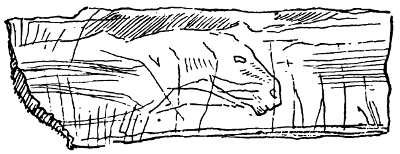
Fig. 1.—Horse, Upper Cave Earth, Robin Hood Cave.
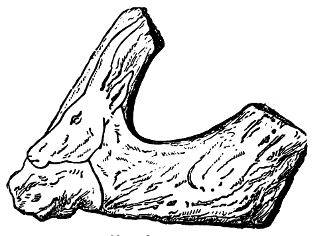
Fig. 2.—Ibex Carved on Antler.
From the drawings of animals which have been found
etched and carved on bone, horn, and stones, we can judge
of the high qualifications of the Cave-men as artists. Their
work in animal drawing ranks higher than that of any
historic savage race, and as artists they were infinitely of
9a higher order than their more scientific successors, the
Neolithic men, or the men of the Bronze age.
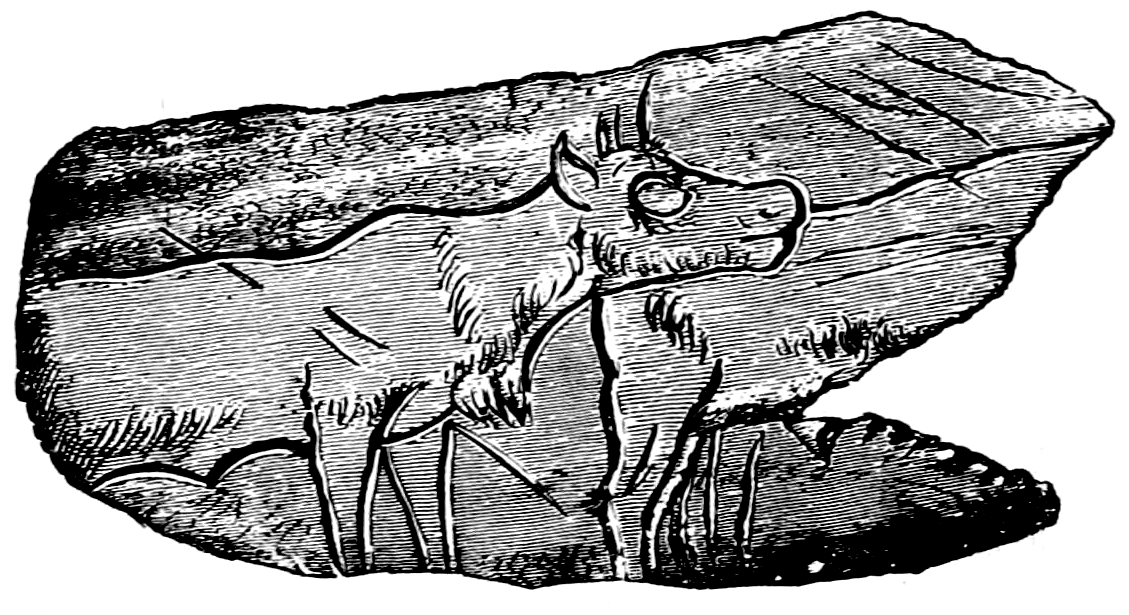
Fig. 3.—Prehistoric Carving.

Fig. 4.—Esquimaux Carving.
It was owing to the discovery of these bone and ivory
etchings that geologists were able to definitely connect the
Cave-men of the Thames Valley with those of France,
Belgium, and Switzerland. At Cresswell Crags, in Derbyshire,
in the caves, caverns, and fissures known as the Pin
Hole, Robin Hood’s Cave, Mother Grundy’s Parlour, a
great quantity of bones have been found, some of which
were broken by the hand of man, and amongst these some
flint implements in the lower cave earth. Above this in
the stalagmatic breccia more bones were found and implements
made of quartzite and flint, together with fragments
of charcoal. Lance heads, flint borers, a bone awl, and a
fragment of bone ornamented with a zigzag or chevron
pattern—probably the oldest bit of ornament known—were
found together with the most important find of all, namely,
a piece of rib bone with an etching of a horse’s head and
neck with a hogged mane (Fig. 1), the first instance of an
10animal form found in England. These objects may be
seen in the British Museum.
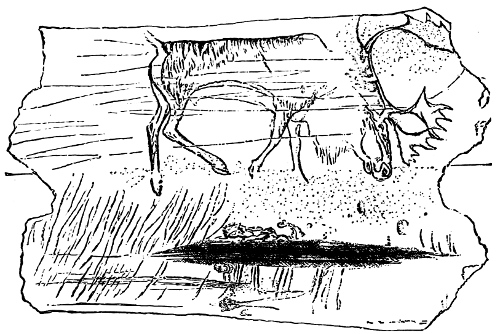
Fig. 5.—Etching of Reindeer on Bone, Kesslerloch Cavern.
Evidences of the Palæolithic men have been found
in the Mendip Hill caves in Somerset, and at Kent’s
Hole, near Torquay, Devon. Harpoons of deers’ antlers,
barbed on one or both sides, also hammer stones, half
spherical in shape, have been brought to light from these
places.
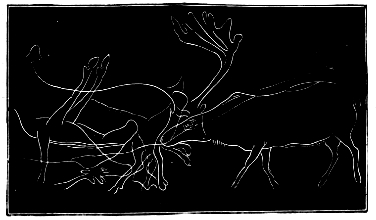
Fig. 6.—Etching of Reindeer on Slate.
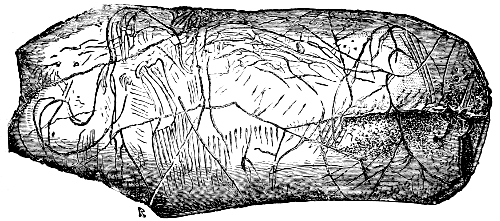
Fig. 7.—Etching of Mammoth on a piece of Mammoth Ivory.
The River-drift men preceded the Cave-men, as two
different sets of implements found at different depths
testify. Those found at the greatest depths are rougher,
rounder, and more massive in character, with the outer
surface of flint or quartzite nodule still remaining, as seen
in some wedge-shaped hâches and hammer stones, they
consequently belong to the Older Drift period; while the
oval carefully chipped all round, and occasionally polished
implements, belong to a much later and higher cultured
state of the Palæolithic period. Both the River-drift men
11and the Cave-men lived in caverns in this country and in
France, as some savages do now. Implements of the
Palæolithic age have been found in Europe, North Africa,
Asia Minor and India. The earlier River-drift man was a
savage and lived by hunting, as no evidence of culture has
been found that can be ascribed to him. After unknown
ages perhaps had elapsed the Cave-men appear with more
12perfect instruments, and at least cultured in the knowledge
of drawing and carving, which they did, as can be judged
by the illustration given, with astonishing ability. The
accurate forms of animals, as horses, mammoths, bears,
aurochs, elks, reindeers, fish, seals, &c., and even attempts
at the human figure, are evidences of this.
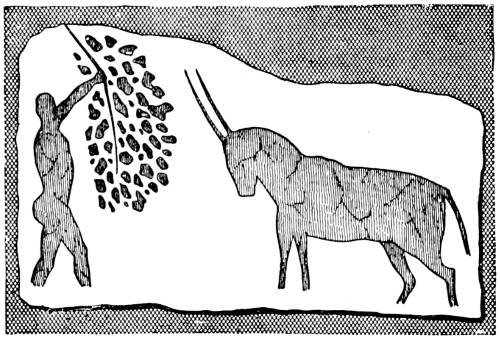
Fig. 7A.—Human and Animal Form, drawn by Bushmen of South Africa.
Some authors see a certain analogy between the Cave-men
and the Esquimaux of the present day. In artistic
culture, however, the Cave-men are immeasurably superior
to the latter, as may be seen by comparing their
respective efforts (Figs. 2, 3, 4, 5).
The Cave-men disappeared from Britain after it became
an island. Similar discoveries of implements and other
remains in Europe and Britain prove that the Cave-men of
both countries were in the same stage of culture. Pottery
has never been found in connection with the remains of
these people.
In France many important finds have been brought to
light illustrating the art work of the European Cave-men.
In the caves at Perigord, at Bruniquel on the Aveyron, at
13Le Moustier, at La Madelaine in the Dordogne, and in the
Duruthy cave at Laugerie Basse, in the Western Pyrenees,
have been found many engravings of animals, and carvings
on bone, smooth teeth, and antlers, also on sandstone,
slate, and schist. Evidences of the Cave-men using skins
for clothing is inferred from the engraving of skin-gloves
and other things found incised on the teeth of the great
cave-bear in the Duruthy caves. Hunting scenes were
often engraved with great fidelity, and carved dagger-handles
made from the antlers of deer, with the animal
itself sometimes carved on them. One of the highest art
examples yet found is that of a reindeer grazing, and is
the only object on which an attempt is made to represent
herbage, and perhaps water (Fig. 5). This interesting
relic was found in the Kesslerloch Cavern.
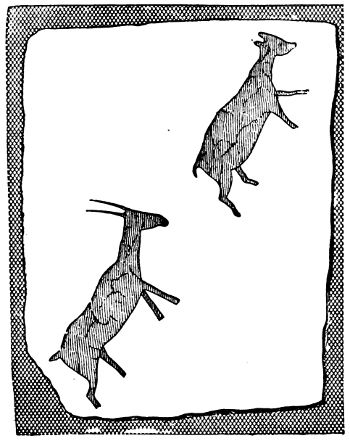
Fig. 7B.—Animal Forms, drawn by Bushmen.
14
CHAPTER III.
NEOLITHIC STONE PERIOD.
This period is divided from the Palæolithic Stone age by a
great unknown gap. It is sometimes called the Later or
Newer Stone age. In this period the flint implements
were better shaped, many of them were ground and
polished (Figs. 17, 18). Some of the flint and other stone
implements were very like in form to those of the Bronze
period, and as these implements were made, and continued
to be used, in Northern Europe after the Bronze periods of
the East had developed, it is quite possible that they were
copied from the bronze objects (Figs. 10, 11, 17, 18).
A remarkable sickle or knife fourteen inches long is
seen at Fig. 11; a flint saw (Fig. 12), semicircular knives
or saws at Figs. 15, 16, and a bone and flint harpoon at
Fig. 9. Some of the stone hammers or axes are of great
beauty in shape and in workmanship (Figs. 17, 18);
also pottery slightly burnt, but well decorated by incised
straight lines and zigzags (Figs. 21 to 24).
Figs. 8 to 11.—Flint Implements of the Neolithic Period (From Danish Arts.)
Figs. 12, 13, 14.—Flint Implements of the Neolithic Period. (From Danish Arts.)
Figs. 15, 16.—Flint Implements of the Neolithic Period. (From Danish Arts.)
Figs. 17 to 20.—Polished Stone Hammers and Celts, Neolithic Period. (From Danish Arts.)
Figs. 21 to 24.—Pottery of the Neolithic Age. (From Danish Arts.)
The cultivation of land, the breeding and rearing of
domestic animals, plaiting, and weaving was known and
practised by these people. Amber, bone beads, and shells
were used as personal adornments. Their burials were
with or without cremation. The burial-places of these
people are found all over the world, in Europe, Japan,
India, and other parts of Asia, and in North America.
They are named “Cromlechs” (stone circles), “Dolmen”
(stone tables) (Fig. 25), “Menhir” (long stone). The
burial-place, called a “Tumulus,” is a great mound of
19earth, usually containing a burial chamber constructed in
stone in the centre of the mound. The illustrations of the
“Menhir” (long stones) (Fig. 26), and of the so-called
Giants’ Tombs (Fig. 27) belong to the Stone age, and are
found in the island of Sardinia.

Fig. 25.—Dolmen at Hesbon (P. & C.).
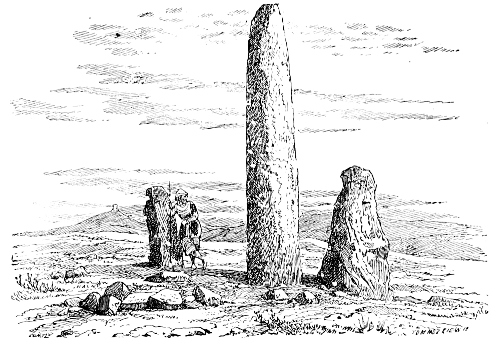
Fig. 26.—Menhirs, Sardinia (P. & C.).
We have seen that the Palæolithic men were hunters,
and evidently had a lot of leisure time on their hands,
20which they turned to good account by devoting some of it
to their artistic culture; while the Neolithic men were more
of a race of mechanics and farmers, who had neither time
nor inclination for the cultivation of art, but were altogether
more scientific and mechanical than the men of the
Palæolithic period.

Fig. 27.—Giants’ Tomb, Sardinia (P. & C.).
21
CHAPTER IV.
THE BRONZE AGE.
The people of the Bronze age introduced a higher civilisation
into the world than their predecessors of the Stone
ages. There appears to be a great overlap between the
Neolithic, Bronze, and Iron ages of Central and Northern
Europe, and the historic periods of the Eastern countries
bordering on the Mediterranean. We have evidence that
great periods of time must have marked the epochs of the
prehistoric ages, and that the Bronze age, like the Stone
and Iron ages, began at different times in different countries.
The tribes who brought with them the age of Bronze
into Europe composed the Celtic van of the Aryan race. The
earliest productions of this period were the simple wedges
resembling flat stone axes, the sides of which are slightly
thickened to form ridges or flanges; the centres are also
raised, which produces a ridge to prevent the head from
going in too far in the handle; in some the flanges are
much developed, and have also a loop cast on the side for
the purpose of tying it on to the haft. Some are made with
a socket and loop; these have been called “Paalstabs,”
and have a flat chisel-like shape (Figs. 28, 30).
Figs. 28 to 30.—Bronze and Paalstabs. (From Danish Arts.)
Figs. 31 to 34.—Bronze Axes, Paalstabs, and Moulds. (From Danish Arts.)
Figs. 35 to 38.—Bronze Swords and Spear-Head. (From Danish Arts.)
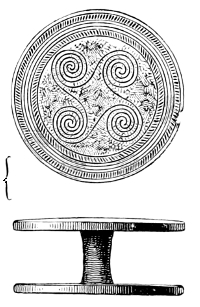
Figs. 39 and 40.—Bronze Button for Sword Belt.
(From Danish Arts.)
These earlier implements are often made of pure copper.
Bronze is a mixture of copper and tin, generally from two
to four per cent. of tin, and is consequently harder than
copper. Knives, hammers, gouges, sickles, daggers, spears,
swords, shields, many kinds of vessels, and articles of
personal adornment made in bronze, belong to the earlier
time of the Bronze period, and similar articles were made
24in this material in the prehistoric Bronze ages all over the
known world (Figs. 35 to 40).
An interesting object is a breast-plate,
belonging to this early
Bronze period; it is decorated with
zigzags in bands, and a well-arranged
scheme of spiral ornamentation
(Fig. 41). Urns of earthenware,
sometimes decorated with zigzags
and sacred signs, have been found
in graves. These urns contained
ashes of the dead (Figs. 43, 44).
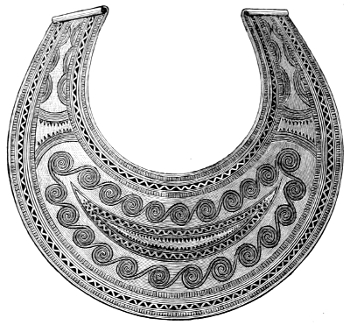
Fig. 41.—Breast-plate, with Spiral Ornaments. (From Danish Arts.)
Many of the bronze implements
and other articles have been found
in tombs, in caves in great
quantities, both finished and unfinished,
in “Kitchen Middens,”
or refuse heaps, in river-beds, and
in bogs.
Figs. 42, 43, and 44.—Urns of the Bronze Age (From Danish Arts.)
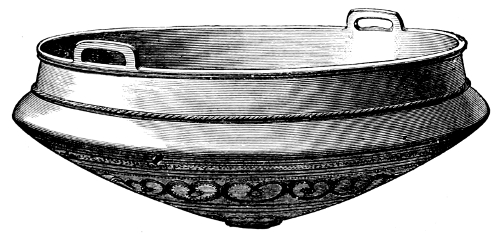
Fig. 45.—Bronze Bowl found in Sweden. (Scand. Arts.)
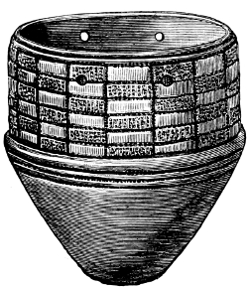
Fig. 46.—Urn of the Stone Age found in Swedish Dolmen. (Scand. Arts.)
Some of the objects found in North Germany, and particularly
25in Denmark, Sweden, and Norway, are exceedingly
beautiful in their shape and decoration. From nowhere
else in the world come so many objects, and so much that
is characteristic of the prehistoric Bronze age. This period
has been ably treated, and at great length, by Mr. J.
J. A. Worsaae, in his “Danish Arts,” and by Mr. Hans
Hildebrand, in his “Arts of Scandinavia,” to which
books we are indebted for the accompanying illustrations.
26It may be noticed that much of the decoration on these
objects consists of a few simple elements with much geometric
repetition. The varied forms are chiefly spirals
interlocking at regulated distances, concentric rings, triangles,
zigzag lines, and bands formed of lines which are
reminiscences of the earlier withy lashings, with which
the stone celts were
fastened to their hafts.
The raised, as well as the
flat twisted-like bands,
are derivatives from the
twisted strings that would
naturally be tied around
the pottery of an early
date to carry it by (Fig.
45).

Fig. 47.—Bronze Hatchet found in Sweden. (Scand. Arts.)
The spirals, zigzags,
ring-crosses, wheels, triskeles,
reciprocal meanders,
semicircles, &c., are
geometrical developments
of sun-snake, lightning,
the sun itself, cloud-forms, moon-forms, star-forms,
and the sacred fylfot or swastika, all of which had their
27origin in Egypt, India, Central Asia, or Greece. At first
they were used as isolated signs, or pictographs, to
represent physical phenomena, that were objects of
Nature-worship with almost all the nations of the world
after the dawn of civilisation, and when these signs
migrated into the art of other nations or later peoples,
28who were either ignorant of their meaning or understood
them in an imperfect way, they ceased to be employed
as isolated signs of the various divinities they originally
represented, and were copied, and repeated, as required,
to fill in a geometrical way the space at hand to be ornamented.
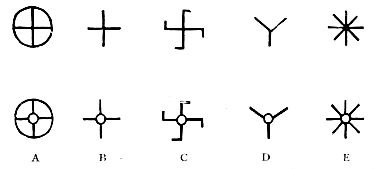
Fig. 48.—Sun Signs.
A, Wheel Cross or Wheel; B, Sun God Signs; C, Fylfot, or Swastika; D, Triskele; E, Stars or Sun Signs.
A beautiful piece of workmanship is the bronze horn
(Fig. 50). Worsaae thinks that this horn was used in the
worship of the gods in the early Bronze age, owing to the
great number of sacred signs engraved on it. Sun-wheels,
sun-snakes, and sun-boats, developed into spiral ornament,
may be seen on it.
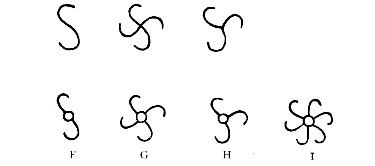
Fig. 49.—Sun Signs. (From Danish Arts.)
F, Sun-snakes; G. Swastika; H, Triskele; I, Star or Sun.
N.B.—The Swastika here is evidently a double Sun-snake.
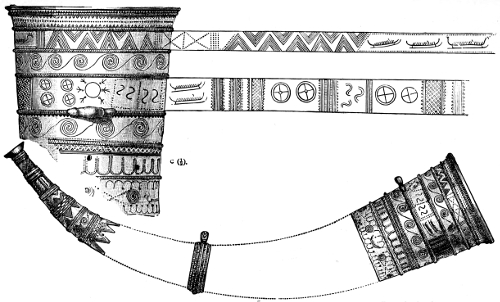
Fig. 50.—Bronze Horn or Trumpet, found at Wismar, in Mecklenburg. (From Danish Arts.)
There is one ornament that plays an important part in
the Bronze and Iron periods, of which much has been
written, the “fylfot” or “swastika.” It has been found in
nearly every quarter of the ancient world, except Egypt
and Assyria, both in savage ornament and in the art
of cultured races. The “fylfot” or “many” or “full-footed”
cross in Anglo-Saxon, it is also known by the
names of “gammadion,” “croix gammée,” “croix cramponée,”
“tetraskele,” &c. The Indian name for it is the
“swastika” or “svastika,” which means “good luck,” or
“it is well.” The fylfot, according to the opinion of many
archæologists, was originally the sign of the sun, and used
as a sacred symbol in the worship of the sun; others think
it was a sign used to symbolize the rotatory motion of the
planets; it is quite likely it has been used by different
early peoples for both. It has been associated with
other sun signs, as the circle, concentric circles, with the
S-shaped sun-snakes, as on the prehistoric whorls from
Hissarlik, and very frequently with the solar divinities, as
the horse, boar, ram, lion, ibex, and goose, &c. It is found
on Cyprian and Rhodian pottery and on the “geometric”
pottery of Greece. Its appearance on many objects of
early Christian art can be accounted for. In these cases
the Christian missionaries permitted the continued use of
it to their pagan converts, but they themselves attached a
30new meaning to it, regarding it as merely a substitute for
the symbol of the cross.
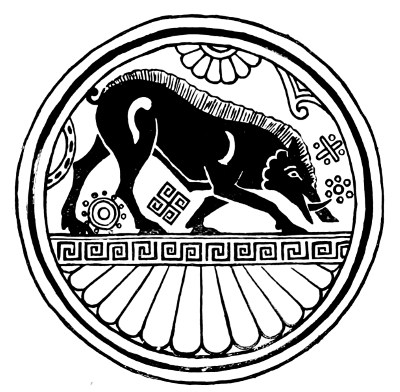
Fig. 51.—Pinak or Plate, Archaic Period, from Camiros, Rhodes, showing Fylfot, and Sun Signs, and Sacred Boar. (British Museum.)
Some writers have argued, with a good deal of plausibility,
that the Greek fret pattern, Chinese and Japanese
frets, were only developments from the fylfot. This is
purely conjectural, for as regards the Greek fret, it is
more likely that it had an Egyptian source, as so many of
the Greek ornaments are but developments of Egyptian
and Assyrian forms. The fret used by the Greeks has
been found in Egypt in the ceiling ornament of tombs
more than a thousand years before it appeared in Greece.
The Chinese frets may have in some instances a fylfot
origin, but at present this is doubtful, as it has not yet been
proved. The drawing of the archaic Greek plate (pinak),
in the British Museum, given at Fig. 51, from the Greek
colony of Rhodes, is very interesting, as it shows a well-developed
31fylfot between the legs of the boar, and an early
Greek fret band; the fret here may only be a water-sign,
or a river-edge representation. The spaces around the
boar (animal sacred to the sun) are filled up with sun-signs
and star-signs; even the large segment of radiating lines,
and the form over the animal’s back may typify the sun.
The whole decoration has a high religious meaning in
reference to sun-worship, and is evidently a copy by a
Greek artist of an oriental embroidery motive.

Fig. 52.—Silver Brooch, Plated with Gold, in the form of a Double Sun-snake or Swastika; found in Iceland. (Danish Arts.)
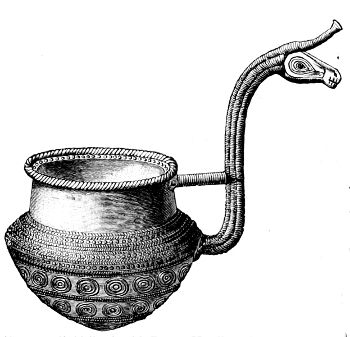
Fig. 53.—Gold Bowl, with Bronze Handle and Sacred Horse’s Head. (Danish Arts.)
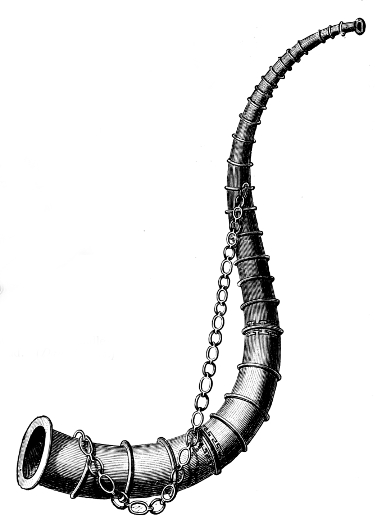
Fig. 54.—Bronze Horn found in Denmark. (Danish Arts.)
The fylfot has been found stamped on the pottery of the
lake dwellings of the Zuni, Yucatan, and other American
pottery, and on objects from Iceland, Ireland, and Scandinavia.
A circular form of it is seen on the gold Scandinavian
ornament (Fig. 52).
Whether it originally was a pure sun-sign, or whether it
signified the axial rotation of the earth round the North
32Pole, it is full of remarkable interest, and enters more
than any other symbolic sign into historic ornament
generally. In India, China, and Japan, it has been much
used; this was owing to the spread of the Buddhist religion
in these countries. It is found on the toes of the “Footprint”
of Buddha, at the Amarávati Tope, India; and
owing to its great religious significance in China, Japan,
34and Ceylon, we find it stamped on the account books,
coins and dresses of both the living and the dead, as a
universal sign of good luck.

Fig. 55.—Collar of Bronze found in Sweden. (Scand. Arts.)
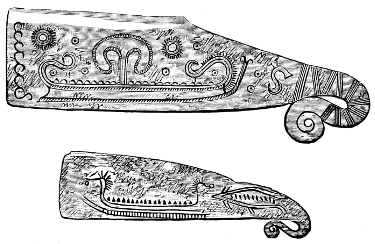
Fig. 56.—Danish Bronze Knives, decorated with Sun-ships and other Sacred Figures. (Danish Arts.)
Figs. 57 and 58.—Bronze and Gold Buttons found in Women’s Graves, with the Triskele, Moon-Signs, and Sun Snakes. (Danish Arts.)
The swastika, both straight and curved-armed variety,
was used indiscriminately in the decoration of objects of the
Iron age, whether in bronze, iron, gold, silver, wood, or
stone. It was the sign among the Romans of Jupiter
Tonans, who wielded the thunder and lightning; was the
sign used for Thor, the god of thunder and lightning, with
the early German peoples, and the curved variety of it was
used as a symbol of their highest divinity by the northern
nations of Scandinavia. From this widespread use of the
swastika it is conjectured that it is an Aryan symbol,
brought by the people of the Bronze age from their primitive
home in the plateau of Central Asia.
35
CHAPTER V.
THE IRON AGE.
The age of Iron, like the Bronze ages, varies very much
in point of time in Europe as compared with Asia, and
also there is a great overlapping between the times of the
Iron age in the northern, middle, and southern parts of
Europe. It is safe to say that the early part of this age
belongs to prehistoric times as far as Central and Northern
Europe is concerned, and although the Grecian Archipelago
and Western Asia were in a high state of civilised
culture five or six centuries before the Christian era, and
were acquainted with the use of iron, it is clear that the
extensive employment and decoration of iron implements
and arms were chiefly in Switzerland, Northern Italy, and
in the Valley of the Danube. This iron culture soon
spread over to Gaul and Spain, and to the British Islands
in the West, and Scandinavia in the North. The Romans,
under their first emperors, imported their swords and other
arms from Spain and the West on account of their good
workmanship. From the many “finds” that have been
brought to light in the above countries it is evident that, for
five or six centuries before the commencement of the
Christian era, there was a great activity going on in the
manufacture of iron objects in these countries, principally
swords and other warlike arms. The two most important
“finds” are the “Halstaat” in Austria, and the La Têne
“finds” near Marin, Lake Neuchâtel. The Halstaat find
was composed of many gold and bronze articles, pottery,
and a few iron weapons. The place where these things
36were found was a Celtic tomb, and the iron articles found
in it are among the earliest known in Europe, which proves
them to have been made at the transition period from the
Bronze to the Iron ages. Besides the purely geometric
work the decoration on these articles consists of sun and
moon signs, wheel crosses, half moons, the sacred ship,
the swastika, triskele, &c.; crude representations of men
and animals, as horses, oxen, stags, he-goats, and geese,
all of which have a religious and symbolic meaning. All
these forms were used in the Bronze and Iron ages alike.
The find at La Têne, near Marin, Lake Neuchâtel, belongs
to a later period and is more important from an art point
of view, for besides the usual sacred decorations engraved
on the objects, some of the sword handles and sheaths are
beautifully sculptured or chiselled in iron, with well-designed
ornament and animal forms. (See Fig. 81, D, of
Gaulish or late Celtic workmanship.)
The shapes and materials of the weapons found at La
Têne, or of what is called the “La Têne Period,” do not
bear much resemblance to the weapons of the Bronze age,
and the sheaths of the swords and daggers are sometimes
bronze and sometimes iron, but the blades are of iron.
Communication with the Etruscans and the Greeks by
the people of Central Europe is proved by the coins, vases,
and objects of personal ornament, and by the imitations of
Greek and Macedonian coins found in great quantities in
Middle and Western Europe and in Britain, that belong
to this late Celtic period. This accounts for the more
“advanced” nature of the decoration on the Marin swords
and daggers of the “La Têne Period,” and this particular
culture-wave brought with it the beginnings of that ornament
which, in later centuries, developed into the peculiar
Celtic and Runic twistings and interlacings that are so
common to Danish, Norwegian, Swedish, Anglo-Saxon
and Irish phases of decorative art, that was practised so
largely from the first to the twelfth centuries of our era.
This Celtic interlacing, though often more distressing than
37a Chinese puzzle, and in some instances barbarous in the
extreme, yet is often very interesting and beautiful in execution.
Most of it can be traced to its origin in sacred
signs and animal forms in classical ornament.
It will be interesting to trace briefly some of these developments
of the Northern Runic and Celtic art of the Iron
age. In the development of nearly all historic art, we
find that the religious aspirations of man were the chief
factors. In Egypt, Asia, Europe, or America, wherever
art had an individuality, the greatest monuments were
erected, and the finest works of art were created for the
honour of the nation’s gods. We have seen how the forms
of ornament were generally derived from the figurative
signs of sacred animals, plants, and other mystic symbols
of a religious meaning, and were in the end converted in
meaningless but æsthetic ornament. This is the history
of nine-tenths of historic ornament that has survived the
decay of nations. The ancient religion and beliefs of the
pre-Christian peoples were those which they had brought
with them when they first migrated from their Asiatic
home, namely, the worship of the sun, moon, and lightning.
Cæsar mentions in his “De Bello Gallico,” VI., 21, that
the “Germani people worshipped the visible helping gods,
the sun, moon, and fire, and knew nothing whatever of
other divinities.” The symbolic signs and animal forms
sacred to these phenomena, already mentioned, are found
more or less on the utensils and weapons of the Gallic-German
peoples of the Iron age, and in addition to these
we see the representation of the Northern gods, the Trinity
of the North, Thor, Odin and Frey, with and without the
sacred animals peculiar to each. In the earlier times close
intercourse with the Romans brought about a high degree
of culture to the barbarian people of the Rhine Valley and
more northern places; many statuettes of bronze inlaid
with gold and silver, representing Roman gods, have been
dug up in Denmark and other places in the north.
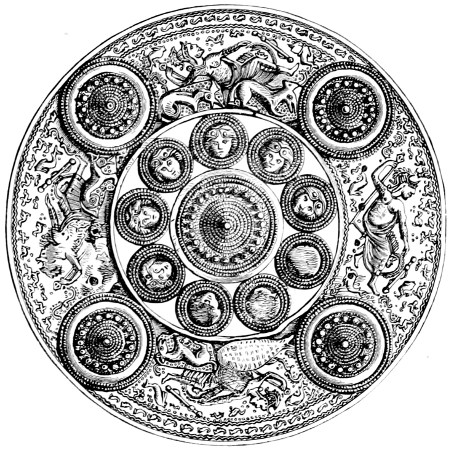
Fig. 59.—Gold-plated Ornament found at Thorsberg. (Danish Arts.)
These statuettes were transformations of the Roman and
38Etruscan gods that served for the Gallo-Germanic gods.
An illustration of the Roman influence is seen in a round
ornament of this period plated with gold, found at Thorsberg,
Slesvig. It is the decoration of an iron coat of mail.
The illustration of this (Fig. 59) is taken from Worsaae’s
“Danish Arts,” and is thus described by him:
“Five suns are placed crosswise, and between two of the
outer ones is seen a barbarised figure of Jupiter with horns
on his helmet; the sun in the centre is surrounded by a
circle of helmeted heads. Just as this recalls to our minds
the Germanic and Scandinavian god of thunder, Thor, who,
later, was often represented with a helmet on his head, so
the thin barbaric golden figures of horses, geese, and fish,
39riveted on the ornament or brooch itself, remind us of the
sun-god Frey.” The Figs. 60 and 61 are metal mountings
decorated with the triskele formed of sun-snakes, the
swastika with straight arms, and the compound variety of
the fylfot on the larger mounting. These illustrate a transition
of the sacred sun form to more purely ornamental
designs.
Figs. 60 and 61.—Metal Mountings from Thorsberg. (Danish Arts.)
The imitation of Roman coins and medallions of the
time of Constantine to ornaments that have been called
“bracteates” was extensively carried on by the Germanic
people. These bracteates have the design on one side
only, with a loop or ring at the top to suspend them
around the neck as an amulet. These golden bracteates
have been found in great numbers in Scandinavia and
Denmark, and scarcely anywhere else, which proves they
were indigenous to these countries.
It is interesting to notice how they have been transformed
from their Roman and Byzantine originals to
purely sacred Celtic amulets of a new national type of ornament.
Fig. 62, from Hildebrand’s “Scandinavian Arts,”
is a barbaric copy of a Roman medallion. It is a poor
attempt to copy the Imperial head, and the inscription is
badly and meaninglessly copied. On the reverse is a
figure of Victory, with signs of the cross, surrounded by a
wreath and legend.
40
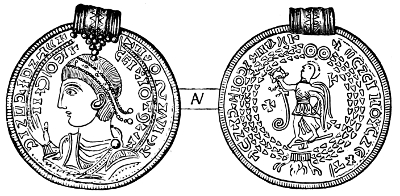
Fig. 62.—Barbarian Copy of a Roman Medallion found in Sweden.
(Scand. Arts.)
It appears that after the age of the Constantines, the
intercourse of the Germanic people with the Romans was
broken, owing to the invasion of the Huns, and for a long
time afterwards they were left to themselves without
foreign influence, and were enabled to develop their
national art on the foundation of Roman culture, at the
same time substituting their own emblems of their national
41gods in place of the classic ones in their decorative work.
We can safely gather from this that the Hunnic invasion
of the Roman Empire was the indirect means of giving to
Northern Europe a distinct national style of art.

Fig. 63.—Golden Bracteate from Scandinavia. (Danish Arts.)
The illustrations of the golden bracteates here given
(Figs. 63, 64) partly show how this development began.
On Fig. 63 is Thor’s head with his tiara or helmet, the he-goat
sacred to Thor, the triad three dots, and the swastika.
On the border is the triskele (Odin’s sign), Frey’s cross,
and the zigzag or lightning.
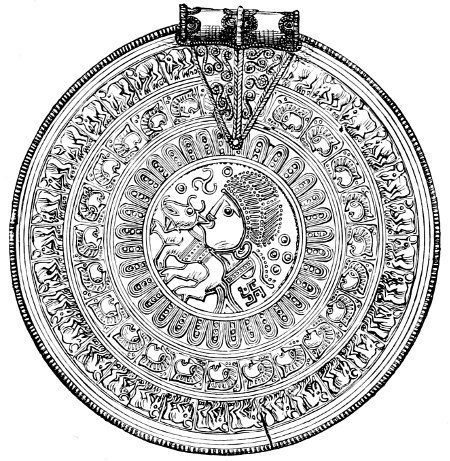
Fig. 64.—Golden Bracteate from Scandinavia. (Danish Arts.)
The larger bracteate (Fig. 64) has Thor with the he-goat
surrounded by the swastika, triskele, and the cross
(four suns forming the cross), the signs for Thor, Odin, and
Frey. The inner border has the three dots, or triad; next
border, Thor’s head; and the outer border is composed of
42he-goats. On the loop are signs of the sun and moon, and
under it sun-snakes (developed into spirals). The above
43descriptions of the bracteates are chiefly taken from the
“Danish Arts.”
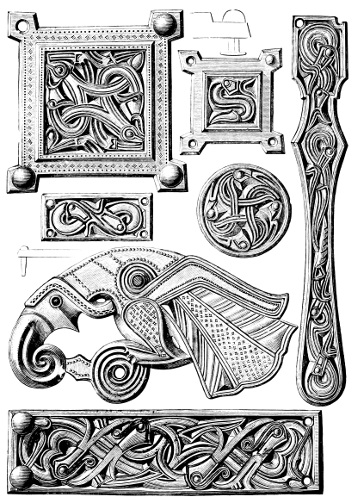
Fig. 65.—Parts of Harness in Gilt Bronze, Gotland. (Scand. Arts.)
Characteristic ornament of this period is shown at Fig. 65,
which are parts of a harness in gilt bronze from a tomb in
Gotland; the patterns are composed of corrupted animal
and bird forms.

Fig. 66.—Fibula in Gilt Bronze, Gotland. (Scand. Arts.)
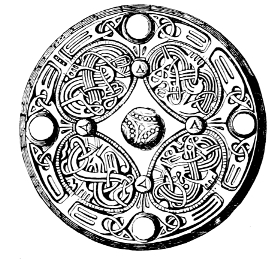
Fig. 67.—Fibula in Gilt Bronze, Gotland. (Scand. Arts.)
Figs. 66 to 68 are fibula decorations of the interlacing
animal forms, which are characteristic of the more attenuated
and later development
of Scandinavian art.

Fig. 68.—Part of Rim of Fig. 67.
The series of designs,
Figs. 69 to 73, are of great
interest in showing the development
of patterns from
lion forms to the twisted
snake ornament. The figures are taken from Hildebrand’s
“Scandinavian Arts.” According to that author,
Fig. 69 is a Scandinavian copy or adaptation of a Roman
design, which consists of two lions couchant. The other
patterns (Figs. 70 to 73) are further developments of
corrupted lion forms. It is quite possible that the peculiar
44interlacings of Scandinavian ornament may have been the
result of imperfect copying of lion and bird forms. They
were never intended for snake forms, as many of these
have legs and feet, and serpents and snakes were unknown
in the north. Many stranger derivatives of ornament have
46existed in the ornament of savage tribes.[A] When the
Gotlandic artist had reduced his lion forms to snakes he
carried his work to the verge of monotony with interminable
interlacings.
Figs. 69 and 70.—Corrupted Figures of Lions. (Scand. Arts.)
Figs. 71, 72, 73.—Animal Ornamental Patterns, Corrupted Figures of Lions. (Scand. Arts.)

Fig. 74.—Silver Goblet, with Gold-plated Decoration, found in Zeeland.
(Danish Arts.)
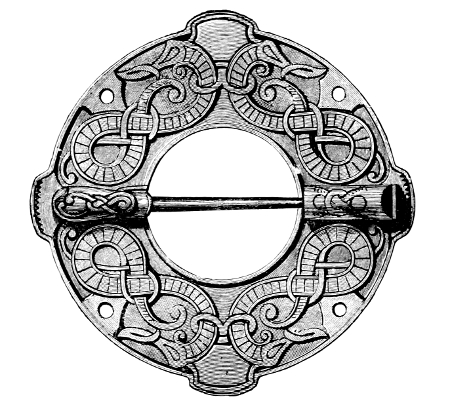
Fig. 75.—Under Side of a Fibula. (Scand. Arts.)
The decoration on the goblet (Fig. 74) is the sun-god
47Frey, with his horse and geese; the masks are intended
for those of Thor; his he-goat and sun signs are also
seen. This goblet was evidently used in the sun-worship
festivals.
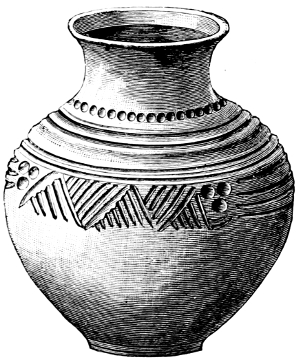
Fig. 76.—Pottery of the Iron Age. (Danish Arts.)

Fig. 77.—Piece of Woollen Cloth with Gold and Silver Threads, Viking Period.
(Danish Arts.)
A restrained and agreeable design is seen on the under
side of a fibula (Fig. 75); a well-shaped earthen pot is
decorated with zigzag work, and has the symbolical triad
mark impressed on it (Fig. 76); and a remnant of woollen
cloth, woven with silver and gold threads, has the swastika
and the hammer of Thor as decoration. This was found in
a grave at Randers of the tenth century. It belongs to
the Viking period of the Iron age (Fig. 77).
48
CHAPTER VI.
THE LAKE DWELLINGS OF SWITZERLAND AND OTHER PARTS OF EUROPE.
In Switzerland and in Upper Italy evidences have been
found of numerous lake dwellings, and in Ireland and
Scotland analogous dwellings on islands in lakes and
morasses have been found, to which the name of “crannoges”
(“wooden islands”) has been given. The exact age
of these dwellings has not been accurately defined, but an
approximate date has been assigned to them. From the
nature, kind, and decoration of the numerous articles that
have been dug up from the foundation relic beds in the
lakes of Switzerland, it appears that the duration of the
“lake dwellings” period was from about the time of the
later Stone age to the early Iron age; it therefore embraces
portions of the Stone age, the Bronze age, and
early Iron ages of Europe.
The lake dwellings were erected by certain tribes of
the early inhabitants of Europe, for the better security of
themselves and their property from the savage animals
of the mainland, and from their enemies, the still more
savage fellow-men. As far as can be made out from the
remains found in the lakes, the lake dwellers were more
civilised and less warlike than their neighbours that lived
on land. The lake dwellings are the most ancient evidences
of man’s first constructive capabilities in the art
of building. Herodotus tells us of a settlement on Lake
Prasias (Tachyus), in Rumelia, where “men live on platforms
supported by tall piles.” Some tribes of the
49Papuans of New Guinea still live on pile dwellings. The
lacustrine habitation (Fig. 78), from “Les Races Sauvages,”
by M. Bertillon, is a representation of a pile
dwelling on the Lake Mohrya, in Central Africa, of the
present day.

Fig. 78.—Lacustrine Habitation in Lake Mohrya, Central Africa. (From Les Races Sauvages, by M. Bertillon.)
The substructures, Fig. 79, A, B, and C, taken from
Keller’s “Lake Dwellings,” will give general ideas of the
foundations of the dwellings in Switzerland and Upper
Italy. At A is seen the earliest type, which reveals the
section of the piles, upper flooring, water-line, and sloping
bank of the lake. The piles were sometimes composed of
split trees or stems, but more often of stems with the
bark on, and were of various kinds of wood; they were
50sharpened at the end by stone hatchets, and in later times
by bronze or iron axes, and were driven into the sand or
mud at a short distance from the shore. The heads of the
piles were brought to a level, and planks or whole trees
were fastened on them as beams; sometimes they were
fastened on by wooden pins, and sometimes were
“notched” into the heads of the piles. Cross-beams
51were often forced in between the uprights under the platform
to steady the structure, and outside there was often
fastened a clothing of wattle-work to act as a fender from
various accidents. If it were found difficult to drive the
piles into the bed of the lake to any great depth, artificial
raising of the bottom was resorted to, by bringing cargoes
of stones in boats and dropping them between the piles,
thereby securing a perfectly secure substructure (Fig. 79,
B). These artificial risings are called “stein-bergs.”
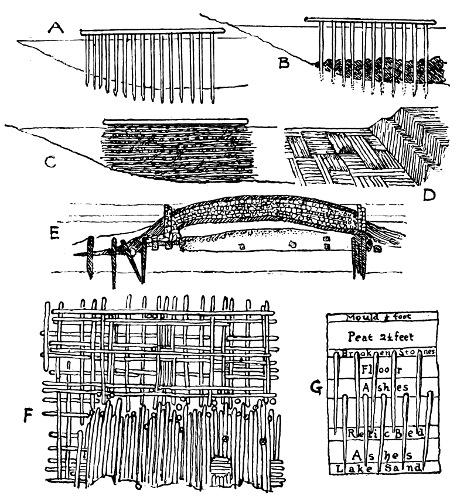
Fig. 79.—Section and Plans, Lake Dwelling Substructures from Keller.
A, General idea of arrangement of Piles; B, shows the Piles driven into the mud, with stones
thrown between them; C, Section of Fascine Dwelling; D, Diagram of Floor Fascine
Construction from Niederwyl; E, Section of Irish Crannoge in Ardakillin Lough; F, Construction
of Wooden Form (Niederwyl); G, Section of Lake Dwelling Beds at Robenhausen.
Another and later variety of substructure is known as
“fascine-work” (Fig. 79, C). Probably this fascine construction
was the safest when the water of the lake rose in
height. It consisted of layers of small trees or stems laid
lengthwise, built from the bottom of the lake; these sticks
or trees were interwoven, and at intervals upright piles
were driven in to keep them in position, and on the top
of this structure, above high-water mark, the flooring
platform was laid.
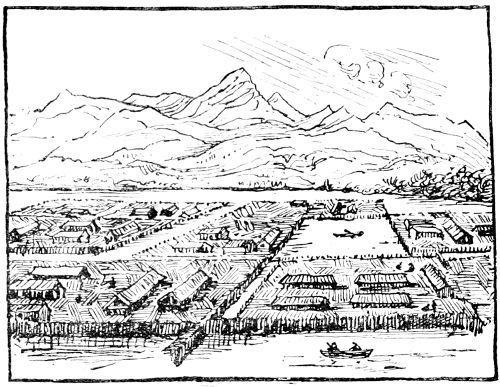
Fig. 80.—An Ideal Lake Settlement or Town. (From Keller’s Lake Dwellings.)
The “crannoges” or “wooden islands,” of Ireland and
Scotland, resemble very much the Swiss fascine dwellings.
The Irish “crannoges” were often placed on natural
islands, or on shallows or loughs, but sometimes were
built up, like those in Switzerland, from the bottom of the
lake. These “crannoges” were used as chieftains’ fastnesses
or places of retreat. They were built chiefly in the
Stone age, and were used long after the age of Iron. At
Fig. 79, E, may be seen a section of an Irish “crannoge” in
Ardakillin Lough. At Fig. 79, F and D, are shown diagrams
of platform and floor construction respectively of a lake
dwelling at Niederwyl, Switzerland. On the top of this
floor a plaster made of mud, loam, and gravel, was laid
and beaten firmly down. As far as can be ascertained
from the remains of upright corner posts that have been
found in position, the houses were rectangular, though
some may have been round like the huts of the contemporary
people on the mainland. The walls of the houses
are supposed to have been built of wattle-work plastered
52over with mud and thatched, as evidences of this are seen in
the large pieces of burnt clay with wattle impression on it
that have been found; this also points out the fact of the
houses or settlements being burnt down. In some cases
the walls were of fascine construction. Every hut was provided
with its hearth, which consisted of three or four large
flat stones. Clay weights used for the loom have been
found in great quantities, which proves, together with
many fragments of flax cloth and woven “bast” which
have come to light, that weaving was known and practised
by the lake dwellers (Fig. 81, K). Pottery has been found
in the relic beds, but is usually of a very coarse description.
Many broken bits of pottery have been found ornamented
with lines, chevrons, or zigzags, and often with
the “rope” ornament, raised or impressed by a twisted
string or rope; this kind of decoration is evidently suggested
53by the band of string tied around the primitive
vessels of clay to keep them together, or for carrying purposes.
See Fig. 81, B, F, G, H, I, and J.
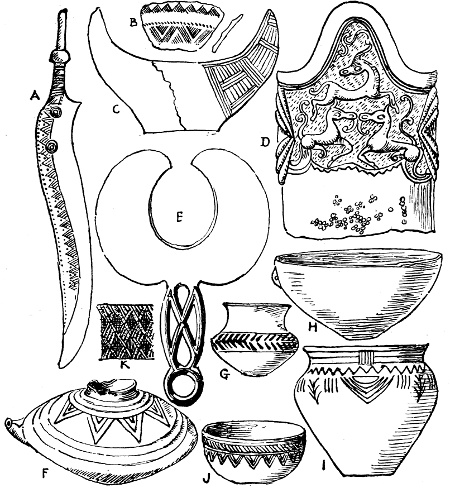
Fig. 81.—Objects from the Lake Dwellings (from Keller).
A, Bronze Knife (Lake of Bienne); B, Ornamented Pottery; C, Moon Image of earthenware;
D, Part of an Iron Sword (Gaulish work); E, Moon Image of bronze; F, G, H, I, J,
Earthenware Vessels; K, Embroidered Cloth.
The builders of the lake dwellings are supposed to have
been a branch of the Celtic population of Switzerland,
belonging to prehistoric times, and was in its last stage of
decadence before the Celts took their place in the history
54of Europe. Although many remains of bronze and iron
implements have been brought to light from the relic
beds of the lake dwellings, this does not prove that the
inhabitants were acquainted with their manufacture, for
most of the articles were probably obtained by barter from
the people of the mainland.
A beautiful bronze knife is seen at Fig. 81, A, found in
the lake of Bienne, and part of a sword in iron, of Gaulish,
or “late Celtic” workmanship, from Marin, Lake Neuchâtel
(Fig. 81, D).
Highly interesting are the “moon-stones” and “moon-images”
of this period, made in stone, earthenware, and
bronze. These crescent moon-images have a religious significance,
and have doubtless been used to decorate the
tops of their entrance doors (Keller) or other conspicuous
places in their dwellings, as emblematic images of their
worship of the moon.
The figure at C represents an earthenware moon-image
with a flat base for standing purposes. The decoration on
this is peculiarly interesting, as showing one of the earliest
fascine patterns, doubtless derived from the floor construction
of the dwellings, or from the lashings of withy bands
used to fasten the stone axes and celts to their hafts. This
kind of ornament has been used very much in the Bronze
age weapons, implements, and other objects. The moon-image
at E is made of bronze, with a handle and a ring to
hang it by. It was probably worn as an amulet or decoration
suspended from the neck of a Celtic priest. Remains
of many kinds of plants, seeds, corn, and fruit have been
found, usually in coarse earthen pots; also cakes and
loaves of bread, and mill-stone “crushers” for grinding
corn. Domestic animals, such as cows, goats, and dogs,
were kept by the lake dwellers. Fishing and fish-curing,
as may be easily inferred, was an important industry with
these interesting people.
55
CHAPTER VII.
EGYPTIAN ART.
According to their most ancient traditions, the Egyptian
race descended from a point high up on the Nile, or the
land of Ethiopia, but modern science proves them to belong
to a Caucasian race, and not of the Negro type. The name
Egypt has been derived from “Het-ka-Ptah,” one of the
titles of the city of Memphis, which means “The Temple
of the Genius of Ptah,” and has been interpreted by the
Greeks as “Aiguptos,” the latter being the old name for
the Nile.
On the south of Egypt dwelt the Nubians or Ethiopians;
on the west the Libyans, a fair-skinned race, who, being a
warlike people, were employed by the Egyptians as mercenary
troops; and on the north-east the nomadic Semitic
tribes of Edom and Southern Syria. The latter people
often wandered west to feed their flocks in the Delta of
Lower Egypt, and in course of time formed, with the
Phœnician traders, a large proportion of the population of
the lower kingdom of Egypt. It was on the north-east
frontier, on the Isthmus of Suez, that Egypt had most to
fear from her foreign enemies.
Nearly all the art of the various peoples and nations of
the world was developed in relation to their religion, and
most of it—as elsewhere stated—originated in symbolic
signs that represented, under various forms, human or
otherwise, the original objects or phenomena which they
worshipped. This was the case especially so in Egypt;
57and this must be our plea to describe here briefly the
principal outlines of the Egyptian religion.
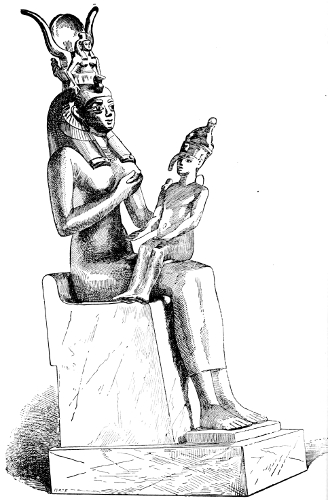
Fig. 82.—Isis nursing her Son, Horus. (P. & C.) Height, 19 ins.
The religion of the Egyptians had two developments,
one tending towards Monotheism, and the other to Polytheism.
They believed in one god, who was the king of
all gods; and, on the other hand, they had their mythical
gods, who personified whatever was permanent in natural
phenomena, such as the sun, moon, sky, stars, earth, light,
darkness, floods, the seasons, the year, and the hours.
The goddess Nut represented the sky, and was known also
under the names of Neith, Isis, Hathor, Sekhet, &c., which
were the names of the sky at sunrise or sunset (Fig. 82).
The sun had names without number, as Rā, Horus, Ptah,
Tmu, Setek, Amen, &c. (Figs. 83, 84). Osiris and Sekru
are names of the sun after he has set, or is “dead and
buried” (Fig. 85). Osiris is king of the dead, and, in
mythological language, he is slain by his brother Set, who
personified night, who in his turn is slain by Horus
(Fig. 82), who is the heir of Osiris. Horus signifies the
“one above,” and Amen-Rā, the great king of all the
gods, signifies “the one who hides himself.” The great
Amen-Rā was the mightiest god in all the Egyptian
pantheon. He was the great god of Thebes.
The gods were represented in human shape, and also m
animal form. The animals, or animal combinations, were
simply symbolical of the gods on account of certain
attributes common to each, or in some cases because they
bore the same name.
The Egyptians were intense believers in a future state,
hence the great care bestowed on their dead, for they
believed that the body should be preserved in order to
insure a state of bliss for the soul in the future world.
Every human being had its “double,” or ghost “Ka,” as
well as its ghost “Ba,” which we often find represented
under the form of a human being with a hawk’s head.
Sometimes the image of a man was buried with him. This
was to represent his “double,” and is, therefore, called a
59“Ka” statue, or image. The “Ba,” or soul, was supposed
to be “luminous.”
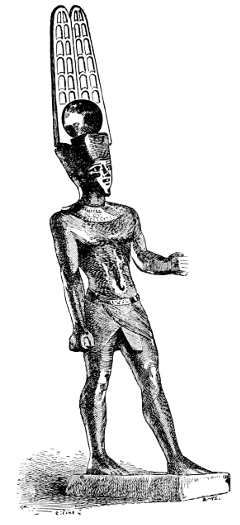
Fig. 83.—Amen, or Ammon, bronze. (P. & C.)

Fig. 84.—Ptah, from a bronze Actual Size. (P. & C.)
It is supposed that many of the animals and animal
forms buried with and painted on the coffins of the
Egyptian dead were, in remote times, the sacred animals
or “Totems” belonging to the dead man’s family. “Totem
worship” may have been the most ancient form of the
Egyptian religion. The Temple of Bubastis (in the Delta)
was sacred to the goddess Bast, or Pasht, the cat-headed
goddess (Fig. 86). The cat was, therefore, a sacred animal
or a “Totem,” in ancient Egypt, like the ibis, hawk, asp,
beetle, &c., totems; and so in the district or town of
Bubastis the Cat Clan, or worshippers of the cat-headed
goddess Pasht, built the rock-cut temple called Speos
Artemidos, near Beni-Hasan, and dedicated it to her
worship.

Fig. 85.—Osiris. (P. & C.)
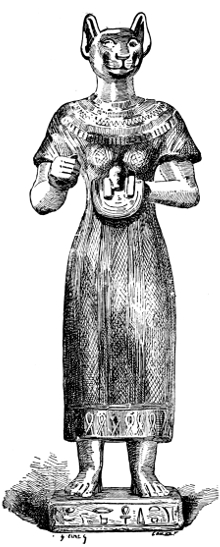
Fig. 86.—The Goddess Bast, or Pasht. Actual Size. (P. & C.)
The writing of the Egyptians is classified under three
heads: the “Hieroglyphic,” or the form in which it appears
on the monuments; the “Hieratic,” or priestly writing, as
used on the papyrus documents; and the “Demotic,” a
cursive or running kind of writing similar to the Hieratic,
and a later development of it. In the year 1798 the famous
“Rosetta Stone,” now in the British Museum, was found
near the Rosetta mouth of the Nile by a French officer.
It passed into the hands of the British in 1802. On this
stone is inscribed a decree of the priests of Memphis conferring
divine honours on Ptolemy V., King of Egypt,
B.C. 195. The inscription is in three forms, the Hieroglyphic,
the Demotic, and in Greek characters. From this
inscription was first obtained the key to the decipherment
of the hieroglyphics, and interpretation of the ancient language
of Egypt, and the names of the kings which in the
hieroglyphics are enclosed in cartouches or oblong rings.
Thus the clue was obtained to the identification of the
letters of the Egyptian alphabet, which had hitherto
baffled all the attempts of Egyptologists to find out. The
credit of the identification is chiefly due to the French
61savant, Champollion, but a considerable share of the
honour must be given to Thomas Young, who was the first
to find out the correct value of many of the phonetic signs.
The Egyptians, from the earliest period known, were
acquainted with and skilled in medicine, in astronomy, in
mathematics, philosophy, poetry, and fiction. The oldest
literary papyrus at present known dates from the Third to
the Fifth Dynasties (3966 to 3333 B.C.).
Egyptian art was at its best in the earliest Dynasties.
The Fourth Dynasty was the great pyramid-building period,
and the statues of this great epoch were more natural and
artistic, and altogether were less conventional than those
of later times.
It is notable that in the Eighteenth and Twenty-sixth
Dynasties, after a long period of art depression, the artists
went back for inspiration and better models to the work of
the men of the Fourth and Twelfth Dynasties.
The history of Egypt can be traced back from 4,400
years before the Christian era, and is divided into thirty
Dynasties, whose succession was the result of failure in any
of the original lines of marriage, or marriage with a
female of lower rank, or of a revolution. The thirty
Dynasties are divided into three groups:—
| Dynasties I.-XI. |
(B.C. 4400-2466) |
The Ancient Empire. |
| ” XII.-XIX. |
(B.C. 2466-1200) |
The Middle Empire. |
| ” XX.-XXX. |
(B.C. 1200-340) |
The New Empire. |
These dates and arrangements are formulated chiefly on
the basis of a work written in Greek, and compiled by
Manetho, an Egyptian priest who lived in the third
century B.C.
The kings of Egypt have been named Pharaohs from
the title “Peraa”—"great house." The seat or centre of
the government shifted its position according to dynastic
reasons, or from policy. During the ancient empire it
was first at Memphis, and then moved to Abydos and
other places in the south as the empire extended. When
62Egypt was in the height of its glory the centre of government
was chiefly at Thebes, but moving often according
to revolution or foreign oppression. Rameses and his
near successors held their court at the northern city of
San, or Tanis. The time of the New Empire was chiefly a
period of foreign rule and slow decadence, the seat of the
empire shifted to nearly all the former places or capitals
and to Bubastis or Sais with each political change.

Fig. 87.—The Great Pyramid of Kheops, and Small Pyramids; from Perring. (P. & C.)
Menes was the first historical king of Egypt, and was
supposed to have founded Memphis, where the worship
of the god Ptah, “Creator of gods and men,” was first
instituted, as well as that of Apis or Hapi, the sacred
bull—the Serapis of the Greeks. For the next six hundred
years we know scarcely anything of Egyptian
history except the names of the kings, until we come
to the great period of the Fourth Dynasty (B.C. 3766-3566).
63Seneferu was the founder of this Dynasty. He conquered
the peninsula of Sinai, and worked the valuable mines
of copper and turquoise found in that country. His
son and successor, Khufu, better known as Kheops
(B.C. 3733-3700), was the builder of the Great Pyramid
at Gizeh (Fig. 87), which he erected for his tomb. The
king Kha-f-Rā (Kephren) (B.C. 3666-3600), built the
Second Pyramid, and his son, Men-kau-Rā (Mykerinos)
was the builder of the Third Pyramid. Men-kau-Rā was
a wise and humane sovereign, and it is recorded to his
honour, as an exceptional qualification, that “he did not
oppress his people.” In this he was different to most of
the Pharaohs. His mummified remains are now in the
British Museum. The Sphinx, or man-headed lion, carved
out of the solid rock, is near the Great Pyramid, and is
supposed to be the work of a much earlier period (Fig. 91).
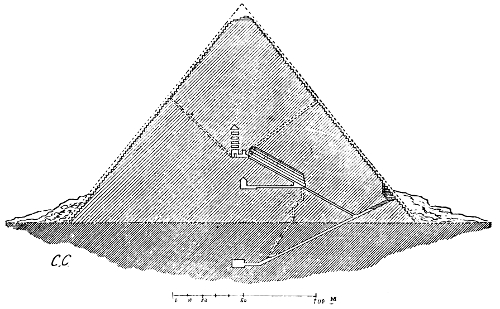
Fig. 88.—Section through the Great Pyramid of Kheops. (P. & C.)
The Fifth Dynasty (B.C. 3566-3300) is not an important
one as far as art is concerned.
The Sixth (B.C. 3300-3100) was noted for the erection of
64its pyramid tombs and for the religious texts that were
inscribed on their interior walls.
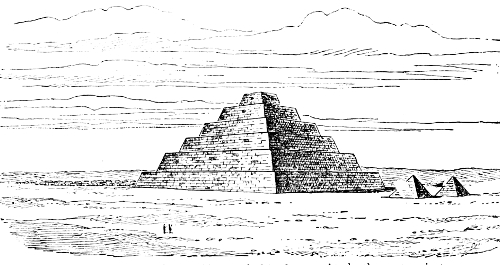
Fig. 89.—The Stepped Pyramid. (P. & C.) Supposed to be the most ancient building in Egypt.
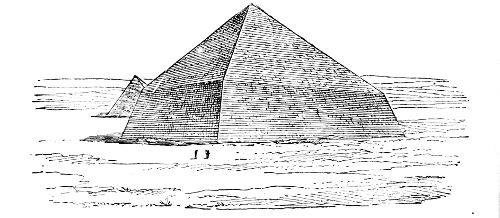
Fig. 90.—The Southern Pyramid of Dashour. (P. & C.)
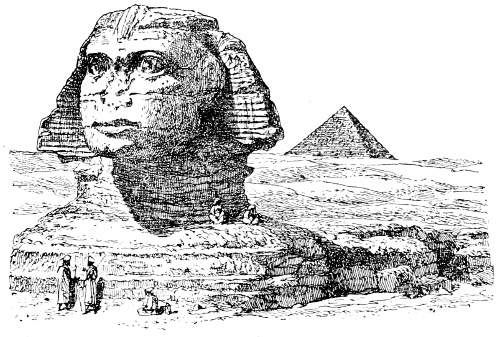
Fig. 91.—The Great Sphinx. (P. & C.)
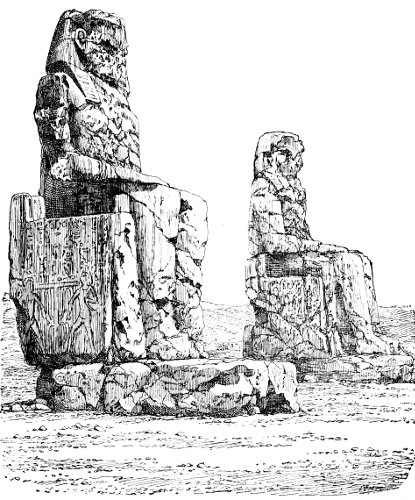
Fig. 92.—Colossi of Amenophis III. Statues of Memnon at Thebes. (P. & C.)
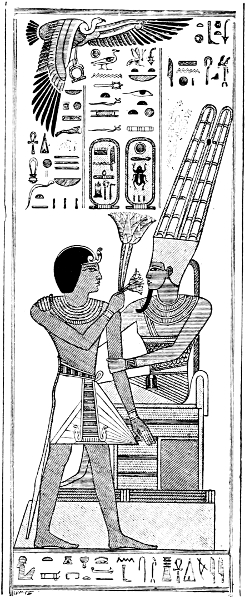
Fig. 93.—Amenophis III. Presenting an Offering to Amen. (P. & C.)
From the Seventh to the Eleventh Dynasty (B.C. 3100-2466)
is a period whose history is almost lost. It meant
to the Egyptians a period of more than six hundred years
of tribal jealousies and fighting, at the end of which Egypt
65was consolidated from north to south, and a powerful
Dynasty succeeded these internal struggles. The Twelfth
Dynasty was a brilliant one for the arts, and for great
works of engineering skill. The names of the Pharaohs
of this dynasty, Amenemhāt and Usertsen, are among the
most renowned in Egyptian history. Great temples were
restored or newly built at Thebes, Heliopolis, Tanis, and
Abydos. The great artificial lake, Mauur (Moeris of the
Greeks), or “great water,” was constructed to receive the
surplus waters of the Nile, and to control its floods. The
Arabs call this lake “El-Fayyum,” from another of its
Egyptian names “Phiom,” the sea. It was completed in
the reign of Amenemhāt III. (B.C. 2300-2266). The same
king built the celebrated Labyrinth, the “Erpa-re-hent,”
or “Temple at the entrance of the Lake,” in which the
king himself was interred. His successor was the last
king of the Twelfth Dynasty. The Thirteenth and Fourteenth
67Dynasties are dark periods in which the invasion
of the Elamites and
the Nomad tribes from
Syria and Western
Asia took place. The
Fifteenth and Sixteenth
Dynasties are
the “Hyksos” dynasties.
The Hyksos, or
Shepherd Kings, were
the chief of the above
Nomad Asiatic tribes,
and consequently
usurpers of the native
rule. A revolt took
place in the reign of
one of these kings of
the Seventeenth Dynasty,
and under
Amāsis I., the founder
of the Eighteenth
Dynasty, the Shepherd
Kings were finally
driven out of Egypt.
About the end of
the Hyksos rule the
patriarch Joseph was
sold into Egypt. King
Nubti (B.C. 1750) is
supposed to have been
the Pharaoh of that
time, and the Hyksos
king, Apepa II., is
supposed to have been
the king that raised
Joseph to power. The explorer, M. Jacques de Morgan,
expresses the opinion that the Shepherd Kings
68were the tomb-robbers, who, either from cupidity, or a
wish to annihilate the last traces of a conquered race,
pillaged every pyramid of its dead, and the treasures
there concealed, for not a single pyramid has been found
unviolated that was built before the Hyksos Dynasty.
Thothmes III. (B.C. 1600) was a powerful and warlike king
who compelled Assyria to pay him tribute. In the Eighteenth
Dynasty, Egypt was more powerful than at any
other period of her history. The great Temples of Thebes,
Karnak, and Luxor were built during this dynasty.
A later monarch of this dynasty, Amenophis III.,
erected on the west of the Nile at Thebes two colossal
statues of himself, that the Greeks have named the
statues of Memnon, the fabled king of Egypt that was
supposed to have been slain in the Trojan wars (Fig. 92).
Another king of this dynasty, Amenophis IV., made
himself exceedingly notorious by trying to introduce a
new religion, and for this he had his memory execrated,
and was deeply cursed as a heretic by priests and people
of the succeeding generations. It appears he had imbibed
from his mother, Ti, who was an Assyrian princess, certain
religious opinions which he determined to force on his own
people. In order to do this he removed his capital from
Thebes, where the national worship of the great god
Amen was celebrated, to Khu-en-aten, the modern Tell-el-Amarna,
which name he took for himself, and which means
the “splendour of the sun-disk”; there he set up the sun-disk
god, Aten (the radiant sun). The new religion, however,
was obnoxious to the conservative Egyptians, and
soon died out (Fig. 94).
The Nineteenth Dynasty (B.C. 1400-1200) was founded
by Rameses I. He was a successful king, but his son Seti
(Fig. 95) was a greater one, and had the reputation of being
a great builder. It was he who built the great “Hall of
Columns,” at Karnak, which joins the pylon of Amenophis
III. (Fig. 96).
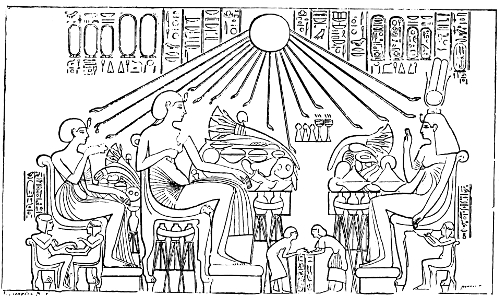
Fig. 94.—The Adoration of the Solar-disk by Amenophis IV. (P.)
He also built the temple at Kûrnah, and remains of his
69work is seen at Abydos, Memphis, and Heliopolis. He
was succeeded by his famous son Rameses II., the Sesostris
of the Greeks, the supposed oppressor of the Israelites.
He was a very powerful monarch, and, from all accounts,
in order to glorify himself in the eyes of posterity, did not
scruple to erase the names of former kings from off their
cartouches on their monuments and inscribe his own in
their place. That he has accomplished the end he had in
70view by so doing there is not the slightest doubt, for no
monarch of Egypt is better known than he. But apart
from this he was certainly a mighty chieftain, who “enriched
the land with memorials of his name.”
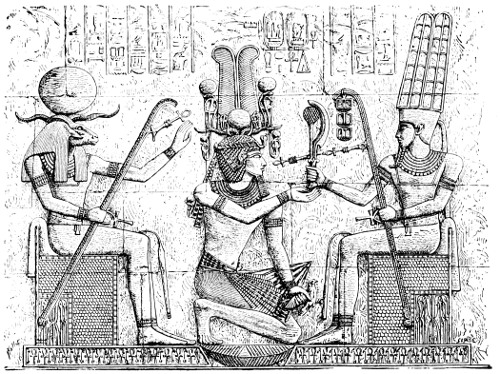
Fig. 95.—Seti with Attributes of Osiris between Amen and Chuoam. (P. & C.)]
The greatest of his many battles (he was always fighting)
was fought with the Khita (Hittites), under the walls
71of Kadesh, in the valley of the Orontes. His forces were
almost defeated when by his personal valour he turned the
tide of the battle and entirely routed the Khita (Fig. 97).
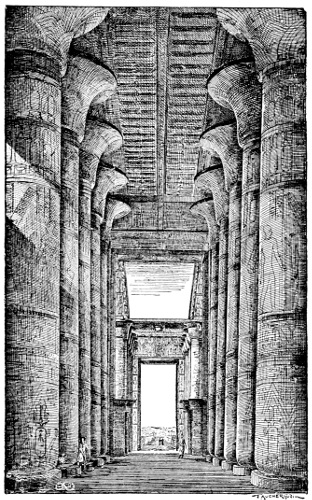
Fig. 96.—Entrance to the Hypostyle Hall of the Temple of Amen at Karnak. (M.)
The most famous building of his time is the rock-hewn
72temple, the “Great Temple,” that he built and dedicated
to Amen, Ptah, and Harmachis, which faces the Nile at
Ipsamboul, in Nubia.
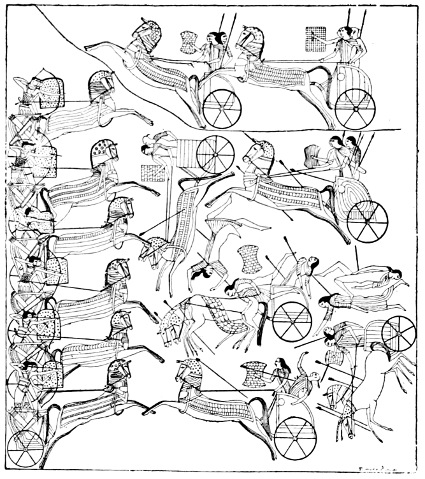
Fig. 97.—The Rout of the Khita; Egyptians to the left, the Khita to the right. (M.)
On the façade of this temple are sculptured in situ
four seated colossal figures of Rameses, two on each side
of the doorway. From the soles of the feet to the top of
the pschent on the head measures sixty-five feet; they
are the largest statues in Egypt, and the workmanship is
careful in finish. Over the entrance is carved in relief on
the rock a colossal figure of the god Rā, and on either side
of it are single figures in low-relief of Rameses in the act
of adoration (Fig. 98).
73
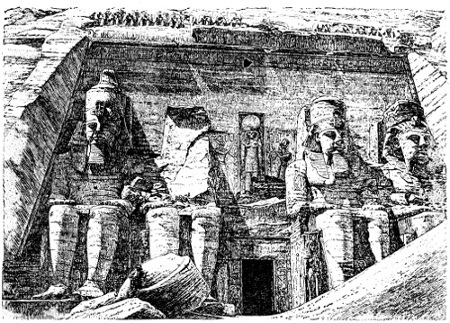
Fig. 98.—Façade of the Great Rock-cut Temple at Ipsamboul.
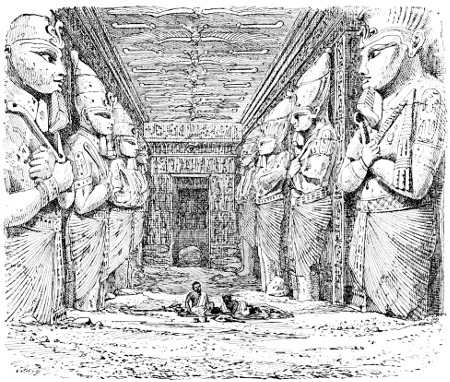
Fig. 99.—Principal Hall in the Great Temple. (H.; P. & C.)
Menephthah (B.C. 1300-1266) was the successor of
Rameses II. and his successor was Seti II. The latter
was the last king of the Middle Empire. With the commencement
of the Twentieth Dynasty the New Empire
74dates (about B.C. 1200-358). Towards the Twenty-second
Dynasty (B.C. 966-776) Egypt began to pass into
a state of dissolution. In the Twenty-fourth Dynasty (B.C.
733-700) she was at the mercy of Assyria on the north
and Ethiopia on the south. In 672 B.C. the Assyrian
King Esarhaddon invaded Egypt and occupied the whole
75of the Delta, afterwards capturing Memphis and Thebes,
which he pillaged. The Assyrian king died suddenly, and
Taharka, a native usurper, succeeded in driving out the
Assyrians, but soon after Egypt was again conquered by
Ashurbanipal, a powerful Assyrian King (B.C. 666). The
Assyrians, however, after a short time of occupation withdrew
from Egypt, owing to their troubles at home with
the Medes, who were laying siege to Nineveh, and Egypt
76again revived. Under Amāsis the country enjoyed peace
for about forty years (B.C. 572-528). The Egyptians possessed
a fleet at this time with which they advanced to the
Phœnician coast and took the city of Sidon, and also
annexed the island of Cyprus to Egyptian rule.
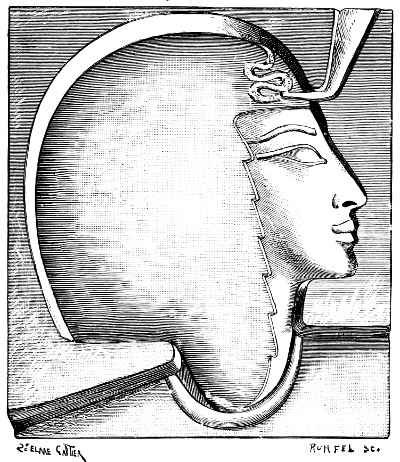
Fig. 100.—Portrait of Rameses II. (Louvre; P. & C.)
Egypt submitted to the Persian army under Cambyses
in B.C. 527, and was for more than one hundred years afterwards
a mere vassal of Persia. The Twenty-seventh
Dynasty (B.C. 527-424) was composed solely of Persian
kings. A successful revolt broke out in the last Persian
king’s reign, Darius II., when Egypt was free once more.
Amenrut was the only king of the Twenty-eighth Dynasty,
and after the Twenty-ninth and Thirtieth Dynasties were
ended, the latter, by the conquest of Egypt once more by
the Persians under Artaxerxes III. (B.C. 340), we find the
country under Persian rule for the space of eight years.
About this time the Persian monarch was defeated by
Alexander the Great, which brought Egypt under the
Greek rule. At the death of Alexander Egypt was
governed by the Macedonian kings, the Ptolemies, from
330 to 30 B.C. After the Roman wars and the death of
Cleopatra, Egypt found itself a Roman province.
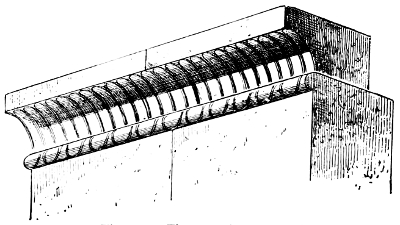
Fig. 101.—The Egyptian “Gorge.”
In A.D. 638 the Arabs under Omar conquered the country,
77and it was ruled by them till 1517, when it passed into the
hands of the Turks.
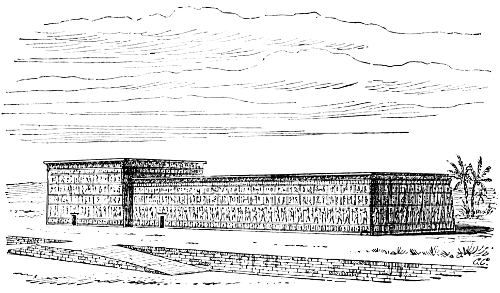
Fig. 102.—General Appearance of an Egyptian Temple.
The Pyramids of Egypt have doubtless derived their
shape from the prehistoric grave mounds. Although elaborately
and ingeniously contrived for the concealment of
the remains of the kings, and are stupendous monuments
of building skill, they are not examples of architecture in
the true sense of the word. Perhaps the earliest examples
78of Egyptian architecture, properly speaking, are seen in the
ancient shrines, with sloping walls and flat roof, and having
the peculiar cavetto cornice moulding called the
Egyptian “Gorge” (Figs. 101 and 109). Horizontally is
the great feature of Egyptian architecture, which is typically
expressed by the illustration Fig. 102, an ideal
generalisation of an Egyptian temple.
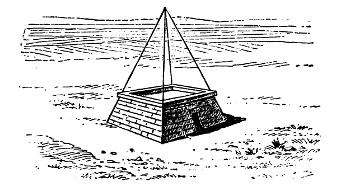
Fig. 103.—Square Building.
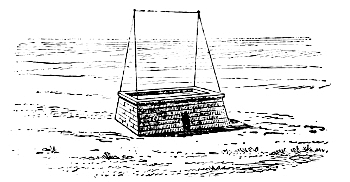
Fig. 104.—Oblong Building.
As hardly any, or no, rain falls in most parts of Egypt,
a sloping roof was not a necessity. The external walls in
the case of a square building are in the form of a trapezium,
making the whole edifice of the shape of a truncated
pyramid, and pyramid-like in either the square or rectangular-planned
buildings (Figs. 103 and 104), except when
79the end walls are vertical (Fig. 104), then it tends toward
the ridge-form.
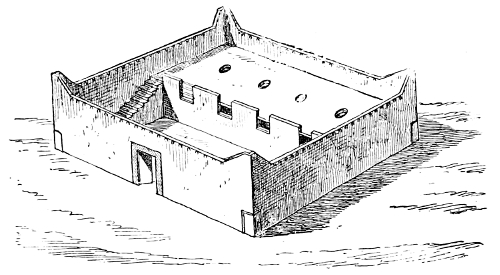
Fig. 105.—Model of an Egyptian House. (P. & C.)

Fig. 106.—Plan of the Temple of Luxor. (P. & C.)
In regard to the scarcity of voids and narrow sloping
doorways, the similarity in Egyptian buildings of
every kind is very striking (Fig. 105). This absence of
voids gives a dark and gloomy character to the buildings,
when compared with the architecture of other countries.
The horizontal element and solidity of construction impart a
look of powerful strength and of deep repose to the Egyptian
temple. Even the tall and slender obelisks placed in
front of the mighty pylons have little, if any, effect in
removing the horizontal appearance of the whole building.building.
We give the ground plan, perspective view, and front
elevation of the great Temple of Luxor, as a typical illustration
of an Egyptian temple from restorations by
Chipiez (Figs. 106, 107, and 108). Its construction is
described by Champollion as the “Architecture of
giants.”
This double-temple was the work of two kings. From the
second pylon to the further end of the Temple is the
portion built first, by the King Amenophis III. The other
portion, from first to the second pylon, is the part built by
80Rameses II. The sanctuary
is placed in the centre of a
hall, surrounded by small
chambers. It has two doors,
one at either end, and on the
axis of the building it has
a vestibule in front and a
hall beyond, supported by
twelve columns. Another
hall in front of the Naos (or
interior apartment) is supported
by thirty-two lofty
columns. In front of this
again is a large square open
court. This court is connected
to the larger front
peristylar court by a grand
and lofty gallery, similar to
a hypostyle hall. It is
176 ft. long, enclosed and
covered, and richly decorated
like the hypostyle hall
at Karnak (Fig. 96). Four
colossal seated statues are
in front of the first pylon,
and two obelisks, one on
each side of the door-way.
Four large flagstaffs and a
double row of sphinxes in
front of the temple complete
the accessories to this great
edifice. The whole building
and obelisks were covered
over with bas-reliefs and
inscriptions.
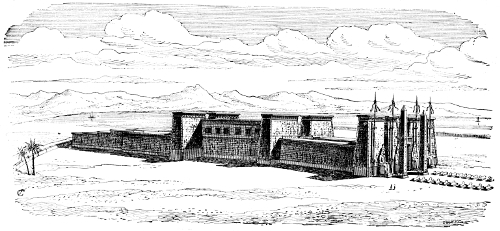
Fig. 107.—Bird’s-eye View of Luxor, as restored by Chipiez. (P. & C.)
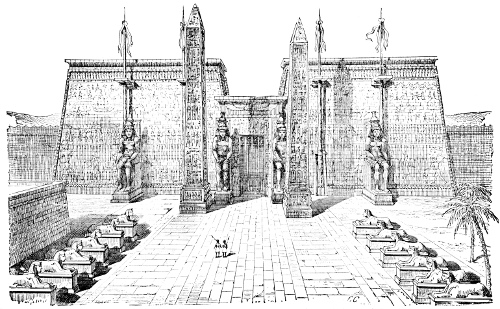
Fig. 108.—Principal Façade of the Temple of Luxor, restored by Chipiez. (P. & C.)
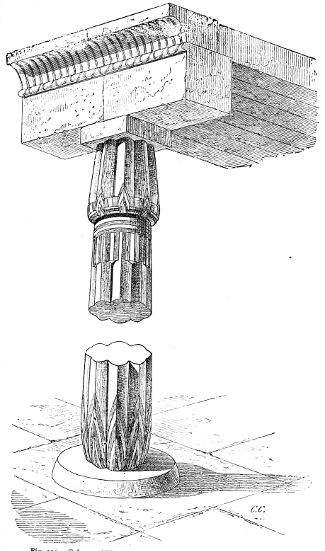
Fig. 109.—Column of Thothmes III.; from the Ambulatory of Thothmes at Karnak. (P. & C.)
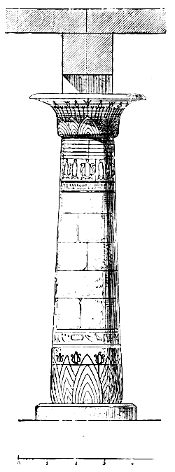
Fig. 110.—Column of the Hypostyle Hall of the Ramesseum; from Horeau. (P. & C.)
The typical Egyptian
columns or supports are of
84two distinct and well-marked kinds, the lotus-headed and
the campaniform or bell-shaped. The former is so called
from its resemblance to a
closed lotus-bud (Fig. 109),
and the latter from its resemblance
to a bell with the
mouth uppermost (Fig. 110).
An earlier and simpler form
of column or support is the
quadrangular pier (Fig. 111),
and the next development
is the tapering quadrangular
pier (Fig. 112), both undecorated.
Next we have the
pier with a capital which, in
profile, is a simple cavetto
or “gorge,” and square
abacus (Fig. 113).
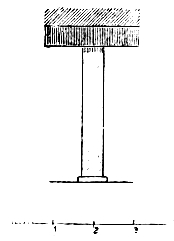
Fig. 111.—Quadrangular Pier (P. & C.)
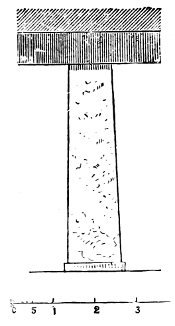
Fig. 112.—Tapering Quadrangular Pier. (P. & C.)
Between the abacus and
the entablature or beam is
a square thickness of stone; this is the great defect in the
Egyptian orders, and distinguishes the latter from the
85Greek orders. This space between the abacus and the
architrave is bad, both from a
scientific and artistic point of
view. It robs the capital of its
legitimate appearance as a supporting
member. This pier, with
capital and the Hathoric pier
(Fig. 114), with the head of the
goddess Hathor, are both decorated.
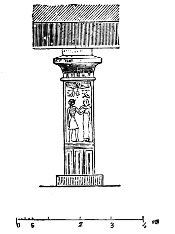
Fig. 113.—Pier with Capital. (P. & C.)
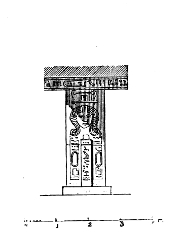
Fig. 114.—Hathoric Pier. (P. & C.)
We next come to the octagonal
(Fig. 115), and the sixteen-sided
pillars (Fig. 116), which are
almost Greek in their classic
simplicity; the latter is fluted.
All forms of Egyptian columns
have either square slabs or circular
discs as bases, on which
the column rests. The two latter mentioned pillars are
exceptional, and therefore not typical Egyptian, in having
the abacus directly under the architrave; the sixteen-sided
86pillar is especially Doric-like in this respect, and also in
its fluted shaft (Fig. 116).
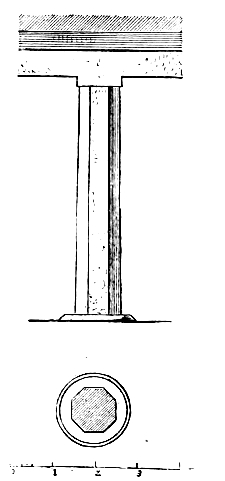
Fig. 115.—Octagonal Pillar, Beni-Hassan. (P. & C.)
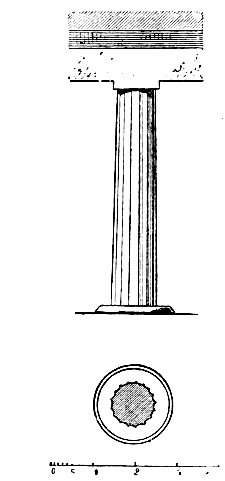
Fig. 116.—Sixteen-sided Pillar; Fluted. (P. & C.)

Fig. 117.—Osiride Pillar from Medinet-Abou. (P. & C.)

Fig. 118.—Column from Bas-Relief. (P. & C.)
The supports known as “Osiride” pillars are chiefly of
the date of the Nineteenth Dynasty. They have a kind of
analogy to the caryatid Grecian pillars, but are unlike
them in respect that they do not support the entablature,
as they are only placed in front of the quadrangular supporting
pier for purposes of decoration, and are usually
meant as representations of the kings who erected the
temples they decorate, with a head-dress ornament consisting
of the attributes of Osiris (Fig. 117).
Another variety of column has a fanciful combination of
floral forms for its capital (Fig. 118). This and others of
87fanciful design are from the bas-reliefs and wall-paintings,
and remind us of similar creations of the artist’s pencil, as
seen in the Pompeian wall decorations.
The upper parts of the capital are developments from
the calyx of the lotus, with the sepals curled outwards,
and look very much like the first notions of the Greek
Ionic capital, as indeed we shall find the Ionic volute to
be a development of the lotus calyx more than anything
else. An example of the faggot-shaped column, with its
base, lotus-capital, and entablature, is given at Fig. 109.
88The ornamental parts of this column were painted in
bright yellow and blue, and, as a rule, the sculptured
ornament of the Egyptian
columns, architrave, and cornices
were relieved by the painter in
bright colours.

Fig. 119.—Palm-Capital from Sesebi. (P. & C.)
The illustration at Fig. 119 is
that of the palm-shaped capital
from Sesebi. This type of capital
is a frank imitation of a bunch of
palm-leaves tied by the circular
bands around the top of a column.
A later development of the palm
capital shows the bell shape with
a more complicated decoration,
and has the Hathor-headed abacus, surmounted by a Naos
(Fig. 120).
89
Egyptian Ornament and Industrial Art.
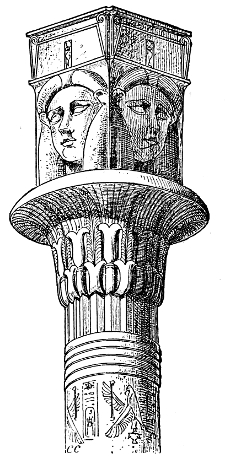
Fig. 120.—Hathor-headed Campaniform Capitals, Temple of Neetanebo, at Philæ. (P. & C.)
A great part of Egyptian ornament and decoration is
composed of symbolic forms, the remainder is made up of
geometrical ornament, such as checkers, meanders, frets,
rosettes, diapers of lotus and
other forms. Natural forms
of flowers and foliage were
not copied direct, but only
used in shape of geometric
abstractions, and their
arrangement as diapers in
surface decoration was derived,
in the first instance,
from the older arts of weaving
and matting. The old
Egyptians were skilled in
weaving both plain and
figured fabrics, chiefly from
flax and hemp fibre. The
lotus form was pre-eminently
the leading motive
in Egyptian floral ornament.
The papyrus (from which
our word paper is derived)
and the palm are next in
importance as motives from
which Egyptian ornament
is derived.
The lotus-plant (Nymphæa
nelumbo) the variety in
which the leaves grow up
out of the water and do not
lie on its surface, is shown at Fig. 121, and drawings,
evidently from nature, at Fig. 122, from the tomb of Ptah-Hotep.
The lotus flower in ornament may be seen in the ceiling
90decorations from tombs at Fig. 123, Nos. 3 and 5; at Figs.
118, 124; and in the painted frieze from Thebes (Fig. 125),
where the similarity between this and the Assyrian lotus,
fir-cone and daisy may be noticed (see Fig. 167).

Fig. 121.—The NymphæaNymphæa nelumbo; Flower, Leaf, and Fruit. (P. & C.)
The bi-lateral rendering of the lotus plant is not common
in Egyptian ornament, though it is the oldest form of
the lotus known, as it occurs on the prehistoric pottery of
Koptos, and on tombs of the Fourth Dynasty (Fig. 126),
91and earlier. Two lotus flowers are here seen tied together;
the general outline of the flower is only rendered which
would enclose the sepals and petals when seen in a side
view.
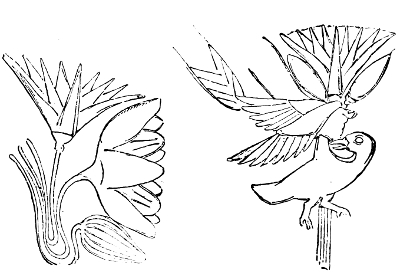
Fig. 122.—Drawings of the Lotus from the Tomb of Ptah-Hotep. (P. & C.)
The lotus flower and bud alternating in a border ornament
may be regarded as the prototype of the Greek
palmate borders. We are inclined to believe in Professor
Goodyear’s theory, that the egg and tongue decoration on
the Greek ovolo moulding is nothing more than a disrupted
lotus and bud ornament developed in transition through
the Rhodian pottery decoration. The shells and the
tongue were originally the lotus calyx, and the egg or
pebble the lotus bud.
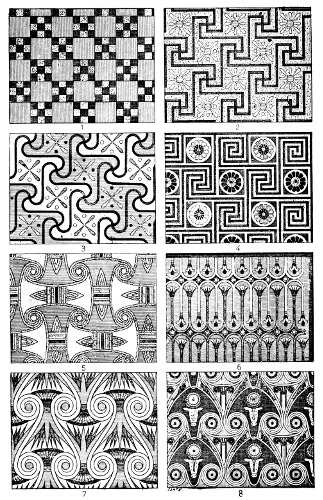
Fig. 123.—Specimens of Ceiling Decoration at Thebes; from Prisse. (P. & C.)
Other plants, as the thistle, convolvulus, daisy, vines, and
grapes, &c., were used very much in decoration, especially
during the Akhenaten period (Eighteenth and Nineteenth
Dynasties), when the decoration was of a florid kind. The
papyrus is seen in the ceiling ornament Fig. 123, No 6,
at Fig. 127, and on the perfume spoon of carved wood
(Fig. 151). The ceiling decorations (Fig. 123), from the
Theban tombs, show the fine sense and feeling the
Egyptians had for the appropriate decoration of flat
93surfaces, and the judicious balance maintained in the
contrasting units of the ornament.
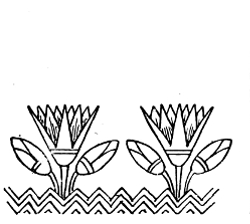
Fig. 124.—Lotus and Water Ornament.
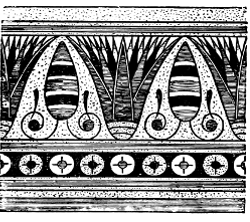
Fig. 125.—Painted Border: from Thebes, after Prisse. (P. & C.)

Fig. 126.—Flattened Form of Lotus-leaf Ornament; Front View and Section 1. (P. & C.)
In animal forms found in Egyptian decoration there are
a few distinct and typical varieties, that have been used
times without number, both in painting and in carving in
the round, and in the bas-reliefs of stone, wood, and in
94gold, silver, ivory, and bronze. Among the most frequent
is the vulture, with outstretched wings, having sacred
symbols in his claws. It has been used appropriately in
this form as ceiling decoration in the great temples at
Thebes, on a blue ground diapered with golden stars; the
ceilings thus are symbolic representations of the heavens
at night (Fig. 128).
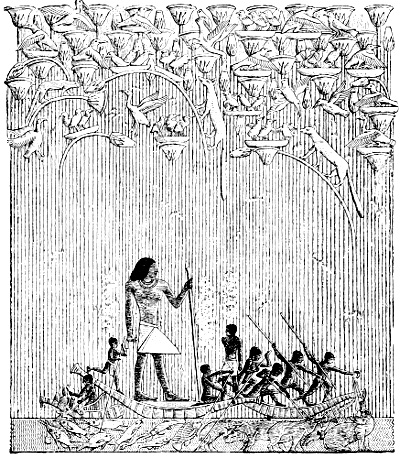
Fig. 127.—Hunting in a Marsh; from a Bas-Relief in the Tomb of Ti. (P. & C.)
95
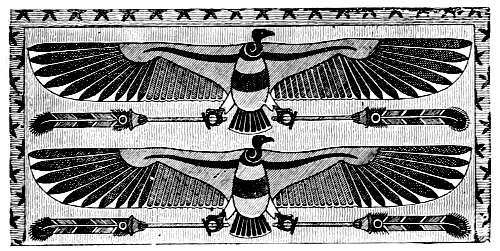
Fig. 128.—Vultures on a Ceiling. (P. & C.)
Similar outstretched wings have been added to the
scarabs or sacred beetles. These winged scarabs, together
with similar winged-globe and uræus creations, have been
used as ceiling decorations in tombs and on mummy-cases,
and sometimes the goddess Isis, or Nepththys, was
furnished with these wings as guardian of the tomb
(Figs. 129 and 130).
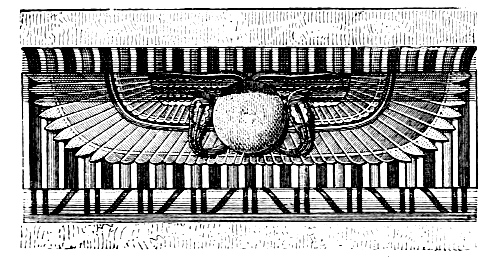
Fig. 129.—Winged-Globe with Uræus. (P. & C.)
The Uræus and winged-globe was a favourite decoration
for cornices and for heads of doorways (Fig. 108). The
colouring of the winged-globe decoration was generally,
in the case of the globe, a red colour, as the emblem of the
sun; the wings green, and the striped ground behind the
96figure was painted in alternating stripes of red, blue, and
white, which produced an effective arrangement of colour.
The Egyptians excelled in the drawing of animals and
birds in outline, and in bas-relief carvings of them, some
examples of which are given at Figs. 131, 132, 133.
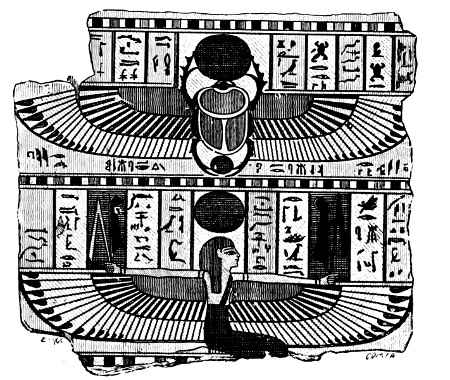
Fig. 130.—Painting on Mummy-Case. (P. & C.)
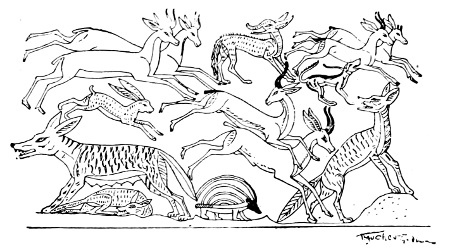
Fig. 131.—Hunting in the Desert. (M.)
97Many chimerical animals or monsters were used in
Egyptian decoration, as sphinxes, or imaginary animals
of the desert, which were really fanciful creations of the
artist’s pencil (Figs. 134, 135, 136, 137).
Their representations of lions always have an expression
of dignity, though more mild in aspect than the Assyrian
lion in art (Fig. 138).
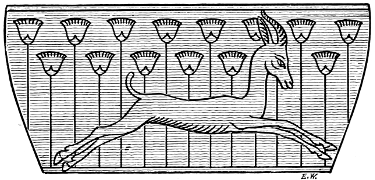
Fig. 132.—Antelope and Papyrus. (P. & C.)
Pottery, glass, and earthenware were manufactured in
Egypt from the earliest times. The country was well
supplied with good potter’s clay; bricks were made and
dried in the sun, not burned, and were used very much in
building. The common pottery was unglazed, and their
decorated pottery was in glazed earthenware, but not so
highly decorated as many other objects of industrial art.
Fig. 139 is a common pitcher of fairly good form, in red
earth. The decoration on the enamelled earthenware dish
(Fig. 140) is composed of bouquets of lotus flowers; and
that on the larger basin or bowl is a design of lotus and
mystic signs (Fig. 141). The three objects are in the
British Museum.
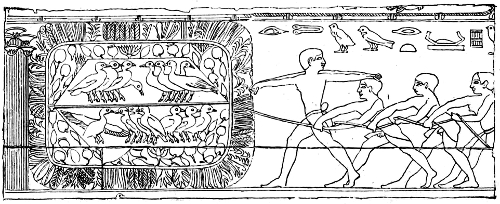
Fig. 133.—Netting Birds; from a Tomb. (P. & C.)
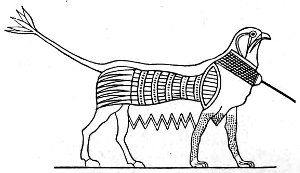
Fig. 134.—Quadruped with Head of a Bird. (P. & C.)
Rosettes and plaques have been found enamelled in
colours, and probably used for floor or wall tiles. The
doorway to the stepped pyramid at Sakkarah is decorated
with rows of convex-shaped rectangular plaques of
98enamelled earthenware of a greenish-blue glaze. Some
are black in colour.

Fig. 135.—Sphinx or Man-Headed Lion, in Black Granite, from Tanis. (P. & C.)
The Egyptians were particularly skilful in glass making,
but they never produced quite a clear glass; it was always
slightly opaque, but generally bright and rich in colour.
Vases, cups, pateræ, statuettes, necklaces, goblets, bracelets,
and, above all, enormous quantities of beads, which
100they used to make a network of to cover their dead. Great
quantities of glass objects were exported in trade with the
Phœnicians.
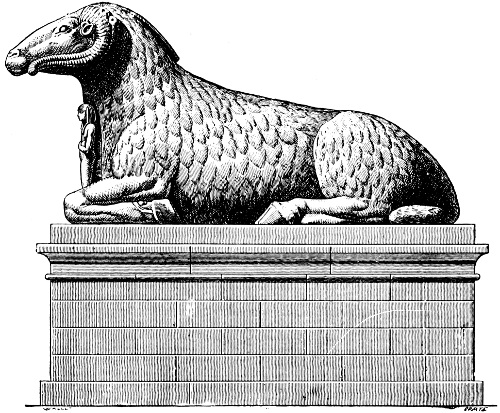
Fig. 136.—Ram, or Kriosphinx, from Karnak. (P. & C.)
The Venetians during the Middle Ages imported soda
in large quantities from Alexandria, for purposes of glass
making, the soda of Egypt being famed for this purpose,
as it was prepared from the many marsh-loving plants that
grew luxuriantly in the Delta.
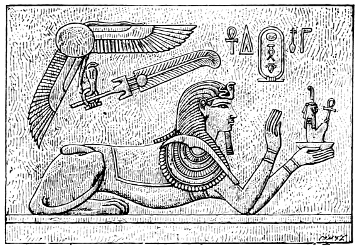
Fig. 137.—Sphinx with Human Hands; Bas-Relief from Prisse. (P. & C.)

Fig. 138.—Lion from a Theban Bas-Relief. (P. & C.)

Fig. 139.—Pitcher of Red Earth, British Museum. (P. & C.)
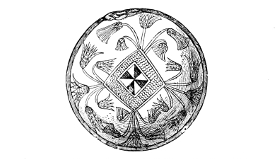
Fig. 140.—Enamelled Earthenware Dish, British Museum. (P. & C.)
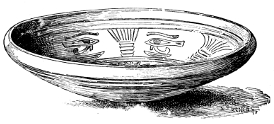
Fig. 141.—Enamelled Earthenware Bowl, British Museum. (P. & C.)
101Gold had always been more plentiful than silver in
ancient Egypt. It was found in the hills of Ethiopia, but
silver had to be imported from Asia. This accounts for
the great quantities of gold objects and ornaments that
have been found in the tombs, and the scarcity of silver
ornaments. The Egyptian goldsmiths made all kinds of
vessels and personal jewellery in gold, set with lapis lazuli
and other precious stones. We shall have to be content
with giving, as examples of this art, the famous pectoral
103of Kha-em-uas, son of Rameses II. (Fig. 142), and the
golden hawk (Fig. 143).

Fig. 142.—Pectoral; Actual Size. (P. & C.)
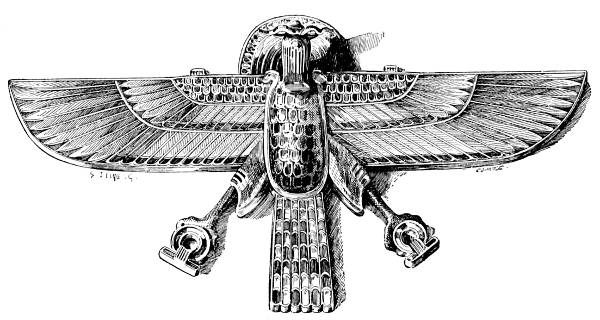
Fig. 143.—Golden Hawk; Actual Size. (P. & C.)
The former is a splendid and unique specimen of a
pectoral, or breast ornament for the dead. These pectorals
have been found in great numbers, made of wood, metal,
and earthenware. The general shape is that of a naos, or
104little temple. The Kha-em-uas pectoral is made of gold
inlaid with lapis lazuli, and is thus described by M. Pierret:
“Jewel in the form of a naos, in which a vulture and an
uræus are placed side by side; above them floats a hawk
106with extended wings, in his claws are seals, emblems of
eternity. Under the frieze of the naos an oval, with the
prenomen of Rameses II., is introduced. Two tet (or dad,
symbol of stability) are placed in the lower angles of the
frame.” The golden hawk is a similar kind of ornament,
with crescent wings and seals in its claws, emblems of
reproduction and eternity. The workmanship in these
articles looks like that of cloisonné enamels, but they are
not enamels. The thin ribs of gold that surround the
lapis lazuli stones in the pectoral and hawk are cloisons,
but the stones are cut to fit into the spaces accurately, and
are therefore inlaid, while in the true enamels the enamel
107is put in the cells and fused to the metal by fire afterwards.
Enamelling as known to the Chinese was not practised in
Egypt.
As ivory could be obtained from Ethiopia in great quantities,
it was natural that the Egyptians would make good
use of it. It was a favourite material with the sculptors,
and many fine examples of ivory carvings and incised
work have been found in the tombs. The incised outlines
on the ivory were usually filled in with black (Figs. 144
and 145).
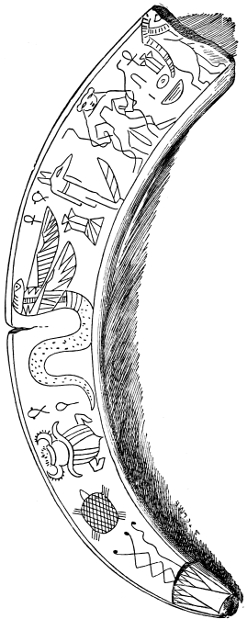
Fig. 144.—Fragment of an Ivory Castanet, Louvre.

Fig. 145.—Ivory Plaque; Late Work. (P. & C.)
Gold, silver, ivory, and ebony were worked in usually by
the same Egyptian artist, as we learn from an inscription
on a stele of Iritesen, an Egyptian sculptor, thus translated
108by Maspero: “Ah! there is no one excels at this work
except myself, and the eldest of my legitimate sons. God
decided that he should excel, and I have seen the perfection
of his handiwork as an artist, as the chief of those
who work in precious stones, in gold, silver, ivory, and
ebony.”
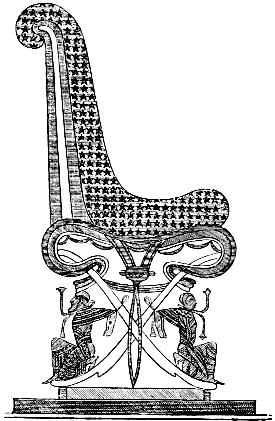
Fig. 146.—Egyptian Chair. (P. & C.)
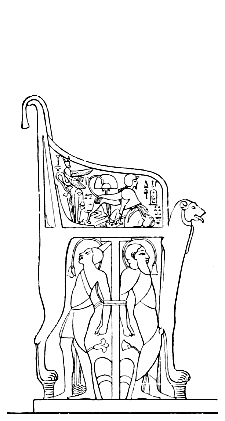
Fig. 147.—Chair or Throne. (P. & C.)

Fig. 148.—The Carpenters Making Chairs. (M.)

Fig. 149.—Coffer in Wood. (P. & C.)
Judging from the small remains left to us, the furniture
and woodwork of the Egyptians must have been of an
excellent description. We have evidence also of this in
110the wall paintings and bas-reliefs that give representations
of tables, chairs, and couches. Some of the chairs or
thrones are of special beauty (Figs. 146 and 147). A
carpenter’s shop showing the workmen making chairs is
seen at Fig. 148, and a coffer (Fig. 149). The feet of chairs
and thrones were usually imitated from those of animals.

Figs. 150-51.—Perfume Spoons, Louvre. (P. & C.)
In wood-carving nothing could be daintier than the
perfume spoons with figures and water plants decoratively
treated (Figs. 150, 151).
111
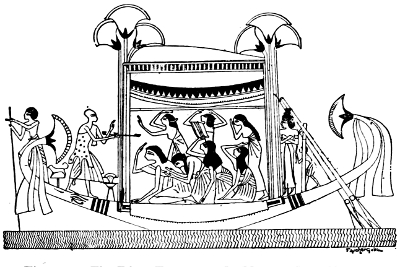
Fig. 152.—An Egyptian Ship, Sailing and Rowing. (M.)
The Egyptian ships were singularly beautiful in their
outlines, with their prows and sterns ending usually in a
metal stalk and carved lotus flower or ram’s head (Figs.
152, 153). The “bari,” or sacred boat which transported
the dead, decorated at each end with the carved metal
lotus, and pavilion or chapel in the centre, with its freight
of the mummy and the mourners (Fig. 152), is represented
as it sails off towards Abydos, the city of the dead, to the
west of Thebes, and the crowds of friends on the banks of
the river will salute the dead, saying: “In peace, in peace
towards Abydos! Descend in peace towards Abydos,
towards the Western Sea!”
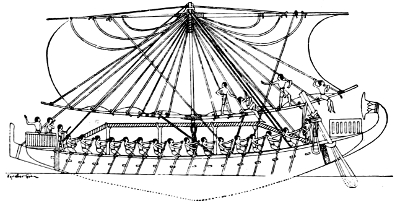
Fig. 153.—The River Transport of a Mummy from Maspero.
112
CHAPTER VIII.
CHALDEAN AND ASSYRIAN ART.
The Chaldeans or Babylonians and the Assyrians came
from one great stock, the Assyrians being mostly colonists
from Babylonia. The original inhabitants of Chaldea
spoke a Semitic dialect. At an early date Eastern
Chaldea was invaded by the Sumerians or Accadians, a
Turanian race which is supposed to have come from the
plateau of Central Asia. The two languages were used
side by side, the Semitic as the common tongue, and the
Accadian as a literary language. The earliest known
king of Chaldea was named Eannadu (B.C. 4500). The
Chaldeans advanced slowly along the Tigris and pushed
their kingdom towards Assyria in the north, where they
built the cities of Ashur (Kal’at Sherkât), Calah (Nimroud),
and Ninua (Nineveh).
The northern portion of the Chaldeo-Assyrian empire
asserted its independence about 1700 B.C., and Assyria
became a separate kingdom. From B.C. 1275, when
Tukulti-Adar I., the Assyrian king, conquered Babylonia,
down to the destruction of Nineveh, B.C. 609, the Chaldean
kingdom took a place of secondary importance, while
Assyria became the greatest power of Western Asia.
Tiglath-Pileser I. (B.C. 1100), and Ashur-nasir-pal (B.C.
885), were amongst the greatest kings of Assyria. The
latter was a great builder. He built the great palace
at Calah (Nimroud), the place to which he removed
his seat of government from Ashur. Assyrian art reached
a high state of development in his reign. His son and
113successor, Shalmaneser II. (B.C. 860-825) was no less
powerful; he extended his kingdom by wars from the
Persian Gulf to the Armenian mountains, and from Media
to the Mediterranean. Jehu, King of Israel, sent him
tribute. After his death Assyria declined and shrank
within its borders, but under Tiglath-Pileser III. regained
its lost ground again (B.C. 745). Sargon, the “Son of no
one” (B.C. 722-705), usurps the throne, makes great wars,
is the first King of Assyria that comes in contact with the
Egyptians. He built the great palace at Khorsabad,
which in late years has been excavated. Sennacherib, his
son, succeeded him, whose wars with Hezekiah, King
of Judah, are recorded in the Bible in the Book of Kings.
He built a great palace at Nineveh, many of the wall
slabs of which are now in the British Museum.
The death of the succeeding monarch, Esarhaddon, took
place before he had completed his great palace at Calah
(Nimroud). Another palace supposed to be his has lately
been excavated at Nineveh. It lies buried under the mound
of Nebi Yunus. The Assyrian kings were great builders
of palaces. Each one, it appears, thought it his duty
either to add a large portion to a palace of his predecessor,
or to build a new one for himself. Ashur-bani-pal, who
reigned for forty-two years (B.C. 668-626), was one of the
most powerful and most cruel of all the Assyrian
monarchs. His victory over the Elamites is depicted
on the sculptured slabs that enrich the Ninevite gallery of
the British Museum. At his death the Assyrian power
was broken up, partly by the Scythian hordes that swept
over that part of Asia, and partly by the Medes. Nineveh
was besieged by Cyaxares of Media, and by Nabopolassar,
an Assyrian general who held command in Babylonia. It
was at length captured and destroyed (B.C. 609). The
whole empire was then divided between the Medes and the
Babylonians. The new Babylonian empire lasted seventy
years, and in the reign of its last king, Nabonidus, when
under the command of Belshazzar, his son, Babylon was
114captured by Cyrus of Persia (B.C. 539). From this time
until its subjugation by Alexander the Great Babylon was
under the Persians.

Fig. 154.—A Winged Bull, Assyria. (M)
The religion of the Chaldeo-Assyrian nation was the
worship of the sun, moon, stars, and the various powers
of nature. Their chief gods were Shamash, the sun; Sin,
the moon; Marduk, a sun-god, the carrier of prayers from
earth to heaven; Anum, the sky god; Bel, the god of the
earth; and Ea, the god of great knowledge: the last three
were the Trinity. Other gods were Dagon, the fish-god;
Ishtar, their Venus; Nabu, their Mercury and scribe of the
gods; Rammânu, the god of wind and thunder; and Negral,
the god of war and hunting.
The Assyrian and Babylonian people have a proverbial
name for being a warlike and cruel race, in opposition to
their contemporaries, the more peaceful and gentle Egyptians.
115At the same time they have the reputation of
being highly skilled in arts and sciences.
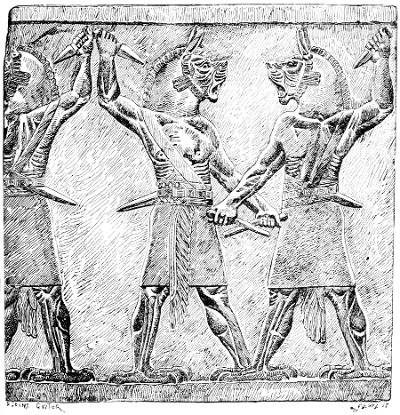
Fig. 155.—Demons, from the Palace of Assurbanipal, British Museum. (P. & C.)
The greatness of the Chaldeans in astronomy, in
astrology, and as wise men generally, is too well known to
be repeated. Their skill in the arts of building, sculpture,
116in the use of metals, in pottery, tiles, gem cutting,
painting, embroidery and weaving, excites our wonder
and admiration.
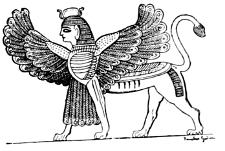
Fig. 156.—A Griffon in the Egyptian Style. (M.)
The art of the Assyrians is intensely earnest and full of
realism, vigorous in the highest degree, and true art of
its kind. It is the art of a people who were brave and
powerful, and of princes that were despotic and stern.
The keynote of their art was force, whether displayed in
its physical and realistic aspects, in the sculptural representations
of ferocious animals, as their lions and dogs,
or embodied in their mysterious and wonderful creations
of human-headed bulls, and
other monsters and demons
(Figs. 154, 155), or in the
haughty self-consciousness of
strength and power, with
which their sculptors sought
to invest the representations
of the monarchs going forth
to battle or to the lion hunt
(Fig. 163); everywhere, in the
higher aspects of Assyrian art, physical force, or personal
force of will, is the culminating point of expression aimed
at in all their efforts.
The sculptured lion of the Egyptians is couchant, half
slumbering; the Assyrian lion is rampant and roaring for
his prey. The simile may be used to illustrate the characteristic
difference of the Art of both countries. The
Assyrian made his art minister to his worldly uses and
delights, the Egyptian lavished his on the tomb and for the
hereafter.
The Assyrian religion and the Chaldean magicians’ and
astrologers’ exposition of its mysteries, doubtless gave the
subject-matter for the creation of those strange combinations
of chimeras, monsters, and bi-form deities that are
so common in Assyrian art.
The griffons and other curious hybrid creatures of the
117Middle Ages, and those that adorn the Gothic buildings of
our own days, can be traced to their birthplace in Assyrian
art.
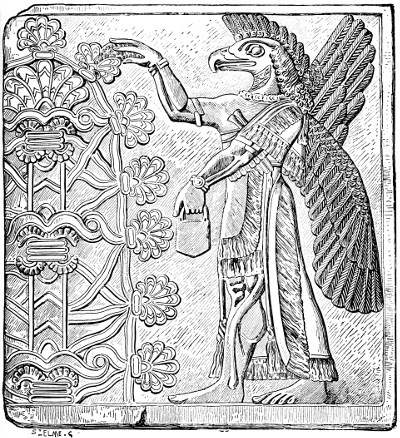
Fig. 157—Eagle-headed Divinity from Nimroud, with the Sacred Tree. (P. & C.)

Fig. 158.—Figure of a Goddess in Act of Adoration, British Museum. (P. & C.)
The great god of the Assyrians was named Assur, the
118all-powerful god of battles. In his name all kinds of
cruelty and torture were practised on heretics and apostates,
and in his name, and to extend his kingdom of Assyria,
the Ninevite kings found their excuses to make war with
nations far and near. He seems to have been a later
creation of the Assyrian gods, but became supreme as
119Nineveh rose in power. He was supposed to have descended
from Sin, the moon-god. The winged-globe,
with the god in the centre holding the bow and arrow,
or thunder-bolt (Fig. 159), is by some thought to be a
representation of Assur. A similar figure is seen at the
top of the Assyrian standard, as the “Director of Armies”
(Fig. 161). This figure in the centre of the ring or solar
disk, who is evidently divine, by reason of his feathered
120lower garment, and his wings that raise him in mid-air,
above all humanity, is quite likely to be the original type
of the later Persian supreme god, Athurâ-Mazda (see
Fig. 243), and the emblematic symbol of his divinity is
quite likely to have been designed and adapted from the
winged disk or “globe” of the Egyptians.

Fig. 159—The Winged Globe with the Figure of a God. (P. & C.)
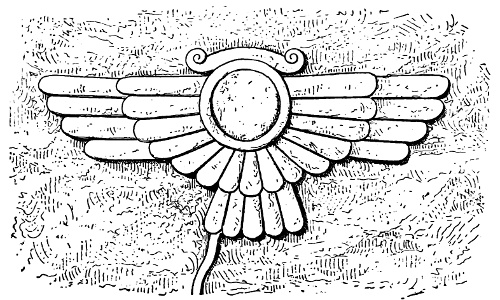
Fig. 160.—The Winged Globe; from Layard. (P. & C.)
The winged globe (Fig. 160) of the Assyrians is an imitation
of that of Egypt; this emblem having found its
way into Assyria on many carvings in ivory and on
articles in bronze, carried hither by the trading Phœnicians
from Egypt, and the emblem in question was, according to
Perrot, appropriated by the Assyrians.
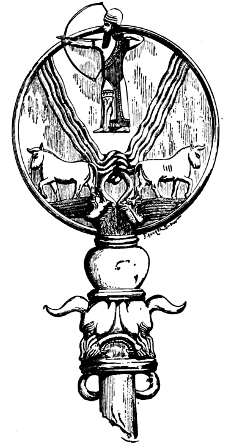
Fig. 161.—The Assyrian Standard. (P. & C.)
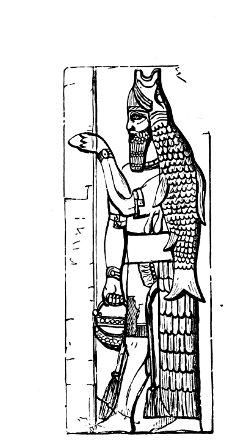
Fig. 162.—Dagon, the Fish-God. (P. & C.)
122In their ornament and decoration they were more free
and natural than the Egyptians, and the execution was
careful and refined, as witnessed by their bronze bowls,
gem-engraving, and the patterns on the enamelled bricks.
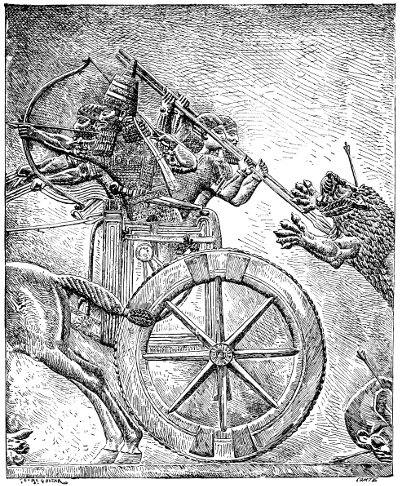
Fig. 163.—Assurbanipal Attacked by Lions, British Museum. (P. & C.)
The bronze gates from Balâwât in the British Museum
are examples of highly skilful repoussé work. Their
palaces must have presented a gorgeous and glittering
appearance in their rich colouring and enamelled brilliancy.
Although not a single specimen of Assyrian weaving has
been discovered, we have abundant and sufficient evidence
from the sculptured patterns of textiles and embroideries
on the kings’ robes and wall decorations that both weaving
and embroidery must have been one of their most glorious
arts.
The Asiatic love of colour would lead us to suppose that
these embroideries were excessively rich in colour (Figs.
162A, 163A, 164, 165) as they were in design.
The details of this embroidery design (Fig. 162A) are
well drawn, and the design is full of rich variety without
heaviness or too much crowding. The king is seen twice
represented in the circle doing homage to the sacred tree
and to the winged disk; and in other places he is between
two genii or deities; combats of lions and bulls, palmate
borders, fir-cones, and spirals, with bands that divide the
work in varied spaces, complete these rich designs in
embroidery, which are among the very finest efforts of
Assyrian decorative art.
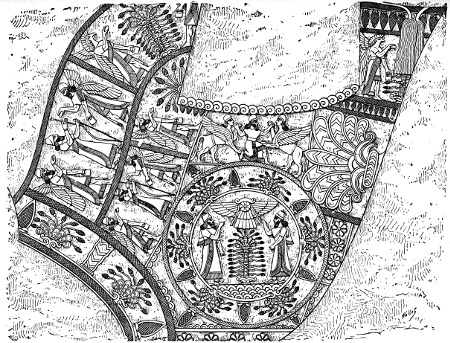
Fig. 162A.—Embroidery upon a Royal Mantle; from Layard. (P. & C.)
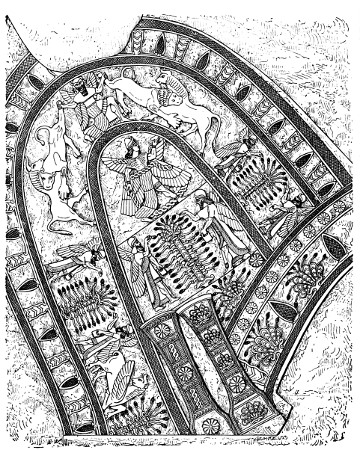
Fig. 163A.—Embroidery on the upper part of a Royal Mantle; from Layard. (P. & C.)
Details of embroidery patterns are shown at Figs. 164,
165.
The sills or thresholds of the doors of the palaces were
sometimes sculptured in low relief on large slabs of
alabaster stone. The design is evidently copied from an
embroidered carpet; perhaps the central part of the one
given (Fig. 166) is a copy from a fabric woven in the loom,
and the border, enlarged at Fig. 167, would have its
original in embroidery.

Fig. 164.—Detail of Embroidery; from Layard. (P. & C.)
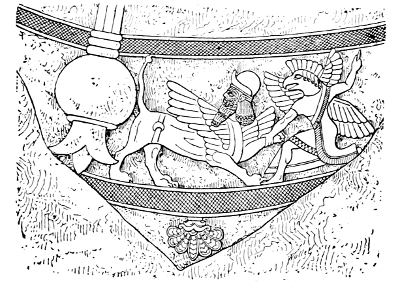
Fig. 165.—Detail of Embroidery; from Layard. (P. & C.)
The figure of the plan and elevation of part of a Chaldean
124façade in enamelled bricks, from Warka, is decorated
with patterns that, no doubt, had their origin in weaving
and matting (Fig. 168). The surface of this façade is
composed of terra-cotta cones, with their bases turned outwards.
These bases were previously dipped in enamelled
colours before they were inserted into the clay cement;
so they form a kind of terra-cotta mosaic work (Loftus).

Fig. 166.—Sill of a Door from Khorsabad: Length, 40 ins. (P. & C.)
The land of Chaldea was devoid of stone for building
125purposes, but extremely rich in immense banks of clay,
which was used for brick making from the earliest times
in Chaldea. The Chaldean brick is rather more than one
English foot square, and about four inches in thickness;
of a dark red colour to light yellow. Nearly all of
them have an inscription with the name of the king, &c.
(Fig. 169).
126

Fig. 167.—Fragment of Border of Fig. 166; from a Threshold of Khorsabad. (P. & C.)
The brick from Erech, or ancient Warka, gives a good
idea of one of the oldest forms of Chaldean writing known
(Fig. 170). It consists of an abridgment of the representation
of natural objects, as all alphabets in their
original state were merely pictures or pictographs. This
inscription shows the stage of conventional signs or
ideographic writing before it underwent the change
into the cuneiform, or wedge-shaped writing of the
Assyrians.

Fig. 168.—Plan and Elevation of Part of a Façade at Warka; from Loftus. (P. & C.)
Some of the bricks were made wedge-shaped, for use in
the building of arches and vaults. The common bricks
were sometimes used in the crude state, or unburnt, and
burnt. Enamelled bricks were greatly used in Chaldea,
127but the clay of which they were made was softer and more
friable. This was used purposely, so that the enamel
would sink deeper into the soft material, and thereby
make a more lasting surface protection.
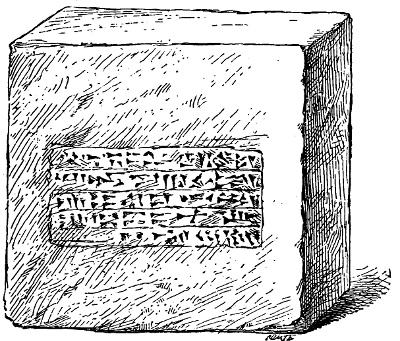
Fig. 169.—Babylonian Brick, 16 ins. square, 4 ins. thick. (P. & C.)
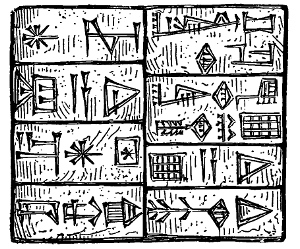
Fig. 170.—Brick from Erech. (P. & C.)
Assyria copied most of her art and sciences from her
older sister in civilisation, and had the advantage over
Chaldea in a good supply of building stone, that formed
the substructural bed for the clay deposits. This was a
128sulphate of chalk known as alabaster, grey in colour, and
easy to work. The great wall slabs used for the bas-reliefs
and the winged bulls and other statuary, were carved
out of this material; but the Assyrians used bricks for the
main structure of their buildings, like the Chaldeans.
Timber was scarce in Assyria, but was used very much
129in the palaces. It was brought from the mountains of
Upper Mesopotamia, on the left bank of the Tigris, and,
later, cedar and other woods were transported from the
forests of Lebanon for the beams of the palaces and
temples. All kinds of metals, burnished and unburnished,
were used as decorative accessories, especially by the
Chaldeans.
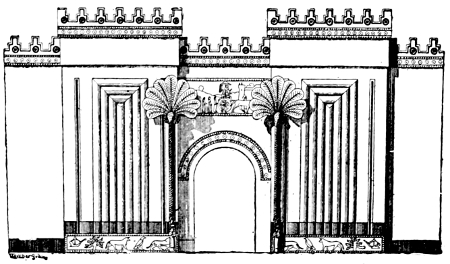
Fig. 171.—One of the Gates of the Harumat, Dur-Sarginu. (M.)
The historians’ descriptions, the foundations that have
been excavated, and the sculptured buildings on the bas-reliefs,
are the materials, together with well-preserved
fragments of architecture, which archæologists and architects
have used to enable them to restore some of the
wonderful temples and palaces of ancient Assyria (Fig.
172).
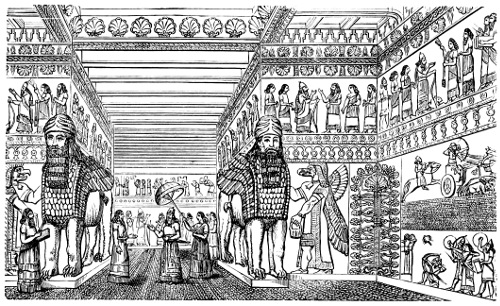
Fig. 172.—Interior of a Temple, after Layard’s Restoration.
The bird’s-eye view of the palace of Dur-Sarginu will
give a good idea of the typical Assyrian palaces (Fig. 174),
and the triumphal gate with its man-headed winged bulls
at the base and sides (Fig. 173), and also the other gate at
Fig. 172, both with their crenallated battlements, serve to
show the imposing character of these edifices. It will be
noticed from the bird’s-eye view and the gateways that
the general character of Assyrian architecture was rectangular
130in the highest degree. The arch and vaulted structures
were known to the Assyrians, who used them to great
advantage (Figs. 175 and 250), and much more so than
the Egyptians, although the latter people occasionally
employed them.
131
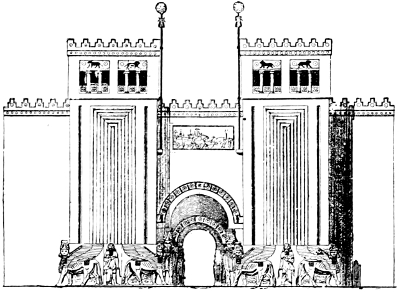
Fig. 173.—Triumphal Gate at the entrance of the Palace. (M.)
The Chaldeans, as would naturally be expected, used
the arch construction very much in their brick buildings,
as it would be the only means of carrying roofs and upper
floors, where stone and timber could not easily be obtained
(Fig. 175).
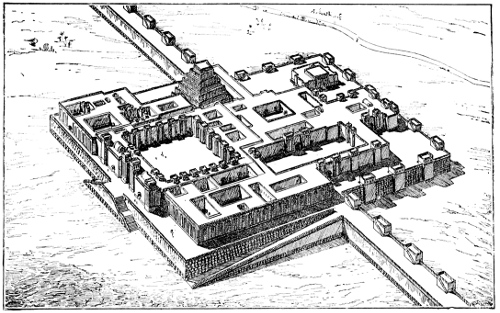
Fig. 174.—The Royal Palace of Dur-Sarginu (Sargon’s Palace); restored by Chipiez. (M.)
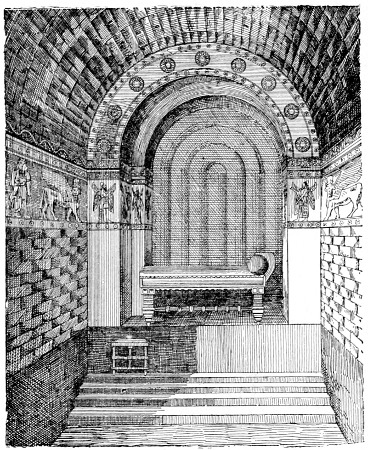
Fig. 175.—A Bedroom in the Harem at Dur-Sarginu (Sargon’s Palace). (M.)
The use of the column in Chaldea is proved by the bas-reliefs
before it developed itself in Assyria; but in either
country it was not an important feature in the architecture,
being mostly used for awnings supporting light tents
or tabernacles; sometimes, indeed, used in a disengaged
way, as proved by the views of small temples on the bas-reliefs
(Figs. 176, 177, 178). The use of the column was
not in accord with the principles of their architecture, and
was only to be found in small porches, or in an engaged
way against outer walls and piers (Fig. 179). The only
capital found in a fragment, and restored by Place, is
shown at Fig. 181, and two bases (Figs. 180 and 182).
From these remains it is assumed that the shaft was
smooth and cylindrical.
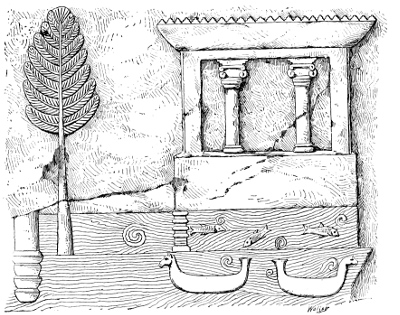
Fig. 176.—Temple on the bank of a river, Khorsabad, from Batta. (P. & C.)
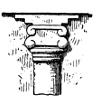
Fig. 177.—Capital of Temple at Fig. 176. (P. & C.)
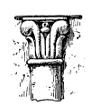
Fig. 178.—Capital. (P. & C.)
An incipient form of the Ionic volute is seen at Fig. 177
132in the capital of the small columns to the little temple
(Fig. 176).
The kings of Assyria had in their palaces a great deal
of luxurious furniture. The couches, chairs, and tables
134were made of wood, with bronze fittings, and decorated
with ivory, gold, and lapis lazuli. The bas-relief in the
British Museum representing Assurbanipal and his queen
at a banquet (Figs. 183 and 184) will give a good idea of
the extreme richness in design and decoration of these
sumptuous articles of furniture (Fig. 185).
Bronze sockets (Fig. 186) and all kinds of fragments
in metal and ivory fittings, and decorations corresponding
to the designs on the bas-reliefs, all indicate that
the anathemas of the prophet Nahum (Nahum ii. 9) gave
135a good picture of Nineveh’s richness in the sumptuary arts.
“Take ye the spoil of silver,” he exclaims, “take the
spoil of gold; for there is nonenone end of the store and glory
out of all the pleasant furniture.”
137
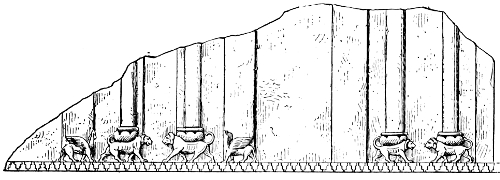
Fig. 179.—Fragment of an Assyrian Building from a bas-relief, B.M. (P. & C.)
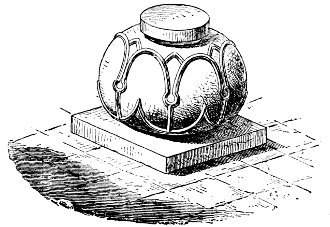
Fig. 180.—Ornamented Base of Limestone. (P. & C.)
Animals have been represented with such faithfulness,
especially in their most vigorous and ferocious aspects, by
the sculptors of Assyria, that in any notice of Assyrian art
they must have a place. Lions especially were rendered
in all their ferociousness, and were the favourite game for
kingly sport (Figs. 187, 188, 189). Lions were kept in cages,
140and let out when the monarch decided to have a day’s
hunting (Fig. 187). Dogs were specially trained for lion-hunting
(Fig. 190).

Fig. 181.—Assyrian Capital compiled from Place. (P. & C.)
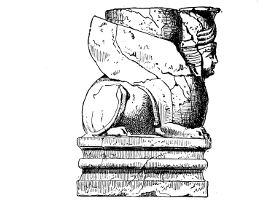
Fig. 182.—Winged Sphinx carrying Base of Capital. Layard. (P. & C.)

Fig. 183.—Assurbanipal and his Queen feasting in the gardens of the Harem after the battle. The head of Teuman, the Elamite King, hangs on the left on the sacred tree. (M.)
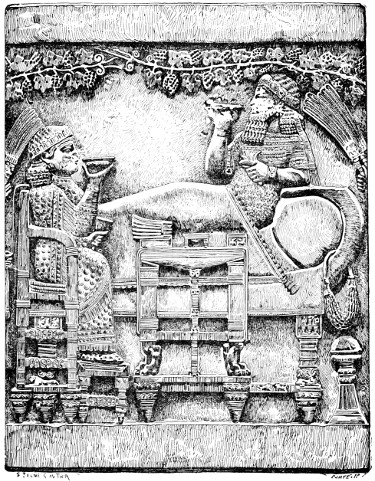
Fig. 184.—The Feast of Assurbanipal. (B.M.) (P. & C.) Enlarged detail of Fig. 183, showing the Assyrian Furniture. Drawn by Gautier.
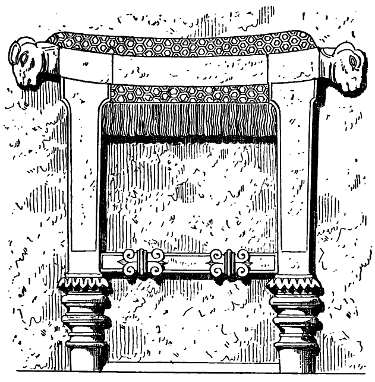
Fig. 185.—Assyrian Stool; from Layard. (P. & C.)
We add two illustrations of the sphinx variety of fantastic
animals; one is the most remarkable creation of all
the fantastic animals of Assyria (Fig. 192). It has the
horns of a ram, a bull’s head, a bird’s beak; body, tail, and
fore-legs of a lion; and the hind-legs and wings of the
eagle. The Andro-Sphinx (Fig. 193) from the robe of
Assurbanipal foreshadows the fabulous centaurs of Grecian
art. Other bi-form creations have been found in Assyrian
art bearing a close resemblance to the Greek centaur.
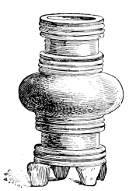
Fig. 186.—Bronze Foot of a Piece of Furniture.

Fig. 187.—Lion coming out of his Cage. (B.M.) (P. & C.)
The purely ornamental forms from the vegetable world
that have been used in Assyrian and Chaldean art are
limited in number. The daisy or rosette is the commonest
141(Figs. 194 and 198). In the illustration of the “Lion and
Lioness in a Park” (Fig. 188) the daisy is beautifully
though conventionally rendered; the large leaves at the
bottom are typically the common daisy leaves; the vine is
no less well executed, and the lioness on the same bas-relief
is treated with consummate skill. The vine is also
143seen to great advantage in its conventional treatment at
Figs. 184 and 188.
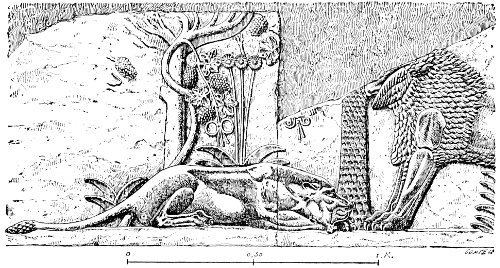
Fig. 188.—Lion and Lioness in a Park. (B.M.) (P. & C.)

Fig. 189.—Combat between a Lion and a Unicorn; from Layard. (P. & C.)
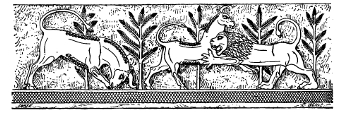
Fig. 190.—Dog used for Lion Hunting. (M.)

Fig. 191.—Chariot Horses; from Layard. (P. & C.)
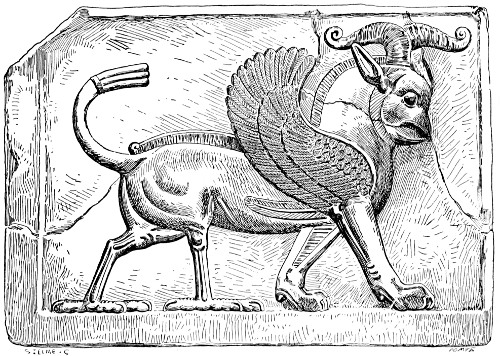
Fig. 192.—Fantastic Animal, drawn by Gautier. (P. & C.)(P. & C.)
There is an Assyrian ornament called the “knop and
flower” ornament, which occurs in various forms and in
endless profusion in Egyptian, Assyrian, Persian, and
Greek, and even is copied down to Indian and Roman
144ornament. It may be native, or some forms of it at least,
to Assyrian ornament, but is undoubtedly Egyptian in its
earliest source; we have spoken of it before in our notice
of Egyptian ornament as being derived from the lotus
(page 90). It appears on the rich border of the carved
threshold (Fig. 167); the flower there is undoubtedly a
lotus, and the bud or “knop” may be a representation of
a “fir-cone,” or may be meant for the closed lotus-bud.
Another form of the same elements occurs at Fig. 195, in a
beautiful design enclosed in a square, forming one of the
central patterns of a similar sill or threshold, and this form
of it would doubtless also be used for a ceiling decoration
of the palaces. A bouquet of similar flowers is seen at
Fig. 196 of the date of Assurbanipal (885-860 B.C.). It is
very difficult to say whether this bouquet represents the
lotus or not, as, according to the testimony of Layard, the
lotus flower is only to be found on the most recent of
Assyrian monuments dating from the eighth and seventh
centuries B.C., at the time when Assyria had invaded and
occupied the Delta of Egypt. If not the lotus flower, something
very like has been found on monuments in Assyria
much older than these dates.

Fig. 193.—Andro-Sphinx, Robe of Assurbanipal; from Layard. (P. & C.)
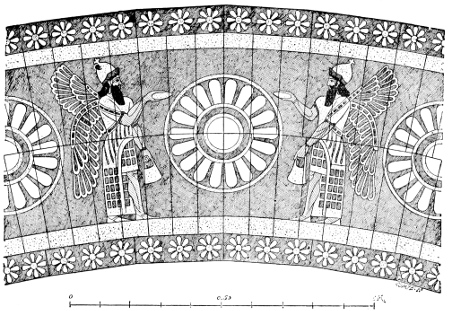
Fig. 194.—Detail from the Enamelled Archivolt, Khorsabad; from Place. (P. & C.)
As the result of some recent scientific examinations into
the origin of pattern, some investigators have decided that
145the “knop and flower” patterns of Assyrian ornament
(Figs. 167, 195, and 198) are but evolutions of tassels, and
knotted fringes of matting and embroideries, just because
they bear a not very clear resemblance to such trimmings
as we see on the tabernacle on the Balâwât gates (Fig.
197), &c. We admit that there is a fancied resemblance in
147many ornamental forms to patterns that have been evolved
from constructed articles, especially from woven and matted
examples, but it is an insult to the intelligence of an artist
to ask him to believe that the beautiful and clearly distinctive
floral bud and palmate borders in Egyptian,
Assyrian, and Greek art have resulted from tyings and
knottings of the fringed ends of mats, when one can clearly
see the daisy—in some cases turned to a disk—the palm,
and, above all, the lotus, almost naturally drawn and
modelled; even the connecting lines of flower and buds,
where scientific connection with the fringed-end idea seems
the strongest in the eyes of the evolutionist, will be found
on examination to be always used in the exact reverse way
148to that which is formed by the constructive joinings of the
knotted fringe. (See Figs. 198 and 167.)
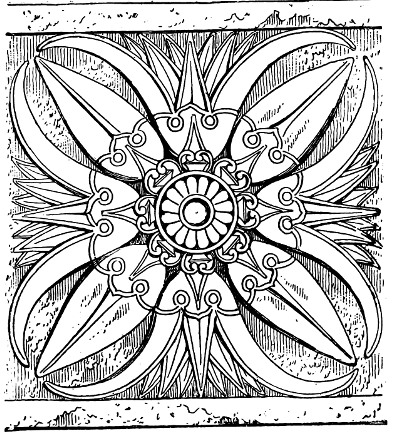
Fig. 195.—Rosette of Lotus Flowers and Buds. (P. & C.)
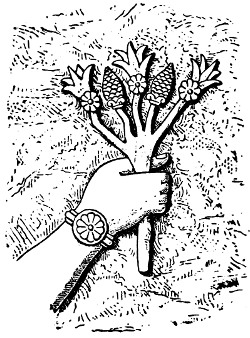
Fig. 196.—Bouquet of Flowers and Buds; from Layard. (P. & C.)
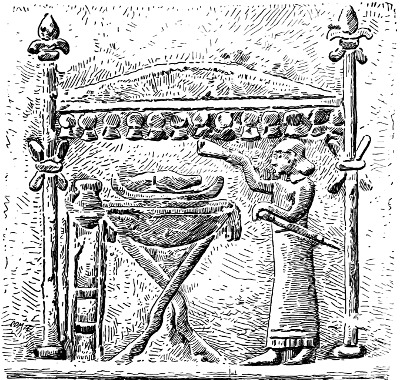
Fig. 197.—Tabernacle from the Balâwât Gates. (B.M.) (P. & C.)
Date, B.C. 859 to 824.]
It will require an amazing quantity of scientific proof to
get rid of the lotus in Egyptian
ornament, and much
also to turn it and the daisy
into tassel knots in Assyrian
ornament, when we have
overwhelming evidence as
to the natural representations
of such floral forms, as
well as the conventional
designs derived from them,
on the very oldest monuments
in both countries.
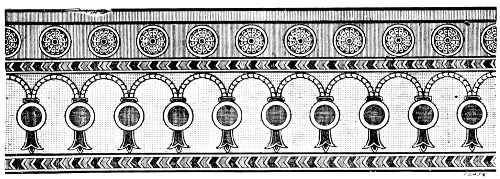
Fig. 198.—Painted Ornament on Plaster; from Layard. (P. & C.)
The “Sacred Tree,” or
“Tree of Life,” is often
represented in Assyrian art,
and under different forms,
but generally with a king
or some divinity on either
side of it, paying homage
(Figs. 157, 162A, 208).
An enlarged portion of it
is seen at Fig. 199.
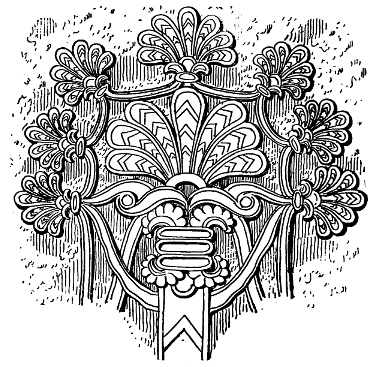
Fig. 199.—Upper Portion of a Tree of Life; from Layard. (P. & C.)
The exact meaning of the
“Sacred Tree” has not yet
been satisfactorily explained,
but, at any rate, it seems
likely enough that it represents
a palm-tree, shown by
the palmate head and by
the conventional markings
on the trunk, no doubt meant for the bark roughening lines.
The surrounding palmates may be meant to represent a leafy
enclosure for the sacred tree in the centre, or the whole
thing may be a conventional picture of a sacred grove.
149Owing to the comparative lateness of the universal use of
the lotus in Assyrian art, we can well imagine that this
flower form was introduced into Assyria by the articles in
bronze, ivory, and other material by the Phœnician traders,
that were both of Egyptian and Phœnician design, as
there was scarcely an article of commerce on which the
150lotus was not represented in those early days of Phœnician
trade (900 to 300 B.C.)

Fig. 200.—Guilloche Ornament on Enamelled Brick. (B.M.) (P. & C.)
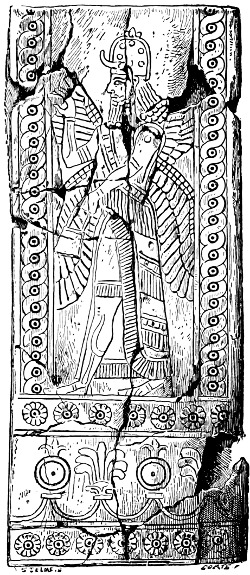
Fig. 201.—Ivory Plaque; Actual Size. Drawn by Gautier. (P. & C.)
Another very characteristic ornament of the Assyrian
decorations is the double-interlacing meander, or guilloche
151(Figs. 200 and 201). It is generally found in combination
with the other ornaments just spoken of, both on tiles and
in ivory engraving. It is sometimes called “cable ornament”
or “snare-work,” from the appearance it has to a
rope or cable twisted around the eyes of posts. It has
been used very much by
the Greeks and Romans.
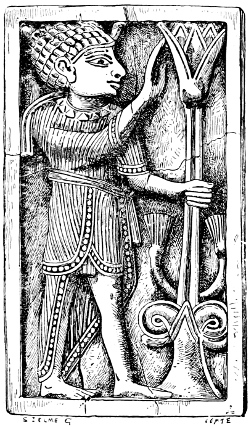
Fig. 202.—Ivory Plaque found at Nimroud. (B.M.) (P. & C.)
The art of ivory carving
and engraving was
practised in Assyria,
judging from some
plaques and carvings
that have been found
that are distinctly Assyrian
in motive and
design (Fig. 201), and
from many elephants’
tusks that have come to
light from the ruins of
the buried palaces; but
it has been clearly established
that the art was
first introduced into
Assyria by the importation
of the Egyptian
plaques and other carvings,
and also by the
imitations of Egyptian
articles made by Phœnician
artists, and probably sold to the Assyrians as the
product of Egypt.
Fig. 202, a small plaque, is quite likely to be one of
these imitations of Egyptian design with the lotus-tree of
life which rests on a support or top of a capital. This form
of lotus capital is found everywhere in Cyprus, and in all
countries where Phœnician trade extended. It is distinctly
Egyptian in origin, and more than likely is the
152origin of the Ionic volute capital of the Greeks. The small
and beautifully carved sphinx (Fig. 203) is one of the
many Egyptian ivories that had found its way to Assyria,
and is immeasurably superior in workmanship to any of
the Assyrian carvings.
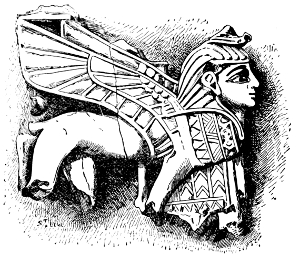
Fig. 203.—Ivory Fragment in British Museum; Actual Size. Drawn by Gautier. (P. & C.)
It may be remarked here that the Assyrian artist excelled
in the flat or engraved treatment of his designs in
nearly every branch of art, but was inferior in workmanship
to the Egyptian in carved work in the round; though
in expressing intense life, virility, and movement, especially
in the representation of animals, he was superior to
the Egyptian artist.
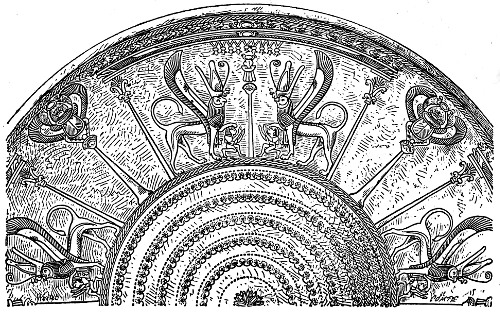
Fig. 204.—Bronze Platter, 9 ins. diameter. (B.M.) Drawn by Wallet. (P. & C.)
There is one important product of Assyrian art that
deserves notice—the exquisite bronze bowls, cups, and
platters, made in repoussé and finished off with the
engraver’s burin (Fig. 204, 205). In these products we
may recognise the renaissance of Assyrian art, based on
the art of the Egyptians. That they must have had their
origin in Assyria no one can doubt, when we think that
153the working in bronze was so well known in Assyria
and Babylonia; for example, we quote the magnificent
Balâwât plates, of repoussé bronze, of Shalmaneser II.
(B.C. 859-824) now in the British Museum; and although
the designs on some of them are distinctly Egyptian (Fig.
204), not one specimen of such bowls or platters has yet
been found in the Valley of the Nile.
154
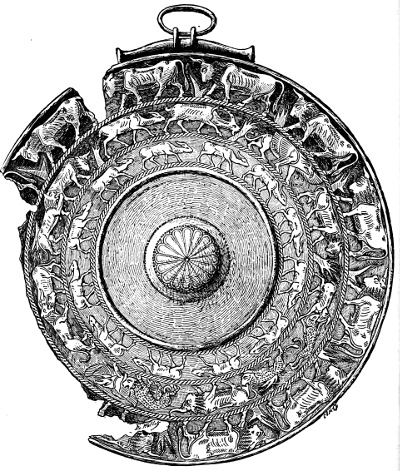
Fig. 205.—Bronze Cup, diameter 11 ins.; from Layard.
It may be reasonably assumed that the Egyptian motives
were copied from ivories or painted vases brought to
155Assyria by the Phœnicians, and that those master workers
in bronze, the Assyrians, copied such designs on their
platters and cups, and afterwards introduced their own
distinctive designs, as may be seen in Fig. 205, a design
which is Assyrian in every detail, with no Egyptian trace.
Designs like the latter disprove the theory that these
bronze bowls and dishes were altogether made in workshops
of Tyre and Byblos, but undoubtedly the Phœnician
artists—who really invented nothing—may have in their
turn copied these designs on their wares, when they found
such handy and portable goods might be easily transported,
and would be sure to find a ready market in other countries
bordering on the Mediterranean, as we shall see when
treating of Phœnician Art. The importance of the design
on such handy and indestructible articles on the art of the
Greeks, Cypriots, and Etruscans, not only from the workmanship
point of view, but from the themes portrayed on
them suggesting ornament, and other subject matter,
perhaps religious motives as well, to the rising civilisation
of the countries named, can hardly be exaggerated.
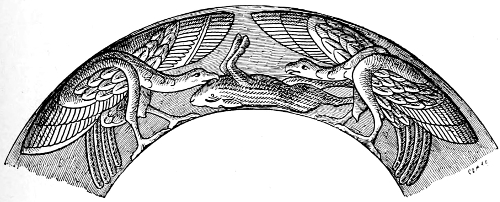
Fig. 206.—Border of a Bronze Cup; from Layard. (P. & C.)
In painting on plaster (Fig. 198) or enamelling on tiles
(Figs. 194 and 200) and bricks, the Babylonians and
Assyrians used very few colours, not more than five or six,
but they used them with great advantage and decorative
156effect, and always in flat tints. Their painted figures
were, as a rule, not intended for any other meaning than
their geometric ornament, and merely used as units in the
ornamental scheme (Fig. 194). The colours were: blue
from the lapis lazuli; yellow, an antimoniate of lead and a
little tin; white, an oxide of tin; black, an animal charcoal;
red, an oxide of iron; and another blue from the
oxide of copper completes, as near as possible, the range
of their palette.
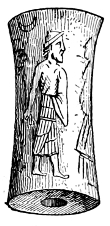
Fig. 207.
Cylinder; from Soldi.
(P. & C.)
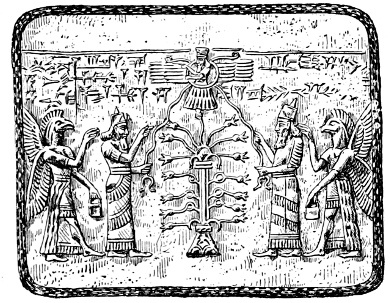
Fig. 208.—Assyrian Cylinder. Worship of Sacred Tree. (B.M.) (P. & C.)
The nearly universal colour of the groundwork was blue,
a deep dark blue from the lapis lazuli. At Khorsabad
M. Place found a mass of powdered blue, over two pounds
in weight, that was found to be made from the lapis lazuli
for the purpose of enamelling. The main portion of the
decoration was yellow, but often white was used with
black outlines, and red sparingly. A green tint was less
common, but was supposed to be obtained from a mixture
of the yellow and copper blue oxide.
Remains of pottery are not very plentiful, and the forms
157have nothing distinctive that calls for special notice. The
vessels, such as vases, cups, and buckets of bronze, are
elegant in form and decoration (Fig. 209).
Jewellery and personal decoration have only been found
in a limited quantity, and not of a very good quality in
design or material: the bas-reliefs furnish our best information
on what existed in these articles.

Fig. 209.—Bronze Bucket; from Layard. (P. & C.)
Gem cutting and cylinder engraving were arts very
much practised in Babylonia and Assyria (Fig. 208). The
cylinders usually were engraved with subjects of a religious
character. The illustration shows one of the best
engraved Assyrian cylinders that has yet been found.
It represents the king and deities at the worship of the
Sacred Tree, and the God Assur. In the hands of the
deities may be seen the bronze buckets shown at Fig 209.
This subject is supposed to be a copy from a bas-relief.
The material of these cylinders was generally of serpentine,
chalcedony, agate, black marble, jasper, &c., and they
were used to impress clay documents with, in a similar
way as in the use of ordinary seals (Fig. 207).
158
CHAPTER IX.
PHŒNICIAN ART.
The origin of the Phœnician people remains in obscurity.
According to Herodotus, we learn that they came as an
Eastern branch of the Canaanitish peoples, of which
race the Greeks were also a part, and who settled at the
foot of Lebanon, on the Syrian sea-coast, between Mounts
Carmel and Casius.
The Phœnician and Hebrew languages resembled each
other very closely, and from this it has been argued that
the Phœnicians belonged to the Semitic race of the
Hebrews. Ancient Phœnicia was a narrow strip of land,
130 miles long by only a few miles in width at its widest
part. The three principal towns in ancient times were
Tyre, Sidon, and Joppa; three others of importance were
Arvad, Gebal or Byblos, and Accho or Acre.
Arvad in the north, was, like Tyre in the south, built
on a rock some little distance from the mainland. Tyre
was for a long time impregnable on its rocky seat, with
a channel of about three-quarters of a mile dividing it
from the coast of the mainland. Owing to its peculiar
position, it could defy all unmaritime nations, and it was
not until Alexander the Great built an isthmus connecting
it with the Phœnician coast that it fell. The inhabitants
of Gebal or Byblos were, according to Rénan,
more Jewish-like than any other Phœnician people.
Sidon was the first town of Phœnicia to rise to importance,
and Tyre afterwards, with greater vigour, rose to
power and greatness; and both, from being originally
159colonies of poor fishermen, became the famous ports
which sent forth ships to all points of the Mediterranean,
and even to the British Isles, carrying all kinds of merchandise
to barter for silver, gold, and tin, as well as for
other raw materials from the barbarians beyond the seas,
and carrying these raw materials back to supply the
artists and artificers of the East. No two cities of the
ancient world did so much for the spread and progress of
human civilisation as the maritime cities of Tyre and
Sidon.
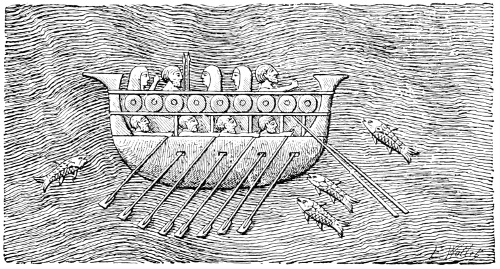
Fig. 210.—Phœnician Merchant Galley; from Layard. (P. & C.)
Like the rest of Phœnicia, Sidon, the first in power,
accepted without resistance the supremacy of Egypt.
This was indeed to her great advantage, for the ships of
Sidon could fly the Egyptian flag in any part of the
Mediterranean or other seas, and so exist secure under
the protection of the mighty monarchs of that great
country. In return for this protection the Phœnicians
carried on a successful trade with Egyptian goods, thus
benefiting themselves, and their masters to even a greater
degree.
The Phœnician fleets were, in fact, at the entire disposal
160of the Egyptians, who possessed, in the early days,
no fleet of their own.
Sidon was sacked and taken by the Philistines about
B.C. 1000 or 900, and from that period Tyre rose in supremacy.
The first Tyrian king known by name was Abibaal,
the contemporary of David; his son was Hiram,
the friend of Solomon.
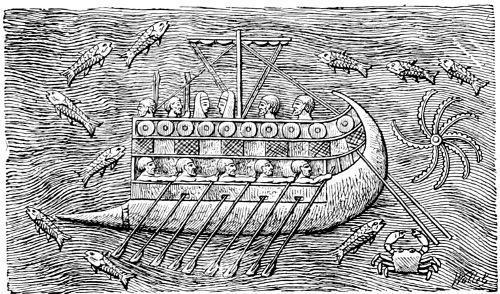
Fig. 211.—Phœnician War Galley; from Layard. (P. & C.)
Afterwards Tyre, with its close intercourse with Egypt,
established colonies on the Delta of the Nile, the most
renowned of which was called the “New City,” Karthadast,
called by the Greeks Carchedon, and by the
Romans Carthage.
This daughter of Tyre rose to great prosperity, but
never forgot her allegiance to the mother city. Their
combined fleets sailed to, and founded, colonies in Sardinia,
Cyprus, the Grecian Archipelago, and to Spain,
doing enormous trade with both East and West. The
Phœnician ships that are known to us from the relief
representations are of two kinds, the round-prowed
galleys, or cargo-carriers (Fig. 210), and the ram-stemmed
vessels, or war galleys (Fig. 211). There is no record that
161has been found of their larger sea-going “merchantmen”
ships.
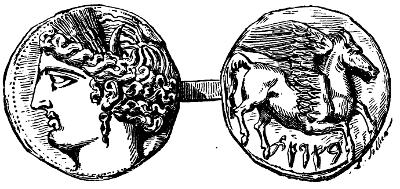
Fig. 212.—Carthaginian Coin, Silver. (P. & C.)
The growing power of the Greeks and Etruscans, and
their improvement in shipbuilding, was a new competition
with the ships of Tyre in the East, and at length forced
the Tyrians to find new markets in the West.

Fig. 213.—Carthaginian Coin, Electrum. (P. & C.)
The staple trade of the Tyrians had now become that of
metals, the chief of which was tin, owing to the great
demand for it in the manufacture of bronze in this
period.
Their ships went as far as the Scilly Isles, to Cornwall,
and to Ireland. Diodorus mentions that the inhabitants
of Great Britain were much softened in their manners by
their intercourse with the “strangers” who came to their
162shores for tin. It is supposed that the strangers alluded
to were the Phœnician Carthaginians.
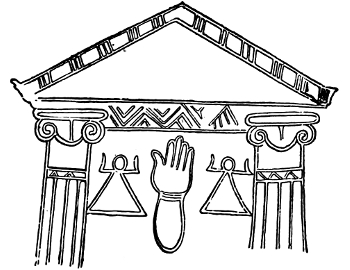
Fig. 214.—Votive Stele, from Carthage, with Sacred Emblems. (P. & C.)

Fig. 215.—Sacred Emblems, from a Carthaginian Votive Stele. (P. & C.)
In the fourth century B.C. the Carthaginians waged a war
against the Sicilian Greeks, and carried off the statues of
gods from their temples, and went so far as to copy their
money the early Phœnician coins being copies of Greek
163ones (Figs. 212, 213). The votive stele (Fig. 214), from
Carthage, shows the Greek Ionic-like columns, with the
“blessing hand,” and a collection of sacred Phœnician
emblems. Greek architects were employed in Carthage
about this time. Phœnician architecture in every case
consisted of borrowed forms from surrounding nations.

Fig. 216.—Coin of Byblos, with Sacred Cone, enlarged. (P. & C.)
The sacred emblems (Fig. 215) are supposed to represent
the cone-shaped stones, betylæ, from Bethel, the
“House of God,” the great worship of the Phœnicians.
The sign at the top is meant for a rude idea of the head
and arms of a god (Tanit, face of Baal?). The figure on
the right is the cone again, with the emblems of the
goddess Astarte (Aphrodite), the lunar signs. The sacred
cone is seen surrounded by the temple court on the coin
of Byblos (Fig. 216).
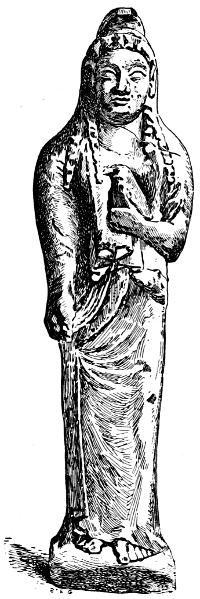
Fig. 217.—Astarte, terra-cotta, height 10½ ins. (P. & C.)
The small statuettes of the Phœnician gods and goddesses
(Fig. 217) were the originals from which the Greeks
developed their sculptured figures in the round.round. Among
164the gods of the Phœnicians were: Baal, the Master, the
Bel of Assyria, which seems
to be a generic title for any
chief divinity of a town or
place, such as Baal Peor, Baal-Sidon,
Baal-Tsour, or the Baal
of Tyre; Tanit, or the face of
Baal, worshipped at Carthage;
Moloch, or Melek. Melkart-Baal-Tsour
was the full name
of the Great God of Tyre,
which means “Melkart,
Master of Tyre.” Baalat was
the title for “mistress,” the
goddess who shared the throne
of Baal. Sidon-Astoret was
the Baalat of Sidon, the goddess
Astarte, the Istar of the
Assyrians, and the Aphrodite
or Venus of the Greeks and
Romans (Fig. 217). She was
a favourite divinity with the
Phœnicians, and more personal
than any of their other divinities.
She was nature itself,
the great goddess of life, presiding
over creation and also
destruction. This Syro-Phœnician
goddess of the Sidonians
was adopted by
Cyprus, Cythera, Paphos, and
Eryx, in Sicily. She is also
supposed to be the Moon-Goddess.
The dove was sacred to
her, and was offered to her in sacrifice; a Phœnician
statuette (Fig. 217) represents her with a dove in her hand.
The Phœnicians had many other minor gods.
165
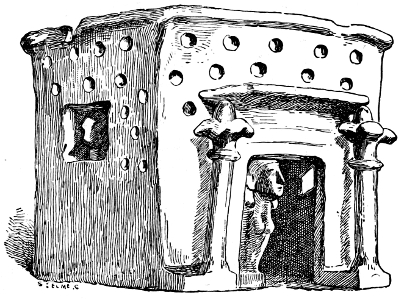
Fig. 218.—Model of a Small Temple, in terra-cotta, Louvre. (P. & C)
A terra-cotta model of a small temple is peculiar in
design (Fig. 218); it was found in Cyprus, and may have
been the model of the shrine sacred to Astarte. As before
mentioned, Phœnician architecture, from the few remains
of it that have been found, consists of borrowed forms from
other nations, and if any development even in the ornamental
forms is noticeable, it can generally be traced to the
rising influence of the Greeks, especially in Cyprus and
Carthage. The tomb at Amrit (Fig. 219) is, on the other
hand, decidedly Assyrian in every detail, and is a happy
example of architectural proportion.
The fragment of an entablature from a temple at
Byblos (Fig. 220) is of a later date, and has for design and
decoration of the moulding the strongly marked features
of Græco-Roman work, with the addition of the Egyptian
winged globe and asps.
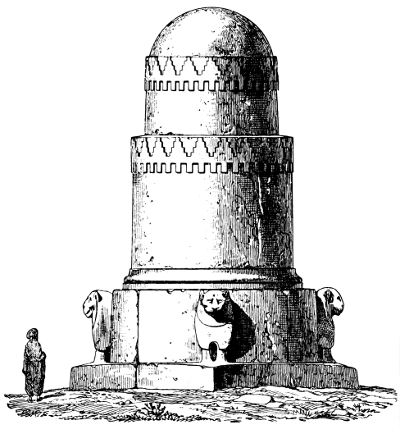
Fig. 219.—Tomb of Amrit, restored from Renan. (P. & C.)
Cyprus was a Phœnician dependency; many vases, and
a great multitude of other objects of art and treasures,
have been brought to light from tombs and from the
166subterranean chambers of former temples, mainly through
the instrumentality of General di Cesnola.

Fig. 220.—Entablature, from a Temple at Byblos. Drawn by Wallet. (P. & C.)]
The series of capitals (Figs. 221 to 224) show strongly
the principle of the Ionic volutes. The first (Fig. 221) is
167the simplest, the next
(Fig. 222) has the triangular
point between
the lower volutes that
we see in so many
lotus forms in Egyptian
work (see Fig. 202), and
has besides the curious
double boat-shaped volutes
above, with other
lotus-buds under the
abacus. Another
capital (Fig. 223) has
all the elements of
the Erectheum Ionic
capital, but arranged
in a totally different
order, and is more Byzantine
than anything
else. The capital found
at Kition, in Cyprus, is
decidedly Ionic Greek,
but in its earlier stage,
just before the period
of the fully developed
Ionic (Fig. 224). It
can hardly be doubted
that the first two of
decidedly Egyptian
elements are derived
from the lotus, and may
certainly be taken as
the forerunners of the
pure Ionic Greek. The
capital from Kition belonged
to a temple of
Astarte, that once stood
on the mound at Kition.
168
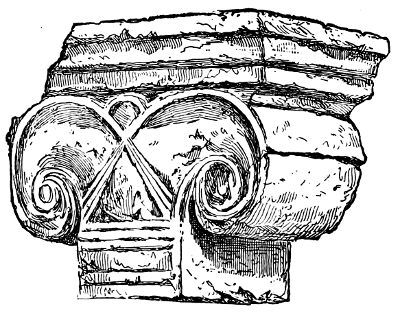
Fig. 221.—Cypriot Capital. (P. & C.)
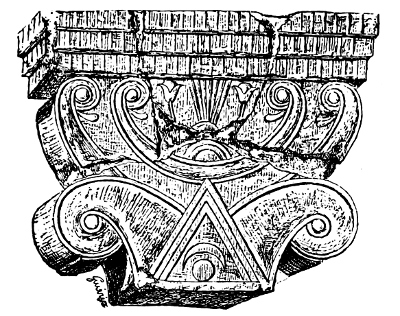
Fig. 222.—Cypriot Capital. (P. & C.)
The capital found at Golgos (Fig. 225) is distinctly an
early form of Greek Doric. If little remains of Phœnician
architecture have been found, on the other hand many
objects of minor art have been brought to light, bearing on
their face the unmistakable stamp of Phœnician workmanship.
169
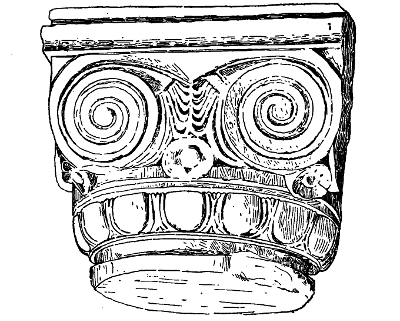
Fig. 223.—Capital at Djezza, limestone. Drawn by Saladin. Height, 26 ins. (P. & C.)
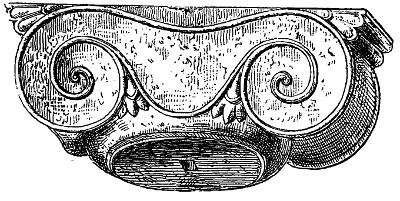
Fig. 224.—Capital from Kition, height 18 ins. Drawn by Saladin. (P. & C.)
Some of the bronze bowls and platters, and cups of
silver, and also carvings in ivory, although generally
composed of Egyptian or Assyrian design, were really the
work of Phœnician artificers. The latter were not slow
in copying the motives of the above-named nations, but
170the workmanship, especially in bronze and silver, was
their own. The Phœnicians were highly skilled in metal
work, and we have proof that they were employed in the
building and decorating of the Temple at Jerusalem. The
bronze and silver bowls and platters were carried to all
countries where the Phœnicians had trading transactions,
and they have been found at Mycenæ, Etruria, Cyprus,
Sardinia, &c. As stated before in our notice of these
objects in Assyrian art, the Assyrians were the first to
make these articles from copies of Egyptian design, and
then producing others with purely Assyrian designs.
The Phœnicians in their turn imitated both, and did a
great trade with them. The silver platter (Fig. 226) was
found, in 1876, in the Necropolis of ancient Præneste, in
Latium, and in the same tomb was found a quantity of
vases, diadems, and jewels, all of Phœnician workmanship.
On this platter a clearly engraved inscription occurs in
Phœnician characters, giving the name of the first owner,
Esmunjair-ben-Asto. The Phœnician inscriptions, and
above all, the want of method or arrangement of themes
or motives on the articles, stamp them to be of Phœnician
origin. The silver platter has more meaning in the use of
the Egyptian motives than some others, but the hieroglyphicshieroglyphics
are not to be relied on as correctly Egyptian.
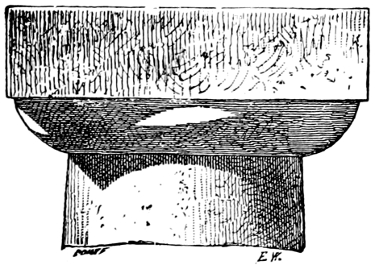
Fig. 225.—Capital from Golgos (Ceccaldi). (P. & C.)
171

Fig. 226.—Phœnician Platter, Silver, diameter 7 ins. Drawn by Wallet. (P. & C.)
The silver-gilt cup or patera from Curium (Fig. 227) is a
fair illustration of this mixture of Egyptian and Assyrian
ideas put together from a multitude of stock-in-trade
subjects or patterns. The centre piece is Assyrian, and
also the cable ornament. The inner row of animals are
Assyrian in feeling, but an Egyptian sphinx is introduced
172amongst them; but the outer border is the most curious of
all, as it contains six or seven distinct Egyptian scenes,
each divided by the tree of life or palmates, taken at haphazard
from designs of bas-reliefs. The Phœnician goldsmith,
evidently not understanding the story of these
Egyptian mysteries, used them merely as decorative units.
173The workmanship is admirable; first the work is beaten up
in repoussé and then chased afterwards, and may be
described as a mixture of the two methods.
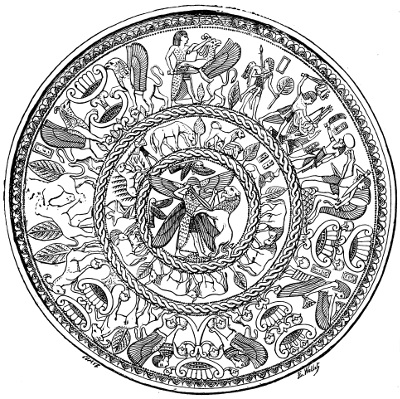
Fig. 227.—Patera from Curium, diameter 8 ins. (P. & C.)
A beautiful Egyptian design of a cow and calf in a
papyrus brake forms the centre medallion of a Phœnician
cup found at Caere (Fig. 228).

Fig. 228.—Centre Medallion; from a Cup from Griffi. (P. & C.)
The Egyptian vessels figured in the tomb of Rekhmara
(Fig. 229) are mostly made in metal and are of Phœnician
design. They would be sold to the Egyptians, as the
former supplied the latter in most articles of metal
workmanship; many rims and handles of elaborate
workmanship have been found, but scarcely any whole
forms of these vases, though we have many of their forms
preserved in Greek and Etruscan work.
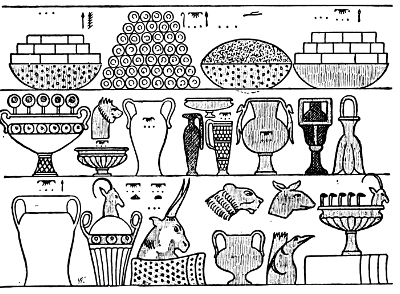
Fig. 229.—Vessels figured in the Tomb of Rekhmara; from Wilkman.
In articles of personal jewellery the Phœnicians were as
skilful as the Greeks and Etruscans; it was only in the
matter of higher motives in design that the Greeks excelled
174the Phœnicians. We give one or two specimens of their
jewellery at Figs. 230 to 233.

Fig. 230.—Gold Bracelet; from Tharros. (B.M.) (P. & C.)
Cyprus was inhabited from the earliest time with a
mixture of races in which the Greek or Hellenic element
was represented, and though nominally a Phœnician
dependency, the Greek superiority of artistic genius
asserted itself at a very early date in the art of the country.
Some of the architectural features already noticed, notably
175the Ionic capitals, may be given as examples of this; and
another very important branch, the minor art of pottery,
may furnish further examples of the Greek art tendency,
though infused with a mixture of Phœnician influences.
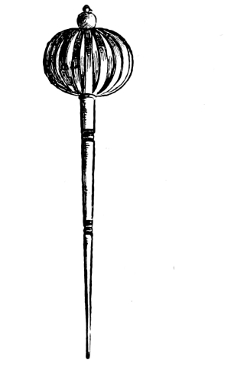
Fig. 231. Silver Pin, Cesnola.

Fig. 232.—Pendant, Wild Goat, Gold. (B.M.)

Fig. 233. Earring, Gold, from Cesnola.
Cyprus has always been particularly noted for its ceramic
products. The island is rich in potter’s clay of two kinds—a
black earth, and a red kind. The oldest kind of Cyprian
176known is of a good shape, and is generally furnished with
handles according to the uses of the vase. The making
and fitting on of handles is only achieved when the art of
the potter has been well advanced.
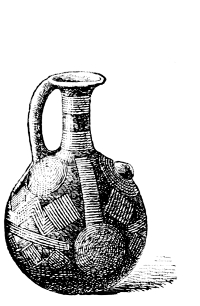
Fig. 234.—Bottle with Incised Ornament, from Cesnola. (P. & C.)
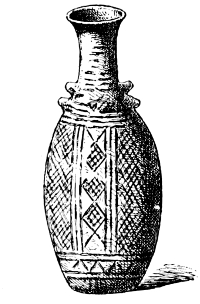
Fig. 235.—Bottle with Geometric Decoration. (P. & C.)
The two vases (Figs. 234, 235) are of the oldest dates, and
are decorated purely in the oldest form of geometric ornament.
The one with the handle is particularly good in
form, and has the decoration incised like sgraffito work.
Fantastic shapes of animals made as vases and drinking
vessels were very common in Cyprus. Although not many
of them can be called beautiful, still it required considerable
skill and knowledge to model them (Fig. 236).
The goat-shaped vessel is very lifelike. The bowl or
crater (Fig. 237) has the lotus flower and geometric bands
and divisions for its decoration; it is painted with light
brown and red on a cream-coloured ground. The decoration
from a cup is more elaborate, it has a new element in
the shape of some kind of water bird arranged Assyrian-like
177on each side of the sacred tree, and has a sun sign
filling up a space close to one of the bird’s legs (Fig. 238).
Another very interesting and beautiful vase is the
Œnochoé (Fig. 239). Another bird is painted on this, and
at the same time the geometric checkers and lines still
cling to it as part of the decoration. On this vase, also,
may be seen two moon signs, and the sacred sun sign, the
fylfot, or swastika, repeated four times. These sacred
signs are often found on Cyprian pottery. The latter vase
in shape and decoration is more Greek in feeling than
most Cyprian vases. The larger Œnochoé (Fig. 240) has
the human figure with some kind of water fowls; it has a
sacred sign on its lips. Though the subject recalls Egypt,
the design and execution might have been done by a
178clever Greek artist. The style of execution and drawing
on these vases may be a little archaic, but the design and
bold manner of execution is eminently correct and could
not be better for the decoration of pottery.
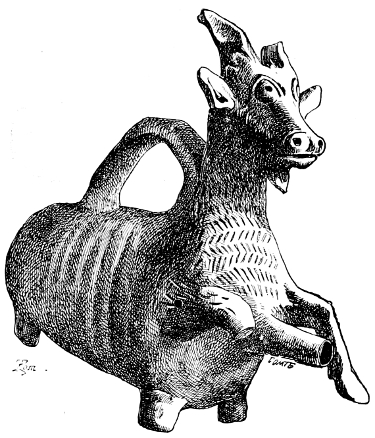
Fig. 236.—Vessel in the Shape of a Goat. (P. & C.)
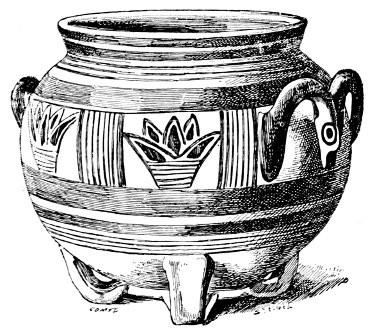
Fig. 237.—Bowl in the Piot Collection, height 6¾ ins. (P. & C.)
The discovery of glass making has been attributed to
the Phœnicians, but this is not correct; the Egyptians
made glass articles, and used glass in their vitreous
enamelled tiles and bricks long before the Phœnicians had
any connection with Egypt. It was most likely because
the Phœnicians traded so much in glass, and for the
reasons also that they had large glass manufactories at
Tyre and other places, that they have received the credit
from early times of being the inventors of glass. The
oldest dated glass bottle or vase in the world is one from
Egypt, and now in the British Museum. It bears the
name of Thothmes III. (B.C. 1600). The body is turquoise
blue with yellow details of decoration and hieroglyphics;
the handle is dark blue with yellow and white markings.
179The Phœnicians at a later period were extensive makers
of glass articles, and made glass of three kinds, the clear
and transparent, but always with a slight greenish hue,
the coloured and transparent, and the opaque.
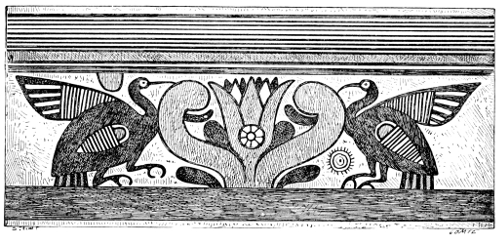
Fig. 238.—Detail of the Decoration of a Cup. (P. & C.)
A great quantity of glass bottles, statuettes, vases,
180plaques, and beads have been found in Cyprus. The
bottles and vases that were prized most highly were
decorated chiefly in alternating lines of bright colours,
such as blues, greens, yellows, white, and purple. Beads,
cones, amulets, scarabs, heads of animals, and statuettes,
as well as bottles and vases, were made both by Phœnician
and Egyptian workmen, some cast in moulds and some
blown. There is a cup in the French National Library
called the cup of Chosroes II., made of glass, and decorated
with artificial gems. The
finest work of art in glass is
the famous Portland vase in
the British Museum. The
decoration on this vase is in
relief in cameo glass.
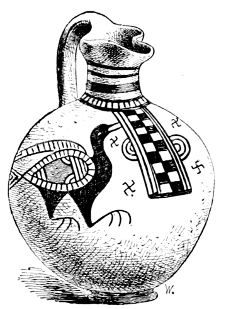
Fig. 239.—Œnochoé, New York Museum. (P. & C.)
The small cylindrical perfume
bottles in glass known
as alabastrons are of the
highest antiquity; they were
usually placed in the hands
of the dead.
In the art of weaving and
making textiles the Phœnicians
are not credited
with making anything
different from the Orientals
or Egyptians, and perhaps
supplied themselves with the Egyptian muslins and linens,
and had their rugs and carpets from the East, which were
famed then as now for their soft nature and brightness
of colouring. We have evidence from Homer that the
Sidonian slaves were very skilful at embroidery. “With
threads of gold, or with a colour contrasting with that of
the ground, they drew fantastic beasts of every kind.”
These embroideries would likely have similar decoration
to that which is found on the metal platters, and perhaps
imitations of those decorations we see on the embroidered
181robes of the Assyrian kings’ mantles (Figs. 162A, 163A), and
the scheme of decoration would likely be a division of the
field into bands and circles, each filled with Egyptian or
Assyrian motives.
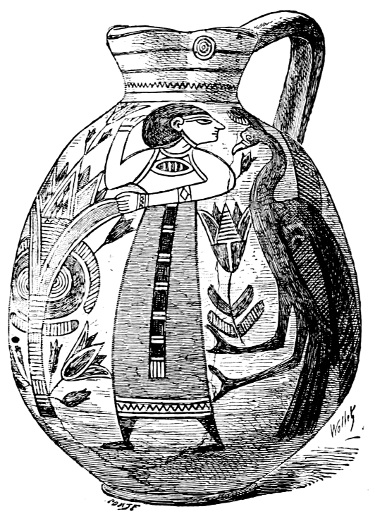
Fig. 240.—Œnochoé, New York Museum. (P. & C.)
In Cyprus, we can easily infer that the textiles would
be strongly influenced, as other manufactures were, by
Egyptian art. The Phœnicians were noted for their
famous purple dye obtained from the Murex and Purpura
families of shell-fish. This purple dye was of world-wide
renown. Its great advantage was that on its exposure to
light and sunshine it became more fast and more intense
in colour, which is contrary to most dyes. It was very
182costly by reason of the difficulty in extracting it from the
fish, and of the enormous quantities required to produce
even a small quantity of the dye. The city of Tyre had
extensive factories for the
manufacture of the Tyrian
purple. It is not obtained
now from the shell-fish, as, of
course, many other ways and
cheaper have been found to
produce a similar colour.
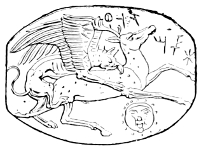
Fig. 241.—Intaglio on Chalcedony.
(P. & C.)
The Phœnicians were adepts
at ivory-carving, shell-engraving,
and gem-cutting (Fig.
241), as many examples of these arts have been found, but
we regret that the limitations of this volume prevent us
from going into these subjects as fully as we might wish.
183
CHAPTER X.
ART IN ANCIENT PERSIA.
Persia occupies what is known as the tableland of Iran,
and is a plateau bounded on the north by the Elburz
Mountains, Armenia, and Afghanistan; the Bol-ur and
Hindu-Kush in the east; the heights that are parallel to
the Indian Ocean in the south; and the Persian Gulf, the
chains of Zagros, and Ararat in the west.
The Zagros Mountains separated Persia on that portion
of the Iran plateau from Assyria, which was known as
part of Media. The Assyrians under Tiglath-Pileser
scaled these mountains and conquered the Medes.
The Medes have always been considered with the
Persians as forming part of one nation, being closely
related to each other in language, religion, manners, and
customs.
The Medes were the first to emerge from barbarism,
owing to their nearness to the Assyrians. After the conquest
of Babylon (B.C. 539) the Medes and the Persians
descended from their mountains into the valley of the
Tigris, under Cyrus, the first Persian king of the Achæmenidæan
dynasty. The name Achæmenidæ was given by
the Greeks to the descendants of a native chief called
Akhamanish, and one of the oldest families of Persia.
Cyrus marched through Asia Minor to Asiatic Greece,
seized all the cities on his way, and made them pay
tribute. Under Cambyses (B.C. 527) the countries of Syria,
Palestine, Phœnicia, Assyria, Babylonia, and Egypt—nearly
all the old-world civilisation from the Mediterranean
186to the Indus—belonged to the Persian Empire.
Hostilities were kept up between the Asiatics and
Hellenes for two hundred years, until Alexander the
Great ended them at the battles of Issus and Arbela
(334-330 B.C.). For nearly a century Persia was under the
vassalage of the Greeks, but still kept her ancient
customs and her ancient cult of fire-worship, the national
religion, although this was in a great measure undermined
and weakened by the teachings of the Greek conquerors.

Fig. 242.—Naksh-i-Rustem, General View of the Rock-cut Tombs. (F.C.)
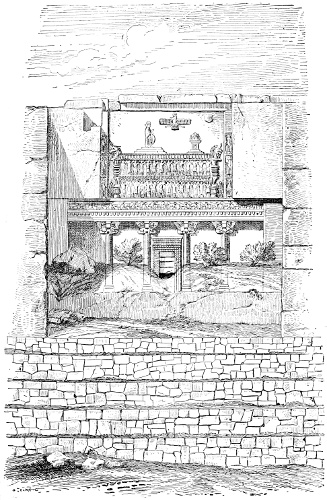
Fig. 243.—Persepolis. Tomb on the North-east. Elevation. (F.C.)
The Greeks were, in turn, overthrown by the Parthians,
a northern Asiatic tribe who ruled in Persia down to
B.C. 226, when the native Sassanidæ family of the south
restored Persia to her former freedom, and installed again
the ancient worship of Ahurâ-Mazda, and also tried to
restore the art of the First Dynasty. The Greek and
Roman influence was, however, too strong at this period
to be entirely shaken off, in spite of the renewed display
of patriotism. For instance, a great quantity of Greek
furniture, utensils, and figures of Greek gods must have
found their way into Persia during the reign of the
Seleucidæ—the Greek rulers—and must have influenced
the native Persian art; besides borrowed ideas from the
art objects and other things that the Persians at a former
time pillaged from the Greek temples and carried home
with them. When the Arabs finally overthrew the
Sassanid Dynasty and conquered Persia, the state religion
of fire-worship was proscribed, but the Moslem
religion never took the same hold in Persia as it did in
other countries, the Persians adopting the secular form of
it—the Shiah—as opposed to the more devout form, the
Sunni. To this reason is assigned the independence of
Persia to the present day amongst the other Moslem
countries of the world.
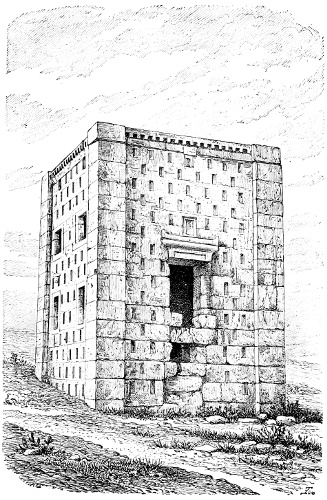
Fig. 244.—Funeral Tower at Naksh-i-Rustem. (D.) (P. & C.)
It was during the period of the First Empire that the
greatest works in architecture first appeared in Persia.
It is clear from the remains of this period that the national
architecture of Persia was composed of a mixture of
188Assyrian, Egyptian, and Greek elements, blended together
in an original way. The artists and architects who produced
the national Persian style were hardly native
Persians, as there was no previous style of any importance
in Persia on which such great works as the famous palaces
could be founded or developed from. It is, therefore, quite
likely that the artists and architects were of Phœnician or
Greek nationality. Indeed, records of Greek names appear
on the buildings as architects of some of the palaces of
the best periods, and ancient history mentions the names
of more than one Greek sculptor that was brought to Persia
for this purpose by the victorious kings, and induced to
work for them by being well treated and cared for. Many
of the Greek artists were also political refugees who found
employment and a hearty welcome in Persia.
It was when Cyrus had become master of Western
Asia that the Persians began to think of building the
famous palaces at Persepolis, Susa, and Pasargadæ. Most
of these palaces and the tombs were built of a close-grained
limestone that is found very plentiful in the
mountainous country of Persia. The royal tombs were,
as a rule, cut out of the living limestone rock (Fig. 242).
They are of the time of Darius, and are all of one type
that seems to have been invented by one mind, and, after
the first was cut, speos-like, out of the native rock—probably
that of Darius itself—the rest were copied faithfully
from it. The great height from the ground of the tomb
itself was arranged for safety from violation. The sculptured
figure of the king is represented near the top, in the
act of worshipping the sacred fire seen on the right; at
the centre of the top of the field is seen the emblem of
the god Ahurâ-Mazda and the sun disk (Fig. 243). An
older form of tomb, the “built” tomb, is seen at the
right of the rock-cut tombs, and a larger illustration of
this rectangular cemetery is seen at Fig. 244. The latter
type of tomb belongs to the time of Cyrus.
We must not look for much in the way of religious
189architecture in Ancient Persia. Where temples in other
countries were required, fire-altars took their place in
Persia (Fig. 245). These altars, by reason of their uses,
were generally found in “high places,” on summits of
hills and on rocks.
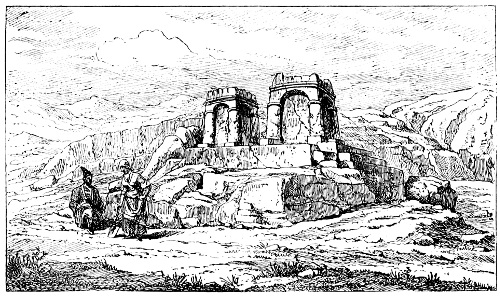
Fig. 245.—Fire Altars, Naksh-i-Rustem. (F.C.) (P. & C.)
The fire-altars at Naksh-i-Rustem are really one with
the rock on which they stand. Remains of a fire-temple
190have been discovered at Ferûz-abad, which is supposed
to have had a roof; but the ends of the temple would
be open, with the sacred hearth on the top and centre
of a lofty flight of steps, on a quadrangular plan.
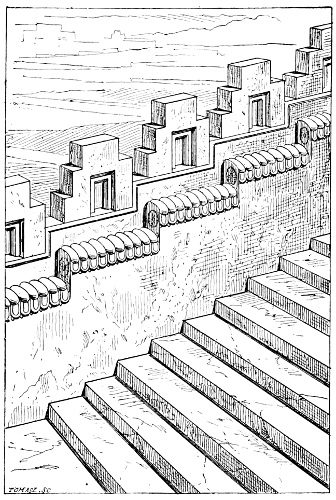
Fig. 246.—Persepolis; Staircase of the Palace of Darius. (D.) (P. & C.)
191
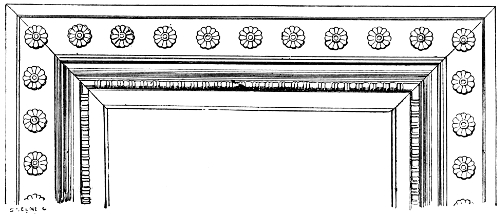
Fig. 247.—Fragment of a Door-Frame from a Hypostyle Hall, Sausa. (D.) (P. & C.)
The buildings in Persia of the Achæmenidæ Dynasty,
both palaces and tombs, are of the pillar and beam, or
the architrave system of construction. The horizontal
ceilings were of wood, and were panelled very elaborately,
and rested on stone supports. The doorways and
windows are square-headed, upholding a lintel (Fig. 248).

Face and Profile of Principle Doorways. Face and Profile of Lateral Doorways. Profile of Window. Face of Cornice. Profile of Niche.
Fig. 248.—Elevations and Sections of Doorways and Windows of a Palace at Persepolis. (F.C.) (P. & C.)
193
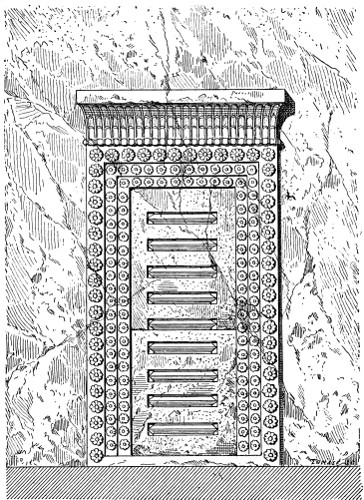
Fig. 249.—Persepolis, Doorway to Royal Tomb. (D.) (P. & C.)
The doorway, at Fig. 249, of a royal tomb, is a very
rich specimen of a decorated Persian doorway. The
Egyptian “gorge” is seen in the cornice, but the Persian
treatment of this feature is shown in the channelled
194grooves, with imbricated markings between each channel.
The rosettes, too numerous here to be in good taste, are
evidently borrowed from the Assyrians. The door-frame,
from Susa (Fig. 247), restored by Dieulafoy, is, on the
195contrary, a beautiful example of good proportion and
restraint in decoration. It would pass for an example of
Greek work in its classic simplicity.
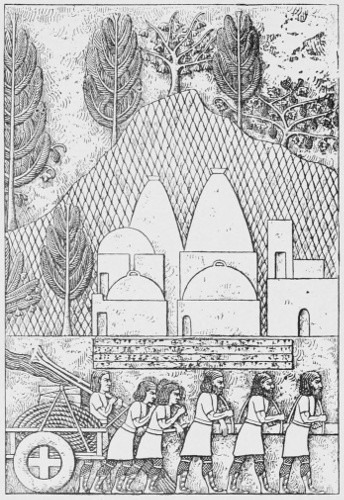
Fig. 250.—View of a Group of Domed Buildings, from an Assyrian Bas-relief.
Layard. (P. & C.)
The walls of the palaces were usually crenellated or
embattled (Figs. 246 and 261).

Fig. 251.—Palace at Sarvistan, Principal Façade. (F.C.) (P. & C.) Example of Domed and Vaulted Structure.
The staircase walls and other parts of the buildings were
often covered with tiles made of a white cement, and
enamelled in colour decoration. These have been found
chiefly at Susa. The principal parts or body of the building
were of stone or brick, and the upper parts were
supposed to be of wood. This is correctly inferred by
the stepped notches still to be seen in the antæ, or corner
piers of stone, which must have been cut in this way to
receive the ends of the ceiling beams (Perrot & Chipiez).
Wood was a scarce material in Persia, and must have
been brought from the Elburz Mountains at a great cost
196of time and labour; but this would be nothing to a king
like Darius, whose revenue was reckoned at about
£27,000,000 of English money.

Fig. 252.—Column with Volute Capital, Persepolis.

Fig. 253.—Base of Pillar at Susa. (D.) (P. & C.)
Remains of Persian buildings of another order, the
vaulted structures (Fig. 251), have been found at Sarvistan
and Ferūz-abad, in the province of Fars (Ancient Persia),
which some archæologists have ascribed to the time of the
Sassinid Dynasty, the construction of which is supposed to
199have been derived from their prototypes, the domed and
vaulted buildings of Assyria (see Fig. 250).

Fig. 254.—Base and Capital from Persepolis; Propylæa. (F.C.) (P. & C.)
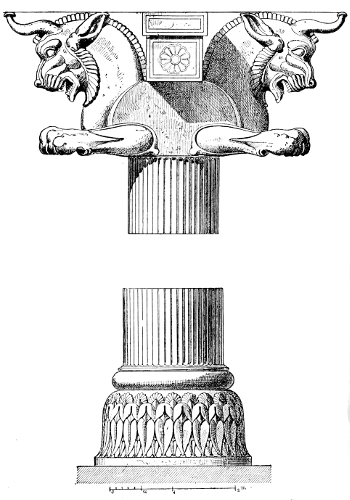
Fig. 255.—Capital and Base from Hypostyle Hall of Xerxes, Persepolis. (F.C.) (P. & C.)]
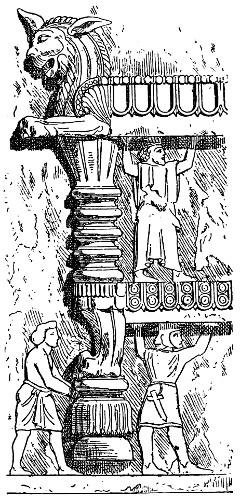
Fig. 256.—Upright of Royal Throne, Naksh-i-Rustem. (F.C.) (P. & C.)
The most distinctly Persian feature in all the architecture
of Persia is undoubtedly the column with its double-bull-headed
capital (Fig. 254). Archæologists are divided
200in opinion as to whether it is derived from Egyptian or
from Assyrian sources. If it is a borrowed idea, the
Persians may certainly be credited with developing the
supposed idea into something wonderfully unique and
interesting as a capital. The name Zoophoros (life-bearing)
201has been given to it. Perrot and Chipiez (from whom
the illustrations are taken) say that the capital was in
design an inspiration from the Assyrian national standard
(Fig. 161), while Dieulafoy ascribes to it an Egyptian
origin. The former appear to have the best of the argument,
for there is nothing in Egyptian ornament that
comes so near it as the animals of the Assyrian standard,
as regards position, but the supposed resemblance of idea
even is not very clear in this case.
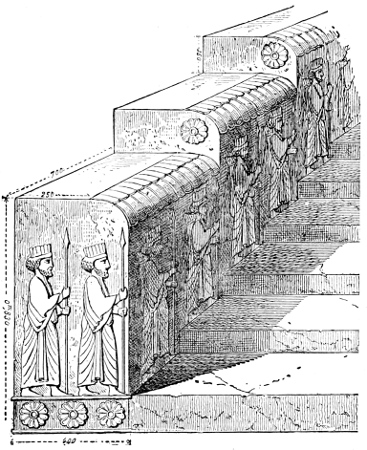
Fig. 257.—Staircase Wall of the Palace of Xerxes at Persepolis. (F.C.) (P. & C.)
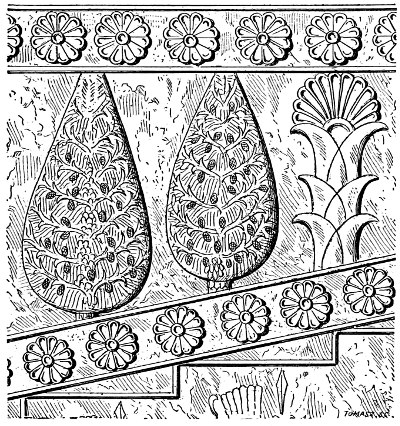
Fig. 258.—Crowning Wall of Staircase, Palace of Xerxes, Persepolis.
The base of the Persian bull-headed columns is almost
as unique in its way as the capital. It is of the shape
202known as Campaniform, and consists of an inverted bell
of beautiful contour, richly decorated with falling leaves,
a torus moulding and fillet connecting it with the shaft
(Fig. 253).
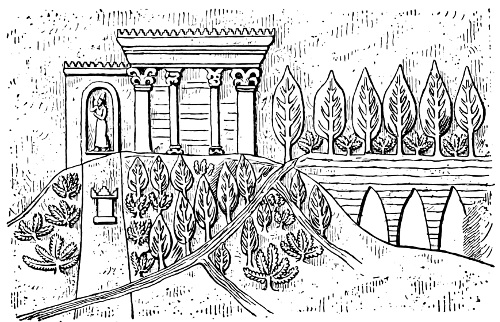
Fig. 259.—Temple in a Royal Park. (B.M.) (P. & C.)
Another capital has, instead of the bull heads, a lion’s
head, with the horn of a unicorn. This capital is wanting
in the volutes and lower capital. It is as poor, in this
respect, as the voluted capital is doubly rich, and can
hardly be called beautiful (Fig. 255). It belongs to the
hypostyle hall of Xerxes, at Persepolis.
The shaft of the Persian column is channelled or fluted
in nearly all cases, and the number of flutings is very
great, being from thirty-two to fifty-two, while the
Egyptian column has never more than sixteen, and the
Greek from sixteen to twenty-four. The great characteristic
of the Persian column is its slender and airy
appearance. At Persepolis the total height is twelve
203diameters of its shaft. Some are even more slender
than this. The Egyptian averages, in contrast, from five
to six diameters, and the Greek seven to nine. The
Persian column had its origin in timber supports.
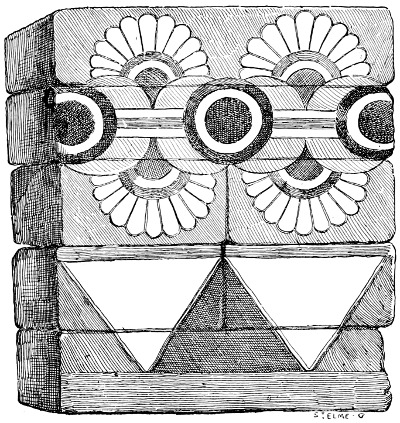
Fig. 260.—Enamelled Ornament on Bricks from Susa. Drawn by Gautier. (P. & C.)
Besides the unique capitals and bases in Persian art
there is not much of the ancient Persian ornament and
decoration that does not strongly partake of foreign
influences. The upright support of the royal throne (Fig.
256) is distinctly Assyrian in feeling, and the upper
horizontal moulding is very like Greek work. A moulding
is seen on the upper rounded edges of the staircase (Fig.
246) and on the inner portion of the parapet wall (Fig. 257)
204of an elongated egg shape, which is one of the rare exceptions
of ornament that is really Persian.
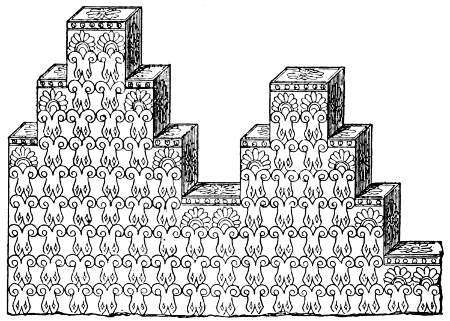
Fig. 261.—Upper Part of Parapet Wall, Susa. (P. & C.)
The Assyrian daisy, patera, or rosette is a very
characteristic ornament in Persian decoration (Figs. 249,
258). This is also a typical ornament in Greek architecture.
Two well-known ornamental forms of Assyrian ornament
occur on the crowning wall of the staircase of the Palace
of Xerxes (Fig. 258), the cone-shaped pine-tree form, and
the palmate-crowned tree stem. The prototype of the
former may be seen as an ideal rendering from nature
of the cypress or pine-tree (Fig. 259) in the Assyrian
illustration of a royal park. The contour of this ornament
may have reminded the Persian fire-worshippers of the
flame shape, which circumstance may have accounted for
their fondness for using it so much. The other adjoining
palmate ornament is distinctly Assyrian; as also are the
daisy borders. A common form of ornament is seen on
the enamelled bricks from Susa (Fig. 260) consisting of a
205double palmate or lotus form of flower, alternating and
joined to concentric circles to form a band. Below is an
Egyptian chevron rather out of proportion to the rest of
the design. The whole thing has a decided Egyptian
look, and may be a copy of the enamelled ornament of
that country.
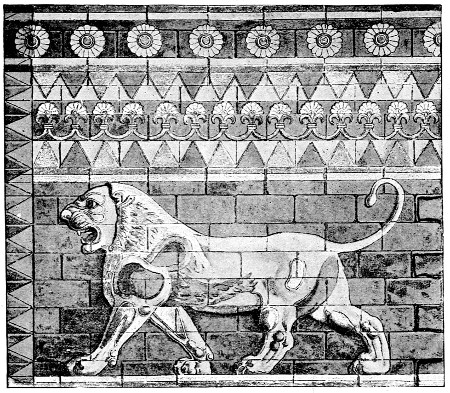
Fig. 262.—Lion, from the Lion Frieze in Enamelled Bricks at Susa. (P. & C.)
The Persian palaces were richly decorated with
enamelled bricks and tiles, in strong blue, orange, white,
and brown colouring, as the archer’s and lion’s friezes
from Susa (now in the Louvre) testify. These two works
are reproduced in colours in Perrot and Chipiez’ “History of
Art in Persia.” The upper part of the crenellated parapet
wall of the staircase at Susa gives an idea of the extreme
206richness of the decoration in glazed tiles with enamelled
covering (Fig. 261). The Persians learnt their art of
enamelling tiles and bricks from the Chaldeans, and they
have never lost it. Under the Moslem rule in the fourteenth
and fifteenth centuries, the tiles and majolica that were
made for the decoration of the mosques reached a high stage
207of perfection, especially in the colouring. This beauty is
seen more particularly in the deep azure grounds, and in
their treatment of conventional flower decoration that has
never been surpassed in any country. This subject will be
further treated in the future notice of modern Persian
ornament.
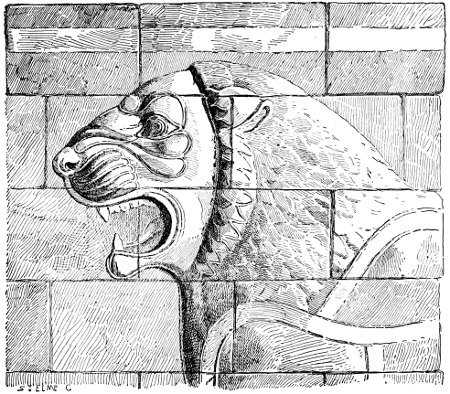
Fig. 263.—Head of one of the Lions from the Frieze at Susa. (P. & C.)
In animal and figure design, the Persians closely imitated
the Assyrians and Chaldeans, but were not so successful in
their general treatment of them. The lion was one of the
most favourite animals in Persian art. The lions in the
“lion frieze” at Susa were represented with more than
usual vigour and ability. This frieze remains the finest
work of Persian design that is yet known to us, and
probably was the work of a Chaldean artist employed by
the great Persian king, Darius, to decorate his palace at
Susa. (See Figs. 262, 263).
208
CHAPTER XI.
GRECIAN PEOPLE AND MYTHOLOGY.
The early inhabitants of Greece were the Pelasgians, a
people who had the reputation of being great builders.
At Athens, around the Acropolis, and at other places,
remains of huge walls, made of unsquared stones laid in
mud, have been found; these are the remains of the Pelasgian
walls. The oldest historians were not disposed to
make any difference between the Hellenes and the Pelasgians,
but see in the former a continuation merely of the
old Pelasgi stock. The Dorians came from the mountains
of Thessaly, and steadily gained an ascendancy over the
other tribes of Greece.
The Ionians in the East gave an Oriental colouring to
Hellas, both in manners, customs, and in art. There
were three dialects in the language of the Greeks: the
Doric, broad and soft; the Ionic, melodious and rich; and
the Æolic, a mixture to which nothing of a special character
is given, except that it is the nearest to the Latin.
The Greeks were a light-hearted and joyous race: they
worshipped their gods in everything they did—in running,
wrestling and dancing, in building, carving, and painting,
in writing and reciting of poetry; their whole life was one
of intense artistic devotion, and all their works of art were
so many prayers to their gods. Whatever may have been
the racial differences of the Hellenic peoples, they united
all their physical and intellectual efforts to perfect their
civilisation. They emerged from archaic barbarism step
209by step, to such a refinement of culture that has had no
parallel in the history of nations.
It would be impossible to give an outline of Grecian or
Roman art without describing at least the outlines of their
religious beliefs as shadowed forth in their myths and in
their plastic representations of the same. It would be
advisable, therefore, to sketch, in as brief a manner as
possible, some of the superior deities and their attributes,
in order to understand better the art that was the glory of
Greece and the grandeur of Rome.
The Theogony, or myths that relate to the origin of the
Greek gods, includes that of the Romans, since the latter
did not trouble themselves with the inventing of any
origins for their gods, but simply borrowed them, as they
did all their art, direct from the Greeks, merely substituting
Latin names for their borrowed deities, instead of the
original Greek ones.
Zeus (Jupiter) was the Supreme god of the Greeks,
chief of the Olympian deities, the “Sky Father,” the ruler
and controller of the universe, dispenser of the thunder
and lightning, rain, hail, and fertilising dew. Before the
birth of Zeus, the Greek poets tell us that Ge (the earth)
first emerged from Chaos, and separated itself immediately
from Tartarus (the abyss beneath), and that Eros, or love,
then first sprang into existence. Ge (the earth) then
begat Uranus (the mountains and the heavens), and
Pontus (the sea).
By the union of the earth and Uranus, the twelve Titans
came into existence. They represented the elementary
forces of nature; there were also from this union the three
Cyclops, thunder, lightning, and sheet-lightning, and the
three Centimanes (hundred-handed), which are supposed
to represent the stormy winds, the stormy sea, and the
earthquakes.
By union with Pontus, the earth became the mother of
many fabulous sea-deities. Other deities, offspring of the
Titans, are Helios, the Sun; Selene, the Moon; Eos, the
210dawn. From Cœus and Phœbe, deities of the night, are
Leto (dark night) and Asteria, (starry night). Cronus
and Rhea, of the family of the Titans, had six children, the
youngest of whom was the great god Zeus. He was rescued
from the fate of being swallowed by his father, as his
five brothers and sisters had been, and was brought up
secretly in a grotto, on Mount Dicte, in Crete, was nursed
by nymphs and the she-goat Amalthea, whilst the bees
brought him honey to eat. Thus the youthful Zeus grew
up in secrecy until he became a mighty god. The first of
his exploits was to attack his father, and compel him to
restore to life again his five brothers and sisters. He then
found it was necessary for his supremacy to fight the
Titans, who disputed his authority, which he did from his
stand on Mount Olympus, in Thessaly, while the Titans
fought from the opposite Mount Othrys. This fight lasted
for ten years, and ended in the defeat of the Titans.
After this battle Zeus shared the ruling of the world with
his two brothers, Poseidon (Neptune) and Hades (Pluto);
the former he set as ruler over the sea, and the latter as
king of the infernal regions. About this time the earth
had produced another enemy to vex the peace of Zeus—Typhœus,
a monster with a hundred fire-breathing dragons’
heads, which Zeus was obliged to fight also. After a
mighty battle the thunderbolts of Zeus prevailed, and the
monster was cast into Tartarus, or as Virgil and Pindar
have it, into Mount Ætna, in Sicily, where he still shows
his anger at times, by breathing out fire and flames
against the majesty of heaven. Another battle still is
recorded to the credit of Zeus before he was able to enjoy
his undisputed dominion over the world, that is the battle
with the Giants, when they attempted to scale the sacred
Olympus by “piling Ossa on Pelion.” Zeus and his
adherent gods were again victorious, and remained ever
after the undisputed lords of Olympus.
The story of the battle with the Giants, the Giganto-Machia,
formed a favourite subject for illustration with the
211Greek sculptors. The cameo of Athenion depicts Zeus
in his chariot, and the Giants attacking, having snakes
for their legs (Fig. 264).
Zeus was the national god of the Greeks, and was first
worshipped on high places and mountain tops long before
any temples were raised to his honour. He was worshipped
all over Greece, and one of his earliest shrines
was at Dordona, in Epirus. The greatest of all his shrines
was at Olympia, on the northern banks of the Alpheus.
It was here that the Olympian games were celebrated.
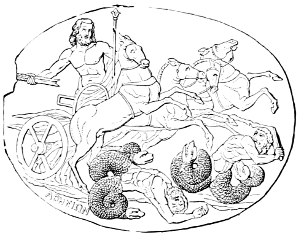
Fig. 264.—Cameo of Athenion.
It was also here that the great statue of Zeus was set
up, which was the work of the renowned Greek sculptor
Phidias (B.C. 500-432). This famous statue of the supreme
god of the Greeks was a seated figure on a lofty throne, and
was more than 40 feet high. It was made of, or probably
covered over with, plates of ivory and gold (chryselephantine);
the ivory plates covered the exposed parts of
the flesh. In his right hand he held a figure of Victory, also
made of ivory and gold. The sculptor sought to give his
statue a look of sublime majesty, as the ruler of gods and
men, and, at the same time, a kindly expression of benevolence,
as the gracious father and dispenser of good gifts to
mankind. Thousands are said to have come from great
212distances in order to gaze on this masterpiece of the
greatest sculptor of Greece. It remained in its place for
more than eight hundred years, and was supposed to
have been destroyed by fire in the time of Theodosius III.
The coins of Elis have a seated figure, and the head of Zeus
on them (Fig. 265).
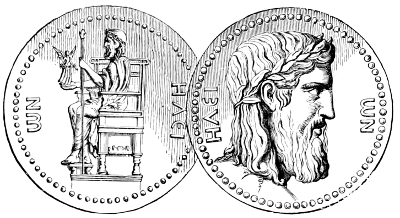
Fig. 265.—Coins of Elis with the Phidian Zeus (after Overbeck).
A supposed copy of the head of the god is in the Vatican
Museum. It was found at Otricoli in the last century
(Fig. 266).
The worship of Jupiter was also universal in Italy;
many temples have been erected to his honour. The most
famous of these was the one erected by Tarquin on the
Capitol at Rome. It had a statue of Jupiter, the work of
the Greek artist Apollonius, made of ivory and gold, and
said to be a copy of the Phidian Zeus.
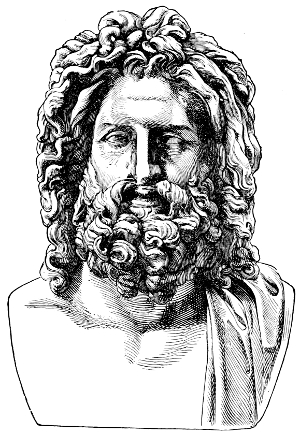
Fig. 266.—Zeus of Otricoli, Vatican Museum.
Zeus is credited with a numerous family. He produced
Pallas Athene from his own head; the birth of Athene is
supposed to have formed part of the subject of the
sculptures on the pediment of the Parthenon (Temple of
Athene at Athens) the remains of which are in the British
Museum, but unfortunately the central figures of the
pediment are wanting which depicted the event.
213One of his goddess-wives was Themis, of the Titan
family, whose children are the Fates. Dione was his
Dodonian wife, by whom he had as daughter Aphrodite
(Venus). The Arcadian Zeus had for his wife Maia, who
was the mother of Hermes (Mercury). By Demeter
(Ceres) he had a daughter Persephone (Proserpina), the
flower goddess. By Eurynome, the Graces, and by Leto
(Latona) Apollo and Artemis (Diana).
Later mythology recognises Hera (Juno), his sister,
214to be his only legitimate wife (Fig. 267), and by her he
had his children Ares (Mars), Hephæstus (Vulcan), and
Hebe.
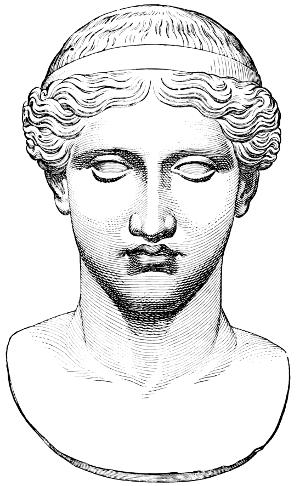
Fig. 267.—Head of Hera, perhaps after Polycletus.
His earthly mistresses were Semele, daughter of Cadmus,
King of the Greek Thebes, and mother of Dionysus
(Bacchus) and others; Leda, Danaë, Alcmene, Europa,
and Io.
The Roman Jupiter had at first no family, nor wives,
215but later, when the Greek influences were more strongly
developed in Roman mythology, he was made to be the
son of Saturn, and had Juno for his wife, and Minerva
(Athene) for his daughter.
Hera (Juno) is the feminine counterpart of Zeus (Jupiter).
She represents air or atmosphere, is the queen of heaven,
and is the guardian goddess of marriage ties with both
Greeks and Romans. The peacock, goose, and the cuckoo
as the herald of spring, are sacred to her. The beautiful
head (Fig. 267) of Hera is supposed to be the work
of Polycletus, a celebrated Greek sculptor.
Pallas Athene (Minerva) is the great virgin goddess of
wisdom, of the dawn, and of war. According to some
Greek accounts she sprang forth to life from her father’s
head (Zeus) fully armed with helmet and spear, chanting
a war song, at which event the whole earth and sea
trembled with commotion. She is represented in sculpture
as the war goddess, in flowing robes with helmet and
spear, and wearing the dreadful ægis, the breastplate of
mail, with the snakes and head of Medusa, that “turned all
men to stone who gazed on it” (Fig. 268). The serpent,
the owl, and the cock are sacred to her.
Apollo was the favourite son of Zeus, and was a
great god with both Greeks and Romans. He is the god
of light, of music, and of healing. He is sometimes the
god of death, sending out his arrows of sunshine that often
breeds pestilence, as well as giving health. His favourite
instrument is the lyre, which he plays at the feasts of the
gods. His sons were Orpheus, the god of music, and
Asclepius (Æsculapius), god of healing. Delphi was the
chief seat of his worship, where a gorgeous temple was
erected to him.
There the priestess Pythia uttered the oracles that were
supposed to come to her ears alone, from out of a cleft in
the rock under the sacred tripod, from which also issued
gaseous vapours. These oracles were sacred words of
advice or warning for those who came to consult them.
216Other oracles of Apollo were at Didyma near Miletus, at
Clarus, and at Thebes.
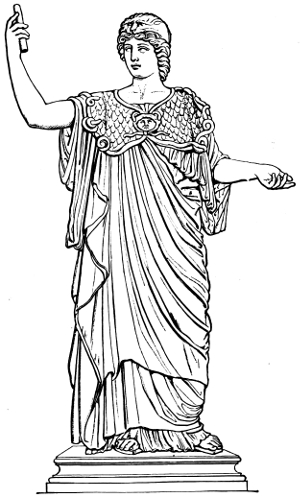
Fig. 268.—Athene Polias (Villa Albani).
The Roman Emperor Augustus erected a great temple
to Apollo on the Palatine Hill, in which was placed the
217celebrated statue of Apollo Citharædus (Apollo with the
lyre), a work by the famous Greek sculptor Scopas. The
statues of Apollo are of two kinds: one represents him as a
conquering deity, strong and handsome, of youthful beauty
both in face and body (Fig. 270); the other is in the
more benign character of the Pythian lute player, with
long flowing garments of a feminine nature, and with a
pleasing expression. Scopas and Praxiteles made many
statues of Apollo; copies of some of these are still in
existence. These sculptors flourished about B.C. 400.
The celebrated statue of the youthful Apollo known as
the Apollo Sauroctonus (the lizard slayer) is a work of
Praxiteles.
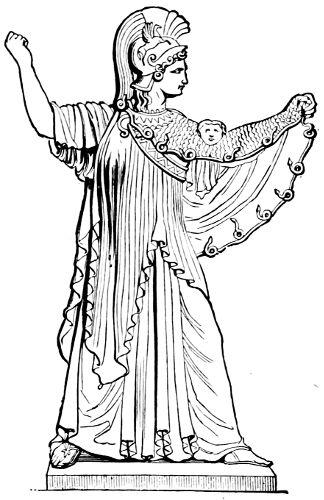
Fig. 269.—Pallas Athene, Naples.

Fig. 270.—Apollo Belvedere, Vatican.
Aphrodite (Venus) was “born of the sea foam,” as some
218say near to the island of Cyprus, where she was first
supposed to touch the land; many temples were built to
her worship in this island. She was the goddess of love
and beauty, and of the generative and creative forces in
nature; the goddess of spring, and all kinds of fertility,
both in celestial and terrestrial regions. She was the
219favourite deity of the Grecian mariners, and was worshipped
in Cyprus and the isles of Greece more than any
other divinity. Iris in the Tempest, in referring to Venus,
says—
“I met her deity
Cutting the clouds towards Paphos, and her son
Dove-drawn with her.”
The story of her love for Adonis, and of his death and
coming to life again, is but the decay of nature in autumn,
and its resuscitation in the spring. The Seasons and the
Graces are her attendants, who dress and adorn her. She
is accompanied by Eros and Hymen, the gods of love and
marriage. Venus of the Romans is the goddess of spring,
and the month of April was held sacred to her by the
early Italians. She was also, with them, the goddess of
love and marriage.
The best artists of Greece put forth all their powers in
painting and sculpture in their representations of the seaborn
Aphrodite, and if we except Zeus himself, there is no
other divinity of the Greek mythology that has served so
much as a model for the loveliest creations of the plastic
genius of the Greeks. The grandest conception of the
goddess as a work of art is the Venus of Milo, found in
1820 in the island of Melos (Milo) (Fig. 271), and now in
the Louvre. The grandeur and majesty of this famous piece
of sculpture is beyond praise. It ought to be seen in the
Louvre, to be appreciated at its worth, as drawings and
casts do not give an adequate idea of its beauty. The
Medicean Venus is a work of the Athenian artist Cleomenes,
of the later Attic school, in the second century B.C.
A statue of Venus Anadyomene (rising from the sea), of
“Venus crouching in the Bath” (Vatican collection), and
of “Venus loosing her Sandal,” are all of this later and
declining period of Greek sculpture, where the goddess is
represented undraped and more realistic in conception.
Venus had many attributes. The dove, sparrow, and the
dolphin, and in plants the myrtle, rose, apple, poppy, and
220lime-tree, were sacred to her, but varied according to the
locality and times.
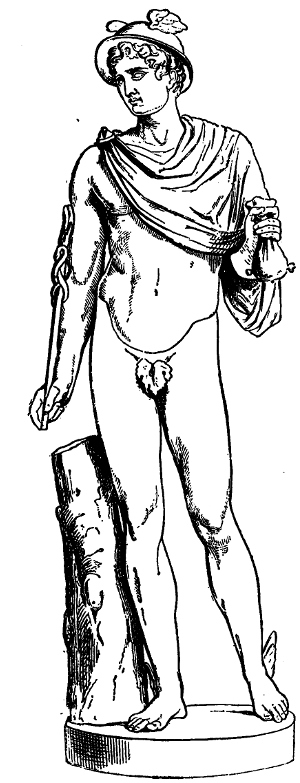
Fig. 272.—Statue of Hermes, Capitol.
221Hermes (Mercury) is the god of shepherds and of
pastures, and also of commerce and trade. When a child
he invented the lyre from a tortoise-shell which he was
222forced to give up to Apollo. He is represented with
wings on his cap and feet, and a herald’s staff as the
messenger of the gods, and with a well-filled purse as an
emblem of trade (Fig. 272).

Fig. 273.—Diana of Versailles.
Artemis (Diana) was the twin-sister of Apollo, and was
at first the goddess of the moon. Her favourite amusement
is the chase, but in the statue (Fig. 273) from the Villa
223Hadrian, now in the Louvre, she is represented as the
protectress of wild animals.

Fig. 274.—Melpomene, Vatican.
Mnemosyne (Memory) is the mother of the Muses. The
nine Muses are—Clio (history), Melpomene (tragedy)
(Fig. 274), Terpsichore (dancing), Polyhymnia (religious
service), Thalia (comedy), Urania (astronomy), Euterpe
(lyric poetry), Erato (erotic poetry and geometry), and
Calliope (epic poetry and science generally).
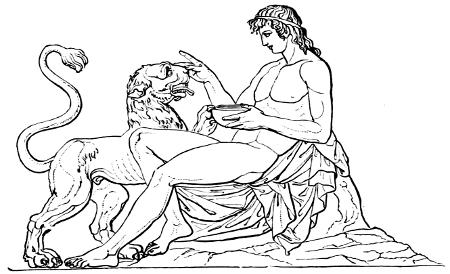
Fig. 275.—Dionysus and the Lion, from the Monument of Lysikrates.
Dionysus or Bacchus is, with both Greeks and Romans,
the god of wine, of vineyards, and of autumn blessings.
Naxos was the chief seat of his worship. It was on this
island that he met and married Ariadne, the daughter of
Minos, King of Crete, who had been deserted here by
Theseus, her former lover. The story of Dionysus
punishing the Tyrrhenian pirates who took him prisoner,
intending to sell him as a slave, and of his changing himself
to a lion and so terrifying the sailors, who jumped
overboard and were changed into dolphins, is the subject
of the fine relief on the frieze of the Lysikrates monument
(Fig. 275 and Frontispiece).
The lion, tiger, bull, and ram are his favourite animal
attributes.attributes. Among plants, the vine, the ivy, and the laurel
were sacred to him.
224Bacchanalian subjects and festivals of Dionysus occupy
a large and important place in the art of Greece, Rome,
and Pompeii.
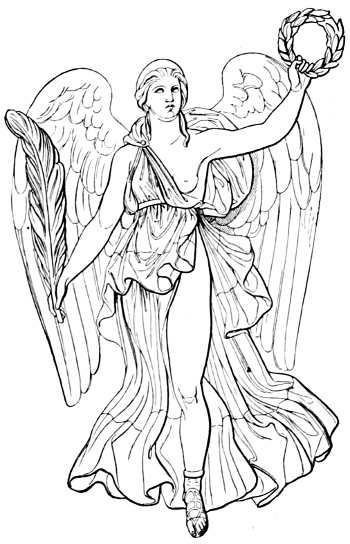
Fig. 276.—Victory, Munich Collection.
Nice, Victoria, or Victory is always represented with
wings, a palm branch, and holding a laurel wreath, and,
as would be expected, was more extensively venerated at
Rome than in Greece. In the latter country her statues
are generally of a small size, and she is an accompanying
goddess to Athene and Zeus (Fig. 276).
225
CHAPTER XII.
ART IN PRIMITIVE GREECE.
It was not only on their temples and images of their
gods that the Greeks put their best efforts in art; but in
their vases, jewellery, furniture, and humbler utensils of
the household and of every-day life, we find the Greek
artist pouring out some of his richest fancies, and the
same spell of beauty is cast over them all. And did not
Pericles, the son of Xanthippus, eulogise his countrymen
in his famous speech on those who had fallen in the
Peleponnesian War, as “lovers of justice and wisdom,”
“philosophers, lovers of beauty, and foremost among men”?
In Egypt, Assyria, and Persia we find all the artistic
knowledge of these countries was lavished on the
temples, and to the glorification of their autocratic rulers;
but scarcely any remains are found that would imply a
fostering of the minor arts among the common people.
On the contrary, in Greece art impregnated the life and
work of all classes, from the highest to the lowest in the
state. This was only possible when entire freedom
prevailed, as it did in the mass of the Greek people.people.
Some of the oldest monuments of primitive Greece
have been found at Mycenæ, Troy (Hissarlik), and Tiryns.
These consist of domed tombs, such as the tomb of
Agamemnon, or the so-called “Treasure-house” of
Atreus, and others, as the rock-cut tombs. The site of
ancient “Troy divine” was discovered by Dr. Schliemann
in the year 1875, under the mound of the modern Hissarlik,
227in the Trojan plain, in the north-west corner of Asia
Minor. The character of the stone, clay, wood, and lime
materials, and similarity of the construction, enable the
archæologist to place the remains found at these three
places as belonging to the same epoch of time and style
228of art which has been called Mycenian. The oldest
monument of Greek sculpture yet discovered is supposed
to be the Lion’s Gate of the Mycenian Acropolis (Fig. 277).

Fig. 277.—Perspective View of the Lion’s Gate. (P. & C.)
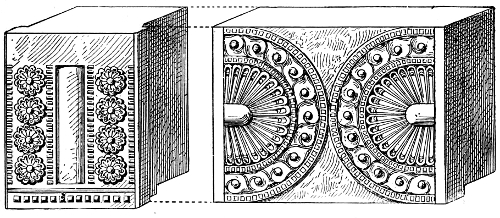
Fig. 278.—Alabaster Frieze, Tiryns. (P. & C.)
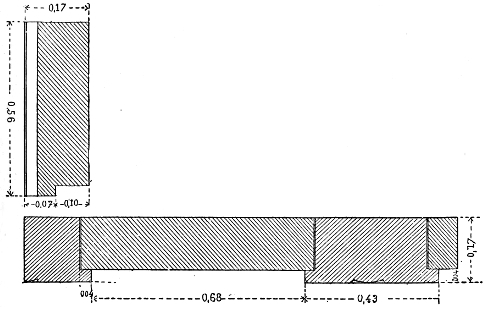
Fig. 279.—Plan of Fig. 278, Alabaster Frieze. (P. & C.)
229Pausanias thus alludes to Mycenæ and Tiryns:—"A
portion of the enclosure wall still remains, and the principal
gate, with the lions over it. These (the walls) were
built by the Cyclops who made the wall at Tiryns for
Præteus. Among the ruins at Mycenæ is the fountain
called Perseia, and the subterraneous buildings of Atreus
and his children, in which their treasures were stored."

Fig. 280.—Ivory Plaque from Mycenæ. (P. & C.)
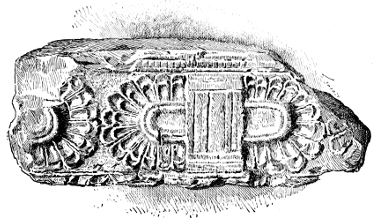
Fig. 281.—Fragment of Frieze from Mycenæ. (P. & C.)
230The sculptured lions are still there, so is the spring
Perseia, and the wonderful treasure-house of Atreus is still
the best preserved of all the domed tomb buildings of
Mycenæ.

Fig. 282.—Mycenian Palace, Second Epoch. Architrave and Frieze. (P. & C.)

Fig. 283.—Mycenian Palace, Second Epoch. Restoration of Entablature. (P. & C.)

Fig. 284.—Entablature of C. Selinous Temple. (P. & C.)
From the remains of Mycenian architecture, Messrs.
Perrot and Chipiez have ingeniously restored some of the
wooden construction of the palaces of that early period,
and have assumed that, from these early wooden constructions
231of Mycenæ, the Greeks developed the renowned
order of Doric architecture. We have seen that, in most
countries, stone architecture, in its earliest stages, was
but copies of the earlier wooden construction. The Doric
order seems to have been no exception to this rule, for
232here again the stone-cutter has borrowed from the carpenter.
To go back for some of the supposed beginnings
of the Doric frieze, the alabaster frieze, shown in plan and
elevation at Figs. 278 and 279, has been found in the ruins
of a palace at Tiryns.
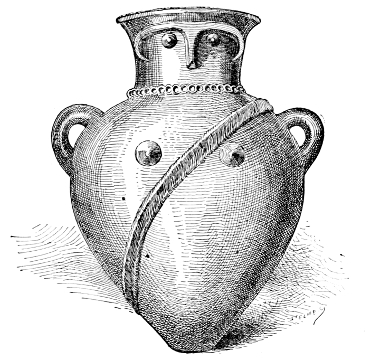
Fig. 285.—Vase of Woman’s Form, Troy. (P. & C.)
The pattern of this frieze is the same as that which has
been frequently found on other fragments from Mycenæ.
It resembles the Doric triglyphs and metopes in consisting
of a double design; two semicircles back to back,
divided by a vertical rectangular band, which is subdivided
by a vertical central division, having rosettes
arranged vertically on either side. Two similar designs
are seen on the ivory plaque (Figs. 280 and 281) and fragment
of frieze from Mycenæ. The same design appears
233also on the red porphyry fragments of the façade decoration
on the Mycenian beehive tombs.

Fig. 286.—Vase from Troy. (P. & C.)
An illustration from Perrot and Chipiez shows an
assemblage of the component parts of this frieze pattern,
with a portion of the architrave in wood (Fig. 282).
We refer the reader for a fuller description of the transition
of the Doric entablature from the Mycenian wood
construction to Perrot and Chipiez’ “Art in Primitive
Greece,” Vol. II. We extract a portion in explanation
of the illustrations (Figs. 282 and 283), where the
234analogy between the wooden construction of the former
and the stone construction of the latter is clearly established.
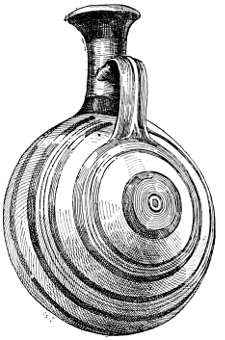
Fig. 287.—Pilgrim’s Bottle, Ialysos. (P. & C.)
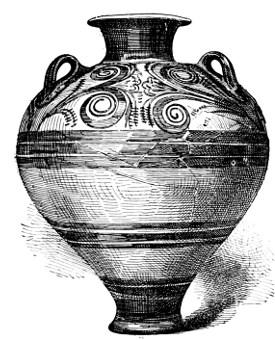
Fig. 288.—Three-Handled Amphora, Ialysos. (P. & C.)
In Fig. 284 we have the entablature of the C. Temple of
Selinous (one of the oldest examples of Doric architecture),
235rendered famous by the archaic sculptures embellishing its
metopes. There is not one of all the members we have
passed in review but which appears in it. Thus, a pair of
stone beams, corresponding with the like number of
timbers in the Mycenian wood frame, constitute the
architrave; and under listel C surmounting it, peers, flush
with the triglyphs, the small plank B.
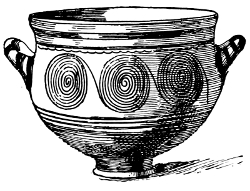
Fig. 289.—Vase with Geometric Decoration. (P. & C.)
Its lower section is adorned by the ornament known as
guttæ, the origin and meaning of which had hitherto been
unsatisfactorily explained. The guttæ are cylindrical in
shape detached from the walls, and in every respect
identical with the wooden pegs which occur in this situation
below the timber entablature. These same pegs again
appear above the frieze in the semblance of another
ornamental form, the “mutules” which, until lately, had
seemed every whit as strange and problematical as the
guttæ. The stone table N, in the lower surface of which
the guttæ are carved, is no other than our old wood-plate,
which in the Mycenian carpentry work exhibits these same
saliences or pegs, and served to fix the lining of the joists
below. If the Selinous mutules are sloped, it is because
they are associated with a ridged roof; but as a flat
covering has been assumed for Mycenæ, it involved—without
prejudice to the system—a horizontal position for
the mutules. As regards the frieze, both here and in
236every Doric building, it invariably consists, like the
alabaster frieze, of pillars D alternating with slabs E.
The function of the pillars (triglyphs) is to maintain the
slabs (metopes) in place.

Fig. 290.—The Marseilles Ewer. (P. & C.)
Comparison between these two figures will further show
all the details, with slight modifications, to be practically
similar. Thus, the whole of the Doric order, the basis of
all Greek architecture, including the column, longitudinal
238beams, and joists supporting the roof, as well as the
secondary decorative construction, had its origin in wooden
construction, and there is hardly any doubt but that the
Mycenian palace was its prototype. The Greeks of later
days forgot the borrowing of the timber construction, and
have given names to some parts, such as “guttæ” (drops),
which ought to be more correctly pegs.
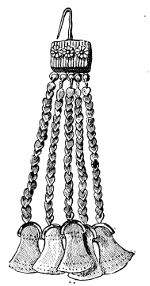
Fig. 291.—Gold Pendant, from Troy. (P. & C.)
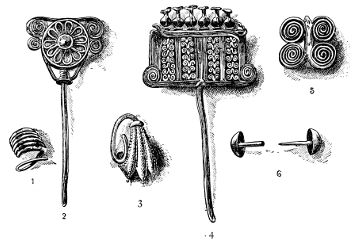
Fig. 292.—Gold Ornaments, from Troy. (P. & C.)
Great quantities of pottery and objects of industrial art
in metal—more especially in gold—have been found in
239the excavations at Mycenæ, Tiryns, and Troy. The
earthenware pottery is generally decorated in colours of
brown, red, and greyish white. The patterns are very
simple, bands and squares arranged in rows, some animal
forms, leaves with wavy stems, and spirals; some of the
pottery is decorated with marine animals, such as the
octopus, cuttle-fish, argonaut, and with seaweed. Some
curious shaped vases of woman forms (Figs. 285, 286) have
been found by Dr. Schliemann.
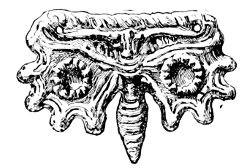
Fig. 293.—Gold Plate Ornament, from Troy.
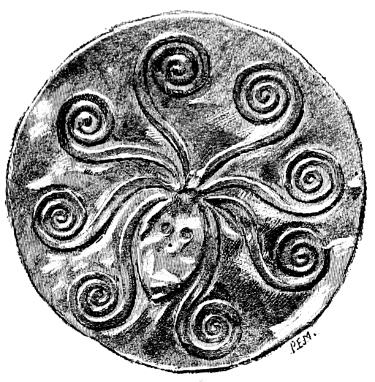
Fig. 294.—Gold Disc. (P. & C.)
A pilgrim’s bottle from Ialysos decorated with circular
bands, and an amphora with three handles, from the same
place, decorated with bands and lily forms with curled-back
petals, are very beautiful, and a small vessel with
geometric ornament are all of the same character (Figs.
287, 288, and 289). The most beautiful form of Mycenian
pottery is the Marseilles vase or ewer, in the Borély collection
(Fig. 290).
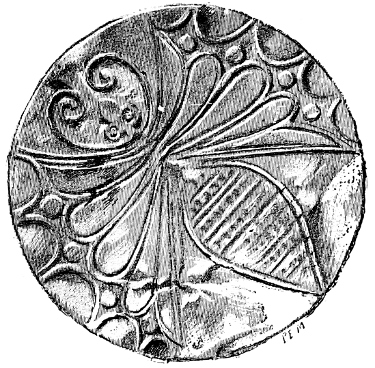
Fig. 295.—Gold Disc. (P. & C.)
The decoration is a brown-black on a light ground, and
240consists of the argonaut shellfish and seaweed. It is
likely to have been a copy from a metal object owing to
its shape, which is characteristic of metal.
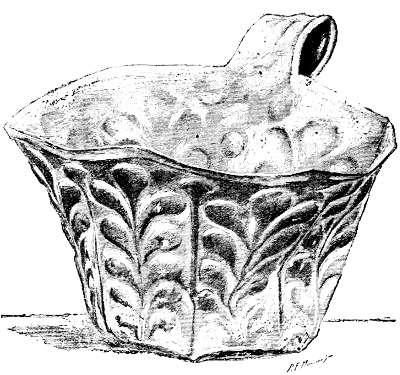
Fig. 296.—Gold Cup, Troy. (P. & C.)
In metal-work generally, and in the inlaying of gold
and electrum in a bronze ground, the Mycenian artists
have produced some splendid work. There are six chromolithographs
in Messrs. Perrot and Chipiez’s “Art in
Primitive Greece” of bronze Mycenian daggers inlaid
with gold and electrum of various shades: one has the
representation of panthers hunting birds on a river-bank—the
river is stocked with fish; another has a lion
hunt by armed men; a third, lions hunting gazelles; a
fourth has running lions; a fifth, spiral ornamentation;
and the sixth a free rendering of lilies both on handle and
241blade. The art and workmanship of them all are of a high
order.
Some gold ornaments from Troy (Figs. 291 and 292)
show their skill in hand-wrought jewellery.
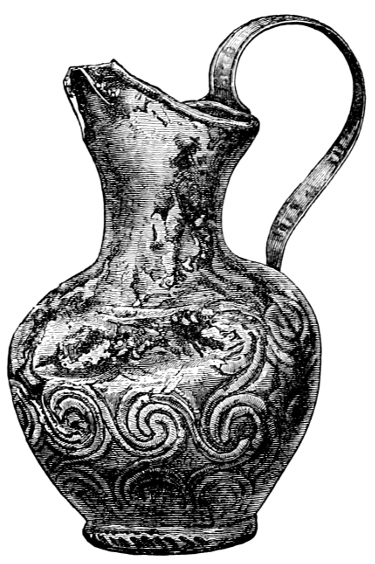
Fig. 297.—Gold Ewer, Troy. (P. & C.)
The golden butterfly (Fig. 293) and the two gold discs
(Figs. 294 and 295) are stamped on the metal, and were
used as dress decorations; they were found in great
quantities in the tombs of the women at Mycenæ. One is
an octopus design, and the other a butterfly.
The gold cup (Fig. 296) and ewer (Fig. 297), found at
Troy along with many others in silver, gold, and bronze,
give a fair idea of the beauty of shape and design of such
articles of this period. They show marks of injury by
fire.fire.
242
CHAPTER XIII.
THE GREEK AND ROMAN ORDERS OF ARCHITECTURE.
Although Egypt and Assyria are justly credited with the
creation of the models and the invention of the methods
that subsequently aroused to life the artistic genius of the
Greeks, yet the fact remains that, from all the wealth of
artistic forms bequeathed to succeeding ages by the
nations of hoary antiquity, prior to the Grecian period,
nothing has survived except those forms which Greece has
selected from her predecessors, and after remodelling them
by her own standards of beauty and fitness, has left them
as imperishable models of art for all nations that follow
her. All historic art and architecture, whether classic or
what not, since the days of Pericles, is based on Greek art,
notwithstanding the many modifications which we see in
Byzantine, Saracenic, Romanesque, and their offshoots.
All of them owe their life and vitality to Greek traditions
and to Greek principles.
We have seen that in the earlier Greek buildings,
such as Mycenian palaces, timber construction must have
largely entered into the architecture of that period, and it
is quite likely that timber was used for the greater part of
the Greek domestic dwellings, which may account for no
remains of them having been found.
The rock-cut tombs of Lycia, in Asia Minor, afford to us a
further proof of timber construction which may have been
in use in the Early Greek period in Europe, and these
tombs of Lycia tend to throw a side light on the probable
forms of Greek construction that existed between the date
of the Mycenian buildings and that of the oldest Doric
243remains that are at present known, for the Lycians had free
intercourse with the Ionians and European Greeks. The
earlier Lycian tombs are of a great antiquity, and the
same form of tomb has been used in Lycia down to periods
when Greece was far advanced in art (Figs. 298 and 299).
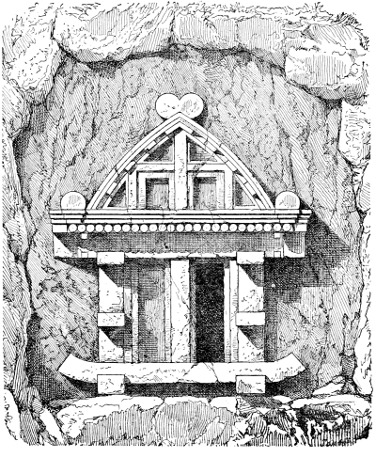
Fig. 298.—Lycian Rock-built Tomb at Pinara. (P. & C.)
244The Lycians formed a connecting link with the Anterior
Asiatics and the Ionian Greeks. Their origin and their
language were Asiatic, but the greater part of their art was
the product of Hellenic artists from Ionian Greece, and,
therefore, the Lycians must have been intimately connected
with the Greeks, and must have played an important part
in the development of Hellenic culture.
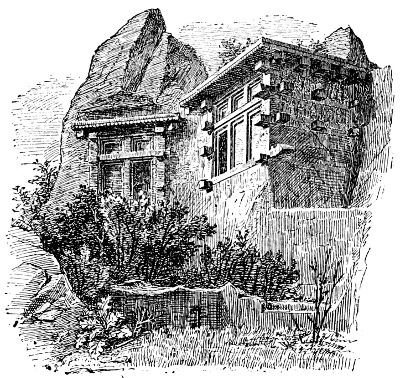
Fig. 299.—Lycian Rock-built Tomb at Pinara. (P. & C.)
The Greek temples were in some respects related to the
Egyptian temple. The pillar and beam construction was
copied from Egypt, and also the rectangular plan. The
great distinction between the two was that rows of columns
were placed outside the temples of the Greeks, which gave
to them a light and airy appearance, while in contradistinction
the Egyptians had their rows of columns inside
245the great hypostyle halls and galleries of their temples
which gave to them the effect of oppressive gloominess.
Broadly speaking, the Greek temple was something of the
model of an Egyptian temple turned inside out.
The interior of a Greek temple was simply a rectangular
cella or cell where the statue of the god or goddess was set
up, and sometimes a smaller chamber behind called the
treasury. The smaller temples consisted of the cella
only. A row of lighter columns sometimes supported the
roof of the cella, as in the case of the Parthenon. It was
only in the case of the larger temples that we find more
than one cell, while the Egyptian temple was often a maze
of large and small chambers, the multitude adding to the
mystery sought for in all Egyptian architecture. The
Greek temples were usually placed on a basement of steps,
and built on elevated positions. The Greeks sought all
publicity in the honouring of their deities, and in pleasing
the passer-by with the sight of their beautiful buildings, on
which their best decoration was shown on the outside.
Greek architecture dates from the end of the Archaic
age down to the death of Alexander the Great, from about
B.C. 600 to B.C. 333.
It is usually divided into three Styles or, as they are
called, “Orders,” namely, the Doric, the Ionic, and the
Corinthian. The Doric represents the European phase of
the Greek style, the Ionic and Corinthian having more of
the Asiatic features. The three orders were in use in
Greece at the same time, that is to say, a more severe and
correct phase of the Doric—the older order—was used
after buildings in the newer orders had appeared. Thomson,
in his “Ode to Liberty,” has alluded to the orders in
the lines—
“First, unadorn’d
And nobly plain, the manly Doric rose;
The Ionic then, with decent matron grace,
Her airy pillar heaved; luxuriant last,
The rich Corinthian spread her wanton wealth.”
246The Greeks made use of the vertical and horizontal line
in their architecture; the curved line was not used, except,
of course, in decoration. The half-diameter of the column
was the module or unit by which the whole building was
measured, and the column was limited in height according
to the diameter of its base. This did not preclude freedom
in design; on the contrary, freedom was allowed and
practised to such an extent that hardly two Grecian
buildings of any one order were alike in proportion or
design. Even the mouldings were varied in curve and
proportion; these members that were with the Romans
merely segments of circles, were in section with the Greeks
either parts of the curve of the ellipse or parabola, and in
many cases were designed by freehand. Some very subtle
devices to overcome natural optical effects when viewing
the buildings have been discovered by Mr. Pennethorne
and Mr. Penrose, more especially in the Parthenon.
It is well known that the entasis, or slight swelling made
in Greek columns, which makes a convex line of their
profiles, is done to prevent the column from looking
hollowed in the centre, which it would do if it were
perfectly straight; but in addition to this the architects
above named have discovered in the Parthenon a correction
in the vertical lines, to prevent the apparent tendency
which all high vertical lines have to spread out at the top,
in the making of the columns to incline slightly inwards;
and the steps of the basement and horizontal lines of the
architraves are found to be slightly curved upwards in the
middle to prevent the tendency that all long horizontal
lines have to droop in the middle.
Thus we learn how admirably painstaking, and how well
the Greeks applied their profound knowledge to their
architecture, as they did in everything else.
The joints of their marble masonry were as a rule so fine
and accurate in the fitting together, that it has been said a
razor edge could not be inserted between them.
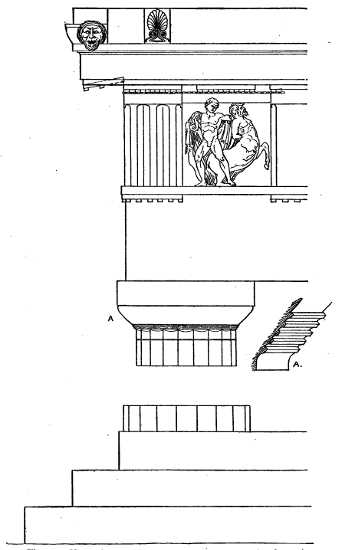
Fig. 300.—The Parthenon. Greek Doric, enlarged Section of Annulets at A.
The Greek Doric order (Fig. 300) is without a base; the
248shaft of the column has twenty flutings; sunk lines or rings
encircle the shaft a little below the moulding of the capital.
This moulding—the echinus—is of the best possible profile
that a supporting member could have; it is divided from
the shaft by three or five annulets. Above the echinus
rests the square tile-like cap—the abacus—which carries
the architrave. The latter is a marble beam with square
ends, and above the architrave is the frieze separated by a
band (taenia). The frieze has triglyphs alternating with
metopes. The former consists of channelled pier-like
forms one over and one between each column, and the
metopes are square panels between two triglyphs on which
are usually found sculptured subjects. At the bottom of
each triglyph, separated by a fillet, is a row of pegs, cylindrical
or conical in shape, called “guttæ” or drops.
Above the frieze the cornice projects, which in profile
consists of a flat band—the corona—and the crowning
member, an ovolo moulding. Under the projecting eave of
the cornice are slanting slabs of marble—parallel to the
roof tiles—placed one over each triglyph, and one over
each metope. These are called mutules, and they have
rows of guttæ on their under surface.
The crowning members of the cornice are carried around
the sloping lines of the triangular pediments at each end
of the building. On the pediments were sculptured the
figure subjects that had usually some relation to the
divinity to whom the temple was dedicated; as, for
example, on the Parthenon pediment the story of the birth
of Athene was the subject executed and designed by
Phidias, who also was the sculptor of the celebrated
Panathenic frieze that adorned the outer part of the cella of
the Parthenon. Ictinus was the architect of the Parthenon
and also of the temples of Apollo Epicurius at Bassæ and
at Phigallia, both in Arcadia. The Parthenon was finished
about B.C. 438.
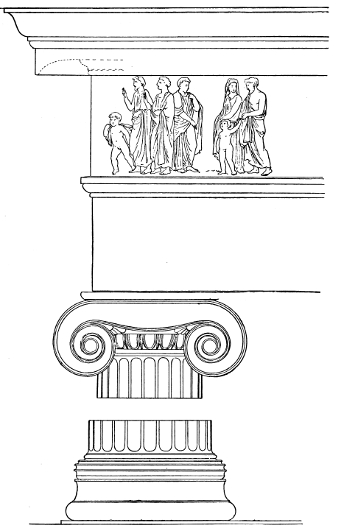
Fig. 301.—Temple on the Ilissus; Greek Ionic.
The Greek Ionic order in its capital and ornaments is
quite distinct from the Doric, and has more mouldings.
250The general plan of the temple is the same as in the Doric,
but the proportions of the various parts are more slender.
It has been generally thought that the Ionic volute was a
development of the volutes from the Persian capital at
Persepolis, but it is more likely, as before stated (on
page 87), that their prototype is found on capitals derived
from the Egyptian lotus. The architrave is sometimes
plain and sometimes divided into three facias. The frieze
was usually occupied with sculpture, and the base of the
column was composed of a double torus, with a hollow
between; the lower torus was plain, and the upper one
fluted (Fig. 301).
The Temple of Diana at Ephesus, the Erectheum, and
the Mausoleum of Halicarnassus were among the finest
examples of the Ionic order.
The Corinthian order was more Roman than Greek,
though of Greek invention, and was a rich type of architecture
that suited the growing vanity for love of display
with the Romans, who eagerly appropriated it in the second
century B.C., and erected many fine buildings in this order;
but often enriching the mouldings and all plain spaces
almost beyond recognition.
The most perfect and truly beautiful example of the
Greek Corinthian is the small Choragic monument of
Lysikrates at Athens (Frontispiece). Its praises and
merits have been spoken and written of by almost every
architect of eminence; it may be said of it and of the
Parthenon that for proportion, and for marvellous unity of
parts, and also for the perfect marriage of sculpture with
architecture, no buildings have ever been erected to equal
them.
The bell of the Corinthian capital, as in the Lysikrates
monument, is surrounded at the base by a row of water-plant
leaves; acanthus leaves spring from these, and out
of the latter spring volutes (cauliculi), the larger ones of
which meet at the upper corners; the four smaller ones
meet in the middle, and from the junction of the upper
251middle ones an upright palmate appears; rosettes are
placed between each of the eight acanthus leaves. The
abacus is moulded and curved in plan. The capital, as a
252whole, is designed in a masterly way, so as to give the
utmost variety and contrast of beautiful forms (Fig. 302).
The frieze is sculptured with figures which illustrate the
story of Dionysus and the Tyrrhenian pirates (Frontispiece).
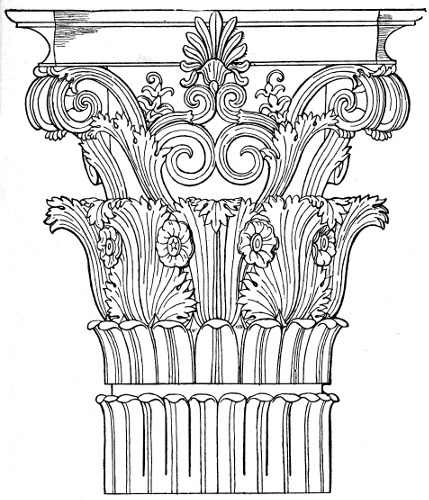
Fig. 302.—Capital of the Lysikrates Monument; Greek Corinthian.
The Etruscans were a race of people who settled in the
west of Italy, between the Arno and the Tiber, at a very
early date. Their origin is uncertain, but they are supposed
to have come from Asia Minor. They were known
as great builders, and were well skilled in all the arts. In
their larger works of fortifications and great walls they
used stones of an enormous size (Cyclopean). Many places
in Italy still attest to the presence of the Etruscans by the
remains of these Cyclopean walls.
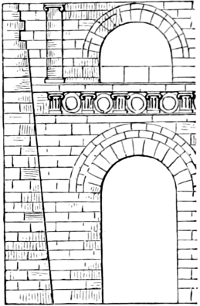
Fig. 303.—Etruscan Door from Perugia.
They were considerably advanced in architecture and
the minor arts at the time when Rome was first beginning
to show its signs of power, and
were the architects and builders
who executed all the works for the
early Romans. The Etruscans used
the arch very much in building, a
feature that the Greeks, although
they were acquainted with its use,
did not think it necessary in their
trabeated system of building. It
was, on the other hand, a very
favourite feature with the Etruscans,
from whom the Romans learnt the
use of it. The Tarquins were an
Etruscan family who were masters
of Rome in the sixth century B.C.,
and it was under these Emperors
that the great sewer, known as the Cloaca Maxima, was
built, part of which is still in existence.
This work consists of an arched waterway built in three
concentric rings of large wedge-shaped stones (voussoirs).
The Etruscans constructed temples, palaces, and dwelling-houses,
253all of which have perished or have been destroyed,
and only a few remains of their walled cities survive. The
gate of Perugia (Fig. 303) is the remains of a characteristic
Etruscan building. The arch is seen in perfect construction,
and the Doric frieze; above is seen a little Ionic
column. Etruscan architecture was mostly a kind of Doric
with a round shaft. According to Vitruvius the Etruscan
temple consisted of three cells, with one or more rows of
columns in front, the distance between the columns, or
intercolumniation, being much greater than in Greek
temples. Sometimes the temple consisted of a circular
cell only and a porch, like the later development of this
form in the Roman temple at Tivoli, and the Mausoleum of
Hadrian. Many Etruscan tombs have been found, consisting
of rock-built and detached structures. Some of the
rock-built tombs at Castel d’Asso have beams and rafters
cut out of the rock in imitation of wooden construction, and
also figures cut out in high relief all around the chambers.
Great quantities of vessels in pottery and metal-work
objects, and also jewellery, have been found in recesses of
the walls and roofs of these chambers. The temple of
Jupiter Capitolinus at Rome was an Etruscan building.
The Etruscan religion was dark and full of superstition;
their gods were mostly deities of the thunder and lightning
and subterranean spirits rather than divinities of comfort
and mercy, and the Romans adopted most of them in their
mythology. The Romans having mastered the principle
of the arch, made very good use of it. The greater number
of their principal buildings were erected in a mixture of the
arch and trabeated system.
The Roman Doric and Ionic orders were ill-proportioned
in their various members, bad in profiling, and also very
heavy in appearance. The Theatre of Marcellus is an
example of the former in its lower columns, and the
Temple of Fortuna Virilis an example of the latter.
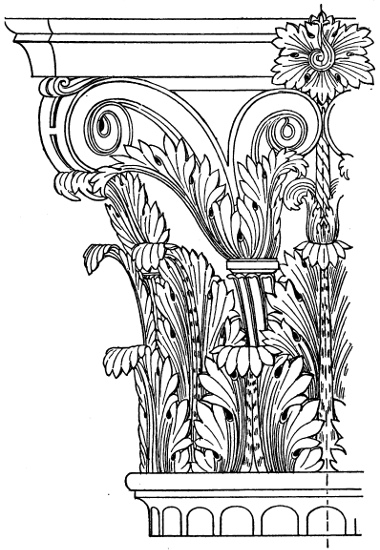
Fig. 304.—Roman Corinthian, half Capital of Mars Ultor.
The Tuscan order is noted for a more elegant development
of the Etruscan smooth column, and a great
254projection of cornice. A good example of this order may
be seen in the portico of St. Paul’s Church in Covent
Garden, London, designed by Inigo Jones.
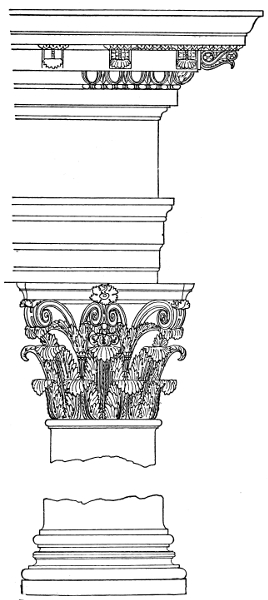
Fig 305.—Roman Corinthian, Entablature, Capital, and Base of the Pantheon.
256The Corinthian order received better treatment at the
hands of the Romans; some of their buildings are fine
examples of this order.
Some of the Roman Corinthian capitals are well
designed, and have a very grand and imposing effect, as
that of the Mars Ultor (Fig. 304) and the Pantheon. The
Mars Ultor capital is undoubtedly fine and rich in the
extreme; that of the Pantheon is more restrained; and in
both of them is used the olive-leaf variety of acanthus, each
tine or leaflet of which is hollowed out; and thus the
whole capital in a full light would have a sparkling effect
of light and shade, so that even at a great height and
distance from the eye none of the modelling would be lost
to sight.
The Roman Corinthian has more mouldings, and has
modillions or brackets in the cornice instead of the usual
Greek dentils (Fig. 305). The entablature from the
Temple of Jupiter Tonans (Fig. 306) is an example of the
inordinate love of over-richness and display that was so
characteristic of the Romans.
The Baths of Caracalla and of Diocletian are the only
ones that have remained to us in any state of preservation,
and show from the remains what splendid examples of
public buildings they must have been. They were built
of brick mostly, and lined with stucco on which frescoes
were painted.
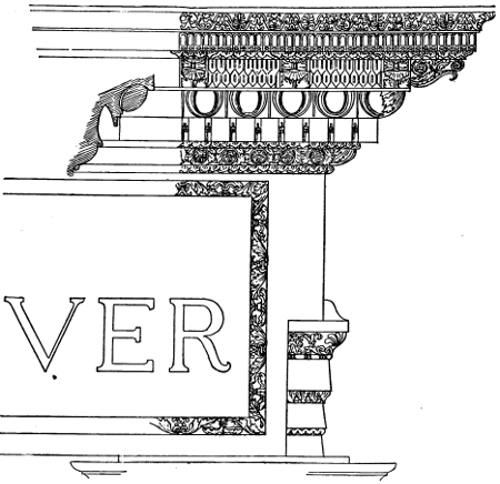
Fig. 306.—Roman Corinthian, Entablature of Jupiter Tonans.
The Baths of Caracalla, at the foot of the Aventine Hill,
were erected A.D. 217. They covered a rectangular piece of
ground about 1,150 feet each way, and were a great
assemblage of bath-rooms, public and private, of cold,
vapour, and hot baths; swimming and other kinds of
bath, gymnasium hall, libraries, reading-rooms, assembly
halls, &c., all comprised under the one roof, surrounding the
open courtyard in which was the principal swimming
bath, in a building 730 ft. by 380 ft. in dimension. In the
centre and at the back of this group of buildings was a
circular hall, with a domed roof, called the Solar cell, the
257walls of which were lined with brass. Some of the finest of
Roman statuary adorned these halls. The principal hall
of the Baths of Diocletian, erected at the beginning of the
fourth century A.D. is called the Ephebeum, and is still
used as the Church of Santa Maria Degli Angeli. It is
almost 300 ft. long by 90 ft. wide, and was restored by
Michelangelo. Its roof consists of three great cross vaults
supported by eight granite columns, 45 ft. in height.
258Another class of buildings that the Romans were fond of
was the amphitheatres. Remains of them have been
found throughout the Roman Empire, the most stupendous
of which was the Coliseum or Flavian Amphitheatre.
It was begun by the Emperor Vespasian and finished by
his son Titus, and its ruins still attest to its greatness.
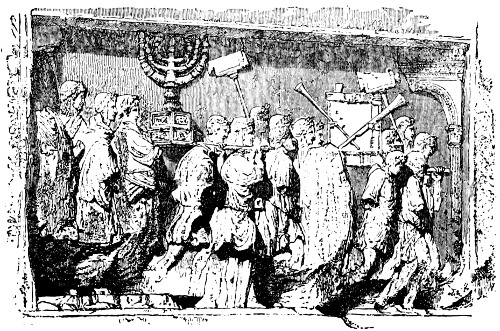
Fig. 307.—Bas-relief on the Arch of Titus. (P. & C.)
It is elliptical in plan, is four stories in height; the
three lowest are pierced with eighty openings, semi-circular
259arched, with columns and piers between. The
first story is Doric, the second Ionic, and the third Corinthian.
Each column and pier is raised on a stylobate, and
the columns carry entablatures continuously around the
building.

Fig. 308.—Jewish Candlestick, Arch of Titus. (P. & C.)
An almost solid wall is the feature of the fourth story,
which has a series of Corinthian pilasters, and projecting
brackets for carrying the awning poles. The façade is
built of stone quarried from the neighbouring hills, and
the interior portions are built of brick. The dimensions
are 620 ft. in length, 513 ft. wide, and 162 ft. in height.
Double corridors run around the building on each floor,
and it had seats for more than 80,000 spectators. Chariot
races, mimic sea-fights, when the arena would be flooded
artificially with water, gladiatorial combats, and fights with
wild animals and bulls, were among the amusements of
the Romans that were performed in the amphitheatres.
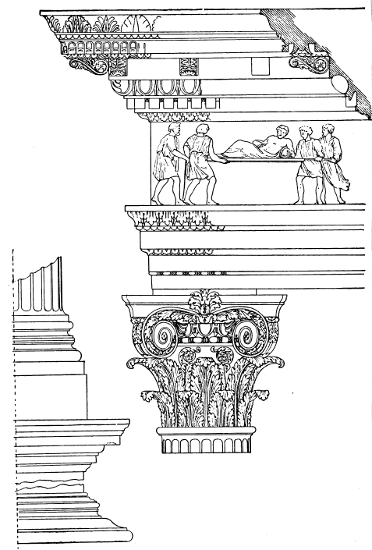
Fig. 309.—Roman Composite Order, from the Arch of Titus.
Other monuments, such as triumphal columns and
261arches, were erected by the Emperors to commemorate
their victories, and these were of the most elaborate
and rich description. The column of Marcus Aurelius,
known as the Antonine column, and the column of
Trajan set up by that Emperor in Trajan’s Forum at Rome
in commemoration of his victory over the Dacians, are
the two best known of these commemorative monuments.
The latter column has been reproduced, and a cast of it
may be seen in the South Kensington Museum. The
original is nearly 133 ft. high, and is richly sculptured
with bas-reliefs on marble slabs fastened together in a
spiral form around the central structure. The order is
Doric, the shaft being set up on a large pedestal with very
fine sculptures of figures, armour, and inscriptions.
The triumphal arches are rectangular masses of masonry
with arched openings, sometimes with one arch and sometimes
three, a large one and two smaller ones, as the
arches of Constantine and Septimus Severus; and sometimes
smaller ones had piers and pilasters with a lintel
entablature instead of an arch, as in the Goldsmith’s Arch
in Rome. The arch of Titus (erected to commemorate the
taking of Jerusalem A.D. 70), which is one of the finest of
these monuments, is interesting for two reasons: one is
that it has reliefs on it recording the capture of Jerusalem,
with the representation of the seven-branched golden
candlestick of the Temple (Figs. 307, 308), and the other
is that the arch itself is one of the finest examples of the
architectural order that was created by the Romans—the
Composite—(Fig. 309), which is a grafting of the Ionic on
the Corinthian.
The decoration of this order is extremely rich in
character: the lower half of the capital has the Corinthian
leaves, while the upper half is almost the whole of the
Ionic voluted capital added; the cornice has both the
Ionic dentils and the Corinthian modillions. The arch of
Septimus Severus and the Baths of Diocletian are of the
Composite order.
262
CHAPTER XIV.
GREEK AND ROMAN ORNAMENT.
Greek ornament—as found on the carved mouldings,
friezes, acroteria, antifexes, and capitals, or, as in the
painted variety, found on vases, plain mouldings, bands,
plates, and other surface decorations, or incised on the
bronze cistæ and mirrors—was of a severe and refined
order, almost all of which had its birthplace in Egyptian
and Assyrian forms, that in the first instances were used
in a symbolic sense, but under the hands of Greek
artists had lost all their former meaning, and were
developed and partly transformed into a wealth of purely
æsthetic forms.
The simplest forms were frets or the so-called key
pattern (Figs. 310, 311, and 315).
The word meander is sometimes applied to the Greek
263frets; this is not correct, as the word implies a curved line,
not a rectangular one.
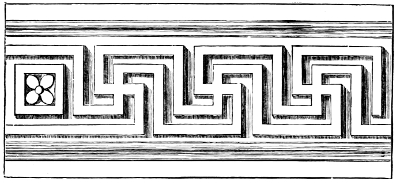
Fig. 311.—Greek Carved Fret.
The guilloche, snare-work, or cable ornament, is used
on flat bands, and also as the decoration of torus
mouldings (Figs. 312 and 313).

Fig. 312.—Treble Guilloche Ornament.
The Greeks used the honeysuckle pattern in an endless
variety of forms both in carving and in painting, examples
of which are at Figs. 314 and 315.
The ivy was used very much in borders of their
painted vases (Fig. 316).
The ogee moulding was usually decorated with the
water-leaf and tongue ornament, and the ovolo with the
characteristic egg and tongue, and the round fillets with
264beads and reels. A fine example of this group of decorated
mouldings comes from the Temple of Minerva Polias
at Athens (Fig 317).
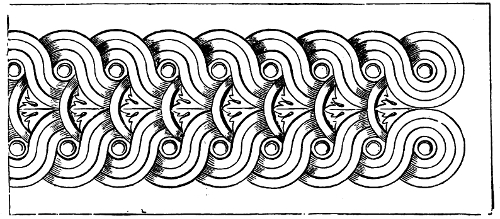
Fig. 313.—Double Guilloche.
An elongated type of the egg and tongue comes from
the Erectheum (Fig. 318).
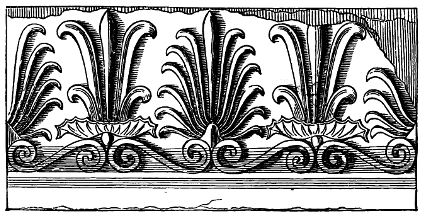
Fig. 314.—Anthemion (carved), from Apollo Epicurius.
The Greeks seldom used large scrolls in ornament; an
exception is the scroll ornament from the roof of the
Lysikrates monument, and in the Corinthian cauliculi or
volutes (see Fig. 302).
The Greek variety of acanthus foliage is seen in the
capital from the same monument.
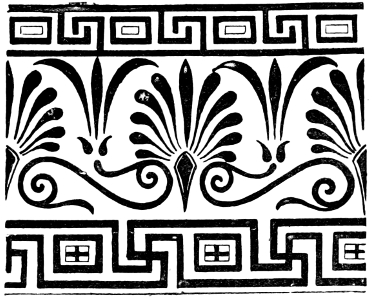
Fig. 315.—Greek Border with Fret Bands.
265Roman architectural ornament was simply Greek with
a few variations, not always improvements. It was less
refined, but in some cases, especially in the examples
of large acanthus scrolls on friezes, panels, and pilasters
(Fig. 319), and in their large capitals, the ornament was
designed with great skill and virility. They used the
softer-leaved variety of acanthus—the mollis—while the
Greeks used the spinosus, or prickly-leaved variety.
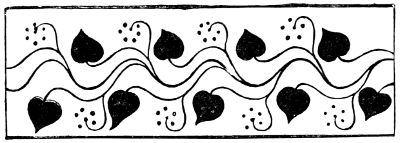
Fig. 316.—Greek Ivy Meander Border.
The decorations of the Roman mouldings were less
elegant than those of the Greeks, owing to the contours
being segments of circles where the Greeks used forms
266like conic sections, and the execution was less artistic in
the Roman mouldings (Figs. 320, 321, 322).
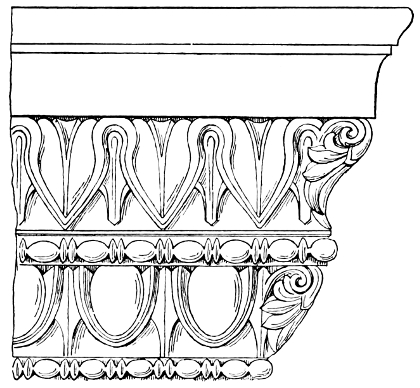
Fig. 317.—Decorated Mouldings from the Temple of Minerva Polias; Ogee Ovolo, and Beads.
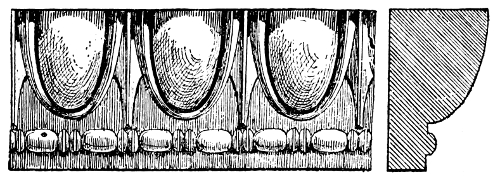
Fig. 318.—The Ovolo, with Egg and Tongue, from the Erectheum.
The domestic architecture of Greece is guessed at by
the remains of Pompeii and Herculaneum, which, though
Roman provincial cities, were in style and decoration a
fair reflection of Greek art. The remains of the art found
268in these cities have been styled Greco-Roman. The
destruction of Pompeii was in the year A.D. 79.
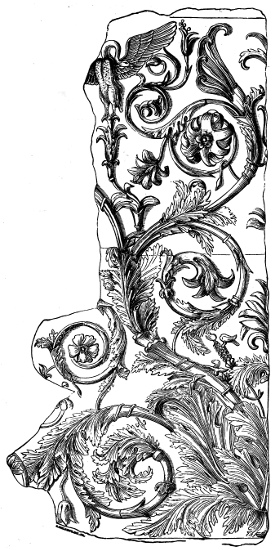
Fig. 319.—Ancient Roman Panel, Florence.
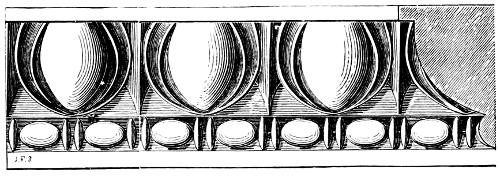
Fig. 320.—Ovolo and Astragal Mouldings; Roman.
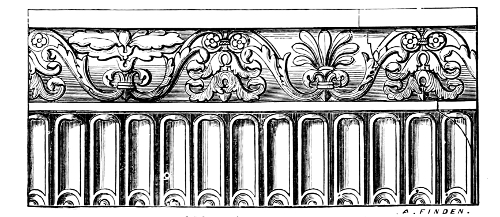
Fig. 321.—Ogee and Fluted Cavetto Moulding; Jupiter Tonans.
The general arrangement of a Roman house was
rectangular in plan, with, and sometimes without, a
vestibule in front. The front door opened on a passage
called the prothyrum which led to the atrium, an open court
partly roofed; the opening was in the centre, and was
called the impluvium; exactly under it in the floor was a
tank called the compluvium; this received the rain water.
In large houses the atrium roof was supported by
columns, then the atrium was sometimes called the
cavædium, at the end of which opened out three rooms
269the larger and central one was called the tablinum, and the
two side ones alæ; these were the rooms where the family
records, documents, histories, deeds, &c., were kept. A
passage led from the atrium to the principal private
reception-room, called the peristylium, which had a roof
partly open to the sky. This room was the finest in the
house, and was richly decorated with rare marbles, bronzes,
and fresco paintings where the owner was wealthy.
Round the peristyle were arranged the smaller rooms, such
as the parlours called exedræ, the chapels lararia, and the
picture galleries pinacothecæ. Kitchens and other offices
were behind, as also were the various sleeping-rooms.
Some of the rooms were badly lighted, and had to depend
for the light from the doors or artificial light, but
in some cases windows, rather small in size, were placed
high up in the walls.
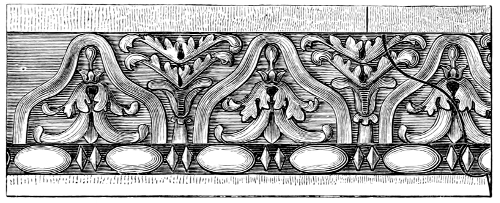
Fig. 322.—Ogee Decorated, and Astragal; Jupiter Stator.
The walls of the Pompeian houses were richly decorated
in strong colouring, where vermilion, black, green, and
orange predominated. The subjects were figure groups,
animals, birds, and grotesques of all kinds, encased in
fantastic architectural framings (Fig. 323). Sometimes a
dead wall of the yard would be painted elaborately to
represent a garden. Sculpture also decorated the apartments,
270the floors were in mosaic, and the ceiling richly
panelled and decorated. Roman, Greek, and Pompeian
ornament will again be noticed in the second volume
under the minor arts of these countries.

Fig. 323.—Mural Painting from Pompeii.
271
CHAPTER XV.
INDIAN ART AND ARCHITECTURE.
An Aryan race of people came into India about B.C. 2000
across the Upper Indus. They settled in the first instance
in the Punjab, in the watershed of the Sutlej and the
Jumna, and finally in Oude and the east. After one thousand
years they lost their purity of race by mixing with
the aboriginal natives.
About this time the prophet Sakya Muni, or Buddha,
arose, and apparently succeeded in converting nearly the
whole of Northern India to Buddhism. He died in
B.C. 543, and three hundred years after his death, or about
B.C. 250, King Asoka proclaimed Buddhism as the state
religion, and for about one thousand years after it continued
as the state religion of India, although at the
present day there are said to be no native Buddhists in
India.
Historic art in India began in Asoka’s reign. The
earlier rock-tombs and other architecture of Asoka’s time
are evidently stone copies of still earlier wooden constructions.
Monuments consisting of edict columns or lats, peculiar
to this period, have been found in isolated positions
erected to the honour of Buddha in the neighbourhood of
Allahabad and Delhi; they are above thirty-three feet in
height, and have a curved, inverted, bell-shaped capital on
which probably stood a wheel, the emblem, or a lion, the
symbol, of Buddha. This capital is similar in form to the
272base of a Persian column, and some of the ornamentation
around the neck of the column is composed of Greek and
Assyrian forms, all of which proves that the early Indian
art owes something to Assyria, Persia, and Greece
(Fig. 324). Probably this came about by the subjugation
of Persia by Alexander the Great, who is said to have
pushed his conquests as far as the banks of the Indus.
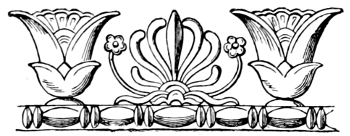
Fig. 324.—Ornament from Asoka’s Pillar, Allahabad. (B.)
The next great immigration that we hear about is that
of the Southern Dravidian people, who crossed the Lower
Indus to Guzerat, and in course of time had settled themselves
in the southern angle of India, in the Madras
Presidency. They were a great building race of people.
Another immigration took place in the first or second
century B.C., and continued for some centuries after the
Christian era. These people occupied nearly the western
half of India, and erected buildings from Mysore in the
south to Delhi in the north. This architecture is known as
the Chalukya and Jaina styles. The fourth great immigration
was that of the Mohammedans from the eleventh
to the fourteenth centuries.
The four principal styles of Indian architecture are the
Buddhist, the Dravidian, the Northern Hindoo, and the
Chalukyan or Jaina.
In addition to the edict-pillars as illustrations of
Buddhist architecture, many solid mounds of masonry,
called topes, dagobas, or stupas, are found in some parts
of the Punjab and north of India. These are relic-mounds,
erected over the supposed relics of Buddha and of Buddhist
273priests, and are sometimes erected alone to the honour of
Buddha. One of the most important is the Sanchi Tope
in Bhopal, Central India (Fig. 325). Mr. Ferguson, in his
“Study of Indian Architecture,” describes this remarkable
monument as follows: “It was built probably (the tope)
B.C. 500, the stone railing B.C. 250, and the gateways
A.D. 19 to 37. The principal part of the building consists
of a dome 106 feet in diameter and 42 feet in height. The
fence by which this tope is surrounded is extremely curious.
It consists of stone posts 8 feet 8 inches in height, and a
little more than 2 feet apart, surmounted by a plain architrave,
and between every two uprights three horizontal
cross-pieces of stone are inserted.
Still more curious are the four stone torans or gateways,
one of which—the eastern—is shown at Fig. 325. It consists
of two square pillars covered with sculptures, and with
bold elephant capitals, rising to a height of 18 feet 4 inches.
Above these are four lintels slightly curved upwards in the
centre, and ending in Ionic scrolls; they are supported
by continuations of the columns, and three uprights are
inserted between the lintels. All this construction is
covered over with elaborate sculpture, and surmounted by
emblems. The total height is 33 feet 6 inches.” Sir G.
Birdwood says: “The symbols are the trisula, the wheel,
and the lion, representing the Buddhistic triad, Buddha,
the law, and the congregation. The ground plan of the
stupas or topes, with the return railings and the projecting
doorways or entrances, form a gigantic swastika (‘auspicious'’),
the mystic cross (fylfot) of the Buddhists.”
Ferguson says the Buddhist dagoba is a direct descendant
of the sepulchral tumulus of the Turanian races, like those
found in Etruria, Lydia, and among the Scyths of the
Northern Steppes.
It is plainly seen that the details of Buddhistic ornament
are derived from Greek and Assyrian sources mixed with
Buddhist emblems; a few native ideas may be seen in the
construction, and in the substituting of the Indian elephant
274for the Assyrian or Persian bull. A fine cast of the Sanchi
gateway may be seen in the South Kensington Museum.
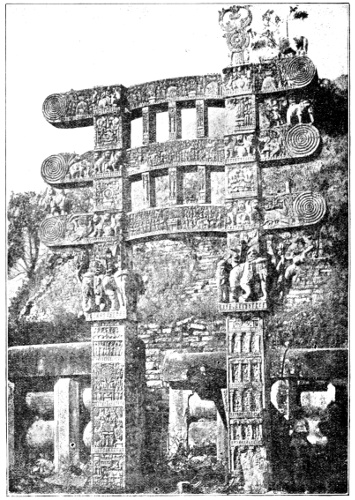
Fig. 325.—The Sanchi Tope, Bhopal, Central India.
275As an example of Hindu or Brahminical architecture
the rock-cut temple at Ellora, called the Kylas, or
“Paradise,” is one of the finest and most wonderful
(Fig. 326). The interior of the temple is not only cut out
of the solid rock, but the exterior also, with its wonderfully
rich square porch, and its two great square pillars or
deepdans (lamposts) left standing in front, all literally cut
out of the solid rock.
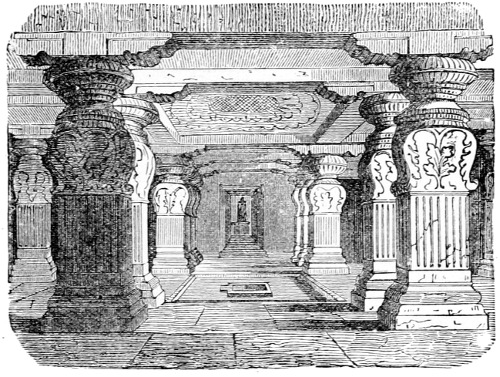
Fig. 326.—Brahminical Rock-Temple at Ellora.
The interior, which has excited the wonder and admiration
of all travellers, is rectangular in plan; the pillars
are square and very short in proportion to their breadth;
the bases are composed of plinth, circular hollows, and a
torus moulding; the square shaft is fluted, the upper
extremity of which is convex and ornamented with foliage;
and above this are rings, neck, and a capital in the shape
of a depressed sphere. Above the capital are bracket
supports, on which the beams rest. The roof is panelled,
and each panel has a central floral decoration. The
Kylas was supposed to have been cut out of the rock by
the Southern Dravidians. The Hindu or Brahminical
276temples of the earliest type exhibit a marked imitation of
timber construction in almost every detail (Fig. 327).
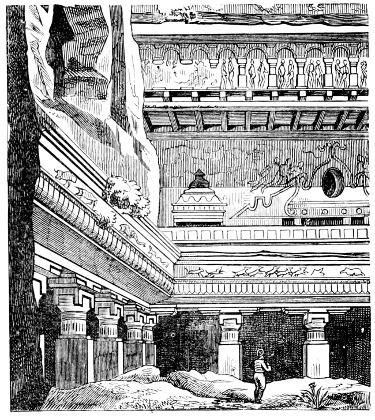
Fig. 327.—Temple of Biskurma at Ellora.
Brahminical architecture has three varieties—the
Dravidian, which is common to the Dakhan, south of the
Kistna; the Chalukyan, between the Kistna and the
Mahanuddi; andand the Indo-Aryan, which prevails in
Hindustan. The Dravidian temple is characterized by a
horizontal system of storied towers, and has a grand and
imposing look of solemnity. Examples of Dravidian
architecture occur in the temples at Seringham, Tinnevelly,
Madura, Perin, Vellore, &c.
The Chalukyan is distinguished by its star-like plan
and pyramidal tower. The great double temple of Siva at
277Hullabeed, Mysore, is an example of this architecture. It
is remarkable for its rich system of sculptured friezes.
The building is raised from the ground by a terrace five or
six feet in height; above this is an extraordinary frieze
of two thousand sculptured elephants; the next frieze above
is composed of lions, then a band of rich floriated scroll-work;
above this is a frieze of horsemen, then another
band of scroll-work; and over this appears the frieze with
the conquest of Ceylon by Rama; other friezes and bands
above this are divided by mouldings, and have celestial
birds and beasts; a scroll-work cornice over all supporting
a rail divided into panels, in each of which are two
figures. Windows of pierced stone are over these, and
groups of sculptured gods of the Hindu pantheon at
regular intervals. The usual towers are wanting in this
wonderful building, and doubtless would have been added
afterwards had not the work been stopped owing to the
Mohammedan invasion in A.D. 1310. Other temples of the
Chalukyan style are seen at Somnathpur, at Baillur, in
Mysore, and at Buchropully.
The Jainas sect makes its appearance in India about the
seventh or eight century. They did not believe in the divine
inspiration of the Vedas, or sacred books of the Hindus,
but as long as they observed caste and acknowledged the
gods of the Hindu pantheon—which they strictly did—the
Brahmans did not question any other of their particular
beliefs, and refrained from persecuting them. If the
Buddhists, for instance, had only conformed to the
observance of caste, they would never have been driven
out of India by the Hindu devotees of caste.
The Jainas are peculiar in their worship of their four-and-twenty
saints called “Jins.”
The architecture of the Jainas began when the Buddhist
was dying out. One of the characteristics of Jaina architecture
is the horizontal archway, and another is the
bracket form of capital (Fig. 328).
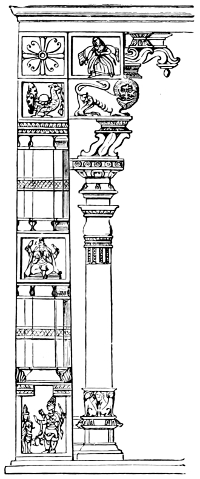
Fig. 328.—Pillar and Bracket,
Doorway of a Pagoda.
Jaina temples are found at Palatina and Girnar in
278Gujarat, and the famous “Tower of Victory,” erected to
commemorate the victory of the Rajput raja Khambo over
Mahmud of Malwa, A.D. 1439.
An interesting illustration of the transition of Indian
architecture to Mohammedan
forms occurs in the Mosque of
Moháfiz Khan, at Ahmedabad.
This mosque was built in the
sixteenth century, and is Hindu
in character, with a Saracenic
influence in the decoration
and other details. The great
omissions in the sculptures are
the animal and figure forms, so
dear to the Hindu artist, but
the Moslem religion forbids the
representation of these, and in
place of figures in the window
spaces we see some of the first
indications of Saracenic tracery,
executed most likely by Hindu
workmen. These windows are
typical of, and similar to, the
exceedingly fine tracery of the
windows of the Buddha at
Ahmedabad, which consist of
beautiful stems and floral tracery.
From the eighth to the
eighteenth centuries India was
subject to the invasions of the
Arabs, the Afghans, and Mongols, who devastated the
country and sacked and pillaged many of the finest Hindu
shrines, and, on the other hand, built some magnificent
mosques and palaces, in which the Saracenic influences
are predominant.
The palace of Delhi was built in 1627-1658 by the
Mongol Emperor Shah Jehan, the king who built the
279present city of Delhi, which city contains the finest
examples of the Mohammedan style in India. The
Dewanne Khas, or principal hall of the palace of Delhi
(Fig. 329), is a very rich and ornate example of this style.
It is vaulted like a Gothic cathedral and is inlaid throughout
with rich marbles and mosaic work. It has a niche inlaid
with precious stones in which once stood the famous
peacock throne of Delhi. The throne was made in
enamelled work, in the shape of a peacock with a spread-out
tail, and was set with diamonds and precious stones to
imitate the natural colours of the peacock. It was carried
off by Nadir Shah at the sacking of Delhi, A.D. 1738.

Fig. 329.—Interior of the Palace at Delhi; Seventeenth Century.
Around the frieze of one of the halls of this palace runs
280the famous inscription, “If there is a heaven on earth, it is
this, it is this.”
One of the loveliest and most impressive buildings in
India is the Taj Mehal at Agra, on the river Jumna. It is
in Mohammedan style with domes and minarets, and is
erected on a platform 300 feet square and 18 feet in height.
It was erected by the Emperor Shah Jehan about 1645 as
the tomb of his favourite wife. The Emperor himself is
also buried in the Taj. On the centre of the platform is the
tomb, 186 feet square, with the corners cut off; over this
rises the dome, 58 feet in diameter and 80 feet in height.
The outside of the building is faced with white marble,
inlaid with beautiful designs in coloured marbles and
precious stones. The effect of this beautiful building in
its dazzling whiteness surrounded by luxuriant vegetation,
as seen under a moonlit sky, is said to be enchanting and
beyond description.
The industrial arts of India will be noticed in the second
volume of this work.
281
CHAPTER XVI.
CHINESE AND JAPANESE ARCHITECTURE.
The architecture of China does not possess what we might
call a serious character. Founded mainly on Buddhistic
elements, as far as the more important efforts of their
temple architecture is concerned, the only original
development that marks the Chinese structural design is
the pagoda tower—in itself really a Buddhistic idea—but
the Chinese have the credit of carrying it further in their
Taas or Pagodas by placing story upon story until sometimes
a great height was attained; as, for example, in the
great porcelain tower at Nankin, which is 200 feet in height,
consists of nine stories, and is 40 feet in diameter at the
base. Each story diminishes in size, and the concave
roof of every lower story is in front of the receding one
above. Varnished pillars, resting on a deep stone basement,
support the verandah-like roof of the lowest story,
and a fence of gilded trellis-work surrounds the lower half
of the pillars. The eaves of the roofs curl upwards and end
in points from which bells are suspended. Carved dragons
peer out from under the rafters, and the whole building,
inside and out, as well as the roof tiles, is faced with white
porcelain slabs or tiles fastened to the inner brick structure;
some parts—the roofs especially—are painted in
alternating bands of green, yellow, and red.
The greater part of the Chinese houses are wooden
constructions, and have movable walls of various materials,
which slide in framework. The walls do not support the
282roof, which is, as a rule, supported on posts, independent
of them.
In the gateways to the Confucian temples some attempts
at architectural construction are seen, where a column
would have a proper capital and a base, and a lintel or
arched opening would appear. These Pae-lus or triumphal
gates have the usual fantastic curled roofs so peculiar
to Chinese architecture (Fig. 330).

Fig. 330.—Gateway of the Temple of Confucius, Shanghai.
The genius of the Chinese as great builders and
engineers is expressed better in their works of public
utility, as in their finely-constructed bridges, their canals,
and more particularly in the Great Wall, built to protect
their country from the incursions of the Northern hordes,
and which is a monument at the same time to their native
love of exclusiveness from surrounding nations.
The Great Wall was built about B.C. 200, is 1,400 miles
long, 15 to 30 feet in height, 25 feet thick at the base, and
slopes upwards to 20 feet in width at the top. It has
bastions or towers of defence at intervals, which are 40 feet
square at the base, and the wall is carried over hills and
283mountains regardless of all obstacles. Their country is a
network of canals, some of which are 700 miles in length.
Notwithstanding all this, they are no further advanced
in architecture than they were two thousand years ago, or,
indeed, in hardly any of the arts. At the same time the
Chinese are remarkably skilled in porcelain manufacture,
silk weaving, embroidery, colour printing, ivory and jade
carving, enamelling, metal-working, casting, and decorative
painting. Their ornament is very conventional and
rich in colouring, but their ornamental forms are limited,
and their decoration so full of repetition that it becomes
very monotonous when judged by a European standard.
The architecture of Japan differs very slightly from that
of China, as it is either an offshoot from the older civilisation
of China, or has been derived from the same sources,
through the Buddhist religion. Some changes have
occurred in the architecture of Japan in recent years owing
to the more extended use of stone in their buildings, which
has been brought about by their interchange of ideas with
Western nations.
Their Buddhist temples are similar to the Chinese, with
their curious turned-up roofs, but the Shinto temples are
usually covered with roofs that have great projecting
eaves, which do not turn up at the angles. The porches or
gateways (Torii) to the temples are built in stone, but in
imitation of their earlier wooden construction; they are
of the pillar-and-beam order, and recall somewhat the
construction, on a smaller scale, of the “torans” or gateways
of the Sanchi Tope in India (Fig. 325).
The Japanese carve their wooden rafters, beams, posts,
lintels, and stringcourses very skilfully, with conventional
ornament, dragons, and grotesque animals. The better
class of Japanese dwellings are usually of two stories; the
lower story has a verandah, and the upper one is recessed
back, and is smaller than the lower, which produces a
pleasing effect. Their walls are, like the Chinese, more or
less movable partitions.
284Japanese ornament and industrial art (which will be
treated in another place) is more virile, has more variety,
and is more artistic in execution, though governed less by
architectural arrangement, than the art of the Chinese.
The Japanese are, however, every day becoming more
impregnated with Western ideas, and, as a consequence,
their wonderful artistic feeling and native refinement of
design, execution, and colouring are in a fair way of losing
those seductive qualities that hitherto have characterized
the artistic productions of these interesting people.
285
CHAPTER XVII.
EARLY CHRISTIAN AND BYZANTINE ARCHITECTURE.
For the first three centuries after the birth of Christ the
early Christians suffered much persecution and martyrdom.
The new religion was ridiculed and despised, and
the converts of the new faith were obliged to hold their
meetings and to worship in secret, which they did in the
narrow but extensive catacombs in which they secretly
buried their dead. The catacombs are found chiefly in the
neighbourhood of Rome and Naples, and are cut in the
dark soft tufa stone, in the nature of long passages, winding
and doubling in their labyrinthine twistings. Some of
these passages are so narrow as to barely admit of one
person to pass in height or width. On either side of these
narrow ways are cut out openings just large enough for
the bodies of deceased persons to be deposited.
The body of the deceased was thus thrust into the
narrow tomb, and with it was buried a flask of sacred oil.
The entrance was then closed with a stone, on which
would be engraved the name or initials of the dead.
Some of the catacombs were hollowed out in places into
lofty and capacious chambers and niches. These were
used as chapels for the early Christian worship, the walls
and ceilings of which were decorated with paintings of a
very primitive character.
The more important of these catacombs in which chapel-like
rooms are found are those of S. Calisto, S. Sebastiano,
S. Lorenzo, and S. Agnese, at Rome; and at Naples those
of S. Mario della Sanita, S. Gennara de Poveri, and S.
Maria della Vita.
286Constantine became Emperor of the Romans (A.D. 312-337),
and in the course of his reign embraced, or professed,
Christianity, and proclaimed it the state religion. After
this event freedom was allowed the converts of the new
faith to celebrate their love-feasts in a public and open
manner.
It was found difficult all at once to provide the necessary
buildings for this purpose, and we hear of the heathen
temples and great halls of the Roman baths being used
as Christian churches—the Pantheon at Rome was used
for this purpose—but few of these buildings were large
enough or of the right shape to hold large masses of the
faithful, and at the same time to provide for the celebration
of the worship by the bishops and priests in presence
of the congregation, besides the objection of having the
odour of heathenism still clinging to them. The supposed
model for the early Christian churches was found in the
halls of justice and commerce of the Roman times. It is
doubtful, however, whether the early Christian architecture
owed so much to the basilica form of justice halls as has
been so generally supposed.
The general plan of the basilica churches was rectangular,
with a semicircular portion added to the back, as
the plan of the apse; in the front was the atrium, a free
quadrangular fore-court surrounded with pillars. This
was usually roofed on the four sides, with an opening in
the centre, like the atrium of a Roman house.
Next to the atrium was the narthex, or porch, which led
to the church direct. Sometimes there was only the
narthex without the atrium.
A central avenue, or nave, with two aisles, and the
semicircular apse at the end of the nave, was the usual
interior form of the early basilicas.
The nave was wide and lofty, and was usually divided
from the aisles by two rows of columns, and from the apse
by a large semicircular arch.
The capitals of the columns carried the arcaded upper
287story, in the walls of which were the windows that lighted
the church. In the oldest type of the basilica there was
no window in the apse, so this portion of the church was
bathed in a mysterious twilight, adding a poetic charm to
the gold mosaics with which the roof of the apse was
decorated.
Sometimes windows were introduced into the low walls
of the aisles; the aisles were covered with shed-like
wooden roofs, which were supported on trussed framework.
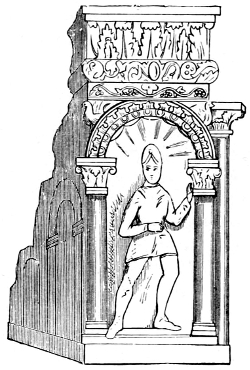
Fig. 331.—Ambo or Pulpit from St. George’s at Salonica.
Sometimes the trusses were ceiled, and on the ceilings
were painted scriptural subjects. The wall spaces of the
second story in the nave
were also occupied with
paintings of sacred subjects.
The floor of the apse was
raised higher than that of
the nave, and was approached
by steps; seats
were placed around the wall
of the apse for the priests,
and in the centre was the
elevated throne for the
bishops. A portion of the
nave space was sometimes
appropriated for the choir,
screened off by a marble
structure, and at either end
of the choir were placed the
“ambos” or pulpits (Fig.
331).
The altar was in the centre of the apse, generally over
the tomb of a Christian martyr, and underneath all, or
sometimes a portion only of the church, was the crypt.
The nave usually had three entrance doors, and the
aisles one or more each. As the heathen religions, and
consequently the ancient temples, fell into disuse, there
288was plenty of building materials ready formed and dressed,
which the architects of the new buildings appropriated for
their own purposes in the erection of the basilicas. This
accounts for the great number of Roman Corinthian and
Ionic columns found in the buildings of the early Christian
architecture, and we often find that when an ancient column
was too short, it was simply raised on a higher base, and
if too long it was cut down to fit its new position. It was
generally in the later basilicas that this occurred, as might
be expected, for the earlier basilicas are richer and better
decorated in their beautiful details, seeing that the early
Christian builders had the first choice of the rich ornamental
work of architectural sculpture that had belonged
to the ancient Roman temples. The church of S. Apollinare
in Classe at Ravenna may be cited as one of the most
finished and most beautiful of the early basilicas, which
was erected with much of this old material. Although the
Christian architects and artists were slow in producing
new forms of plastic art, as long as they could adapt the
existing fragments of architectural sculpture to their uses;
on the other hand, the art of painting and decorating by
mosaic pictures on the great spaces of the walls and
ceilings of the basilicas was developed to a high degree
of monumental splendour, and brilliant effects were
gained by the use of gold and bright colours.
Mosaics as wall decoration in the basilicas were suggested
by the paintings in the catacombs. These primitive
paintings were borrowed in their form and essence from
ancient mythological works. At first, some of the earliest
efforts at decoration in the catacombs consisted merely of
monograms and symbols, such as the Greek letters Alpha
and Omega, and the initials or monogram of Christ.
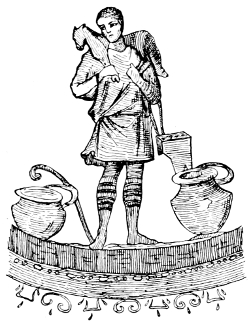
Fig. 332.—Painting from the Catacomb of S. Agnese.
The use of these doubtless arose from the desire to deprecate
anything that savoured of the images of heathendom,
but evidently the early Christians soon arrived at the
idea that painting might be admissible in a church where
sculptured images could not be tolerated—the latter reminding
289them too much of the sculptured deities of the
ancients—and consequently we find that the painted subjects
from the heathen Pantheon were adapted by the
artists who decorated the catacombs, but the figure of
Christ was introduced where formerly a Roman god was
the personage, thereby giving the mythological subject a
new Christian meaning. In the catacombs of S. Agnese
Christ is represented as the “Good Shepherd,” carrying on
his shoulders the lamb that
had been lost (Fig. 332);
and in the catacombs of
S. Calixtus, on a wall painting,
he is portrayed under
the type and figure of
Orpheus, charming all nature
with his music (Fig.
333). In the central octagonal
panel he is represented
with a harp, surrounded
by the beasts and
birds of the field. In the
eight compartments around
the central panel, four
landscapes alternate with
four figure subjects:—Moses
striking water out
of the rock, and opposite, Christ raising Lazarus, who
is represented as a mummy; Daniel in the lions’ den, and
opposite this, David with the sling. The heathen subjects
of Cupid and Psyche, and others, have been used to represent
Christian symbols. In sculpture, there are some
remains of early Christian art in which the figures of Christ
and his Apostles are clothed in the dress, and worked
somewhat in the spirit, of the antique. The sarcophagus
under the pulpit of S. Ambrogio at Milan is a good
example of this kind of art. Some ivory carvings of this
period have been executed as tablets, with scriptural subjects,
290after the manner of the Roman Consular diptychs.
These ivory carvings, that exhibit a true spirit of the
antique in their design, are not to be confounded with the
later Byzantine diptychs that were executed in a more
archaic style.
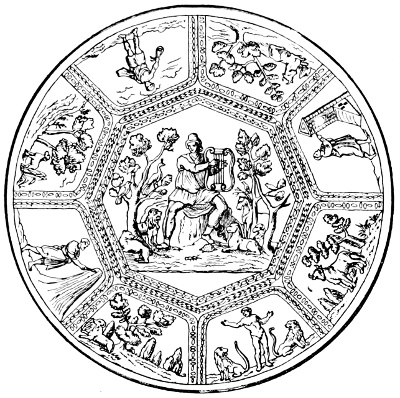
Fig. 333.—Wall Painting from the Catacombs of S. Calixtus.
During the fifth century, and even in the latter part of
the fourth, we see the more cheerful spirit of the antique
character dying out, and the art of the time exhibits a
greater importance and attention which is given to large
masses, while smaller or minor surfaces are left empty, and
decorative detail suppressed. There is an apparent striving
to render the figure of the Redeemer—the chief personage—larger
and more important in the scale of the decoration,
and at the same time to give him more individuality. As
the technical qualities of the Christian art diminished, the
291majesty and sublimity of the Great Teacher was expressed
in a more spiritual conception of his divinity.
Several examples of decoration illustrating this phase of
Christian art occur in the wall paintings in the catacombs of
S. Ponziano at Rome. The face of Christ in these representations
is full of earnest and mild serenity; the right
hand is raised as if in blessing, and the left holds the book
of life.
In the fourth century, mosaic was used in the basilicas
as a means of decorating the apse and walls, as the
Romans before had used it in their floors and dados.
In the hands of the early and inexperienced artists, the
character of the material in mosaic had a great deal to do,
but not all, in the creating of the type of angular and rigid
forms of the figures, which was transmitted to all subsequent
Christian mosaics. At the same time there was the
intense desire to make the figures of Christ and of other
sacred personages of a sorrowful and austere character.
We can, however, trace in these figures the magisterial
dignity that invests the sculptured figures of the Emperors
and Senators of Roman art.
In Italy, the Christian mosaics assumed more and more
a decided breaking away from the traditions of the antique.
Large masses as single figures were symmetrically
arranged, ornamental details were suppressed, and bands
with inscriptions framed the large spaces of the walls and
the apse. The figures were more isolated, attenuated,
severe of expression, and leaving much to be desired in
their anatomical construction or in the natural movement
of the body; but all this tended to give them that expression
of devotional simplicity aimed for by those early
mystics, who only looked on the world as a “vale of
tears.” In the vaulted roof of the funeral chapel erected
to the memory of the daughter of Constantine at Rome—Sta.
Costanza—some of the earliest mosaic work is to be
found, consisting of an antique treatment of the vine and
tendrils used in a symbolic sense; and in another chapel,
292that of the Empress Galla Placida, at Ravenna, similar
work is seen, mixed with symbolic signs, as the hart—"panting
for water brooks"—a symbol of the soul thirsting
for salvation. This chapel was erected A.D. 440.
After this time, and towards the end of the fifth century,
we find the characteristic features of Christian art more
insisted in: such as the colossal portraits and figures of
Christ, the isolation of single figures, the symmetrical
grouping of crowds of smaller figures, and of the representatives
of the angel, bull, eagle, and lion, as winged
symbols of the Evangelists, all rendered the more impressive
by the architectural spacing, and the plain blue
ground which surrounded most of the figures. Two
churches may be mentioned that contained fine examples
of the above type of early Christian mosaics; one is the
great basilica of St. Paul, without the walls at Rome,
built under Theodosius and Honorius about A.D. 386, and
the other that of St. Cosmo e Damiano in Rome. The
great mosaics in the apse of the latter church were executed
between A.D. 526 and 530 by Pope Felix IV. The
floors of these churches are made of what is known as
“Opus Alexandrinum,” the finest and grandest floor decoration
that exists (Fig. 334). Circular slabs of porphyry
and serpentine marble sawn in disks from antique columns
are laid down, and twisted interlacings and rings surround
them as bands composed of triangular bits of white, black,
or coloured marble, forming simple and effective patterns
in a quiet harmony of colour. Some of this work may be
seen in Westminster Abbey.

Fig. 334.—Opus Alexandrinum Pavement, San Marco, Rome.
In the early part of the sixth century Christian art in
Italy was at a low ebb, as by this time nearly all the
antique remains and culture had been used up; but fortunately,
the Eastern and Western Churches were not as yet
divided in doctrine, and a fresh life had been imparted to
Italian art from the Byzantine culture of the Eastern
Empire.
Besides the basilica form of building, another antique
293form of early Christian architecture was developed,
called a “baptistery,” which generally took the form of a
detached building, with a circular or polygonal plan. In
some cases the baptistery adjoins the atrium of the basilica,
but often is a detached building of considerable importance.
The structure is supposed to have been suggested
by the circular portion of the Roman baths, and consists
of a circular row of columns supporting the upper structure;
the central portion is surrounded by a low cloister-like
aisle, and the fountain is in the middle of the
building. The circular building known as the Church of
Santa Costanza in Rome—the funeral chapel before mentioned—the
octagonal baptistery of Constantine, and the
fine baptistery at Ravenna, are examples of this kind of
294building. Another beautiful example is the octagonal
baptistery of the Lateran, belonging to the fifth century; it
has eight large antique columns, which support an architrave,
upon which rest another series of eight smaller
columns, carrying another architrave and the domed roof.
The whole building has a pleasant and agreeable effect of
extreme airiness.
Byzantine Architecture.
The ancient town of Byzantium, the modern Constantinople,
was mostly in ruins when Constantine the Great
selected it for the new capital of the Roman Empire. He
rebuilt the old town and named it after himself, and in the
year A.D. 330 the inauguration of the new capital was celebrated.
Later on, under Theodosius, the Roman Empire
was divided, and Constantinople became the capital of the
Eastern portion.
It was the great connecting-point between the countries
of the East and the West. The inhabitants of the new
city being mostly Greeks, the native artists and architects
employed by Constantine imparted a decided Grecian
character to the ornament and decoration, especially of the
churches and other buildings that were erected by this
emperor.
The occasion of the new political change and the rapid
spread of the Christian religion served to give a great
impetus to the building and lavish decoration of churches
and public edifices. Although the new architecture was
founded on the Roman originals, yet in the hands of the
Greeks both architecture and ornament assumed a new and
original character. From the time of the founding of Constantinople
to the date of Justinian’s reign (A.D. 527-565),
when the great church of Santa Sophia—holy wisdom—was
built, on the ruins of an older church that was said to
have been burnt down, we can guess that it must have
been a time of experiments and developments from the
295basilica type of building to the well-defined domed style
of architecture known as the Byzantine.
The timber-roofed and vaulted style of structure now
gave place to the dome, which resulted also in a change
of the plan to the square form, instead of the rectangle.
During the two hundred years previous to the building of
Santa Sophia, the problem of dome construction, with
others of a difficult nature in building, had been successfully
solved by the Greek architects of the Eastern Empire.
Justinian employed the Greeks, Anthemius of Thralles
and Isidorus of Miletus, as the architects of Santa Sophia,
and they succeeded in erecting a marvellous structure
that may justly be reckoned as one of the wonders of the
world.
Four vast piers, arranged on a square plan, support four
solid arches of masonry, semicircular in shape, and 100
feet span each. The four triangular spaces at the corners
and the spaces formed by the angles, the semicircular
arches and portions of the ring of the dome, are filled with
“pendentives,” which may be described as continuations
of the dome. These pendentives partly support the dome,
and the other points of support are on the backs of the
great arches. The four pendentives meet in the circular
ring from which the dome springs. The dome is 46 feet
in height from the level of its base, and 107 feet in diameter,
and is rather flattish in shape.
On the side of the dome, east and west, are two half-domes,
which crown apsidal walls. Other small apses are
domed over at lower levels, and vaulted aisles of two stories
run round the higher portions of the building, the whole
forming almost a cube-like shape.
After Constantinople was captured by the Turks (A.D.
1453), Santa Sophia was converted into a mosque and four
minarets, or Moslem towers, were added to its outer angles.
The interior of this church, besides the stupendous effect
of its unrivalled architectural construction, has its added
beauties and splendour in its inlaid marbles, its richly
296carved cornices and arcades (Fig. 335), and its vaults and
domes glittering with gold mosaics of cherubim, and
dignified though gaunt and archaic figures. In the
capitals of the columns was used the sharply-edged and
undercut acanthus foliage, more in accordance with the
old Greek type than the Roman, but have a distinctly
Byzantine character of its own. Sacred signs, emblems,
and birds were often introduced into the capitals; the
general shape of the latter was a cubical form, the four
faces slanting inwards from above, this form giving a decided
appearance of great supporting and sustaining power
(Figs. 336 and 338). Sometimes they were bossed out,
and often contained the elements of the Ionic and Corinthian
orders (Figs. 336, 337, 339). The wedge-shaped
portion on the top of the capital is an ugly but distinctive
feature of the Byzantine style (Fig. 338).
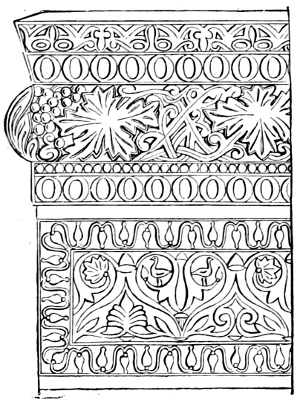
Fig. 335.—Cornice from Santa Sophia.
The splendour and magnificence of the decoration in
Byzantine churches is proverbial: the columns were often of
297porphyry and serpentine marble, and the supports to the altar
canopy (baldacchino), the screen (iconostasis) and the pulpit
(ambo) were often inlaid with gold, silver, and precious stones.
The altar itself was a gorgeous piece of workmanship,
298resplendent with gold and enamels, decorated with hanging
lamps, vases, and candlesticks, all wrought in precious
metal work, though the actual design and workmanship
was rough and less refined than antique work.
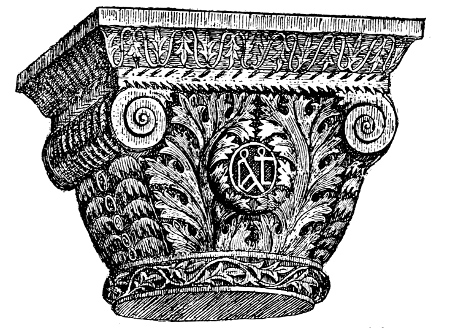
Fig. 336.—Capital from Santa Sophia, showing the bossing-out of the ornament.
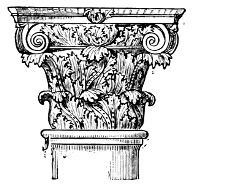
Fig. 337.—Capital from St. Demetrius at Salonica.
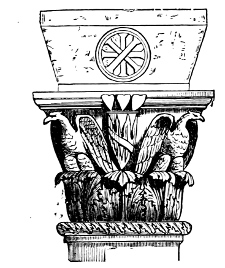
Fig. 338.—Capital from St. Demetrius.
The floor mosaics had patterns consisting of the cross,
the circle, and the cube, with interlacing lines, the ornamental
forms here as elsewhere being of a symbolical
character. Reliquaries, shrines, and chalices in gold, and
enamels, crosses, and other accessories of the altar, and
sculptured ivories of a devotional character, of Byzantine
workmanship, were made in great abundance. The larger
churches especially, such as Santa Sophia, and St. Mark’s
at Venice, possessed great quantities of these treasures.
Sculpture was subordinate to painting as plastic art was
not encouraged, because of the dislike to images shown
299by the early Christians, and so painting which led to the
mosaic picture, which in its turn led to enamelling on
metals, was favoured to a great extent by the Byzantine
artists. Even flat bands with inscriptions and ornament
were used instead of mouldings in relief.
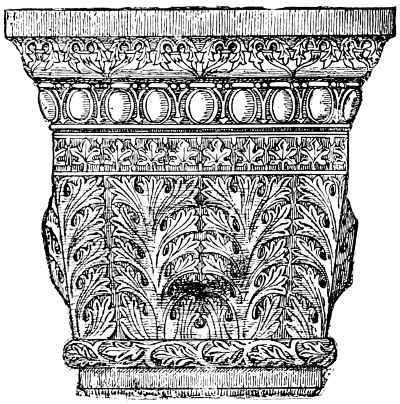
Fig. 339.—Byzantine Capital from Santa Sophia, showing the bossing-out of the ornament.
The city of Ravenna being situated between Constantinople
and Rome possessed some remarkable buildings,
that do not belong exactly to
the Eastern or Western type of
architecture; but on the other
hand have strongly marked influences
of each.
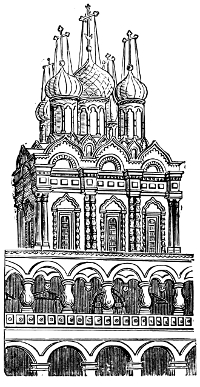
Fig. 340.—St. Nicholas at Moscow.
The most important is that
of the Church of St. Vitale; it
is octagonal in plan, and is like
Santa Sophia in having a principal
central dome, half-domes,
and vaulted aisles. It is resplendent
in elaborate decoration
and carvings. The cathedral
of St. Mark’s at Venice is
so well known from illustrations
and photographs that it requires
very little description.
It was built in the years A.D.
977-1071, and its plans are
said to have been drawn by
Greek architects at Constantinople.
Originally it possessed
all the features of a genuine Byzantine edifice, but has been
altered externally, and in some places internally in both
Gothic and Renaissance periods. The Byzantine domes
have had bulbous coverings placed over them in later
times. St. Mark’s like Santa Sophia is square in plan,
but has five principal domes, one in the centre, and one at
each angle or end of the Greek cross plan. The aisles,
with their series of low-level dome roofs, make the whole
300building nearly square. The surrounding countries of
Bulgaria, Servia, Roumania, Armenia, and Russia, which
embraced the Christian religion of the Greek Church, possess
examples of Byzantine architecture. The Russian
type in its later developments has distinctive characteristics
of its own, particularly in the use and shape of the
dome. Russian churches consist usually of a storied
tower on which is placed five small domes of a bulbous
shape; these are built on the tops of elongated drums.
The bulbous tops of the domes grow into points, on which
are placed tall crosses. These and other fantastic elements
are derived from the timber edifices of Persia and
other Asiatic countries (Fig. 340).
301
CHAPTER XVIII.
SARACENIC ARCHITECTURE AND ORNAMENT.
The architecture of the Saracens in its most perfect
examples has a thoroughly distinctive style of its own,
and their ornament in its pure form is unlike the ornament
of any style that has hitherto existed.
The originality of the latter arose from the experimenting
in ornamental patterns that should have no likeness
to plants, animals, or other natural forms.
This prohibition of the use of objects from nature in
their ornament was one of the articles of the Moslem
religion; but to get any pleasing variety in ornament and
leave out all natural reminiscences in the designs is out of
human power, so consequently we have, even in Saracenic
ornament, natural forms put through a geometrical process
of draughtsmanship. Saracenic ornament in what is
sometimes called Arabian has leaf and bud-like forms
interlaced with strap-work, which is often very beautiful
and is known under the name of “Arabesque” (Figs.
341, 342).
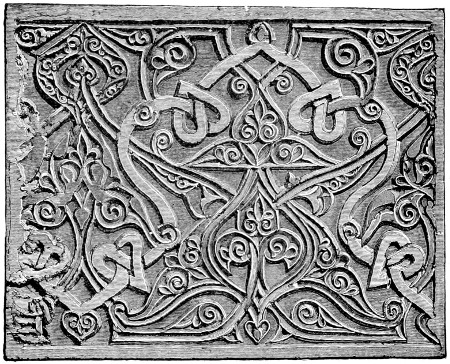
Fig. 341.—Arabesque Ornament from the Wekāla of Kāit Bey. (L.-P.)
The Saracens were originally composed of Arab herdsmen,
nomadic wanderers of the desert, carriers or merchants,
and dwellers in villages, who cultivated the land
around them. The earliest building of any importance
that can be called Saracenic is the “Kaaba” or Moslem
temple at Mecca, which contained the sacred brownish-black
stone placed by Mahomet in the south-east angle of
this square temple. This black stone is supposed to be a
meteorolite, hemispherical in shape, and about 6 by 8
302inches in the widest dimension. Some hundreds of stone
images or “gods” used to be worshipped at Mecca by
the Mohammedans in their early days, or in what they call
their “days of ignorance,” but these were destroyed by
the prophet’s orders. Mohammed himself was a fanatic
that could neither read nor write; he made up the Korân
from many sources, such as the Bible, the Apocryphal
gospels, the Talmud, and possibly a good many original
passages of his own, which he says he received from the
mouth of the angel Gabriel in visions. The Mohammedan
creed contains its essence in the words:—"There is no
God, but God, and Mohammed is his Prophet." This
text is found very frequently as a decorative legend on the
walls of the mosques and on painted tiles. At first
Mohammed’s new religion was not favourably received,
303for, after converting his near relations and a few other
followers, he had to fly from Mecca to Medina, to escape
assassination.
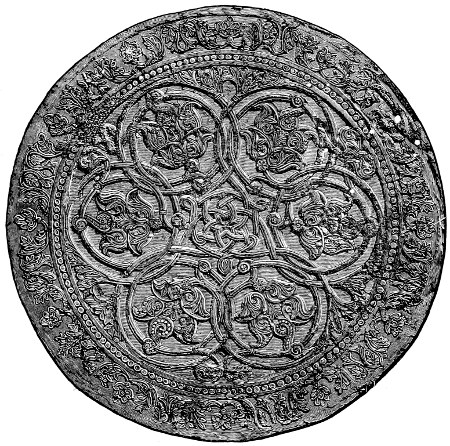
Fig. 342.—Rosette in Mosque of Suyurghatmish; Seventeenth Century. (L.-P.)
The “Hegira,” or flight of Mohammed, took place A.D.
622. He compiled more of his Korân at Medina, and
altered parts of it, especially as regards the punishment of
idolaters, which naturally included his late persecutors.
The punishment was to be of an eternal nature in the
next world, and extirpation in this, unless they embraced
Islâmism. Mohammed very soon began to make his
power felt; he made a few marauding expeditions throughout
the country, and gained many converts, especially
304when they became convinced that Islâm was to conquer
the whole world by the sword. His army, however, was
nearly annihilated by the Byzantine emperor, Heraclius,
in a battle at Muta, but he recovered himself, and marched
on to Mecca, where he put to the sword all those that did
not embrace his religion, and destroyed all the remaining
idols in the city. He allowed his army all the plunder
they could get, after he had a tithe to himself, but it is said
that he led a very abstemious life, dressed poorly, and
resided with his wives in the shabbiest type of dwellings.
He died in A.D. 632, or ten years after the Hegira, from
which event is dated the Mohammedan era. After his
death many of the converts became backsliders, but his
successor, Abu-Bekr, and more especially the renowned
Omar—the second caliph—brought the Saracens to a great
power. They were very warlike, and capable of enduring
great hardships, and as they had everything to gain and
nothing to lose, they made war their sole trade, and carried
their successful arms to India, Persia, Mesopotamia,
Syria, Palestine, and Egypt.
The islands of the Mediterranean, the northern coast of
Africa, Spain, and the south-east of France, were by them
also invaded, ravaged, and partly conquered.
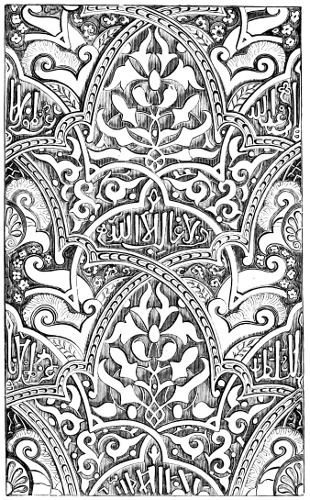
Fig. 343.—Alhambra Diaper, Superposed Ornament.
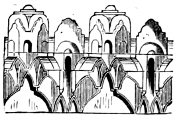
Fig. 344.—Stalactite Vaulting.
In the youthful days of Saracenic power, as early as the
second caliphate, Persia and Asia Minor had been plundered
and pillaged of their costly and valuable objects in
silver, gold, embroidered carpets, and silken goods. The
wealth of the Moslem conquerors was now considerable,
and was accumulating fast; the sight of so much that was
fine and striking in the arts and architecture of the countries
they had conquered, in the eyes of these people—who
were no better than barbarians or banditti—began to have
a more civilising effect on them. Add to this the influence
of the Byzantine architecture, especially at Constantinople,
with the Saracens, whose religion was in some respects
not unlike the Christian, especially as in both cases there
was the stern prohibition of idols or graven images; and
305so it was quite natural that the Moslem mosque should be
built and decorated on the main lines of the Byzantine
Christian church. The dome and the niche (mehrab) came
306from the Byzantine; the minarets—which are not strictly
essential in Moslem architecture—probably from the Perseopolitan
columns. The Moslem dome, however, may
have had its origin in the domed palaces of Persia, of the
Achæmedian dynasty. Saracenic ornament is mostly,
however, derived from the geometric
Byzantine with a strong
dash of Indian forms in its mixture.
The super-posing in their
ornament of different planes (Fig.
343), the class of ornament known
as “mnemonic” (Figs. 362, 363),
and the stalactite decoration of
vaults and domes (Fig. 344)—all
these three classes deserve the credit of being distinctly
Saracenic, although some say that the stalactite ornament
was known in Persia before the days of Mahomet.
Among the earliest mosques we may mention that of
Omar at Jerusalem, which was supposed to be a small
wooden mosque, now destroyed. Ferguson says it was
the Mosque of El Aksah.
The Mosque of ’Amr at Old Cairo was built A.D. 641 by
Amru-Ibn-al-Aās, the general and governor who conquered
Egypt, A.H. 21 (after the Hegira). It has been
frequently restored and enlarged. The columns which
support the arcaded arches are classical in character, the
arches are slightly horseshoe in the curve, and are tied
together. The building is nearly square in plan (Figs.
345, 346).
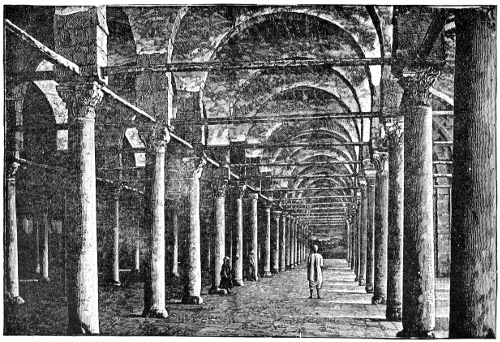
Fig. 345.—East Colonnade of the Mosque of ’Amr. (L.-P.)
The mosque of Ibn-Tūlūn (Son of Tūlūn) in Old Cairo
was built by Ahmad-ibn-Tūlūn, founder of the house of
the Tūlūn governors of Egypt, A.H. 263-5. This mosque
and that of ’Amr are what are known as “cloistered”
mosques. The plan of the latter (Fig. 346) gives a general
idea of a cloistered mosque. The essential requirements
of a mosque are very few and simple. Mahomet’s mosque
at Medina was a small square brick-built structure, with a
308wooden roof plastered over: the chief thing required was
retirement from the public for meditation and prayer.

Fig. 346.—Plan of the Mosque of ’Amr. (L.-P.)
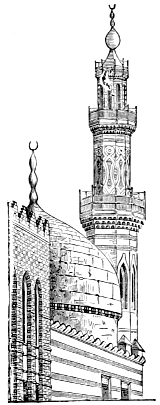
Fig. 347.—Minaret of the Mosque of Kaloum at Cairo.
It was not essential that all the rectangular or square
court that forms the mosque should be covered with a roof,
provided there was sufficient shelter for the number of
worshippers, which was generally small at a time, and if
a larger space were required, a portion or all of the open
court could be roofed in. What we would call the east
end of a church corresponded to that part of a mosque
where the kibla, or line of direction, would be indicated—towards
Mecca—there the mihrab or niche would be fixed.
Close to the mihrab is the mimbar, or pulpit, for the
sermon, and in close vicinity the dikka or tribune, a raised
309platform, from which the imām intones the prayers and
reads passages from the Korān. The
minaret is a later addition, but is
seen on every mosque; it is used by
the Muezzin, who ascends to its
galleries and calls the faithful to
prayer five times a day (Fig. 347).
A fountain is necessary for the lawful
ablutions before prayer.
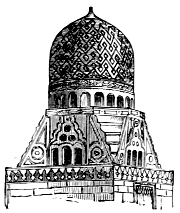
Fig. 348.—Mausoleum at Cairo.
The dome is not a necessary feature
to a mosque; it only occurs over the
tomb of some sultan or other dignitary,
and may be used as a chapel,
but only when it covers a tomb. The
majority of mosques, however, have
a dome, either as a principal feature,
or attached to some part of the building.
Cairo is particularly rich in
domed mausoleum structures (Fig.
348).
The domes or cupolas in Moslem
buildings generally swell up beyond
the semicircle, and are raised considerably
by having their lower
parts straight-sided or cylindrical;
this part is sometimes pierced with
a row of small windows, and is
recessed back on a pyramid-like
story, with a square or polygonal
base, which in its turn rests on the
top of a square embattled tower.
The dome is usually built of brick,
the courses projecting roughly one
over the other, diminishing towards
the top, and thickly plastered over
inside and out to get an even surface; sometimes the
mortar is thicker than the bricks in Saracen buildings.

Fig. 349.—Mosque of Kāit Bey, Cairo. (L.-P.)
310Wooden frames are often used in the construction of
domes which support the plaster work. Some domes are
311built with slabs of stones on which a geometric pattern is
carved on the outside (Figs. 348, 349); these are generally
of a late period, as the tomb mosque of Kāit Bey, built
about A.D. 1468 (Fig. 349). The oldest mosque in Cairo
is that of Ibn Tūlūn (Fig. 350). It is a cloistered mosque, is
built in a massive style, and has a high plain wall around it;
it covers about four hundred square feet of ground. In the
centre of the inner courtyard is a square stone building
surmounted by a dome, one of the earliest carried on
stalactites. This building is a century later than the
cloisters, and is built over a well or fountain.
The great court is surrounded by arcades of pointed
arches, that have a slight tendency to turn inwards at the
base, and are built as piers of plastered brick; it is said
to be the first mosque built on piers, instead of the usual
round columns.
The Saracens did not make columns themselves, but
took them from the ruins of Roman buildings, or even
from existing Christian churches, and as often as not used
the capitals turned upside down as bases.
The Saracens have a form of capital of Moorish design
which harmonizes with their architecture; it has a slightly
tapering, smooth, long neck, a heavy projecting head, and
is well covered with characteristic foliated work (Fig. 351).
In the mosque of Ibn-Tūlūn there are only two columns;
these are placed at the niche or mihrab. Three sides of
this mosque have two rows of arches, and the fourth—the
side towards Mecca—which is the liwān or sanctuary, has
five. The architect of this mosque was a Coptic Christian,
who received £5,000 and a costly dress of honour as his
fee. The total cost of the building was £60,000 (Lane-Poole).
Around the arches and the windows, which were
placed high up between the arches, are bands of palmated
ornament. These borders, according to Mr. Stanley Lane-Poole,
are the earliest examples of geometrical design and
scroll-work that afterwards became so characteristic of
Saracenic ornament.
312They were made in plaster or stucco-work by hand,
while the plaster was wet, and not cast in moulds, which
was the case of later Moorish plaster ornament.
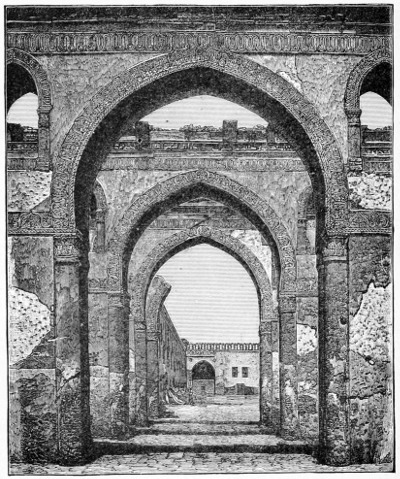
Fig. 350.—Arcades in the Mosque of Ibn-Tūlūn. (L.-P.)
The arcades were roofed over with sycamore planks
resting on heavy beams, and the whole structure was
crowned with crenellations or embattlements. One of the
313back walls of the arcades is pierced with grilles of stone,
of beautiful tracery design.
The Arabian or Saracen arches are of three kinds—the
Ogee, the Horseshoe, and the Pointed (Fig. 352, a, b, c).
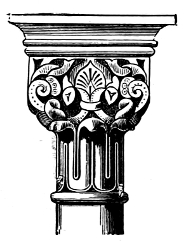
Fig. 351.—Moorish Capital.
A peculiar arrangement of cusped
inter-arching, combined with the
horseshoe arch, is seen in the
maksura, or space in front of the
mihrab, of the mosque of Cordova,
built A.D. 786 (Fig. 353).
This arrangement of cusping,
though characteristically Moorish,
is anything but beautiful. The
Mosque of Cordova was begun by
the Caliph Abd-al-Rahman in the
year before he died, and was continued
by his son Hisham, and his
grandson El-Hakim. It is one of the great congregational
mosques, and occupied a space of ground 580 feet by 435
feet.

Fig. 352.—Arches; a, ogee; b, horseshoe; c, pointed.
The minaret is often a feature of great beauty, and is pre-eminently
distinctive of Saracenic mosque architecture;
it may be called the belfry of the mosque. Sometimes
it is engaged to the main building, and sometimes starts
from the roof of the mosque. The base plan is generally
polygonal, and the upper stories above the main gallery
are often circular; the top is crowned with a pear-shaped
cupola. That of the mosque of Sultan Hasan is one of the
highest, being about 330 feet in height. One of the most
ornate and beautiful is the minaret that adorns the mosque
314of Kāit Bey, at Cairo (see Fig. 349). From the roof of
the mosque it starts on a solid square base, and develops
into an octagon story, which is pierced with window openings,
and has an elaborate cornice gallery, consisting of a
pierced balustrade, supported by stalactite brackets. The
next upper division is cylindrical, decorated with geometrical
interlaced ornament; another story is above this,
crowned with a cupola, on the top of which is placed a
pear-shaped ball, ending in a finial. Wooden bracket-like
forms project out of this, from which lamps are suspended
at festivals. The minaret and dome are covered
with elaborate carvings.
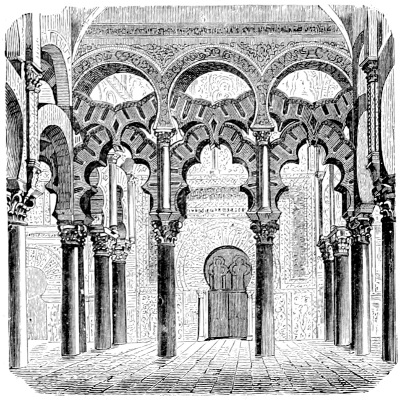
Fig. 353.—Cusped inter-arching, Mosque of Cordova.
The mimbars or pulpits are singular in construction, and
are usually well covered with decoration (Fig. 354).

Fig. 354.—Pulpit of the Sultan Kāit Bey: Fifteenth Century. (L.-P.)
The remains of domestic architecture are not very
316plentiful—at least, of any examples of the best period of
the Saracen style. The main idea in the design of the
houses was to have them built so that people outside
should see as little as possible of the inmates or inside,
and that the women especially should see as little of street
317life as possible; so the first row of the windows was placed
high up, and all the windows were thickly latticed, so that
little could be seen from the inside and nothing from the
outside (Fig. 355). An interesting and picturesque feature
was the meshrebiyas, or drinking-places, so called because
they were little projecting shaded structures of lattice-work,
supported on brackets, that contained the water in
vessels and other drinks; the currents of air that rushed
through the lattice-work served to keep the drinking water
cool.

Fig. 355.—A Street in Cairo. (L.-P.)
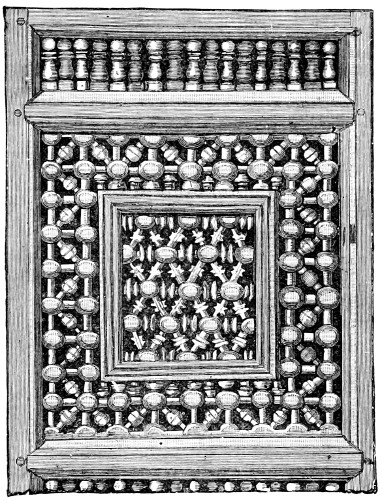
Fig. 356.—Lattice-work, S.K.M. (L.-P.)
The meshrebiyas are often very beautiful with their
varied patterns of elaborate lattice-work, which is peculiarly
318Arabian in design. It is composed of many pieces
of turned and carved pieces that are ingeniously fitted into
each other to form the pattern (Figs. 356-7-8). In the
museum at Kensington many examples of these lattice
patterns may be seen, and also some of the meshrebiyas.
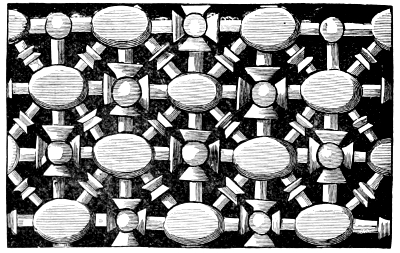
Fig. 357.—Lattice-work, S.K.M. (L.-P.)

Fig. 358.—Lattice-work, S.K.M. (L.-P.)
In the illustration of a “Street in Cairo” (Fig. 355), two
of these meshrebiyas project on brackets from a house
front.
A richer style of the lattice-work decoration was used
319in open panels and balustrades of the pulpits, where the
triangles and hexagons that form part of the design are
carved on the surface, and inlaid back and front with ivory
or ebony.
The houses in Cairo of the purest Saracen style have the
best part of the carvings and decoration in the inside;
they are generally two or three stories in height, but were
much higher in the fourteenth and fifteenth centuries.
The lower parts are built of stone, and the upper stories
of brick and wood, plastered white.
The lower story has the stones coloured in alternate
courses of red ochre and white limewash. The doorways
are sometimes decorated by having peculiar voussoirs and
interlaced ornament (Fig. 359).
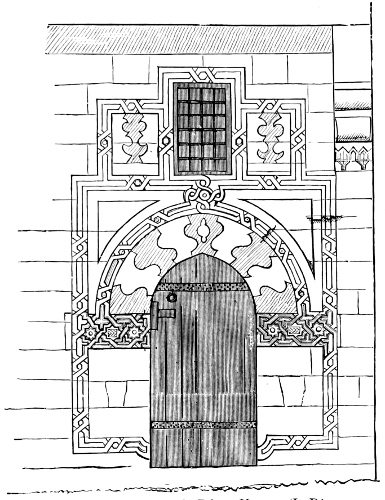
Fig. 359.—Doorway of a Private House. (L.-P.)
There is an illustration of a shop-front in M. Bourgoin’s
“Eléments de l’Art Arabe” which is an exquisite example
of Saracen work of good proportion and design in
its doors and windows. Saracenic ornament, as it appears
in plaster, stone, wood, and mosaic decoration, of the
mosques, pulpits, and wekālas or khans, deserves special
notice on account of its extreme originality of design and
treatment, inasmuch as, whatever may be its true origin,
we must certainly admit that there is a marked difference
between it and the ornament of any other historic style.
The mosques built anterior to that of Suyurghatmish
(A.D. 1356) were decorated in plaster. The rosette (Fig.
342) shows a transitional piece of work of great beauty,
that looks like a copy in stone of low-relief plaster-work,
and has every sign of a Byzantine-like origin, seen more
especially in the leaf-like markings and general treatment
of the six large central flowers; the interlacing and other
details are also Byzantine. It is quite likely that this
example was designed by a Christian Coptic artist, as,
indeed, nearly all the Saracen art in Egypt of this period
was designed by Coptic Egyptians. Compare with this
the illuminated Korān of the Sultan Sha’ Ban, of a year
or two later (A.D. 1368). All the floral work in this is
320distinctly Persian in character, without any reminiscence
of Byzantine, but shows rather a Chinese or Indian influence
(Fig. 360). It is probably copied from a Persian
embroidery.
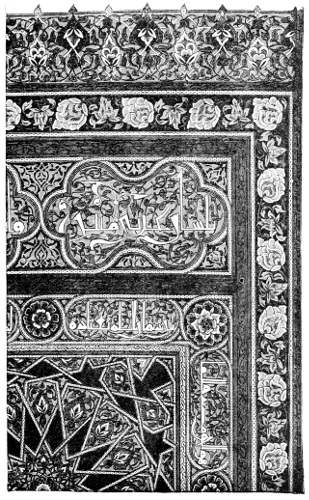
Fig. 360.—Illuminated Korān of the Sultan Sha’ Ban; Fourteenth Century. (L.-P.)
Another example of Saracenic ornament is the stone
sculptured decoration from the portal of the mosque of
Sultan Hasan, in Cairo (A.D. 1358), (Fig. 361). From
being carved in stone the ornament is much stiffer than the
two previous examples, but it is more thoroughly Saracenic
321or Arabian than either of them; the large flower-like
forms in elevation are evidently developments of the
Assyrian form of the lotus, and have here almost the form
of the fleur-de-lis. This type of design was successfully
323developed in the Moresque diapers of the Alhambra, where
the conventional leaves and flower forms were mixed with
Saracenic inscriptions, and were redeemed from their
aridity by the almost sensuous character of the colouring,
which has a combination of red, blue, white, and gold, and
further by the superimposed planes of the ornamental
composition (see Fig. 343). It may be noticed that
some of the leaf-work in these diapers have a feather-like
decoration, which gives richness and variety to the ornament:
these markings are evidently derived from the
parallel veining of Byzantine acanthus leaf-work. The
larger strap-work running through is interlaced in the form
of pointed and horseshoe arches, which makes the ornament
in appropriate harmony with the Moorish architecture,
while the flat treatment of the whole is distinctively
characteristic of all Saracenic ornament.
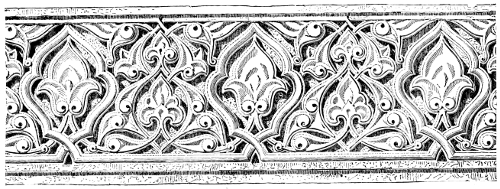
Fig. 361.—Ornament from the Portal of Sultan Hasan.
Two examples of Mnemonic ornament are given at
Figs. 362 and 363. The former is a Kufic inscription
324arranged so as to form a band ornament. This is in the
angular and older form of writing. The latter is an
example of the cursive Arabian hand which was more
generally adopted, and is termed the Vaskhy: it is more
round and flowing than the Kufic. The typical feather
ornament forms a background to most of these inscriptions.
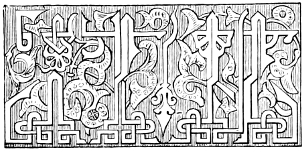
Fig. 362.—Kufic Writing, from the Alhambra.
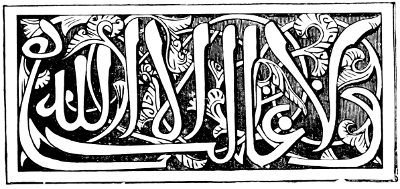
Fig. 363.—Arabian Cursive Writing, from the Alhambra.
Some of the finest specimens of purely Saracenic ornament
are found on the singularly ornate mimbars or
pulpits (Figs. 354 and 364). The simplicity of their
straight-lined silhouettes is in restrained contrast to the
extreme elaboration of their carved surfaces. The stone
pulpit from the mosque of Barkuk is early fifteenth century
work. It is made of solid stone slabs, with doorway,
staircase, and canopy raised on small pillars and surmounted
by the usual pear-shaped cupola. The stone
slabs are elaborately carved with geometrical patterns,
arabesques, and inscriptions, and are said to be the finest
examples of stone carving in Cairo. Another pulpit (Fig.
354) of the fifteenth century, made by order of the Sultan
Kāit Bey, is built in wood; it is now in the South Kensington
Museum, and bears the name of this Mamlūk
Sultan, who was the ruler of Egypt at the end of that
century. The folding doors and the niche of this pulpit
are decorated with stalactite ornament; the cupola is
copper; the carving is most elaborate, and is also inlaid
with ebony and ivory. Some of the carved panels from the
building known as the wekāla or khan of Kāit Bey, show
Saracenic ornament in its purest form—both the geometrical
variety and arabesques. This Sultan and his artists
have shown the most refined taste of all the great Saracen
builders. The wekāla or khan is a rectangular building
with an open court in the centre, and consists of numerous
chambers that were occupied by merchants for a short
season when they came to buy and sell in Cairo, and was,
in fact, a sort of Eastern hotel.

Fig. 364.—Stone Pulpit in Mosque of Barkuk; Fifteenth Century.
The stabling was placed behind on the ground floor, and
326the exterior consisted of a row
of small shops. The wekāla
of Kāit Bey had thirteen of
these shops on one exterior,
and between the seventh and
eighth was placed a splendid
arched gateway. It is a
pointed arch of eight feet in
width, the edge of which is
decorated with three tiers of
stalactites that are carved on
the sides of the archway, and
has a fine band of carved
scroll-work running round
the face of the archway and
spandrels. One of the most
beautiful examples of alternating
interlacing and arabesque
ornament is that
which forms an arch over a
horizontal panel of carved
ornament. This arch is
shown at Fig. 365. A fine
characteristic piece of carved
ornament from the same
building is the subject of the
illustration Fig. 341.
Figure and animal representation,
though prohibited
by the Moslem religion, was
in many cases practised by
the Saracen sculptors; for
instance, in the Baptistery
of St. Louis is a large copper
bowl inlaid with silver figures
(Mōsil work) made at Mōsil
in the thirteenth century.
327These figure and animal designs are from Mesopotamian
sources, as may easily be seen in the examples given—from
the Marīstan of Kalaun (Figs. 366 and 367), where
on the last a centaur is shooting an arrow at a unicorn,
balanced by a similar animal on the opposite side; and on
the other example is a peacock in the centre, with figures
of men on either side having drinking vessels and musical
instruments, an evident representation of a concert and
dances.

Fig. 365.—Ornament on an Arch of the Wekāla Kāit Bey. (L.-P.)
The scroll borders around this panel, and the execution
of the work, are in the Saracenic manner, but the motives
of the designs are Persian. Other similar carvings in
which animals figure and birds are introduced are to be
seen in the same building, and are of late thirteenth century
work. These illustrations are taken from Mr. Stanley
Lane-Poole’s “Saracenic Art in Egypt,” after “Prisse
d’Avennes,” to which the student is referred for an exhaustive
account of the Saracen art in Egypt. We extract
the following summary of this art from the above author,
who quotes from Franz Pasha, the architect to the Government
of the Khedive. “While bestowing their full meed
of praise on the wonderfully rich ornamentation and other
details of Arabian architecture, one cannot help feeling
that the style fails to give entire æsthetic satisfaction; want
of symmetry of plan, poverty of articulation, insufficiency
of plastic decoration, and an incongruous mingling of wood
and stone are the imperfections which strike most Northern
critics. The architects, in fact, bestowed the whole of their
attention on the decoration of surfaces; and down to the
present day the Arabian artists have always displayed far
greater ability in designing the most complicated ornament
and geometrical figures on plane surfaces than in the
treatment and proportioning of masses. Although we
occasionally see difficulties of construction well overcome
... these instances seem rather to be successful experiments
than the result of scientific workmanship. The real
excellence of the Arabian architects lay in their skill
329in masking abrupt angles by the use of stalactites, or
brackets,” &c.

Figs. 366, 367.—Carved Panels from the Maristan of Kalaun (after Prisse d’Avennes): Late Thirteenth Century. (L.-P.)
This architect is right, generally speaking, in his admirable
remarks, but we think, although it is admitted that
Saracenic architecture lacks the cohesion and unity of
parts that is the chief beauty in Greek and best examples
of the Gothic, that in some instances, in the mosques and
more particularly in the wekālas and in domestic architecture,
the Saracen architects have proved themselves
masters in the creation of architectural works second to
none in point of beauty, while in their architectural application
of ornament to the decoration of the various surfaces
and other features of their buildings they are unrivalled.
They have not only invented a new style of
ornament, but in their correct application of it they have
scarcely ever been equalled.
The decoration of surfaces, which is the chief glory of
all Saracenic art and architecture, was the first and last
lesson they learnt from their Persian masters in art, for
Persian art, like the manners and customs of the people,
has all its beauty and politeness on the surface.
330
CHAPTER XIX.
ROMANESQUE ARCHITECTURE AND ORNAMENT.
Romanesque is the name given to the architectural style
developed by the Western barbarians who overran the
Roman Empire, after their partial civilisation, when they
had learned the art of building. The style arose chiefly
from the copying of Roman buildings and their remains,
with some added features of Byzantine buildings.
Out of this Romanesque, in its turn, there sprang another
style which was founded on the Romanesque and on the
architecture of the Saracens. Towards the end of the
eleventh century the new masters of the Roman Empire,
in the course of their military expeditions to Asia Minor,
Syria, and Palestine, were brought in contact with the
Saracens and their architecture, and in coming back to
Europe they brought with them new ideas of building,
such as the pointed arch of the Saracens, which feature
together with new forms of ornament were added by them
to the prevalent Romanesque style, the mixture producing
an entirely new style, which has been curiously named
after the early Northern barbarians—the Gothic.
The subsequent Crusades against the Mohammedans
had the effect, among others, of extending the knowledge of
mathematics and geometry among the Crusaders, sciences
in which the Saracens excelled; and in coming home again
to the West, they applied their geometrical knowledge to
the development of Gothic architecture to such an extent
that, towards the end of the fourteenth century, this architecture
could show examples of the most lofty and daring
331constructions in stone that were marvels in the science of
building. Some Gothic buildings present with their fretted
pinnacles, spires, flying buttresses, intersecting and pierced
work, in flamboyant tracery, daring vaulting, and inter-penetrating
mouldings, a worked-out solution of some
intricate mathematical problem. In its complicated phases
Gothic construction is more scientific than artistic, however
much one may admire the grouping or design of the
Gothic pile as a picturesque conception.
Returning to the Romanesque style, we find that in the
sixth century Theodoric the Ostrogoth had, in the erections
of churches, palaces, and of his tomb in Ravenna—his
capital—sown the first seeds of the future developments
of the German Romanesque, and in some degree of
the later German Gothic style. In producing these works
his ambition was to emulate the grandeur of Imperial
Rome. The Longobards, the successors of the Ostrogoths,
continued this building activity through the Middle
Ages, and have left to us monuments of their genius in
the early and rude Duomo Vecchio of Brescia, and amongst
many others of their noblest works were Sant’ Ambrogio
at Milan, and San Zeno at Verona.
Prior to the Carlovingian era, the Germanic people
began to cultivate the fine arts in a tentative manner.
This was brought about by the contact of German chiefs
and warriors with Italian pomp and splendour, which also
bred in them a love for personal adornment, that strongly
marked the nobles and warriors of this period.
Charlemagne was crowned Emperor of Germany at
Rome, on Christmas Day in the year A.D. 800. The
dream and ambition of this great German Prince was to
establish a mighty Christian Empire in the West of Europe
that should rival pagan Rome itself, not only in military
power, but in a widespread culture of literature, science,
and artistic excellence.
These were the days of Chivalry, of the Crusaders; the
days when men were rich in high and lofty ideals; when
332those knightly mystics, Wolfram von Eschenbach and
Vogelweide, sang of the Parsival and the Quest of the
Holy Graal, of songs of love and chivalry, of deliverance
from wrongs, and of many stirring and tuneful themes.
Though Charlemagne never learned to read or write,
he thoroughly appreciated the value of learning. He
gathered together learned men, architects, and artists, and
established a school of religious music. He built many
churches, palaces, and bridges, and collected many statues
from Rome and elsewhere for the adornment of his great
church at Aix-la-Chapelle; he organized and encouraged
the professions and trades of his towns and cities.
The great tomb-church at Aix-la-Chapelle—or Aachen—was
built by Charlemagne, and became the prototype of
all subsequent churches erected in the Romanesque style
in Germany.
It was in the region bordering on the Rhine that the
great church building activity was developed in Germany.
The cities of the powerful bishoprics rivalled each other in
pomp and splendour, as we see in such buildings as the
Doms of Spiers, Mayence, and Cologne, and in the Romanesque
churches of Swabia, Franconia, Westphalia, and
Lower Saxony. The Romanesque style is also found in
the churches or Doms of Bamberg, Brunswick, and Osnabruck;
the Godehardi and Michael’s churches at Hildesheim,
the carving in which excels that in the churches of
the Rhineland.
The distinctive characteristics of the German Romanesque
are the great octagonal dome-like towers that arise
from the crossing of the nave and transept, and the flanking
towers at each end that are sometimes united to the
central tower by an outside western gallery or façade. A
fine modern church, built in the Romanesque style, is that
of the Cathedral of Fourvière, on the hill overlooking the
city of Lyons in France.
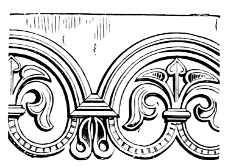
Fig. 368.—Round Arch Frieze.
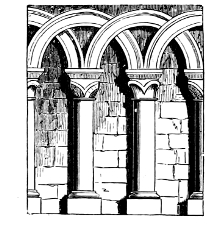
369.—Intersecting Blind Arcade.
Some German Romanesque churches have a western as
well as an eastern apse, and the church known as the
333Apostelkirche in Cologne has the transept, both of which
features are disturbing elements in any church where the
chief attention should be directed to the culminating point
where the choir, reredos, or altar are usually found—in the
apse or chancel, and at the eastern end only.
The church architecture of the West—the Romanesque
followed closely the requirements of the Western ritual,
while the churches which observed the Eastern ritual kept
to the Greek or Byzantine models.
Romanesque churches of the tenth century are distinguished
334by the basilica plan, the apsidal east end, round-headed
arches, and single or double-light windows. The
walls have generally a decoration, consisting of a series
of flat pilasters—reminiscences of classic architecture—and
the roofs in many cases were vaulted. Arcaded decoration,
with or without small columnar supports (Figs. 368
and 369) and rose windows (Fig. 370) are features of the
Romanesque. Some of the round-headed doorways are
especially rich in character, and have often five or six
recessed columns (Fig. 371) that carry richly moulded
heads, and carved capitals of quaint animal and bird decoration
(Fig. 372).
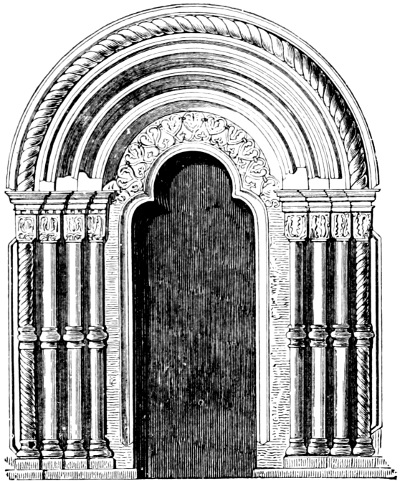
Fig. 371.—Porch of the Heilsbronn Monastery, near Nüremberg.
The shafts of the columns are usually plain, though in
some instances, for the sake of contrast, they are twisted
335or imbricated, and the bases are copies of the classic
orders (Fig. 373). Above the lintel and under the round
arch mouldings is the lunette or tympanum; this space
often has rich decoration of figures and ornament; sometimes
it is divided into two spaces, when the entrance
doorway is divided by a central pillar.
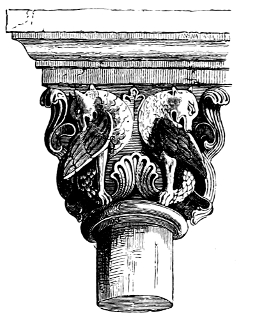
Fig. 372.—Capital from Wartburg.

Fig. 373.—Romanesque Shaft and Base.
The details and motives of Romanesque decoration are
derived from classic ornament—mostly Roman—and are,
as a rule, debased forms of the latter.
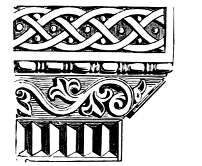
Fig. 374.—Roof Cornice of Church at Alstadt-Rottweil.
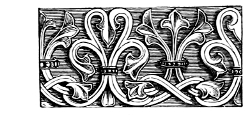
Fig. 375.—Later Romanesque Ornament.
336The cable or rope torus-ornament, the scale or imbricated
work, the chevron or zigzag, bead and reel, scroll,
billet, checkers, and diapers, were all extensively used in
the Romanesque, many of which have been retained in
the later forms of Gothic ornament. Figs. 374, 375, and
376 are examples of the above ornaments.
a, Arcaded.
b, Checkers.
c, Waved ribbon.
d, Cable or Torus.
e, Chevron or Zigzag.
f, Billet.
g, Nail-head.
h, Scales or Imbrication.
i, Lozenge.
k, Tooth Ornament.
Fig. 376.—Various Romanesque Moulding Ornaments.
The tower was a feature of later Romanesque work,
which marked the broad difference between the latter
and Byzantine architecture; these towers had their stories
decorated with semicircular arches on corbels or on small
pillars (Fig. 377).
The corbels usually consisted of masks or grotesque
figures, animals, dragons, or twisted snakes. These forms
of decoration were also used in the capitals and cornices,
337both in the Romanesque transitional and Gothic periods.
Grotesque forms were used very much as sculptural decoration
in the Lombardic Gothic architecture. In Scandinavia
and in Ireland this kind of ornament assumed the forms
of snakes, serpents, and interlacings developed from them.
(See Fig. 65, 69, 70.) The capitals were at first rude
copies of the Roman Corinthian order (Fig. 309), developed
later—after the character of the Byzantine cubical
forms—to a solid cubic shape, called in the Norman
style of Romanesque in England, the “cushion-headed”
capital.
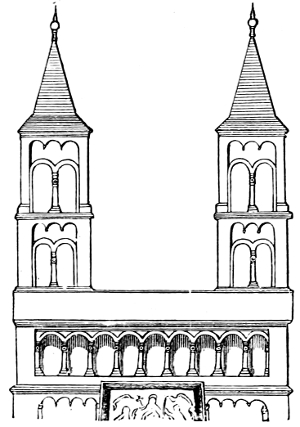
Fig. 377.—Towers and Round-arched Frieze, Abbey of Komberg.
Window-openings were usually small, and the grouping
of two or more lights under one arcaded head occurs in
Byzantine, Romanesque, and Gothic buildings. The light
came usually from the clerestory, but sometimes smaller
circular windows were introduced into the end gables,
which subsequently were developed into windows of
greater importance and intricacy of design in the great
Gothic chancels and in western lights.
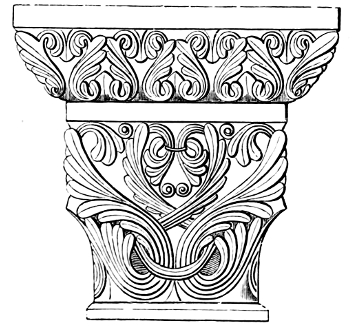
Fig. 378.—Capital from Palace of Barbarossa, Gelnhausen.
338

Fig. 379.—Capital from St. Cross, Winchester.
Romanesque architecture, and especially its decorative
ornamentation, was never quite free from Byzantine or
Saracenic influences. It was of itself an incongruous
mixture, out of which, when the pointed arch of the Saracens
was adopted, and the
ornamental features modified
to conform with it, the new
ogival or Gothic style arose.
In every part of Europe in
which the Romanesque took
root, there may be noticed so
many distinct varieties. The
style in Rome and Central
Italy naturally followed, as
we have seen, the antique
Roman forms. In the cathedral
of Pisa the capitals are
Corinthian, and there is a
greater display here of mosaics
and coloured marbles, both on the exterior and in
the interior, than in most Romanesque buildings.
339
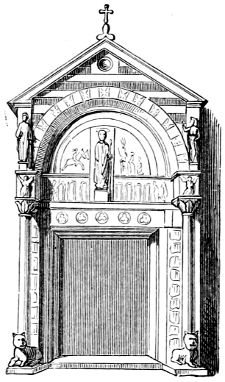
Fig. 380.—Porch of St. Zeno at Verona.
The style in Lombardy and Upper Italy is, on the other
hand, different to that of Central Italy, as it there inherited
the German traditions. The columns had in their capitals
leafage of a different character to that of the classic
orders, and had birds and animals carved amongst it,
and the bases of the columns rested on animals. Doorways
were square-headed, and had also a circular arch,
over which was a pedimented canopy (Fig. 380). One of
the finest examples of Lombardic Romanesque is the St.
Zeno Church at Verona, which
has a doorway of this description.
The Church of Monreale
in Sicily (A.D. 1174), and the
Cathedral of Palermo, exhibit a
mixture in which Byzantine and
Saracenic influences are well
defined; this was owing to the
successive powers that were at
different periods masters of that
country.
The Normans at a later date
made changes in the architecture
of Sicily, and Norman architecture
was developed to a great
extent in this place.
It was in Sicily that Norman
architecture first developed the
characteristic zigzag feature that is seen so much in the
Norman portals and window-heads in England (Figs. 381
and 382).
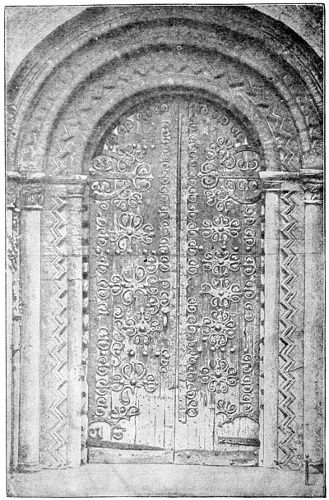
Fig. 381.—Norman Doorway, Semperingham Church, Lincolnshire. (G.)
The pointed arch of the Saracens was added to the
Norman Romanesque in Sicily. The Cathedral of Cefalu
(1132), and the palace of La Ziza at Palermo, are examples.
Nowhere else was the Romanesque of so mixed a character.
The illustration from Palermo (Fig. 383) clearly shows the
pointed Saracenic arch, used after the manner of the
Romanesque round arching, while some other portions of
341the details are distinctly Byzantine. In the south of
France Romanesque architecture is far more ornate than
that of the Norman style in Normandy, or other parts of the
North; in fact, the latter style in France has its ornament
confined to purely linear decoration; but the churches that
were built at the end of the eleventh and beginning of the
twelfth centuries, which represent Norman architecture in
its purest phases, were noble edifices, plain and solidly
built, of which the church of St. Etienne is a good example.
Its arcades rest on piers, it has a vaulted nave and
aisles, and has a fine transept. The gable of the nave is
flanked by two western towers, the western front is built in
three stories, and has two ranges of five-light windows.
The Cathedrals of Bayeux and Evreux may be mentioned
as two other fine examples of Norman architecture.
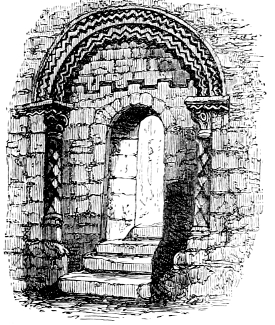
Fig. 382.—Berkeley Castle, Gloucestershire.
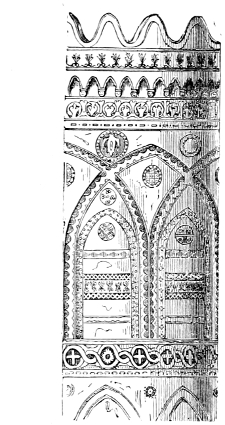
Fig. 383.—Pointed Arcading from the Cathedral of Palermo.
342The Romanesque doorway (Fig. 384) from the South of
France illustrates the somewhat motley character of this
architecture in that part of the country. Some churches
of this locality show the receding arches in the doors and
arcading, supported by engaged columns, which feature
was developed very much in the later Gothic.
The Romanesque style in England is seen in buildings
that were erected before the Norman Conquest.
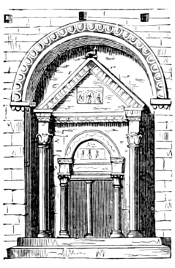
Fig. 384.—Door of St. Gabriel’s, South of France.
The buildings of this period—the eleventh century—have
received the name of “Anglo-Saxon.” They are characterized
by the round openings of
doors and windows, the latter being
sometimes triangular-headed. The
tower of Earl’s Barton, in Northamptonshire,
is an example of Anglo-Saxon.
It has pilaster-like strips of
stone decorating and tying the
masonry together; small triangular
and circular stone-work connecting
the perpendicular strips—a reminiscence
of arcading—gives a distinctive
appearance of wood-framing to
the whole work, which is probably a
copy of the earlier timber construction.
The Anglo-Saxon tower at Sompting, Sussex, and the
Saxon church at Bradford-on-Avon (A.D. 705), are also
examples of early work executedexecuted in England prior to the
Norman Conquest (1066).
The work we understand as Norman in England was in
existence long before the Conqueror’s time, and it is quite
likely that the subsequent English Gothic would have
developed just the same if the Normans had not invaded
England.
The English Romanesque, or Early Norman style, dates,
as near as possible, from Edward the Confessor’s time
(1041-1065). This king founded the great Abbey of Westminster,
of which the Dormitory substructure walls and
343vaulting still remain, but the rest of the original church
has disappeared. On the Continent and in England, just
after the year 1000, a great building period set in, as for
many years prior to this date a corresponding period of an
opposite kind, or a lethargy in the life of the Christian
peoples, and consequently an inactivity in all building
operations, was manifested, owing to the prophecy that the
end of the world would come in the year 1000. When
this was found to be a delusion, a building craze spread
over Europe, and the eleventh, twelfth, and thirteenth
centuries were the great building ages, when both Christian
and Saracenic architecture advanced with leaps and
bounds.
The Normans in England after the Conquest, no doubt,
hastened the advancement of architecture; for the rule
seems to have been that wherever they found a small or
old church of the Anglo-Saxon type or period, they
invariably pulled it down, re-dressed the stones, and built
a much larger and better church on the same site, using
up the old material when available, besides building many
churches on new sites. The Normans were also much
better builders than the Saxons, and at this time great
numbers of Norman masons were brought over from
France.
The strongholds, or castles, with their massive keeps,
were built at this period by the new Norman barons, in
order not only to have stately dwellings for themselves,
but to protect their newly-acquired honours and possessions
from their Saxon foemen. Remains of many of these
strongholds, especially of the keeps, are still to be seen at
Hedingham Castle at Rochester; Gundulph’s Tower—the
oldest—at Malling, Kent; Newcastle, Guildford, Colchester,
Richmond, and Conisborough in Yorkshire, &c. One of
the earliest is the great White Tower of London, in which
is found the beautiful little Norman Chapel, one of the best
and most perfect examples of Norman architecture in
England. The Norman keeps, or towers, are uniform in
344design, having a square plan, with a square projecting
turret at each angle, and a flat, thin buttress in the centre
of the walls; windows were small, and were round or
square-headed. The doorways were round-headed, recessed,
and were generally ornamented.
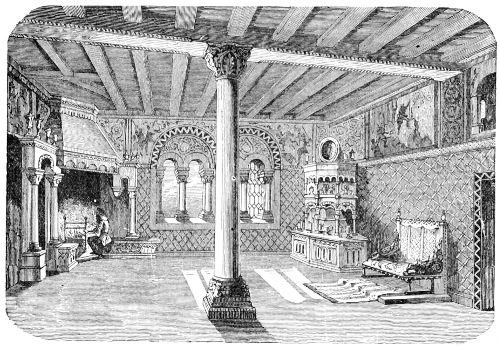
Fig. 385.—The Landgrave’s Room at the Wartburg.
Portions of Canterbury Cathedral, as indeed, of almost
all the principal English cathedrals, and many old
churches, were built in the Norman period, which shows
how extensively church building must have been carried
345on from the Conquest (1066) to the commencement of the
reign of Richard I. (1189). The Norman and oldest parts
of Canterbury Cathedral, built by Archbishop Lanfranc
(1070-1089), are the towers forming the choir transepts.
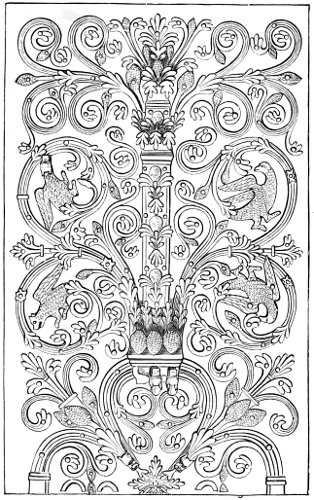
Fig. 386.—Romanesque Ornament, Iron Hinge from Notre-Dame, Paris.
346Prior Ernulf, under St. Anselm, rebuilt much of Canterbury
Cathedral (1130), and added richer elements to the
ornamentation. The peculiar plain cushion, or cubic
capital, found so much in England in Norman work, was
meant to be carved or enriched afterwards, but often the
want of funds, or haste and carelessness in after years, were
the causes that left them plain, until it was too late, when
the style had changed, and they were superseded by later
developments. It is certain that they were not intended to
remain so, for many have been left half-finished in the
carving, and some plain ones are found to alternate with
others of the same type, but richly carved, as at Canterbury
and some other places. Sometimes the intention
seems to have been to decorate them with painted ornament.
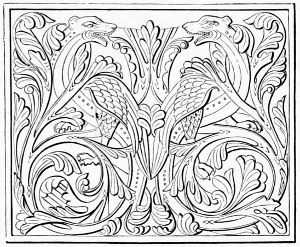
Fig. 387.—Romanesque Panel from a Church at Bonn.
At Winchester and Rochester Cathedrals, St. Peter’s
Church, Northampton, the transepts of Exeter, Peterborough,
and, above all, at Durham, the Norman style is
seen both in its best earlier and later developments.
The ornaments are very few, the zigzag being the chief.
The lozenge and billet are also used in the early work, but
347in the later, as in the rich doorways, such as that at Iffley,
Oxfordshire (1160), grotesque masks, frets, interlacings,
birds, dragons, fishes, and the quadruple form of the zigzag
are added. The columns in some cases are twisted and
banded, and Ionic volutes appear in the capitals. In some
late Norman work the tympana are richly carved with
figures and ornament. Many examples of Romanesque
non-ecclesiastical buildings are still in existence in Germany,
or have been skilfully restored as such, which give
a tolerably good idea of the private dwellings of this
period. The illustration (Fig. 385) is an example of the
domestic Romanesque. It is the interior of the Landgrave’s
room at the Wartburg, Germany.
Examples of Romanesque ornament are given in the
iron hinge from the Church of Nôtre Dame, Paris (Fig. 386),
and the panel from Bonn (Fig. 387).
348
CHAPTER XX.
GOTHIC ARCHITECTURE AND ORNAMENT.
The Gothic or “Pointed” style grew, as we have seen, out
of the Romanesque. Churches were built in which the
pointed arch was used side by side with the round arch of
Romanesque. These were the buildings of the transitional
period. In France, Germany, and in England some of
the earlier Gothic buildings were purer in style than those
of the later period. The work of the thirteenth century
is more correct in artistic principles, more restrained, and
less bewildering in the principles of construction than the
work of any subsequent period. The true home of the
Gothic style was in France, from which country it extended
to Germany and England almost simultaneously. The
Cathedral of Soissons in France may be mentioned as one
of the transitional buildings (1212), though portions of it
are of a still earlier date. It is noted for its early plate
tracery and very ornate foliated capitals. The hall of the
Hospital of St. John at Angers shows many features of
the transitional style. Its vaulted roofs and arching are
in the Gothic or Pointed style, and the windows are in the
round-headed Romanesque. The hospital was built by
Henry II., and completed A.D. 1184.
In England, portions of Canterbury Cathedral, the hall
at Oakham Castle, Rutlandshire, and the Temple Church,
London, may be given as examples of the transitional
Romanesque or Norman to the Early English Gothic.
In all the above examples, the square-moulded abacus
with debased Corinthian foliage on the bell underneath
349may be seen, which indicates the transitional type of
capital. The buildings of the transitional style may be
distinguished from those of the earlier one by being much
lighter in construction: the masons, having learned their
trade better, found they could economise the material—which
was a great thing in those days of rapid church
building—by having more slender proportions, which led
to the more refined and elegant style of the Early Gothic
both in England and on the Continent.
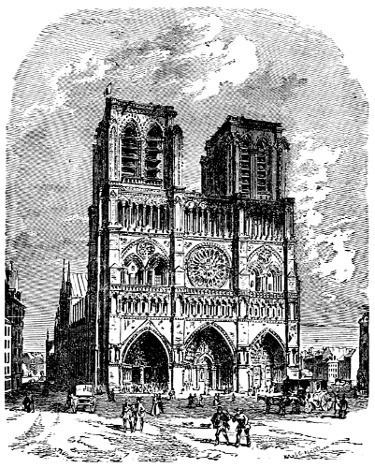
Fig. 388.—Cathedral of Notre-Dame Paris.
The Church of NôtreNôtre-Dame in Paris is a fine example
of the Early French style (Fig. 388). The towers look
350unfinished, but they had at one time wooden spires.
Chartres (1260), Rheims (1250), and Rouen (1280) are
other typical examples of this period.
The period of the Early English style lasted from about
A.D. 1190 to 1270, embracing the reigns of Richard I.,
John, and Henry III. This style is distinguished from the
Norman transitional by the light and lofty pillars used
singly or in groups and clusters, lancet windows, pointed
arches, and by the additional use made of buttresses and
pinnacles.
The slope or pitch of the roof is in harmony with the
pointed arches and lancet windows, and also the pyramidal
towers or spires. The greatest possible difference is
thus exhibited between the Norman Romanesque and the
Early English Gothic. Although the ground plan is
hardly altered in the latter style, the general lightness
and soaring vertical character of almost every detail, and
the multiplication of buttresses and pinnacles, give to the
Gothic erections of this period a triumphal look of mastery
over the material that in the science of building was
hitherto unknown.
The Early Pointed style in England is seen at its best
in Lincoln, York, and Salisbury Cathedrals and in Westminster
Abbey (Fig. 389).
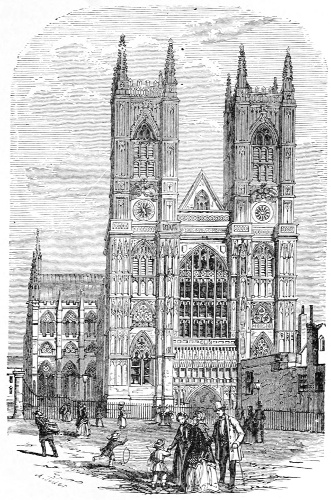
Fig. 389.—Westminster Abbey.
The Cathedral of Cologne founded by Conrad von
Hochstaden—that wonderful and huge pile of Gothic
architecture—belongs partly to the thirteenth but more
properly to the fourteenth century, having its foundations
laid in 1248 and consecrated in 1327. It has been added
to considerably even until modern days. It presents a
slightly wearisome repetition of parts, especially in the
buttresses, pinnacles, and other vertical forms of the
exterior, that in a measure robs it of some part of the
grandeur and sublimity which we should naturally expect
in an edifice of its size and proportions. It is based partly
on the design of the great Cathedral of Amiens in France.
The very rich canopies and windows of geometrical
351tracery (Fig. 390) are later than the thirteenth century,
and correspond closely to the Decorated period in England
(1270 to 1380).
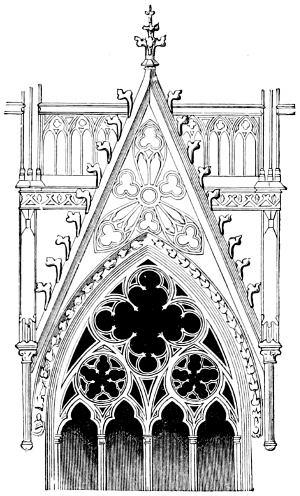
Fig. 390.—Window, Gable, and Parapet in Cologne Cathedral.
The interior of the Cologne Cathedral is strikingly illustrative
of the real spirit of the Gothic style. The consistent
unity and simplicity of its stupendous and upward-soaring
nave, and its still simpler choir—which has only as its
352ornamental features the stringcourse below the triforium
and the carved capitals of the shafts—combine to produce
in the spectator that feeling of reverence and deep respect,
not only for the sacred associations of the building, but
for the great master-spirits who conceived the design, and
who were able to work out to such a degree of perfection
this great mathematical problem in stone. This triumphal
achievement of “stylistic orthodoxy” on German soil is as
much, if not more so than any other Gothic building in
Germany, indebted to French inspiration and French
models. There are also many other churches in Germany,
in the country bordering on the Rhine—Strasburg Cathedral
353for instance—that have strongly marked features of
the French ogival style.

Fig. 391.—Porch of St. Lawrence, at Nüremberg.
The towers of St. Lawrence’s at Nüremberg are somewhat
Romanesque; but the windows, door openings, buttresses,
and pinnacles are in the Gothic style. The recessed
porch has a square-headed double doorway, richly
decorated (Fig. 391). The interior (Fig. 392) of this church
is extremely artistic in its general effect. The stonework
is of that dark brown colour that is seen in so many
German churches; the rich colour of the stained glass, the
pictures, and shields hung up round the piers and on the
walls, with their rich tones of gold and colours, the graceful
piers ending in the ribs and supporting the vaulting of
the ceilings, the carved rood-cross and pulpit, and above
all the great carved wood medallion of the Annunciation,
by Veit Stoss (1518), make up the richest of pictures,
which is a sample of what may be seen in many interiors
of German churches.churches.
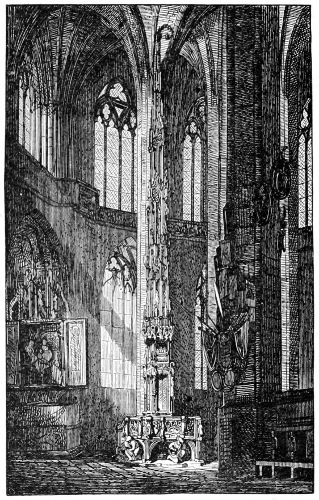
Fig. 392.—Interior of St. Lawrence, at Nüremberg.
354Another interesting church in Nüremberg is that of St.
Sebaldus, more from its association with the name and
works of Adam Kraft, who carved the figure work on the
exterior, and Peter Vischer, whose celebrated work is the
chief glory of this church—the Shrine of St. Sebaldus
(Fig. 393), one of the most important works of the fifteenth
century—than from its merits as an architectural
work. The plan of this church is bad in having its nave
and aisles of equal width, which is at utter variance with
355all ideas of good proportion and of the Gothic style. The
shrine of St. Sebaldus is modelled and cast in bronze;
Peter Vischer and his five sons laboured on it for twelve
years before it was completed. It is Gothic entirely in
construction, but most of the forms and details of the ornament
and figure work are purely Italian; for at this time—the
beginning of the sixteenth century—Germanic artists
were fascinated and strongly influenced by the art that
356flourished beyond the Alps. A fine cast of this monument
is in the Kensington Museum. The “Bride’s Door” of St.
Sebaldus (Fig. 394) has an interesting canopy of German
tracery.
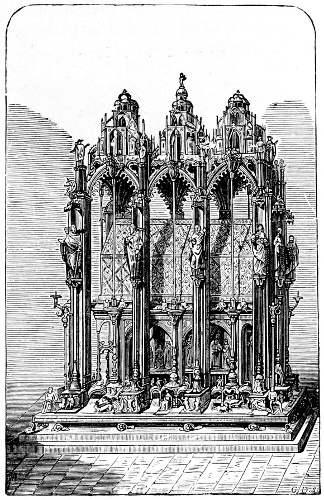
Fig. 393.—Shrine of St. Sebaldus, at Nüremberg.
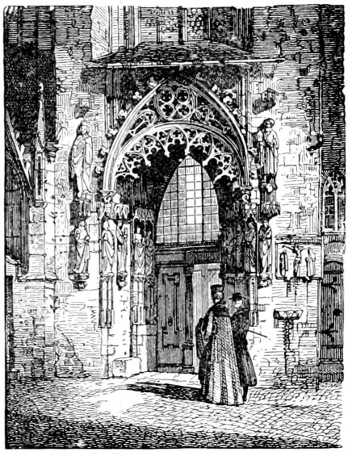
Fig. 394.—The “Bride’s Door” of St. Sebaldus, at Nüremberg.
Art having gradually passed into the hands of the bourgeois
element, the principal cities in Germany, especially
those of the north, vied with each other in the erection of
town halls and civic buildings (Fig. 395).
In the Netherlands, in Brussels, Bruges, Antwerp, Louvain,
Nüremberg, Augsberg, and Marienberg, many quaint
edifices are still found of the fourteenth and fifteenth centuries,
consisting often of brick glazed black and red, and
wide-jointed, or of stone throughout. They have mostly
steep roofs, battlemented cornices, and stepped gables.gables.
They are decorated with little spires or pinnacles, and
have horizontal or pointed openings to doorways and
windows, richly decorated friezes and stringcourses, open
357arcades under the first story, picturesques balconies, and
corner turrets ending in corbels, which were often richly
carved.

Fig. 395.—Town Hall, Marienberg.
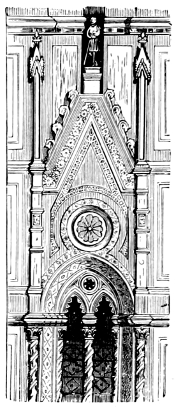
Fig. 396.—Window Gable, from the Cathedral of Florence.
The Gothic style was introduced into Italy in the twelfth
and thirteenth centuries, but it never took any great root
in that country. In Rome there are no Gothic buildings
of this period: there is one of the fifteenth century, the
Church of Minerva, but is a bad example of the style.
358On the other hand, there are some exceptionally fine
examples of Gothic canopies, of tombs and altars in several
churches in Italy. It is believed that they were copies of
French or English Gothic and were all the work of one
family of artists called the Cosmati. Mixed with these
Gothic forms in stonework they introduced bands and
panels of coloured mosaic, and also are credited with the
execution of much of the mosaic
beautiful pavement work known as
opus Alexandrinum. A particular
form of the Gothic style appears
in the north of Italy, and has been
called the “Lombardic” or the
“Pisan” style. This style of
Italian Gothic was never quite free
from classical influences. It is distinguished
by having numerous
small columns employed to decorate
exteriors and interiors.
Examples occur in the neighbourhood
of Pisa, Lucca, and in places
bordering on the Rhine. The Leaning
Tower of Pisa (1174-1350) is an
example. Part of the Baptistery
(1278) and the earlier portion of
the Duomo or Cathedral of Pisa are
built in this style. Lombard Gothic
was therefore contemporary with
the Early English and French.

Fig. 397.—Crockets, Lincoln.
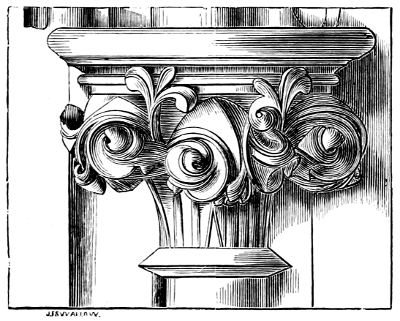
Fig. 398.—From the Temple Church.
In Florence a very beautiful mixture of the dome feature
with Gothic is seen in the Duomo or Cathedral, a well-known
and magnificent building. The window gable
(Fig. 396) gives a good idea of Italian Gothic. The
Cathedrals of Orvieto are other examples of Italian
churches in which Gothic forms are used. In all these
churches the façades are inlaid with coloured marbles of
elaborate panelling.
359The Cathedral of Milan is the finest example of a church
in the Gothic style in Italy, though it is by no means pure
Gothic. It is built of white marble and has some remarkably
good stained-glass windows. The Palazzo Publico
360at Florence and that of Siena are built in the Italian
Gothic style.

Fig. 399.—Dog’s Tooth or Nail-head Ornament, from Stone Church, Kent.
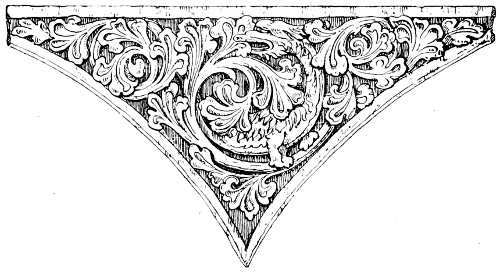
Fig. 400.—Spandrel, from Stone Church, Kent.
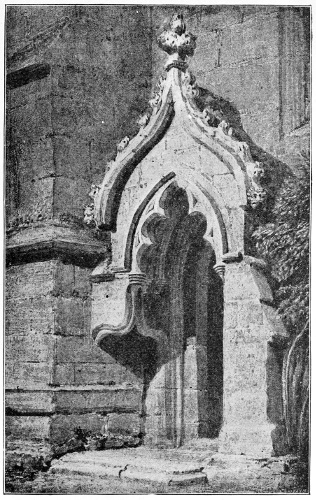
Fig. 400A.—Priests’ Entrance, Bishopstone Church, Wilts.
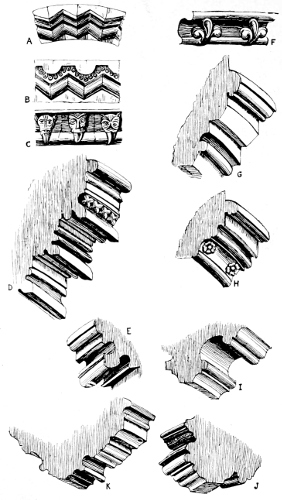
Fig. 401.—Norman and Gothic Mouldings.
a b c, Norman; d e f, Early English; g h, Decorated; i j k, Perpendicular.
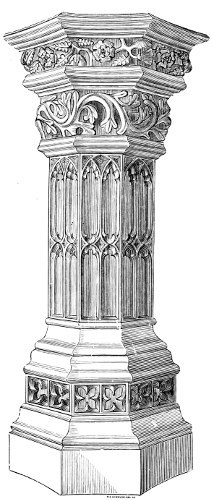
Fig. 402.—Pedestal, Henry VII.'s Chapel.
One of the most beautiful buildings in the world is the
well-known Doges’ Palace at Venice. The predominant
forms are Gothic, especially the lower arcading and the
pointed window openings. It rests on columns and arches
which compose the lower story, and has also the second
story arcaded, and pierced in its upper part with quatre-foiled
openings. Above this is a high rectangular story,
364built with lozenge-shaped slabs of pink marble, and pierced
with a row of large pointed windows, and has smaller
circular openings above these. A richly designed battlement
crowns the walls of the upper story. The caps of the
columns are beautifully carved, and sculptured figure
subjects decorate the corners of the building. This palace
was a long time in building; before it was completed
the style had perceptibly changed, so in consequence
the portico in some parts belongs to the fourteenth and
some to the fifteenth century.
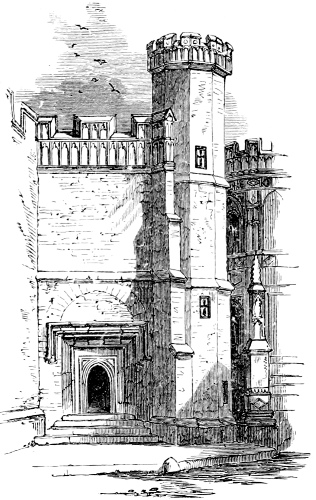
Fig. 403.—Place House, Cornwall.
365Throughout Venice the architecture with Gothic pretensions
is mixed very much with fifteenth and sixteenthsixteenth Venetian or Renaissance forms. The ogee arch was used
very much, and the Decorated style of windows and doorways,
arcadings, and balconies with Italian forms made a
quaint mixture that gives a very pleasing appearance to
some of the Venetian palaces.
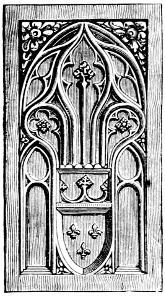
Fig. 404.—Flamboyant Panel.
French, Fifteenth Century.

Fig. 405.—Flamboyant Panelling.
French.
Gothic architecture in England has been divided into
three styles; the Early English, which lasted from about
A.D. 1189-1272, in the reigns of Richard I., John, and
Henry III.; the Decorated, A.D. 1272-1377, in the reigns
of Edward I., II., and III.; and the Perpendicular style,
A.D. 1377-1547, from the time of Richard II. to Henry VIII.
After this it became debased, and finally merged into the
Tudor or English Renaissance, sometimes called the
“Elizabethan.” A still later mixture of English Gothic
with Italian or Flemish Renaissance details was developed
in the reign of James I., which has been called “Jacobean.”
366The two latter styles never found much favour in
ecclesiastical architecture, but were developed mostly in
domestic and civic buildings, and used in the designs
of pulpits, screens, and church furniture. A great quantity
of carved oak and chestnut furniture was made in the
Jacobean style.
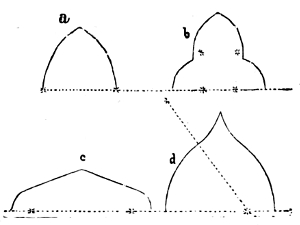
Fig. 406.—Forms of Gothic Arches.
a, Pointed; b, Cusped; c, Depressed; d, Flamboyant.
The various styles of English Gothic have their transitional
periods that extend and overlap them so much, that
makes it extremely difficult in some buildings to determine
which style they belong to; the difficulty is usually got
over by assigning them to their respective periods as the
beginning, middle, or end of a style. We have already
noticed Early English, which is the best and purest form
of the Gothic in England. In it we see the finest development
of window tracery based on geometric lines. Mullions
take the place of piers, windows have two or more lights,
the beginnings of the flying buttress, pinnacles, crockets
(Fig. 397), columns in clusters, round-headed capitals with
or without the characteristic trefoil foliage (Fig. 398) known
as Early English foliage (Fig. 398), which has been developed
from the Romanesque. The ornament called “dog’s
tooth” is common to the early examples of this style, and
is also a Romanesque decoration (Fig. 399).
367The Decorated style is a rich and more ornate phase
of the preceding style, and is further marked by the extensive
use of the ogee arch in doorways and windows (see
Fig. 400A), and by the greater profusion of sculptured
foliage, flowers, and ornament in the decoration. The
ball flower used in the hollow mouldings is characteristic
of this style, as the tooth ornament is of the Early
English.
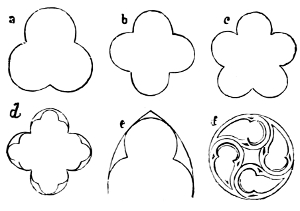
Fig. 407.—Forms of Gothic Tracery.
a, Trefoil; b, Quartrefoil; c, Cinquefoil; d, Cusped Quartrefoil; e, Pointed and Cusped; f, Flamboyant.
The Perpendicular style, as its name denotes, is characterized
by its long and narrowly divided windows and
similar panellings. Instead of the flowing lines of tracery
in the windows, the mullions are of a straight lined and
vertical character, and are divided at intervals by transoms,
or horizontal divisions. The pedestal (Fig. 402) from
Henry VII.’s Chapel is of Perpendicular panelling. The
beautiful fan tracery seen in Henry VII.’s Chapel in
Westminster Abbey and in Gloucester Cathedral is a
variety of this panelling. The doorways in this style have
pointed but depressed arches, and as a rule are enclosed
with square-headed mouldings or labels. The spandrels
formed by this arrangement are filled with tracery and
shields. Towers and cornices have battlements, &c. (Fig.
403). A general squareness is given to all the ornaments,
368and a more severe and dry character is the chief feature
of the Perpendicular decoration.
The Flamboyant Gothic style of the Continent is contemporaneous
with the English Perpendicular. The panels
at Figs. 404 and 405 are very good examples of Flamboyant
panel decoration. Forms of Gothic arches and
tracery are given at Figs. 406 and 407.
369
CHAPTER XXI.
RENAISSANCE ARCHITECTURE AND ORNAMENT.
Many things tended to bring about the art of the
Renaissance. The great impulse given to learning by
the study of the writings of the Greek and Roman poets,
lawyers, and philosophers, and the keen study of the
rich legacy of art and architecture left by Greece and
Rome, may be reckoned among the chief causes which
led to the development during the fifteenth and sixteenth
centuries of the Re-Birth or Renaissance both of literature
and art.
Dante, and his successors Petrarch and Boccaccio, were
called “Humanists,” for the reason that they studied and
advocated the knowledge that was needful to man in his
progress and in relation to his life in this world, and did
not confine themselves wholly to theology, which was the
case with those who devoted themselves to learning in the
Middle Ages. This led to a wider spread of knowledge
among the people, which was greatly stimulated by the
invention of printing. The rulers of the people also
encouraged learning and promoted the arts to an extent
unknown before. In Florence, especially, under the
powerful and beneficent rule of the Medici family, art
and literature received every attention, and made rapid
progress in every department of cultured knowledge and
skilful handicraft.
Great artists like Niccola Pisano, Brunellesco, Donatello,
Giotto, Alberti, and others of the early period, whose
individuality and great personality did more than anything
370else to bring about the epoch and the art of the
Renaissance, studied with evident purpose the existing
remains of the art of Ancient Rome. In this they only
followed the movement of the day in every branch of
art and learning: all classes in every walk of life were
then directing their footsteps to Rome in the pursuit of
knowledge. About the year 1414 the discovery was made
in the Monastery of St. Gall of the celebrated codex of
Vitruvius, a work wherein the learned writer had set forth
the principles of Roman architecture of the Augustan era.
This work was reprinted later at Rome, and was very
much used by architects as a guide for the better understanding
of the Roman temples and other buildings. As
the Gothic style in France, Germany, and in England was
approaching its climax, the art of the Renaissance in Italy
was developing, and the period of decadence in the former
was contemporaneous with the finest period of the latter—towards
the end of the fifteenth century. The transition,
or early beginnings of the Renaissance, has been called the
Trecento (1300) style, which in its ornamental features is
characterised by a free use of conventional foliage, mixed
with Saracenic or with Byzantine ornament, interlacings,
and scroll work; in sculpture and painting by a closer
study of nature and of antique remains, with an endeavour
to shake off the former stiff Byzantine traditions; and in
architecture by the use of the round arch and a revival of
some other features of the classic orders. Niccola Pisano,
Arnolfo di Lapo, Orcagna, and Giotto were some of its
exponents.
The next division is known as the Quattrocento (1400),
which is more properly the early form of the Renaissance.
To this period belong the real founders of the style: Filippo
Brunellesco (1377-1446), Lorenzo Ghiberti (1381-1455), and
Donatello (1386-1468); the former more particularly in
architecture, and the latter two in sculpture. The ornament
of the Quattrocento period—the fifteenth century—is distinguished
by its prominence of elaborate natural forms in
371festoons, scroll work, and other compositions; all the
ornament was decoratively arranged more or less geometrically,
but the details and actual working out were
closely copied from nature. The bronze gates of the
Baptistery of San Giovanni (1425-52) are the finest
examples of the Quattrocento style, both as regards ornament
and figure work. The modelled work in high relief
of fruit, flowers, and foliage on these gates, and similar
work on great medallions and altar-pieces of Luca della
Robbia (1355-1430) is characteristic of this style. These
natural forms, mixed with tracery ornamentation, acanthus
foliage, treated in symmetrical arrangements, and occasionally
cartouche or strap-work, were used in the
Italian ornament of this period. The panel forms were
usually Byzantine, but the rest of the ornament had no
symbolic meaning. Besides Luca della Robbia, the name
of Jacopo dell’ Quercia (1374-1438), the Sienese sculptor,
may be mentioned as one who executed some of the finest
work in figure and ornament in the above style.
The Cinquecento style (1500) was the culminatory
effort of the Renaissance. It is the art of Italy in the
sixteenth century, and is entirely devoid of symbolism in
its ornament. Although the difference is great in the
matter of style between the classic ornament of the Greeks
and that of the Italian Cinquecento, yet in their aim and
expression they are identical, for in both there is the same
striving to reach the highest possible æsthetic ideal, the
same delight in the production of beautiful lines and forms
for their own sakes, and a similar expression of appropriate
fitness—the outcome of a correct conformity to architectural
principles—pervades the ornament of both styles.
Returning to the art of the early Renaissance, we have
to mention two great names, already referred to—Giotto
in painting, and Niccola Pisano in sculpture, who may be
justly called the harbingers of the new era of Italian art.
The latter was the first to go to the antique for his inspiration
and style in sculpture. It appears—according to
372Vasari—that in Pisa there had been accumulated a great
collection of antique sculpture—the spoils of war—and
among them a sarcophagus, on which the "Hunt of
Meleager and the Calydonian boar "was wrought with
great skill, which was placed for ornament on the façade
of the Cathedral: this and other antique remains in the
city were studied to great advantage by Niccola, to the
great improvement of his style. One fine work of his,
executed in the spirit of the antique, was the pulpit for
the Church of San Giovanni in Pisa, on which are great
numbers of figures, representing the Universal Judgment.
For the Cathedral of Siena he also executed a similar
work with subjects from various passages in the life of
Christ. On this pulpit he had the assistance of Arnolfo
and Lapo, his pupils, and probably also that of his son
Giovanni. These works proved the great turning-point in
sculpture, from the archaic productions of the Middle Ages
to an era of better things, although in execution they left
much to be desired. Giotto was not only the great painter
who first invested his works with poetry, feeling, and
expression, but was also a skilful architect, as his fine
Campanile, or bell-tower, in his native city of Florence
bears witness. Dante and Petrarch were his friends, the
former especially so; the portrait of Dante by Giotto still
exists in the Chapel of the Podesta at Florence.
Brunellesco, as we learn from Vasari, was one of the
most interesting of men, and one of the most capable
artists of his time, a man of acute genius and ready
resource. In the early Renaissance period architecture
was studied by nearly all sculptors and painters, and many,
as we have seen, were apprenticed in their youth as goldsmiths.
Brunellesco was no exception to this rule, for we
find that he was a clever goldsmith and worker in niello.
The greatest work of his life was the building of the
cupola or dome of the Cathedral of Florence—he was the
only architect of his day that was found able to do it.
The Cathedral was the work of the Florentine architect,
373Arnolfo di Lapo, the foundations of which were laid in the
year 1298. Brunellesco also built the sacristy and dome
on the Church of San Lorenzo, which was decorated with
sculpture by Donatello, and was the architect of the Pitti
Palace, besides many other works. He gained his knowledge
of the construction of domes in Rome, more
particularly from that of the Pantheon, having drawn from
and made models of the domes of all that was worth
copying of the ancient remains at Rome, in company with
his friend Donatello, the sculptor.
The latter, with Brunellesco, Ghiberti, and a few other
sculptors, competed with their designs for the work of
making the celebrated bronze doors of the Baptistery of San
Giovanni at Florence, when Ghiberti’s design was adjudged
the best, and of which Michelangelo at a later period said,
when speaking of the gates, that they were “fit to be
the gates of Paradise.” Brunellesco’s design was good,
was more restrained in character, and was more consistent
with correct architectural principles than Ghiberti’s; but
the latter’s design was so fresh and so vigorous, that in
spite of its being too picturesque for sculpture it won
universal admiration.
The next great name in architecture is that of Leon
Battista Alberti (1404-1472), who naturally follows
Brunellesco. His most complete work is the Rucellai
Palace at Florence; he built and restored many churches,
tombs, and palaces; was a great mathematician, and very
learned in Latin, in which language he wrote poems, plays,
and treatises on painting and architecture.
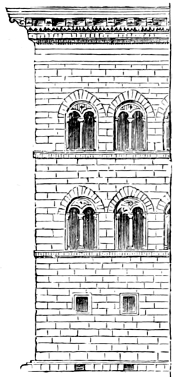
Fig. 408.—Portion of the Strozzi Palace.
The Rucellai Palace is a very fine work of the Renaissance.
It has the three orders of architecture in its
pilasters, with their entablatures. The lower story has a
small square window placed high from the ground between
every two pilasters, and has two square-headed doorways.
Between each pair of pilasters in the upper stories are
round-headed windows, which have each a double light
divided by a small column. The style of building is called
374“rusticated,” like so many of the Italian palaces (Fig. 408).
This is a roughened form of stonework, and was copied
from Roman buildings, which, together with the heavy
cornices and symmetrical repetition of windows, gave these
palaces a heavy and imposing look. Another palace of
the Rucellai type is the Cancelleria at Rome, which was
built by Bramante (1444-1514), a native of Castel-Durante,
in Urbino, who also built St. Peter’s at Rome, and
who was the greatest architect of the
Renaissance, of whom Michelangelo
testified “that Bramante was equal
to any architect who has appeared
from the time of the ancients to our
own, can by no means be denied.”
Michelangelo himself was the architect
of the dome of St. Peter’s, and
his sublime works in sculpture and
fresco adorn the interior.
The Cancelleria Palace is a masterpiece
of elegance and good proportion.
It has two imposing doorways,
and the plainness of its lower story
contrasts agreeably with the upper
two, which have rows of round-headed
windows enclosed in flat or
square-headed architraves, and are
placed at agreeable distances above
the entablatures of the lower stories. The two upper stories
are divided alternately into wide and narrow divisions by
pilasters, the windows being placed in the wide divisions.
This building is a marked improvement in point of beauty
on the Pitti and Rucellai palaces.

Fig. 409.—Upper Story
of the Farnese Palace,
Rome. Designed
partly by M. Angelo.
The Farnese Palace is another typical building of the
Renaissance. The design of it is attributed to Antonio
Picconi, who took the surname of San Gallo (148?-1546).
It is built in three stories, without pilasters, with a widely
projecting cornice, and has rather a monotonous look with
375its numerous windows of equal size. Michelangelo is said
to have designed some of the windows and the cornice
(Fig. 409), though some say that the architect Vignola was
the designer of the cornice, The central doorway is
“rusticated” and arched, and the angles of the building
are of dressed stones.
The celebrated building known as the Certosa (Charter-house)
of Pavia was begun by Borgognone in the year
1473, is an example of the most ornate phase of the
Renaissance, and offers a widely-marked contrast to the
almost bald simplicity of the palace
just described (Fig. 410). As a whole,
the façade of this building cannot be
called a model of good architectural
composition, but it is easier to criticise
its faults in this respect than to suggest
improvements. It contains, however,
many striking elements of beauty,
and is full of useful suggestions to the
architect and decorative artist.
The plan and shell of Renaissance
buildings were usually of the Romanesque
or Gothic types; the dome,
columns, and ornament generally were
all borrowed from the Roman remains.
The column, round arch, and horizontal
lintel or architrave feature were
extensively used in the palaces and other buildings of Venice
(Fig. 411), though the Renaissance style had a difficult
task to make headway in Venice against the strong Byzantine
and Gothic traditions that had hitherto prevailed.
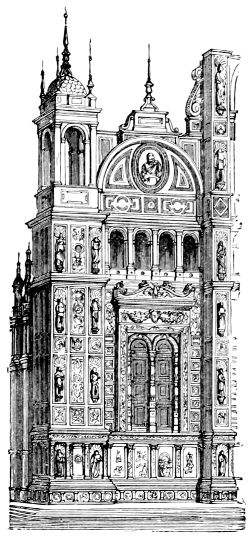
Fig. 410.—Portion of the Certosa of Pavia.
The general type of the Venetian palaces is a solid
panelled wall and pier arrangement or rusticated lower
story, which supports a central loggia, or arcaded second
story, that has circular-headed windows and heavy cornices
and balconies. The whole façade is richly decorated with
engaged columns and pilasters.
376The Cornaro, now the Mocenigo Palace, the Grimani
on the Grand Canal, now the Post Office, and the Spinelli
Palace, are said to have originally been built from the
designs of the great military architect, San Michele, of
Verona (1484-15881484-1588), to
whom the Signori of
Venice owed so much as
the designer of their fortifications.
Jacopo Sansovino, who
built the Library of San
Marco at Venice (Fig. 411);
Palladio (1518-1580), the
well-known writer on
architecture; Scamozzi,
and the Lombardi family,
may be mentioned as
other celebrated architects
and ornamentists, who
executed many works in
Venice and in Verona,
Florence, Padua, Vicenza,
Rome and Milan, etc.,
during the sixteenth century.
It was the tendency
of the Renaissance period
to build palaces and
castles, and in the later
times municipal and private
dwellings, as learning
and the arts were getting
into the hands of the laymen,
in contrast to the days of the Middle Ages, when the
clergy and monks were the architects and master-builders:
in those days hardly anything but churches had architectural
pretensions; but the case was different in the
Renaissance times, when the architects were not bound by
377the strict canonical laws of style; hence we find a greater
variety and wider range of ideas expressed in the art of the
period, due in a great measure to the individuality of the
artists, which has given to the art of the Renaissance a
different character in every country, district, or city to
which it had spread.
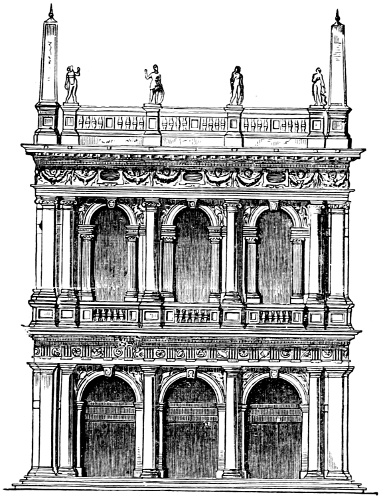
Fig. 411.—Library of San Marco, Venice. By Sansovino.
The greatest Venetian architect of the seventeenth century,
Longhena, flourished (1602-82) when the Renaissance
had entered into its Baroque phase or period of decadence.
He built many churches and palaces in Venice and in
some other cities of Italy, but his greatest work is the
celebrated Church of the Salutation—"Santa Maria della
Salute"—in Venice, a picturesque building that has been
378painted and photographed more frequently than any other
church in the world. With its domes and bell-towers, and
its great buttresses decorated with figures that support the
drum of the dome, it presents a striking object of picturesque
beauty. This church and the Pesaro and Rezzonico
palaces are exceedingly rich and ornate, but are overloaded
with figures and decorative details—the Pesaro
Palace especially—which is very characteristic of the florid
work of the seventeenth century. Their magnificence of
style reflects the palmy days of Venetian grandeur, and
contrasts strongly with the simpler and better architecture
of the early Renaissance period.
The influence of the Italian Renaissance spread to
France in the days of Louis XII., and Francis I., the
monarch who did so much for French art. Afterwards, in
the reign of Henry II. and Catherine de’ Medici, who
greatly favoured Italian art and artists, we find the
Renaissance taking a deep root in France. Fra Giocondo
was summoned to France from Italy by Louis XII., who
reigned 1495 to 1515, and caused to be built the Château
de Blois, and the Château de Gaillon in Normandy
(1502-10) In these two buildings the native French
Gothic received a grafting of the Italian forms. This was
the case in France for a long time, as in that country the
Gothic style was then in the full zenith of its Flamboyant
period.
The Castle of Chambord is one of the finest examples,
and a portion of the Château de Blois, by Viart, the
architect of Francis I.
The early French Renaissance is quite different from the
Italian, partly from the reasons we have stated, but it has
a liveliness and exuberance that is full of inventive
resource. The buildings are noted for their pointed roofs,
and for their multitude of picturesque towers and pinnacles,
and also rich carvings of a refined class of ornament.
The French Flamboyant Gothic and the Italian Decorative
forms are happily blended in this style, to which the
379name of “François Premier” (Ier) has been given. This
style was chiefly brought about by the employment of the
Italian sculptors and architects, Serlio, Vignola, Primaticcio,
Il Rosso, Cellini, and others who had been invited
by Francis I. to build and decorate his châteaux and
palaces. Primaticcio was also entrusted with the task of
collecting a series of antique casts and copies of antiques
from Rome for the gardens of the palace at Fontainebleau.
This, no doubt, had the effect of helping to form the taste
for classic art among French artists. Owing to all the
above circumstances, French art began to show more of
the influence of the Italian style. The Roman orders were
henceforth invariably used, but still the new style was
modified in a great measure to suit the French taste.
What is known as the Henri Deux (Henry II.)(Henry II.) style is
another French development of the Cinquecento, in which
there is a preponderance of strap-work, with figures, masks,
grotesques, cartouches of all kinds, and much of the conventional
Saracenic ornament. The monogram of Henry
II. and the arms of Catherine de’ Medici often appear in
this ornament, as seen in the decorations of the Château
d’Anet (1548) and on the Oiron or Henri Deux pottery.
Pierre Lescot (1510-1578) designed the western façade of
the Louvre, in Paris, and Jean Buillant designed the oldest
parts; these two architects and another, Philibert Delorme,
brought the Renaissance to such a head in France that it
became immediately the national style.
The great names in architectural sculpture of the early
French Renaissance were Jean Goujon and Paul Ponce,
who carved the principal figures of the façades of the
Louvre. Towards the early part of the seventeenth century
the architecture began to assume a more florid character,
under the hands of Lepautre and Du Cerceau. It became
richer, but less pure in style, an example of which is the
Apollo Gallery of the Louvre, designed by Lepautre. By
the time of the latter half of the seventeenth century the
desire for show and the expression of magnificence,
380especially brought about by the “Grand Monarque,”
Louis XIV., assisted by the efforts of his architects,
Mansard, Perrault, Lemercier, and Blondel, who ministered
to the whims of the powerful King, speedily laid the foundations
for the loose and unrestrained Baroque or Rococo
style which subsequently followed. The name of “Louis
Quatorze” has been given to the style developed in the
reign of this king. “Louis Quinze” and “Louis Seize”
are names of subsequent French styles, which will be
considered under the head of Renaissance Ornament.
The tame and spiritless palace of Versailles was designed
by François Mansard, who invented the Mansard roofs
which have been used together with this style for nearly
all the palatial buildings of Europe. The purity of the
Italian Renaissance was forgotten or ignored by the
nations of Europe, and the stiff and pompous buildings of
Louis XIV. were accepted as the patterns that all civilization
was eager to copy. Even old churches and mediæval
castles were transformed in some portions of their interiors
into Louis XIV. imitations. In Windsor Castle the great
ballroom has been vilely treated with the meaningless
incrustations of this period, by the way of decorations,
endeavouring, however, to make amends for its tasteless
poverty of invention by the arrogant display of its rich
covering of gold leaf.
In the late seventeenth and during the eighteenth
centuries, the Rococo or Baroque phase of the Renaissance
was in vogue in Italy and France, and indeed
everywhere in Europe. The main characteristic of the
Baroque style is the undue prominence given to the
ornament and decoration, which arose from a gradual
forgetfulness of the Roman and Greek principles of construction,
and a want of order in the arrangement of the
principal forms in the architecture. By degrees these
forms took a secondary position: columns supported
nothing or only a few mouldings, cornices and pediments
were broken, brackets and consoles were inverted, mouldings
381ended in scrolls, hanging curtains were represented
on stone carving, also wreaths of roses; pediments and
gables had weak outlines of carved forms, shells and rock-work
(rococo) ending in weedy scrolls, which doubtless
was a Chinese inspiration, grafted on the prevailing style;
in fact, the utmost license and riot in decoration seemed to
be allowed, as it aimlessly sprawled over architecture,
furniture, and interiors, until art had almost evaporated
from the decorative productions of the age.
In spite of this, however, something must be said in
favour of the Rococo: at the least it was homogeneous in
its way; some of the figure work that forms part of the
ornament is very fine, the finish and perfection also of the
carved, painted, and gilt surfaces, from a technical point
of view, leave usually nothing to be desired. The curved
and broken character of the ornament is excellent for showing
the play of light and shade on the gilded surface, and
the effect of some interiors is very rich and brilliant; but
when decoration takes the place of construction, however
well executed it may be, it becomes more
of an incrustation than a requirement.
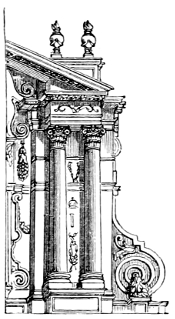
Fig. 412.—Portion of the
Façade of St. Paul and
St. Louis at Paris.
Lorenzo Bernini (1589-1680) and
Francesco Borromini (1599-1667) were
Italian architects who chiefly brought
about the Rococo in Italy. They
treated the classical forms with extraordinary
freedom. The column especially
was degraded in its use. It sometimes
supported only a few mouldings,
and at other times was carried through
two or three stories, when its proper
function is to represent one story. One
kind of architectural style a little later
than this period was called the “Jesuit
Style” (Fig. 412), in which churches of the Jesuit Order were
built. On the vaulted ceilings of these churches a florid
type of painting of sacred subjects was used as decoration.
382In Spain the Renaissance, mixed with some Saracenic
features, produced some very good work; the typical
example of Spanish Renaissance is the Escurial, the great
palace of the Spanish kings.
In Germany the Italian Renaissance made but a tardy
advance, and was never thoroughly at home in that
country. German Renaissance is far less refined than
that of other countries which were influenced by the Italian
style. It is chiefly in painting, furniture, book illustration,
and in goldsmiths’ work that it appears at its best, and not
in architecture. This was owing to the art of Germany
being at that time in the hands of the burghers when the
advent of the Renaissance took place, and also that the
mass of the people were more concerned in the study of
ethics and philosophy than the arts. Another reason may
be added, that the nation was unsettled, and occupied with
the great religious upheaval of the Reformation. All these
things proved to be sufficient to retard the advancement of
the Renaissance in Germany for more than a hundred
years. One of the best examples of the Renaissance we
can point to in Germany is the Castle of Heidelberg, built
by the Elector Otto Heinrich (1556-1559). The two
façades of this castle, which are now in ruins, have engaged
columns and pilasters; the windows have rather heavy-headed
features, and are richly carved; statues are placed
in the niches between the windows. The portico of the
Town Hall at Cologne is another example, and the Cloth
Hall at Brunswick is a very interesting specimen of
German Renaissance. It is deficient in proportion, however,
by the extreme horizontality of its eight series of low
stories in the principal façade, but is otherwise very
picturesque.
The German Renaissance towards the later periods was
characterised by its elaborate carving of ornament, figures,
and animals in wood and stone; armorial bearings,
escutcheons, shields, and cartouches or ornamental labels
were very common in German work, and in most other
383forms of Renaissance ornament in Europe, except in the
purest form of the Italian Cinquecento, when highly
decorative vase forms and labels took the place of the
shield and cartouche work of the Quattrocento period.
The Renaissance in England made its earliest appearance
in the reign of Henry VIII. John of Padua was an
Italian architect employed by that king. Hampton Court
Palace in its earlier portions, built by Cardinal Wolsey in
1515, is Gothic, but it has been considerably added to
since, and partly rebuilt in the time of William III. in a
kind of Renaissance.
In the reigns of Queen Elizabeth and James I., the
Elizabethan or English Renaissance and the Jacobean
respectively were predominant. The latter style was
developed by Dutch architects working in England on
the Elizabethan models, and is distinguished by shield
work and carvings in high relief, in opposition to the
lower relief cartouche and strap-work of the Elizabethan
style.
The Elizabethan Renaissance is more like German work
than the French, but, of course, has its native peculiarities,
developed from its mixture with the Tudor Gothic of the
time. This mixture is seen in many of the old halls and
mansions built about this time in England.England. Wollaton
Hall is a fine example of the Elizabethan (Fig. 413), and
Holland House, Kensington, is another fine mansion of
the same style (Fig. 414).
These castellated buildings of the Elizabethan style, in
red brick and stone dressings, are in singular and pleasant
harmony with the grand parks and richly wooded English
landscape with which they are usually surrounded.
Inigo Jones, in the early part of the seventeenth century,
and Sir Christopher Wren, his successor, were the greatest
names in architecture of the English Renaissance period.
The former was a close follower of the Italian architect
Palladio, and designed, usually, his buildings after the
Roman models. The palace at Whitehall, the church and
384piazza in Covent Garden, and Crewe Hall in Cheshire were
built from his designs.
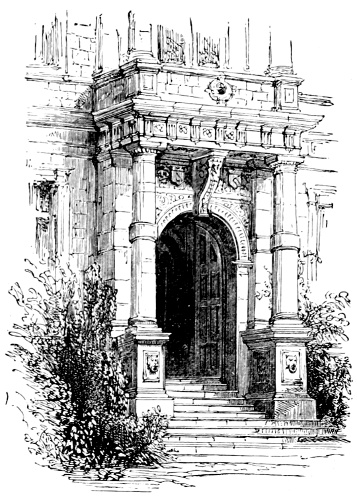
Fig. 413.—Elizabethan, North Entrance, Wollaton House.
The Cathedral of St. Paul’s is too well known to need
description. It may be mentioned as the most important
example of the late Renaissance in England. It was
thirty-five years in building (1675-1710), and although
some details and the ornament generally incline to the
Baroque, the building as a whole is one of the finest and
most impressive works ever produced in any country.
Wren built a great many churches in London during the
time that was occupied in the building of St. Paul’s, St.
Stephen’s, Walbrook, being one of his finest. Chelsea
Hospital, the Royal Exchange, together with some City
385Halls and twenty-five churches, were built from his
designs or under his directions.
The architecture of the present day in France leans
mostly to Renaissance traditions.

Fig. 414.—The Ancient Parlour, Holland House.
In Germany, Greek and Roman styles find favour, but
Gothic and Renaissance, and sometimes Romanesque
style of buildings are now erected.
In England about one hundred years ago there was a
Greek revival, due in a great measure to the publication of
Stuart and Revett’s works in connection with their close
386study of Grecian architectural remains. St. Pancras
Church, in London, is one of the outcomes of this revival.
Sir William Chambers was the architect of the beautiful
riverside building—Somerset House, on the Thames
Embankment (1725-1796); he also designed a great deal
of furniture and the State carriage. He published important
works on architecture and furniture, which had
considerable influence on the design of the latter in
England. In the first half of this century a Gothic revival
took place, which was greatly brought about and assisted
by the writings and architectural work of A. W. Pugin.
The Houses of Parliament, built by Barry, are the finest
examples of the Gothic revival in England. They are
built in the Perpendicular or Tudor style. Sir Gilbert
Scott was a late exponent of the modern Gothic style
(1811-78), and was the architect of the Albert Memorial
in Kensington Gardens, St. Pancras Railway Station and
Hotel, London, besides building and restoring many
churches in the Gothic style.
The architecture of the present day in England tends to
the Renaissance, with a slight mixture of Gothic and much
that is original in the ornamental details, but Gothic is
still a favourite style for churches.
Ornament of the Renaissance.
The ornament of the Renaissance period was founded on
thethe Roman. Before describing the former it will be
necessary to say a few words concerning its prototype, the
Roman. More than anything else the great use of the
acanthus foliage characterizes the ornamental art of the
Romans. The treatment of the acanthus in Roman architecture
has already been noticed in the first part of this
work. A fine boldness and freedom was everywhere
apparent in the Roman treatment of this foliage (Figs. 28
and 29).
Large scrolls of acanthus (see Fig. 319) in which
387birds, reptiles, and insects are arranged to fill the unoccupied
spaces are used in pilasters, friezes, and panels.
Chimeras as whole or half figures with foliage endings,
griffins, and large vases well decorated, were used as
symmetrical arrangements in friezes.
The well-known acanthus scroll frieze from Trajan’s
Forum is a very typical example of the soft-leaved acanthus.
The rosette of the scroll, as in nearly all classic ornament, is
made up from acanthus-leaves arranged in a radiating
manner, like a flower (Fig. 415).
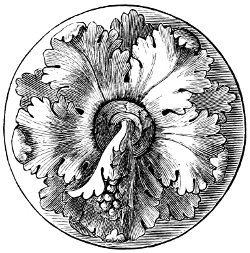
Fig. 415.—Rosette from Scroll, Forum of Trajan.
Some of the ornament on the antique Roman bronze and
silver work is particularly beautiful and delicate, as may
be seen on the silver wine crater found at Hildesheim
in Hanover, which is one object of a collection found
at that place in the year 1869. These and the treasures
found at Pompeii and Herculaneum, together with the
wall paintings at the same places, give us a good idea of
Roman art in domestic decoration and the minor arts and
crafts.
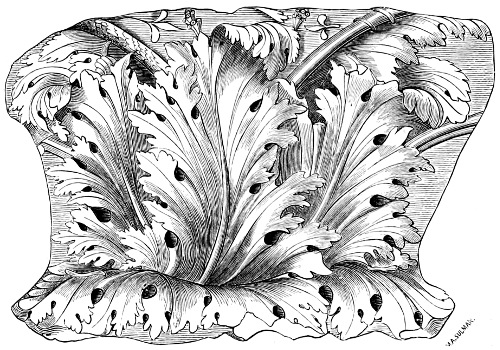
Fig. 416.—Nest of Scroll, Roman Panel, Florence.
The Pompeian objects, chiefly in bronze (Fig. 417) and
the wall paintings (Figs. 418-20) are as much Greek as
Roman in style, as they are chiefly the work of Greek
artists executed for the Romans.
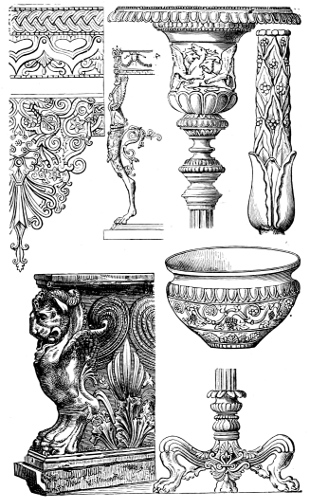
Fig. 417.—Objects of Art handiwork, from Pompeii.
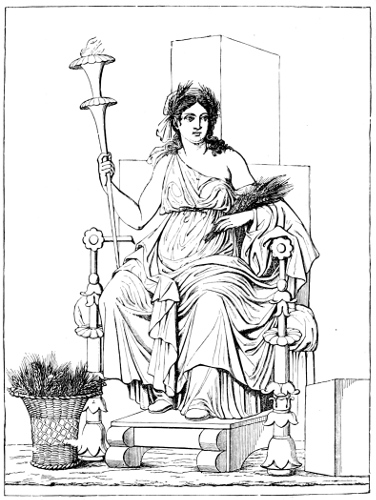
Fig. 418.—The Goddess Demeter enthroned. Wall painting from Pompeii. (B.)
388The Baths of Titus and Diocletian and the palace of the
Cæsars on the Palatine Hill, Rome, were decorated with
grotesques similar to those of Pompeii, and were studied
to great advantage by Raphael and his pupils and assistants
when decorating the Loggia of the Vatican. Thin
tendrils, festoons of fruit, animals, masks, all kinds of
grotesque forms and birds flying and playing in and out
of light scrolls, architectural constructions of a light and
fantastic character, and panels of landscapes formed the
389subjects that were painted on the walls, which were often
divided into friezes, panels, and dados. These decorations
were executed in tempera colours of bright reds, greens,
yellows, blues, and black. The antique grotesques, so
390called from being found on the walls of underground
chambers, or “grottos,” together with the figure subjects
taken from Greek gems, furnished Raphael and his celebrated
pupils Giovanni da Udine (1487-1561) and Perino
391del Vaga (1500-47) with fanciful ideas for the decoration
of the Loggia of the Vatican, and the Villa Madama, at
Rome. These grottesches were painted in a kind of fresco
or tempera on a white ground with a fairly bright variety
of colouring. Some portions of the decorations were
executed in stucco relief made of a composition of lime and
marble dust, and were sometimes gilded. Giovanni da
Udine, or Ricamatore, as he is also called, was especially
celebrated at this stucco-work, and in the drawing of
animals and birds. He, and another celebrated artist,
Primaticco, assisted Raphael’s great pupil Giulio Romano
(1492-1546) in a similar kind of decoration at the ducal
palace of Mantua. The latter artist executed the principal
figure work at Mantua, and also at the Villa Madama.
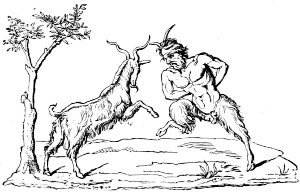
Fig. 419—Pan. Wall Painting at Herculaneum. (B.)
There is no lack of good examples of Italian ornament,
especially in carved marble and wood, in the churches and
palaces of Italy and France.
The Museum at South Kensington is rich in casts and
in real examples of Italian ornament, has excellent copies
of the Raphael pilasters and other examples of painted
decorations. In addition to this the maiolica plates and
vases furnish good examples of painted decoration of the
Renaissance period.
It is only necessary here to illustrate and describe a few
392examples of the style, as they appear in architectural
decoration, for under the heads of the various historic
industrial arts many examples of Renaissance ornament
will come under our notice in a succeeding volume.
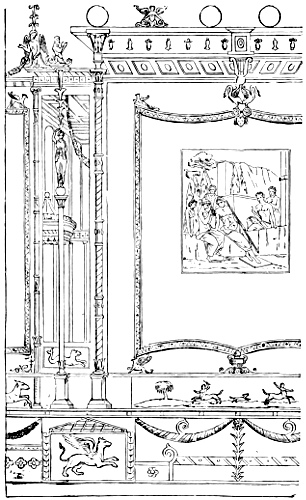
Fig. 420.—Mural Painting. Pompeii.

Fig. 421.—Pilaster by Donatello.

Fig. 422.—Ornament from Baptistery Gates, Florence.
394Belonging to the ornament of the fifteenth century, or as
it is called the “Quattrocento” (1400), we have a beautiful
little pilaster (Fig. 421), designed by Donatello (1386-1438).
The portion of the ornament of the architecture from
Ghiberti’s bronze gates of the Baptistery of Florence (Fig.
422) shows the use of natural forms ornamentally arranged,
which was one of the characteristics of the Quattrocento
style; and the tabernacle (Fig. 423) shows the transition
between the use of the natural forms and the more severe
conventional ornament of the Cinquecento period. Luca
della Robbia (1400-81) was one of the ablest masters of the
Quattrocento, and Riccio, called Briosco, was also an
artist of this period who was engaged on the decorative
work of the ducal palace at Venice.
The Cinquecento (1500) is the name given to the style of
the sixteenth century. So many brilliant names belong to
this period that it becomes a difficulty to give in our space
an adequate selection of this work. It was towards the end
of the fifteenth century that many of the ancient monuments
had been excavated; and the Italian artists from
Michelangelo and his great contemporaries down to the
artists of lesser powers, followed the strong inclination
of the times in their deep study of the antique, and sought
more and more to invest their creations with the spirit of
ancient art. The lingering traditions of Byzantine forms
that were in some degree a part of the Quattrocento style
were now entirely excluded from the purer art of the
Cinquecento, and anything that had a precedent for existence
in the antique was copied or imitated in a modified
manner, and improved upon in point of delicacy in the
treatment.

Fig. 423.—Tabernacle. End of Fifteenth Century. Italian. (P.)
Though the arabesques of Raphael and his pupils in the
Loggia of the Vatican (1515) have been severely criticised
as being full of coarse absurdities and designed with
questionable taste, still, taking them as a whole, they
were a decided improvement on the grosser absurdities of
the Pompeian school of grotesque decoration, and they
396are certainly distinguished by good drawing and clever
execution. Doubtless the later achievements in painted
decoration at the Villa Madama and the ducal palace of
Mantua had less incongruities of design and were more
refined than the Vatican pilasters, but they lack the freshness,
the boldness, and virility of the latter. It is not
always a good argument, for instance, to say—which has
often been said of the decoration in question—that a thick
stem should be used to support heavy masses, for it can
be said with equal truth that a thick stem may be painted
to look like a weak vegetable flabby stalk—like that of a
cabbage—and so have really a weaker appearance than one
painted to represent the fibrous stem of a woody tree; and
besides, if a thin stem supporting a heavy mass is vigorously
397drawn, it will look strong enough, and be useful also
in giving the necessary amount of contrast that is wanted
in decoration. Such a thing may be quite admissible in
painted ornament that would be out of place in sculptured
work or in architectural forms.
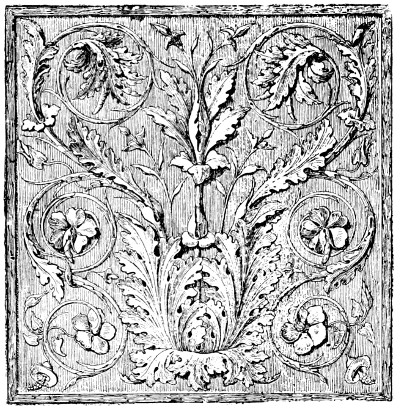
Fig. 424.—Cinquecento Floral Ornament. Acanthus, Oak, Convolvulus, &c.

Fig. 425.—Venetian Panel. Sixteenth Century.
The Cinquecento artists were better craftsmen than the
Romans. The design and delicacy of finish on some of
the sculptured ornament of
the sixteenth century have
never been excelled in any
period of the world’s art
history. It is strange that
many of our would-be
teachers in design of the
present day are not in sympathy
with it; perhaps
however, it is not to be
wondered at, for they may
have tried, and found how
difficult it really is to get
within measurable distance
of its excellence. It is
cheap and plausible to say
that a style is dead with
the people who created it;
but this is not what the
artists of the sixteenth century
said, and we know what they produced out of a dead
style. By all means let us have originality, if it is good
art, but let us have the good art first.
In the Cinquecento ornament we find that a greater
variety of plants, animals, and designed objects, such as
vases, candelabra, and armour, were made use of than is
generally found in antique ornament. The acanthus, vine,
oak, and poppy foliage have all been simplified to a
general type of acanthoid leafage (Fig. 425). Such animals
as the lion, goat, and the dolphin fish form occur frequently,
399sometimes almost naturally, but more often with
foliated endings (Figs. 425 and 426). Some compositions
are made up entirely with well-chosen vase and candelabra
forms (Fig. 427).
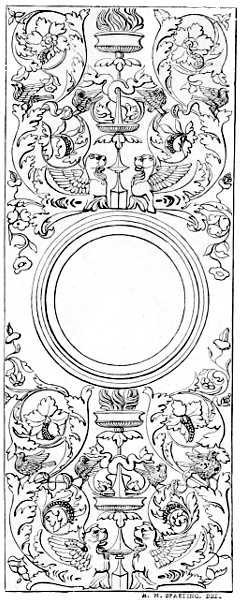
Fig. 426.—Cinquecento; from the Martinengo Tomb, Brescia.

Fig. 427.—Candelabra and Vase Panel.
In the Cinquecento, the Greek
guilloche pattern with rosettes
is used, and an Italian rendering
of the anthemion, and also of the
Greek honeysuckle band pattern
(Fig. 428).
The Lombardi family of Venice
were celebrated as sculptors in
ornament. Pietro the elder (1481)
was the architect of Dante’s tomb
in San Francesco at Ravenna,
but his greatest work was the
Church of Santa Maria de’ Miracoli
at Venice, in which he was
assisted by his sons Tullio and
Antonio in the sculptured decorations.
Tullio was the most
gifted as a sculptor, and his
ornament is the best of the
Cinquecento period at Venice
(Fig. 429).
Martino Lombardo was the
architect of the Scuda di San
Marco at Venice, in the decorations
of which he was aided by
Tullio. Some of the best specimens
of the ornament of this
period are to be found on the
Martinengo tomb, in the Church
of the Corpo di Cristo (1530). The ornament bears a
strong resemblance to the Lombardi, but the sculptor is
not known (Fig. 426).

Fig. 428.—From a Marble Fountain in the Louvre. (1508.)
The ceilings from Serlio’s book of architecture, and from
401San Spirito, by Sansovino, are good examples of the
Renaissance panelling and decorative filling (Figs. 431
and 432).

Fig. 429.—Panel from Santa Maria de’ Miracoli, Brescia. By Tullio Lombardo. (1500.)
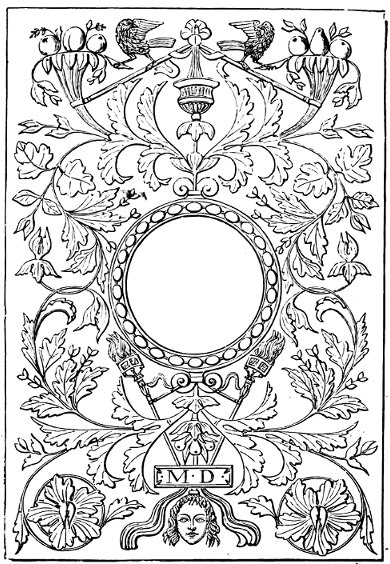
Fig. 430.—Panel from the Facade of Santa Maria de’ Miracoli, Brescia. (1530.)

Fig. 431.—Renaissance Ceiling. (From Serlio’s Architecture.)
One of the purest examples of the Cinquecento in France
is the ornament found on the pilasters of the monument
erected to Louis XII. at St. Denis, Paris (Fig. 433). The
sculptors are said to have been Jean Just and François
Gentil. The figure work on this monument was executed
by Trebatti, a Florentine sculptor. Another phase of the
Renaissance in France is the Henry Deux style. It is
illustrated in the carved door-panels from the Château
d’Anet (Figs. 434 and 435) (1548), where the tracery, interlaced
work, and shields are combined to form the features
of this ornament. The initial letter H of the king and
402the crescent arms of Diana of Poitiers are seen very often
on the shields.
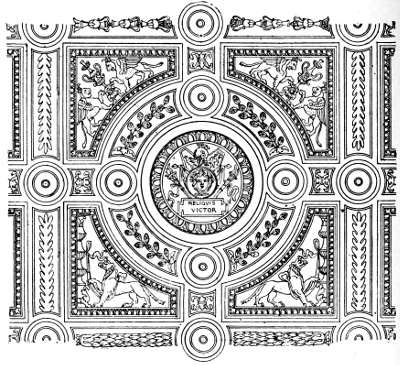
Fig. 432.—Ceiling Decoration, from San Spirito, Florence. By Sansovino.
Jean Goujon and Jean Cousin were employed on the
decoration of this castle.

Fig. 433.—Pilasters, from the Monument to Louis XII., St. Denis, Paris.
An extremely rich example of French carved wood is
the panel from the Château Gaillon, in Normandy (1515)
(Fig. 436).
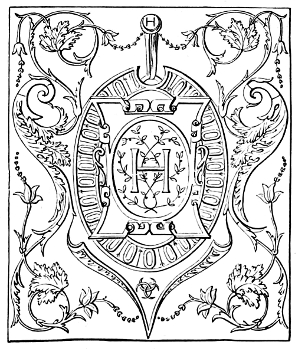
Fig. 434.—Carved Panel, Henry II. style, from the Château d’Anet.
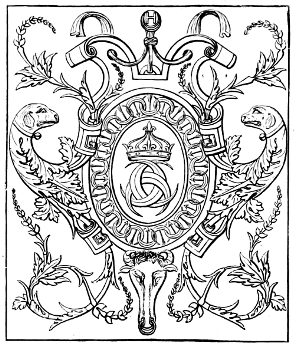
Fig. 435.—Carved Panel, Henry II. style, from the Château d’Anet.

Fig. 436.—Carved Wood; Château Gaillon. (1505.)
The above examples, and the chimney-piece panel by
Germain Pilon (1560) (Fig. 437), another sculptor employed
by Catherine de’ Medici, are a few of the best
specimens of the Cinquecento period in France.
405Elizabethan ornament, or that of the Renaissance in
England, is characterized by a preponderance of strap-work,
and has animals, masks, rosettes, half-lion or half-human
terminals, debased class of mouldings, and very
little foliage. The example given—the panelling from
the Old Guard Chamber, Westminster (1600), exhibits a
strong influence of Saracenic tracery that was prevalent
in much of the later furniture and textiles of the Renaissance
(Fig. 438).
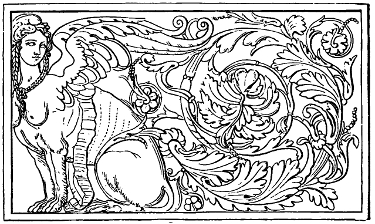
Fig. 437.—Panel from Chimneypiece; Louvre. By Germain Pilon.
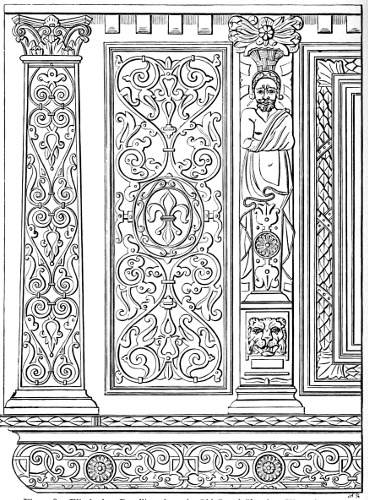
Fig. 438.—Elizabethan Panelling, from the Old Guard Chamber, Westminster.
Shield-work was not so prominent in the pure Elizabethan
as in the Jacobean (James I.) style; the carved stone
escutcheon-like work from Crewe Hall, Cheshire, attributed
to Inigo Jones (Fig. 439), shows the beginning of
the Jacobean shield-work. This style is best seen in
the carved-wood furniture of the period, and both it and
the Elizabethan are generally speaking offshoots of the
Flemish and German phases of the Renaissance. Elizabethan
ornament is of great variety, the panelling and
other arrangements are sometimes composed purely of
strap-work of a rectangular flat perforated appearance,
sometimes seen in the doorways and chimney fronts, as at
Hardwick Hall, Haddon Hall, Speke and Crewe Halls.
Another kind is of a more curved variety, with figures and
406animals, as seen in the illustration from an old house at
Exeter now in Kensington Museum (Fig. 440); another kind
407is carved in rectangular or curved and notched frames of
cartouche work with the smaller spaces and little panels
carved in imitation of jewels with oval or lozenge-shaped
facets. Columns of Ionic or Corinthian orders, and classic
mouldings, dentils, and the egg and tongue were frequently
used. The ceilings were often panelled and moulded,
409inclining in this respect more to the Gothic than classic.
A bizarre kind of Renaissance architectural feature was
prevalent in Holland and in some parts of Germany, which
seems to have been the model for much of the “bolt and
lock” style of some Elizabethan gateways. The architect
Dietterlin, of Strassburg (1550-1599), was an extraordinary
exponent of this twisted and bolted form of fantastic architecture,
which had become only too fashionable at this
period. The illustration (Fig. 441) shows an example of
what might be called a mild specimen of the style of
Dietterlin. The popularity of the Dietterlin craze was
owing to the circulation of several volumes he had published
of his impossible designs, some of which designs
were evidently adapted by the Elizabethan architects, but
in a much more reticent spirit.
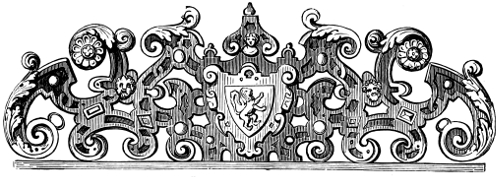
Fig. 439.—Doorway, Crewe Hall. Inigo Jones.
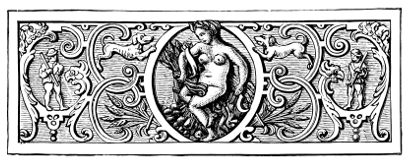
Fig. 440.—Elizabethan Carved Ornament, from an old house at Exeter. (1590.)
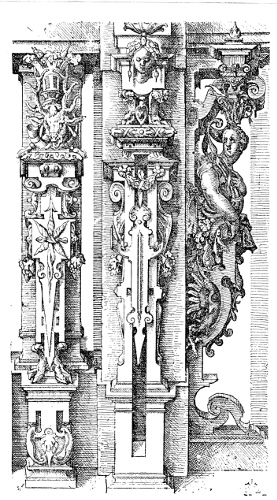
Fig. 441.—Example of Dietterlin’s Architecture; German, Sixteenth Century.
LONDON: PRINTED BY WILLIAM CLOWES AND SONS, LIMITED,
DUKE STREET, STAMFORD STREET, S.E., AND GREAT WINDMILL STREET, W.
BROOME—Brush-work for Schools. By Florence Broome. With
forty-eight Designs in Colour. Small 4to. New Edition. 5s. net.
BULLMORE—Memory Drawing of Plant Form and Design. By W. R.
Bullmore. In Two Parts, each consisting of six Artistically Printed Plates in Portfolio.
Price 1s. net each Part; postage 2d.
BULLMORE—Copies in Silhouette for Brush-Drawing. By W. R.
Bullmore. Part I. Natural Forms. Part II. Simple Patterns. Books, 6d. each
net; postage extra.
BULLMORE—Senior Brush-Drawing Cards. By W. R. Bullmore.
Part I. Natural Forms. Part II. Simple Patterns. Each consisting of twelve Cards.
1s. 3d. net each; postage 2d.
This work contains the same examples as the author’s “Copies in Silhouette,”
Parts I and II, but printed on stout cards instead of in book form.
DAWSON—Elementary Design. By Charles Frederick Dawson.
With numerous Illustrations. Second Edition. Demy 8vo. 2s. net.
DOUGLAS—A System of Brush-drawing. By R. Smeaton Douglas
and Ada Hill Walker. Oblong 4to. 3s. net.
FURNISS—How to draw in Pen and Ink. By Harry Furniss. With
numerous Illustrations. Demy 8vo. 3s. 6d. net.
HARBUTT—Harbutt’s Plastic Method, and the use of Plasticine in the
Arts of Writing, Drawing, and Modelling in Educational Work. By William Harbutt.
With fifty-six Illustrations. Crown 4to. 4s.
HARBUTT—Plastic Methods for Plastic Minds: A Teacher’s Handbook
of easy Lessons in Modelling in Plasticine for Infants and Young Children. By Mrs.
Harbutt. With thirty-four Illustrations. A New and Revised Edition. Small 4to.
1s. net.
HARPER—A Practical Handbook of Drawing, for modern methods of
Reproduction, with many Illustrations showing comparative results. By Charles G.
Harper. New Edition, Revised and added to. Demy 8vo. 7s. 6d.
HATTON—The Craftsman’s Plant-Book: or Figures of Plants selected
from the Old Herbals. With numerous Illustrations in colour and black and white.
Arranged with Notes and additional Drawings, and an Essay on the Use of Plants in
Decorative Design. By Richard G. Hatton, Hon A.R.C.A. (Lond.). Demy 8vo.
[In the press.
HATTON—Perspective for Art Students, Artists and Draughtsmen.
By R. G. Hatton. With 208 Illustrations. Large Crown 8vo. 5s.
HATTON—Design. An Exposition of the Principles and Practice of
Decoration. By R. G. Hatton. With 177 Illustrations. Demy 8vo. 5s. net.
HATTON—Figure-Drawing. A new work for Artists and Students. By
Richard G. Hatton. With nearly 400 Diagrams. Demy 8vo. 7s. 6d. net.
HATTON—Figure Composition. A companion to “Figure-Drawing.”
By Richard G. Hatton. With numerous Illustrations. Demy 8vo. 7s. 6d. net.
JACKSON—Wood-Carving as an Aid to the Study of Elementary Art.
By F. G. Jackson. With numerous Illustrations. Demy 8vo. 3s. net.
JACKSON—Metal Work: Chasing and Repoussé for Home Art Workers.
By Frank G. Jackson. With numerous Illustrations and Diagrams. Demy 8vo.
3s. net.
JACKSON—Decorative Design. An Elementary Text-book of Principles
and Practice. By Frank G. Jackson. Fully Illustrated. Third Edition. Large.
Crown 8vo. 7s. 6d.
411JACKSON—The Theory and Practice of Design. An Advanced Textbook
on Decorative Art. By Frank G. Jackson. With 700 Illustrations. Large
Crown 8vo. 9s.
JACKSON—The A B C of Drawing and Design. By Frank G. Jackson.
Crown 4to. In two parts, with numerous Illustrations. 2s. 6d. each net.
These Illustrations, with additional exercises, have also been prepared on stout
cards.
| To correspond with Part I. |
{ |
Set I. 30 cards,
” II. 30 ” |
2s. net.
2s. ” |
| To correspond with Part II. |
{ |
” III. 30 ”
” IV. 24 ”
” V. 12 ” |
2s. ”
2s. ”
1s. ” |
LANTERI—Modelling. A Guide for Teachers and Students. By E.
Lanteri, Professor of Sculpture at the Royal College of Art, South Kensington.
Volume I.—With a Portrait Drawing of the Author by Professor A. Legros and
forty-two full-page Plates and other Illustrations and Diagrams. E. Onslow Ford, R.A.,
contributes a Preface. Crown 4to. 162 pages. 15s. net.
Volume II.—With numerous Illustrations and a Preface by Sir W. B. Richmond,
R.A. Crown 4to. 15s. net.
LINDSAY—Geometrical Drawing. By C. T. Lindsay. With numerous
Illustrations. Demy 8vo. 6s. net.
LUNN—Pottery. A Practical Handbook for Art Teachers and Students.
By R. Lunn, Teacher at the Royal College of Art, South Kensington. Demy 8vo.
5s. net.
MANN—The Art of Shading. A Complete and Graduated Guide to the
Principles and Practice of Drawing in Light and Shade. By William Mann. With
forty Illustrations. Demy 8vo. 3s. net.
MIDGLEY and LILLEY—Studies in Plant Form and Design. By
W. Midgley and A. E. V. Lilley. With numerous Illustrations. Tenth Thousand.
Revised and Enlarged. Demy 8vo. 6s.
MIDGLEY—The Life and Leaf Set of Drawing and Design Cards.
By W. Midgley, A.R.C.A. London. 4to. 2s. net.
MUYBRIDGE—The Human Figure in Motion. An Electro-Photographic
Investigation of Consecutive Phases of Muscular Actions. By Eadward Muybridge.
Illustrated with numerous full-page Photo-Mezzotint Engravings reproduced from the
Original Negatives. Oblong. 20s. net.
MUYBRIDGE—Animals in Motion. An Electro-Photographic Investigation
of Consecutive Phases of Progressive Movements. By Eadward Muybridge.
Ninety-five full-page Photo-Mezzotint Engravings, reproduced from the Original
Negatives, and more than 1,600 Half-tone Figures of Horses, Dogs, Elephants, Lions,
and other Animals, while engaged in walking, galloping, leaping, or some other act of
motion, and of Birds while flying. Oblong. 20s. net.
POYNTER—Ten Lectures on Art. By E. J. Poynter, R.A. Fourth
Edition. Large Crown 8vo. 9s.
RHEAD—Studies in Plant Form and Natural Objects. By George
Wolliscroft Rhead, R.E. Set 1.—PLANT FORMS. Set 2.—NATURAL OBJECTS.
Per Set, 6s. net. Each contains Six Outline and Six Tinted subjects.
RHEAD—Memory Drawing of Plant Form, and Blackboard Drawing.
Twelve Cards of Plant Form to meet the above Syllabuses, drawn from Nature by
G. W. Rhead. R.E. Price 2s. 6d. net. Size, 10 in. × 7 in.
SEEMAN (O.)—The Mythology of Greece and Rome, with Special
Reference to its Use in Art. Edited by G. H. Bianchi. Sixty-four Illustrations. New
Edition. Crown 8vo. 5s.
STATHAM—Modern Architecture. A Book for Architects and the Public.
By H. H. Statham. With numerous Illustrations of Contemporary Buildings. Large
Crown 8vo. 10s. 6d.
412STATHAM—Architecture for General Readers. A Short Treatise on the
Principles and Motives of Architectural Design. By H. H. Statham. With 250 Illustrations
drawn by the Author. Third Edition, Revised. Large Crown 8vo. 12s.
TAYLOR—Elementary Art Teaching. An Educational and Technical
Guide for Teachers and Learners. By E. R. Taylor. With over 600 Diagrams and
Illustrations. Second Edition. Large Crown 8vo. 6s.
TEBBS—The New Lace Embroidery (Punto Tagliato). By Louisa A.
Tebbs. With thirty-four Illustrations. New Edition. 4to. 5s. net.
TEBBS—The Art of Bobbin Lace. A Practical Text-book of Workmanship,
Illustrated with original designs in Italian, point de Flandre, Bruges Guipure,
Duchesse, Honiton, “Raised” Honiton, Appliqué, and Bruxelles. Also how to clean
and repair valuable lace, etc. By Louisa A. Tebbs. 4to. 5s. net.
VINYCOMB—Fictitious and Symbolic Creatures in Art. With Special
References to their Use in British Heraldry. By John Vinycomb. With numerous
Illustrations. Demy 8vo. 10s. 6d. net.
WARD and AITCHISON—The Principles of Ornament. By J. Ward.
Ed. by George Aitchison, A.R.A. Fully Illustrated. Large Crown 8vo. 7s. 6d.
WARD—Colour Harmony and Contrast. For the use of Art Students,
Designers, and Decorators. By James Ward. With sixteen Coloured Illustrations
and several Half-tone Pictures. 10s. 6d. net.
WARD—Floral Studies for Decorative Design. By James Ward.
In Portfolio. 20s. net.
WARD—Progressive Design for Students. By James Ward. With
forty-two full-page Plates, comprising upwards of 1,700 Drawings. 8vo. 5s. net.
WARD—Historic Ornament. A Treatise on Decorative Art and Architectural
Ornament. By James Ward.
Volume I.—Prehistoric Art; Ancient Art and Architecture; Eastern, Early Christian,
Byzantine, Saracenic, Romanesque, Gothic, and Renaissance Architecture and Ornament.
With 436 Illustrations. Second Edition. Demy 8vo. 7s. 6d.
Volume II.—Pottery, Enamels, Ivories, Metal Work, Furniture, Textile Fabrics,
Mosaics, Glass, and Book Decoration. With 317 Illustrations. Demy 8vo. 7s. 6d.
WARD—Fresco Painting: its Art and Technique. With special reference
to the Buono and Spirit Fresco Methods. By James Ward. With four Plates
in Colour and thirty-one Half-tone Illustrations of Italian and other Fresco Paintings.
Royal 8vo. 10s. 6d. net.
WORNUM—The Analysis of Ornament—The Characteristics of Styles.
By R. N. Wornum. New Edition. Fully Illustrated. Royal 8vo. 8s.
PLANTS AND ANIMALS AS
FOUNDATIONS FOR DESIGNS IN FORM
AND COLOUR.
VERNEUIL—The Animal in Decoration. By M. P. Verneuil. Introduction
by Eugene Grasset.
This magnificent work consists of Ten Parts, each containing six Coloured Plates,
treating of the use of certain animal forms in decorative design. Sixty Plates. In Ten
Parts, each containing six Plates, 8s. net per part.
GRASSET—Plants and Their Application to Ornament. Edited by
Eugene Grasset. First Series.
This magnificent work contains seventy-two Coloured Plates. In Twelve Parts,
8s. net per part.
GRASSET—Plants and Their Application to Ornament. Edited by
Eugene Grasset. Second Series.
This magnificent work contains seventy-two Coloured Plates. In Twelve Parts,
8s. net per part.
LONDON: CHAPMAN & HALL, Ltd.
Some inconsistencies in formatting conventions have been corrected,
without further mention. Occasionally, diacritical marks are used
(or not used) inconsistently as well, and been been made regular to
facilitate searches.
A quoted passage on p. 326, begins with “It was built probably...”,
and apparently continues into the following paragraph (without the
conventional opening quotation mark) and ends with “... total height is
33 feet 6 inches.” It is unclear how much of this passage is a direct
quotation, since it includes a reference to an illustration in the
current text. In any case, it is given here as printed.
Any errors deemed most likely to be the printer’s have been corrected,
and are noted here. The references are to the page and line in the
original. The following issues should be noted, along with the
resolutions.
| xiv.2 |
[2]75. Dionysus and the Lion |
Added. |
| xv.15 |
1[0/6]7. Fragment of Border of Fig. 166 |
Replaced. |
| xvi.35 |
Lake Dwellings, Objects fro[m] |
Added. |
| xvii.18 |
Mosque of K[aī/āi]t Bey, Cairo |
Corrected. |
| xvii.33 |
Ornament on an Arch of the Wekāla K[a/ā]it Bey |
Replaced. |
| xviii.46 |
Pulpit of the Sultan K[aī/āi]t Bey |
Corrected. |
| 135.4 |
there is [none] end |
Sic King James version |
| 79.12 |
appearance of the whole building[.] |
Restored. |
| 90.f121 |
Nymph[œ/æ]a nelumbo; Flower, Leaf, and Fruit. |
Corrected. |
| 144.f192 |
drawn by Gautier. [(]P. & C.[)] |
Added. |
| 163.18 |
their sculptured figures in the round[.] |
Restored. |
| 170.23 |
but the hiero[lyg]gly]phics are not to be relied |
Transposed. |
| 223.22 |
his favourite animal attributes[.] |
Restored. |
| 225.21 |
the mass of the Greek people[.] |
Added. |
| 241.13 |
They show marks of injury by fire[.] |
Restored. |
| 276.6 |
a[a/n]d the Indo-Aryan |
Corrected. |
| 342.27 |
are also examples of early work ex[e]cuted in England |
Inserted. |
| 349.10 |
The Church of N[o/ô]tre-Dame |
Corrected. |
| 353.18 |
in many interiors of German churches[.] |
Added. |
| 356.15 |
battlemented cornices, and stepped gables[.] |
Added. |
| 365.2 |
with fifteenth and sixteenth [ ] Venetian or Renaissance forms |
sic: century? |
| 376.5 |
San Michele, of Verona (1484-[1588]) |
sic d. 1559. |
| 379.16 |
What is known as the Henri Deux [(]Henry II.) style |
Added. |
| 383.24 |
built about this time in England[.] |
Added. |
| 386.27 |
was founded on [t]he Roman |
Restored. |













